art, adventure, music, history, food, poetry, beer, social upliftment, surfing, wine and much more.

Peripheral vision (no.2). Gabrielle Raaff. Watercolour on Fabriano paper. 73.5cm, 77.5cm. Private collection.
Raaff’s most notable earlier works in watercolour and ink, capturing beach and city figures and aerial Google satellite images of distinctly different South African neighbourhoods, rely on a cool relationship between herself and the subject and revel in the abstract qualities of the view. Working with the ephemeral qualities of watercolour, water-based oil and ink, she layers diluted pigments on substrates such as paper, canvas, raw linen and primed board. Her figural works on paper abstract people into studies of light and dark, devoid of context. The figures imply movement, intention, and a degree of familiarity while existing outside of a place or time.
“My most recent works are a continuation of my interest in photography, and I often use found news imagery as a starting point for my paintings. I consider my personal
act of painting to be a wrestling between intention and chance and an undoing of certainty. Working with the material properties of diluted ink and watercolour – of painting wet into wet and of oil resisting water – determines the means by which a new image is created.
The original photograph is extended, like the sound that manifests an echo, such that a new and multi-layered embodiment of experience or place can be expressed.”

Gabrielle Raaff www.gabrielleraaff.com

2 Jack Journal Vol. 3
Nikos Kazantzakis, Zorba the Greek.
I felt once more how simple and frugal a thing happiness is: a glass of wine, a roast chestnut, a wretched little brazier, the sound of the sea. Nothing else.
3
table of contents
why we produce Jack Journal
Bruce Jack contributors in search of the strange Don Pinnock weaving a living through rugs, the story of oomama bethu (our mothers) Unathi Kondile
legacy of wood how trees live again Melvyn Minnaar
it’s still a tree Bruce Jack for nature and for the people: conservation with a difference Heather D’Alton nguni cattle –a gentle african treasure
Gregory Mthembu-Salter
music makes miracles Su Birch the national poetry prize 2020 winners
shweshwe swish and sniff Fiona McDonald
the new nordic food story
Michael Booth
riding high on a wave of wellbeing Alison Westwood
“i never thought of myself as a cartoonist”
Emily Flake
carbon copies Fiona McDonald and Su Birch capitalism with a conscience Biénne Huisman raiders at the cape Justin Fox
4 Jack Journal Vol. 3
06 104 08 12 20 26 38 46 55 56 62 70 80 92 96 100 76
diary of a london restaurant owner 2021 Neleen Strauss a meeting of two worlds Felicity Carter eco-printing. inspired by nature and working with her seasons Rita Trafford
why the best brands are now run by their customers Richard Siddle
playing into silence: a concert guitarist learns the covid art of the online guitar ashram Derek Gripper the knackered mother’s wine guide Helen McGinn and then there was fun Alison Westwood the walk Adrian Kohler we shared what brings us joy Aaniyah Omardien and Monique Rodgers
andile dyalvane the gift Su Birch liquid history Lucy Corne
a salute to the sun Fraser Crighton
foods of the world Emile Joubert
the scent of empires – chanel Nº5 and red moscow Karl Schlögel
5
114 118 122
130 132 136 140 152 160 162 164
110
126
144
why we produce Jack Journal
This is a wine magazine that embraces the things around wine, things that touch our wine world, rather than being a wine-centric publication. Wine is central to so much of what we do, and when crafted within this multiplicity of influences, wine is enhanced by them.
Despite what the scourge of social media vainly portrays, we are not defined by our circumstances, appearance or even talents. Rather, it is our fears, dreams, insecurities, resilience, irrationality and empathy that set our course on this multidimensional trajectory through life. These, and other building blocks of our character, make us and others interesting. Of course, Luck, and her conspirator, Timing, merrily wreak havoc and happiness along the way, dealing out both opportunities and dead-end disappointments. And all the time there is so much beauty … weaving in and out and around our fumbling and fuming.
I am still some years away from a well-considered philosophical stance on this mesmerizing journey, but I have
made enough mistakes to know that the omnipresent unfairness and fragility of life is what makes it so addictive and precious. And so we need to let our meandering minds explore.
Psychological and Cognitive Science studies have proven many times over that we walk among fellow fantasists. We have survived excruciating odds just to be sentient and here. And we battle on, hard-wired to procreate, because our brains have constructed a fantasy of existence, so we believe it is not only bearable, but sure to improve. On the other hand, true realists, of which there are a few, are unavoidably depressed.
This fascinating facet of our curious minds means that we lack the ability to reason properly about most things. While we now accept that this is another survival trait, it means reasonable-seeming people like you and me are very often irrational. This shocking revelation (led by Stanford University research academics in the 1970s and replicated many times since) adds spice to our exploration.
It also explains why the technological revolution of connectedness is both so freeing and so damaging. Clear communication is no longer enough. Fact-based insight and rational arguments hardly compete for the limelight. Truth, never a requisite of political or neocapitalist success, is now even less evident. And over the din of our collapsing ecosystem the new screeching soapbox, social media, is overwhelmed by a cacophony of ill-informed, unquestioning (often unthinkingly regurgitated) semi-opinions.
This riptide of bilge is not, in itself, a bad thing. What role it will play in the ongoing development of our coping and survival strategies as a species remains to be seen. But, if you are reading this, you are not alone in believing that we also need to keep offering a counterpoint, a balancing buffer against the flood of fools. This doesn’t mean trying to swim against the riptide, which like an ocean riptide will always drown you. We must swim perpendicular to the inescapable
6 Jack Journal Vol. 3
wash of senseless noise that’s sweeping so many out into the deep sea of idiocy.
We can do many simple things. We can read to small children. We can force ourselves to remain inquisitive. We can try to see things from another perspective. And we can practise patience (if not acceptance) when it comes to views that challenge our beliefs. We can read widely and surround ourselves with people who think before they talk. We can be inclusive and generous and forgiving. And we can keep exploring.
And this is why we produce Jack Journal
Jack Journal is an authentic voice – it reflects our vision as a family-owned, but widely collaborative, wine business. It is informed by our own dreams and isn’t trying to be popular or popularist.
Jack Journal was born of an intense desire to find meaning in things and to explore this chaotic thing called life. It is not trying to be idealistic or superior. It is naturally inclusive and not dumbed
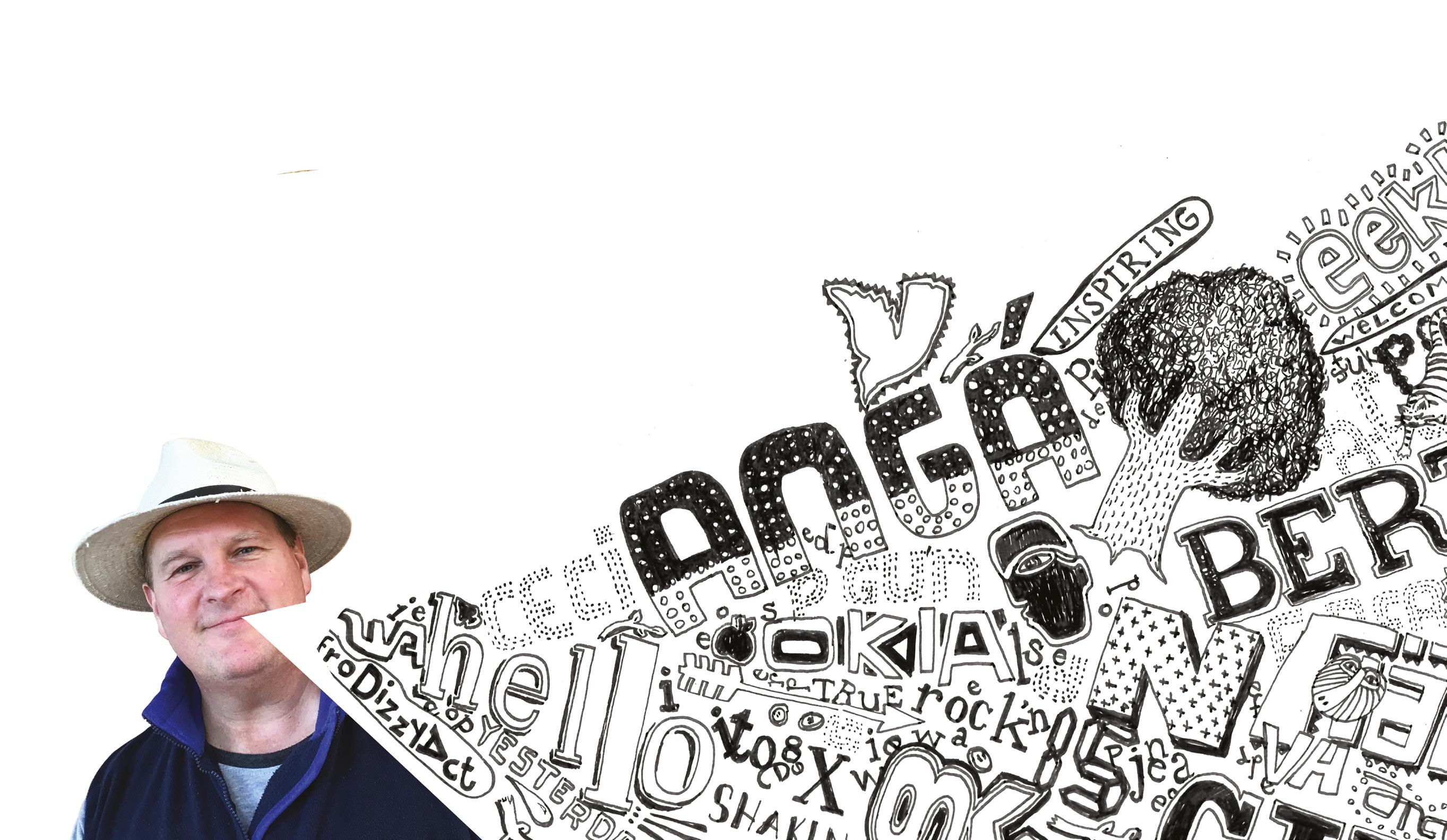
down – which is precisely how we make wine.
Jack Journal is reflective of the signposts along this wine journey that point to delicious wanderings, often resulting in revelation, offering solace and adding joy – and these are the same reasons we craft wine.
Bruce
contributors
MICHAEL
BOOTH
is the author of seven non-fiction books including the international best-selling, award-winning The Almost Nearly Perfect People, and Sushi and Beyond He writes regularly for a wide range of newspapers and magazines around the world including The Sunday Times, Monocle and Condé Nast Traveller www.michael-booth.com.
SU
BIRCH
is a distinguished international marketing and promotions specialist. As CEO of Wines of South Africa, she received the Drinks Business Woman of the Year award. She runs her own marketing business called Thinking Seahorses and has embraced the challenge of producing the Jack Journal. She also volunteers as an English coach in a local township school. www.thinkingseahorses.com.

FELICITY CARTER
is the Executive Editor at Pix, the wine discovery platform launched in late 2021. Previously she worked for Meininger Verlag, Europe’s biggest wine and spirits publisher, where she built Meininger’s Wine Business International into the world’s premier wine business magazine, with correspondents from 30 countries and subscribers in 38. Her work has also appeared in The Age and Sydney Morning Herald newspapers in Australia, and in The Guardian USA , among others. She is an international wine judge and speaker. www.pix.wine.
LUCY CORNE
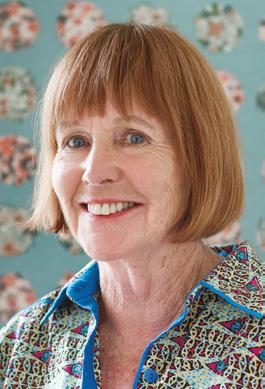
is a beer writer and the editor of On Tap, South Africa’s only beer magazine. She is Africa’s first Certified Cicerone – akin to a beer sommelier –and the founder of South African National Beer Day. Lucy is a big fan of pilsner and IPA but also has a deep fascination with traditional African beers. www.lucycorne.com.
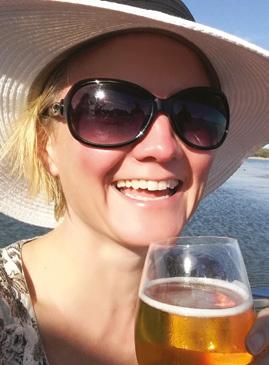
FRASER CRIGHTON

moved to South Africa from the UK in 2010 after training as a winemaker. As real beer wasn’t a thing at that time in South Africa, Fraser decided to change that and 12 years later he is still brewing craft beers.
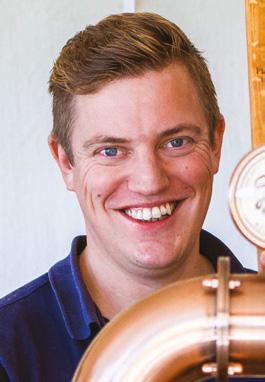
Instagram: @fraserchrightonphotos
HEATHER D’ALTON
is a conservation communications specialist. She spent more than a decade working as a business journalist in London, Johannesburg and Cape Town before changing tack to follow her love of nature. She’s the co-owner of LoveGreen Communications, where she works with wonderful clients who care deeply about our natural world. www.lovegreen.co.za

8 Jack Journal Vol. 3
JANNEKE DE KOCK
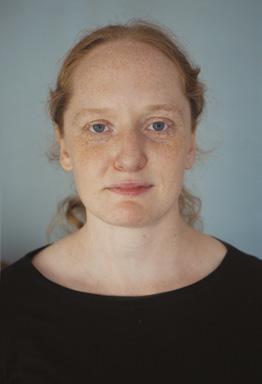
works as an illustrator and designer for Archival studio in Cape Town. www.archival.co.za
ROHAN ETSEBETH runs Archival studio, a small design and illustration studio that mostly does packaging design. He has finally put some work on a website. www.archival.co.za
JUSTIN FOX

is a travel writer, photographer and former editor of Getaway magazine. He is the author of more than 20 books, including The Marginal Safari, Whoever Fears the Sea , The Impossible Five and Beat Routes. His latest World War II novel, The Cape Raider (Penguin, 2021), is available in bookshops and on amazon.com. https://justinfoxafrica.wordpress.com
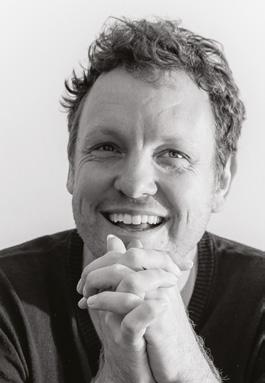
DEREK GRIPPER
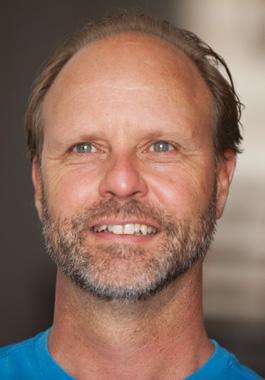
creates original music from his diverse influences and spent many years performing and recording his own translations of Bach’s violin and cello music, infusing his interpretations with his lessons from the oral traditions of Africa. He has transcribed note-for-note the complex compositions of Malian kora player Toumani Diabaté and has found a way of playing them on six-string guitar. He has performed with classical guitar legend, Paul Williams, with Diabaté and his Symmetric Orchestra, and with Trio da Kali at Carnegie Hall.
ALLENDRE
HINE
is a strategic creator and a lover of crafted design solutions, film, coffee and meaningful conversations. Ali is a graduate of the Red & Yellow School of Logic & Magic. She is the main designer on Jack Journal www.behance.net/Alihine
BIÉNNE HUISMAN
is an award-winning South African journalist with an MA in Creative Writing from Royal Holloway, University of London. She has worked for the BBC, the Sunday Times, Daily Maverick , Getaway magazine, Open Skies, and more. Instagram: @biennehuisman


9
EMILE JOUBERT
is a communication consultant in the Cape wine industry who writes fiction in his spare time, having published various short-story collections.
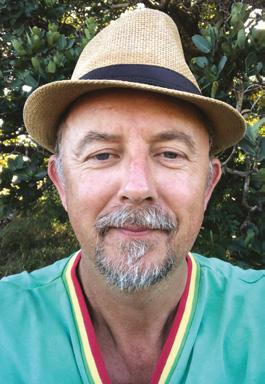
ADRIAN KOHLER
is one of the world’s leading masters in puppetry. He is co-founder and artistic director of Handspring Puppet Company. Their productions have graced many a global stage including the West End and Broadway. He has not quite managed to retire yet but when he is at home, in South Africa, he enjoys a morning swim in the Kalk Bay tidal pool. www.handspringpuppet.co.za
UNATHI KONDILE
is the founding editor of South Africa’s first daily isiXhosa newspaper, Isolezwe lesiXhosa , and the weekly Iphepha Lam newspaper. Kondile is currently based in the Eastern Cape where he continues to develop rural community journalism. He holds an MA in Media Studies (UCT) and has freelanced for a number of media companies locally and abroad.
Instagram: @unathikondile
FIONA MCDONALD
Words and wine are how Fiona McDonald earns her crust. Trained as a news journalist, she accidentally got involved in wine and life took a fortuitous turn, via vineyards, cellars, editorship of WINE magazine for eight years, and ultimately led to her chairing tasting panels at global competitions such as the International Wine Challenge, International Wine & Spirits Competition, Concours Mondial de Bruxelles and Decanter World Wine Awards. Locally, she writes and tastes for the annual Platter Guide when not disappearing down fascinating internet rabbit holes ...
MELVYN MINNAAR
has been writing about art, wine and related existential issues for various local and international publications for many years. The creativity that underpins these subjects is an enduring personal passion. He has served on a number of cultural bodies and institutions. Veritas honoured Melvyn in 2018, recognising his history of cultural involvement, opinions about art and wine, the politics of such and his appreciation for talent.


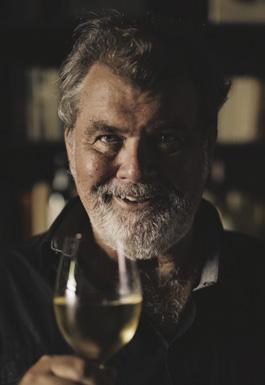
HELEN MCGINN


is a drinks writer, international wine judge and the author of the award-winning Knackered Mother’s Wine Club blog and book. She spent almost a decade as a UK supermarket buyer and writes about drinks for the Daily Mail and appears regularly on BBC1’s Saturday Kitchen and ITV’s This Morning as their wine expert. Her best-selling debut novel, This Changes Everything, was published in February 2021, and her second fiction book, In Just One Day, was published in August 2021.
GREGORY MTHEMBU-SALTER

is a researcher and writer who lives in Scarborough, near Cape Town. After paying lobola in cows for his own marriage over 25 years ago, Gregory became drawn to the rich theme of South Africans and cattle, eventually writing a book about the subject, entitled Wanted Dead and Alive. Gregory runs Phuzumoya Consulting, specialising in research on political and economic landscapes of Southern and Central Africa, and particularly the Democratic Republic of Congo.
AANIYAH OMARDIEN
Aaniyah’s work connects people and nature. While at World Wildlife Fund from 2001 to 2010, she managed the SA Marine Programme. She is the founder and director of The Beach Co-op (TBC), a not-for-profit company that evolved from the work of a group of volunteers who started collecting marine debris at their local surf break, the rocky shore at Surfers Corner in Muizenberg, Cape Town. www.thebeachcoop.org
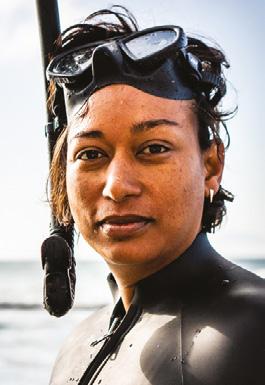
10 Jack Journal Vol. 3
DR DON PINNOCK
is an investigative journalist, photographer and travel writer who, realising he knew little about the natural world, set out to discover it. This took him to five continents – including Antarctica – and resulted in five books on natural history and hundreds of articles. He has degrees in criminology, political science and African history and is a former editor of Getaway travel magazine. The Last Elephants is his 18th book. He lives in Cape Town.
GABRIELLE RAAFF
is a full-time contemporary artist living in Cape Town. She works with ethereality, using ink, watercolour and water-based oil to express the form and emotion of her subjects. She has had five solo shows, exhibits extensively locally and abroad, and is preparing for her next solo show in the first quarter of 2022.
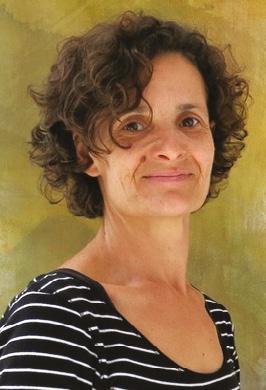
KARL SCHLÖGEL

is a historian, writer and Professor Emeritus, living in Berlin. Besides visiting scholarships to Budapest, Oxford, Uppsala and Los Angeles, he travelled for decades in Russia and Central Europe writing about cities, Stalinism and urban cultures. Among his many books are: Moscow 1937 (Cambridge 2012), In Space We Read Time (New York 2016), Ukraine. A Nation on the Borderland (London 2016), The Soviet Century (forthcoming, Princeton). He has won many awards including the ‘Orden pour le mérite für Wissenschaft und Künste’.
RICHARD SIDDLE
is an award-winning business editor with over 25 years’ experience working across diverse fields including wine, drinks, computing, grocery retail, convenience and travel. As well as running his own editorial and business consultancy, he launched a B2B website for the premium wine trade, http://www.The-Buyer.net, with his business partner, Peter Dean – a digital-only platform that provides insight and analysis to help drinks producers understand and work more closely with the trade buyers they most want to work with, be it distributors or sommeliers and restaurateurs.

NELEEN STRAUSS
Neleen is the owner/manager of High Timber restaurant, London. She loves test cricket, safari, Negronis and opera. She knows her opinion is not a fact, but loves debating.
Instagram: @hightimberrestaurant
RITA TRAFFORD
is a qualified chef, an unqualified artist, a mother of two wonderful children who have recently flown the coop, a doting (not all the time) wife to a talented winemaker, parent to three foster dogs, and proud mamma to a few chatty free-range hens. Living with all this against a backdrop of mountains, vineyards, old oak trees and spectacular fynbos, one can only be in awe of the surrounds.
ALISON WESTWOOD
has been travelling to and writing about Africa’s top destinations for more than 15 years. Her writing and photographs have appeared in various magazines and online publications, as well as a book or two. The Cape is her favourite place in Africa, at least partly because of the wine. Instagram: @alisonwestwood
Editor: Su Birch



Design: Allendre Hine & Rohan Etsebeth
Jack Journal is a Bruce Jack Wines production. Please contact the editor at editor@jackjournal.com with comments, questions and ideas for articles.
Bruce Jack Wines Limited. Registered address: c/o Seles Group, 2a Charing Cross Road, London, England, WC2H 0HF
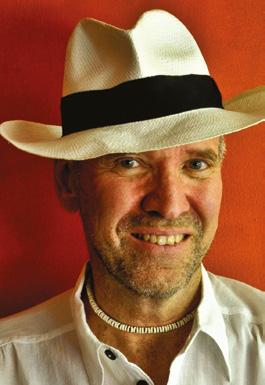
11
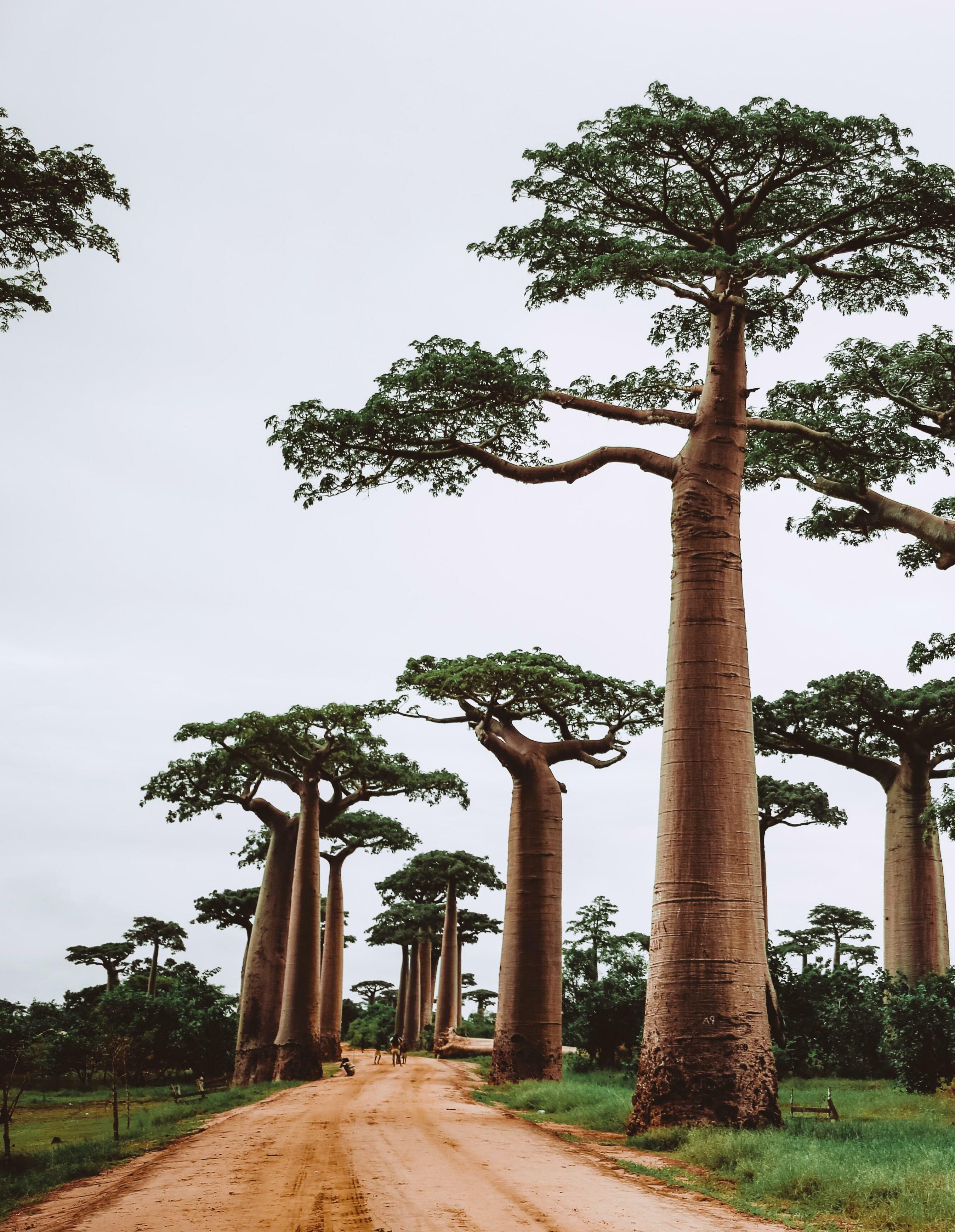
in search of the strange
There are mountains you climb to reach the top. But there are other mountains, and other reasons to climb them. Don Pinnock found two of them in northern Madagascar.
Written by: Don Pinnock Photography: Don Pinnock
The Avenue of the Baobabs is a prominent group of Grandidier’s baobabs lining the road between Morondava and Belon’i Tsiribihina in western Madagascar.
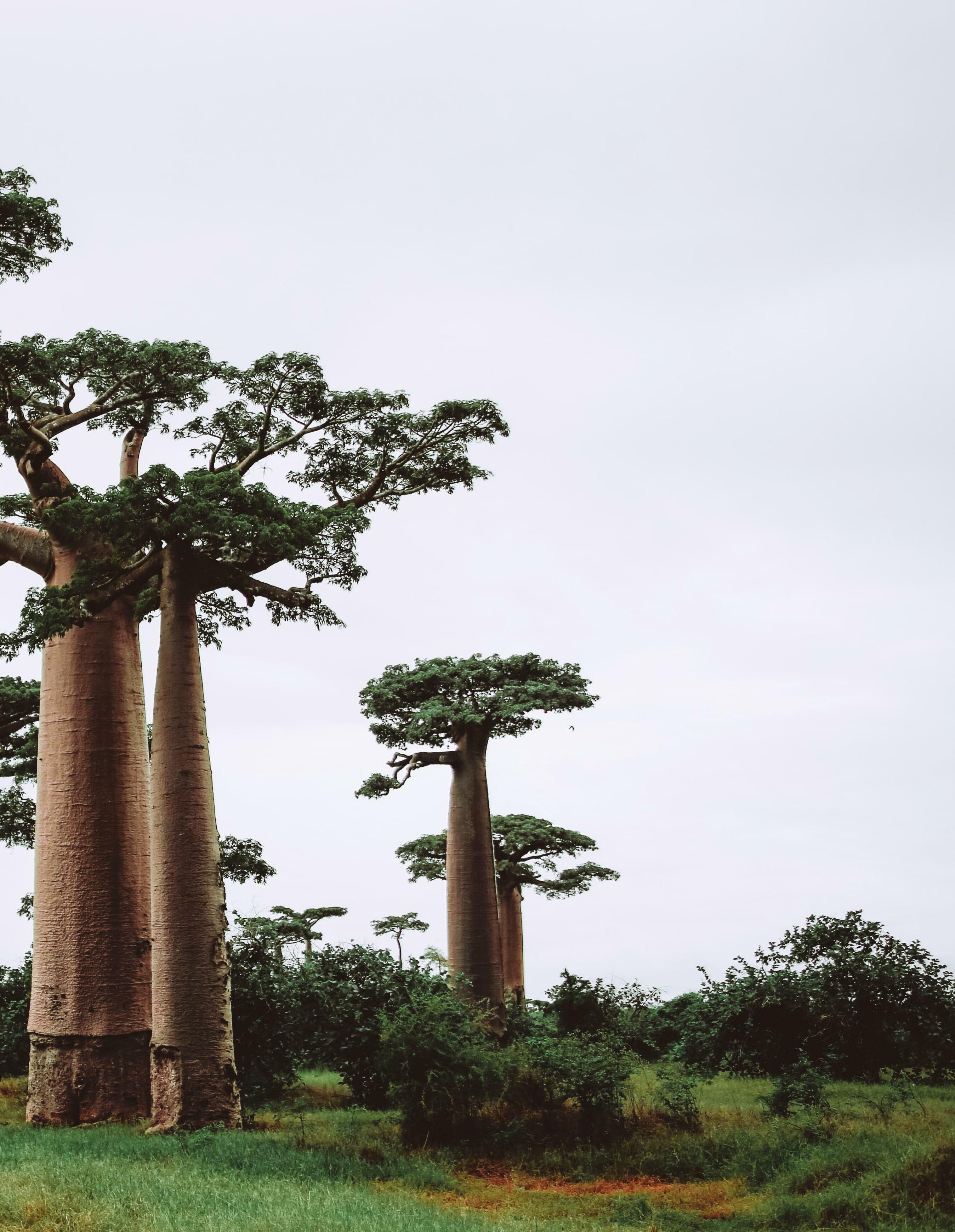
‘The way to cook a tenrec,’ Zakamisy explained as we stomped up through the dripping mist forest, ‘is to first boil it then peel it to remove the prickles. After that you grill it.’
Tastes a bit like pig, evidently.
The conversation about tenrecs had begun back in Antsiranana, Madagascar, where Zak said he thought he could root one from the underbrush. Not to eat, you understand, just to regard. Tenrecs are mammals best described by what they’re not: they aren’t shrews, platypuses, hedgehogs or guinea pigs, but have something in common with all of these. I couldn’t wait to see one.
Right then, though, we were heading up a trail to Amber Mountain. The forest was dark, dense and full of things with names like dragon trees, flaming Katys, polka dot plants and outrageous, balletic orchids with tongue-twister titles like Aerangis, Jumellea, Bulbophyllum and Phaius. It all seemed to belong to some remote epoch. In this landscape it wouldn’t entirely surprise you to see pterosaurs gliding through the trees and velociraptors sprinting across the trail ahead. But the more we hunted for tenrecs, the more they weren’t there.
‘They’re not fady,’ Zak explained, after another fruitless forage in the soggy leaf litter. ‘Lemurs are fady, so are chameleons, but not tenrecs. So they get eaten.’
We had time on our hands, maybe another 10 hours of hard climbing, so it seemed okay to begin yet another conversation about the complexities of Malagasy customs.
‘What’s fady?’ I asked.
Zak, you must understand, is not your common sort of guide. His father was a musician fairly famous in northern Madagascar but he died when Zak was quite young. Zak and his six sisters were brought up in a peasant village by his mother and beloved grandfather, who was both a champion bare-knuckle boxer and a storyteller.
In his youth the old man had been press-ganged by the French into building the road to the top of Amber Mountain upon which we were walking – though after 50 years of neglect it was a mere precipice-hugging, tangle-foot path.
Zak learned French, then English, then Italian, and decided growing rice and mangoes wasn’t for him. His ambition led him, eventually, to York Pareik who ran a
travel outfit named King de la Piste. A piste, in case your French is as lousy as mine, is a dirt road.
Zak soon learned the Latin names of almost every Madagascan plant and creature. So now – in his late 20s, with a head full of tribal customs, hundreds (maybe thousands) of traditional stories and a fine grasp of modern ecology – he’s a sort of Renaissance man.You ask him a question and you invariably get a very full answer plus peripheral anecdotes.
To radically paraphrase his answer, fady is a taboo system so complex that neighbouring villages and even close neighbours don’t necessarily share it. Taboos can vary from family to family, community to community or even person to person.
Perhaps eating pork is fady, or digging a grave with a spade which does not have a loose handle is fady (not too much contact between the living and the dead). In the Imerina area it’s fady to hand an egg to someone; it must first be put on the ground. In many areas it’s fady to work in the rice fields on Thursdays, or work at all on Tuesdays.
Places are also fady, and all over Madagascar you will see trees or rocks lovingly cloaked in bright cloth, or bowls full of money beside certain objects. We even came across a skeleton in a cave with a platter of coins beside its grinning skull.
A close relative of fady is vintana, which cuts up time into good times and bad times to do things, which means people might suddenly stop what they’re doing and sit down for an hour or two.
Some things, though, are generally agreed to be fady, like chameleons and lemurs. Chameleons, from tiny scraps of rainbow to huge, metre-long dragons, are everywhere and, in the forests, lemurs hurtle all over the place or sit and stare at you. Some will even steal your lunch.
It’s just a pity there’s no taboo on slaughtering rain forests – only about 10 per cent of them are left and vast areas of the island are either eroded ruination or rice paddies. Well, there you are. But just then, no tenrecs.
Now to the purpose of my trip: I’d come to Madagascar to explore two mountains, one entirely cloaked by some of the surviving rainforest, the other ripped to shreds by water. I was filled, to quote Kipling, with
a ‘satiable curiosity’ about an island where almost everything was endemic, volcanic or just plain odd.
Any trip necessarily begins in Antananarivo because that’s where international flights land. It didn’t take me long to realise it wasn’t Africa. Antananarivo is a traffic jam clamped round a curious, pointy-roofed city surrounded by endless rice paddies. It takes a while to get anywhere, but the people along the roads are charming and mostly beautiful Indo-Malayan or MalayoPolynesian, so it doesn’t matter. Coming in from the airport, I just sat and gawped at all the delightful strangeness.
But my mountains – Ankarana and Amber Mountain – were in northern Madagascar, so I flew out next day to Antsiranana and King’s Lodge.York, who owned the lodge, was seriously laid-back. He had a fleet of elderly but serviceable Range Rovers and year-old twins who keep him and his wife, Lydia, awake at night. There was a time, he confessed as we clutched cold Three Horses beers and watched the afternoon sun get swallowed by a volcano, when he wore his hair long, sampled interesting substances and travelled the world in dangerous public transport. Then he found Antsiranana and decided he’d arrived at his Shangri-La.
I couldn’t argue with him about that.
Next day Zak packed up our kit and victuals, loaded up a shy cook named Bridget and set off on the most grimy journey I have ever experienced – and I live in Africa.
Madagascar’s not dubbed the red island for nothing. When forests are slashed and burned, the oxidised laterite soil beneath them is singularly infertile and soon erodes, spreading fine ruddy powder over the whole island. In the rainy season, roads are a quagmire; when they’re dry, each bump produces an effect not unlike hitting a fat bag of bright red flour.
When we arrived at the spiky buttresses of Ankarana, we were astonishingly red, with our personal colour showing only where dark glasses had been. Each rivulet of sweat made the mess even more surreal and sticky.
Well, never mind all that. Let me tell you about Ankarana. On an island of strange things it has to be near the top of the strangeness list. It’s a limestone massif sticking abruptly out of the plain and covered in razor-sharp limestone karst
14 Jack Journal Vol. 3
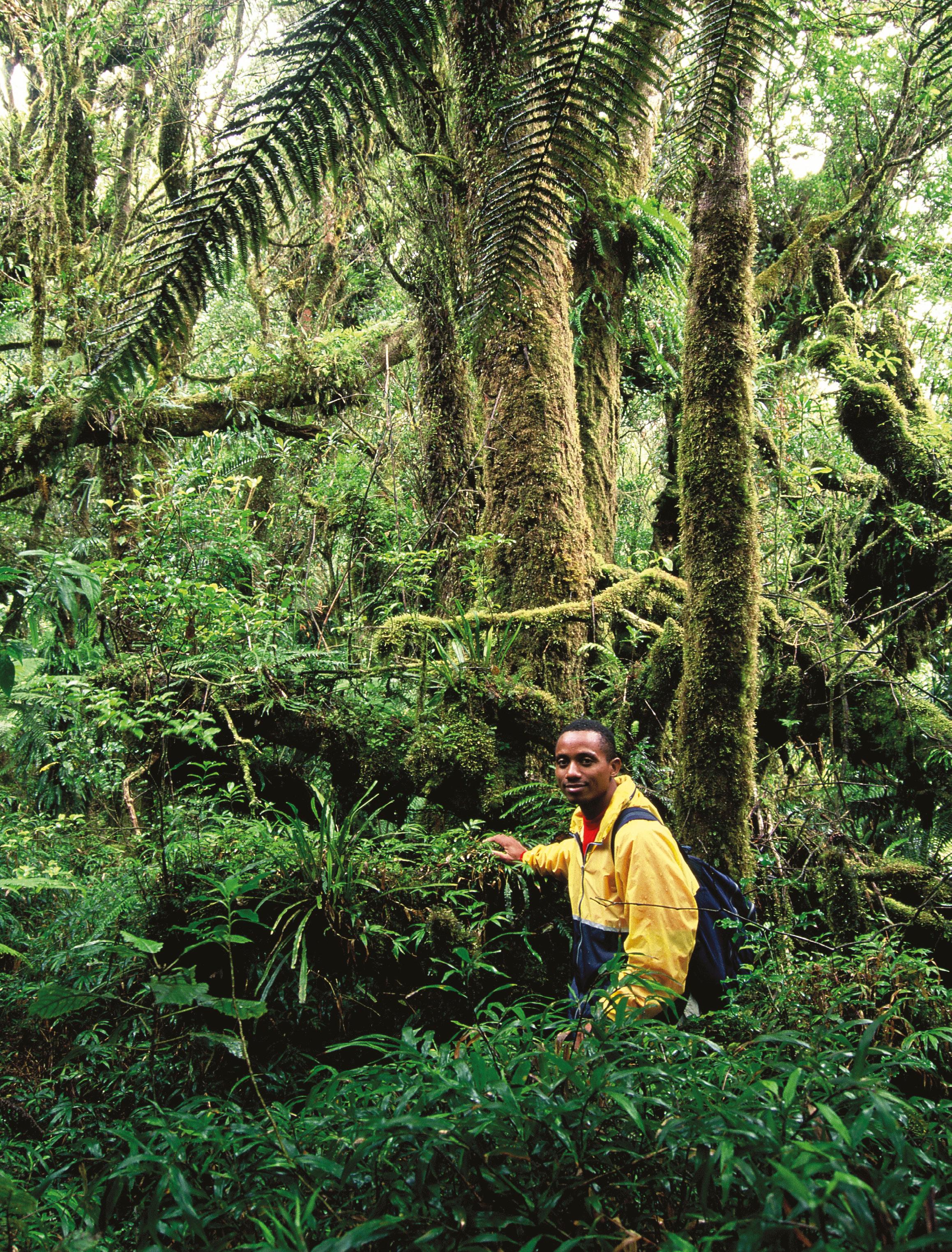
15
Zakamisy was the rare sort of guide whose deep knowledge turned his surroundings into magic.
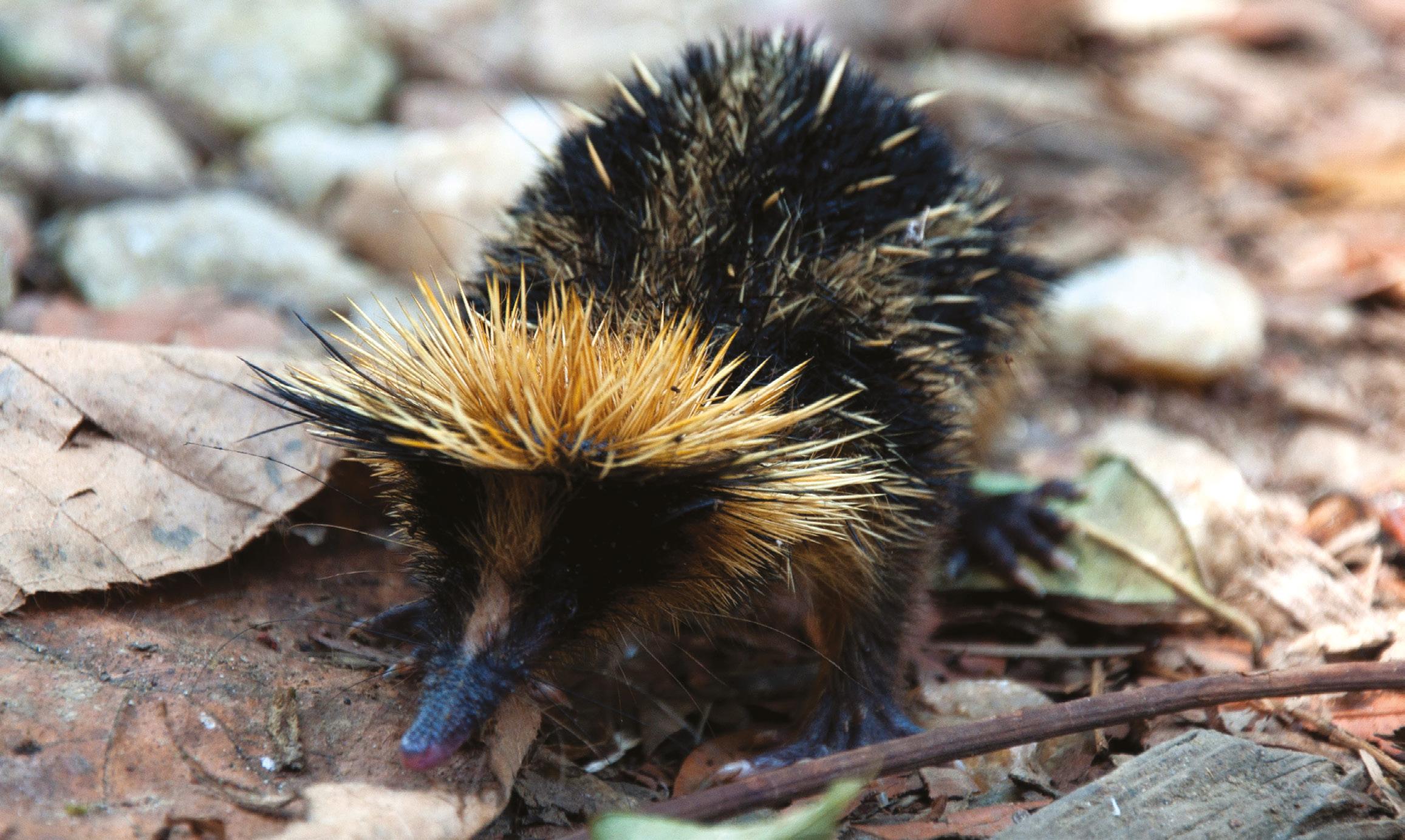
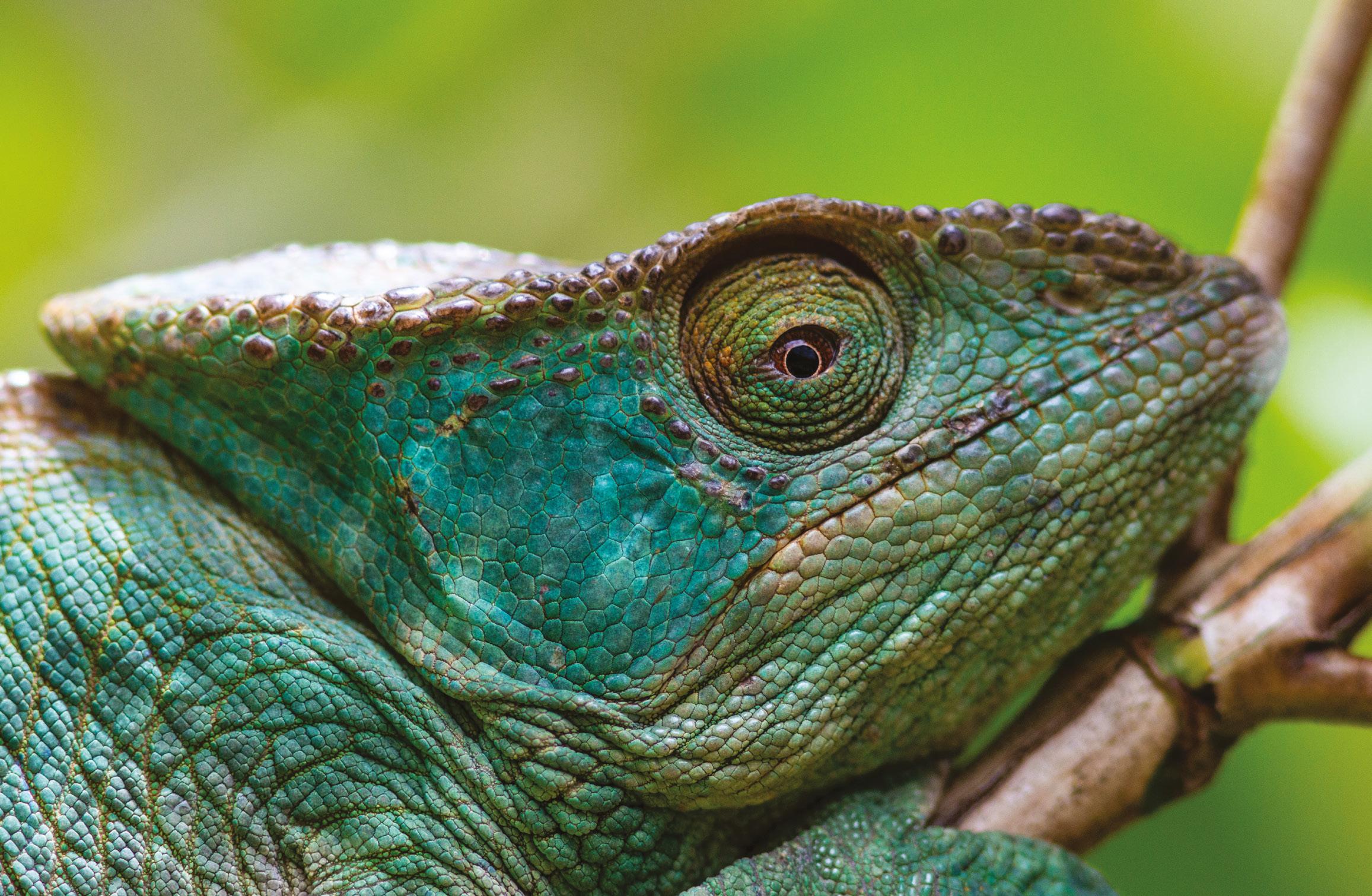
16 Jack Journal Vol. 3
Madagascar is home to about half the world’s 150 or so species of chameleons.
Tenrecs aren’t shrews or mice or hedgehogs but seem a bit of all those.
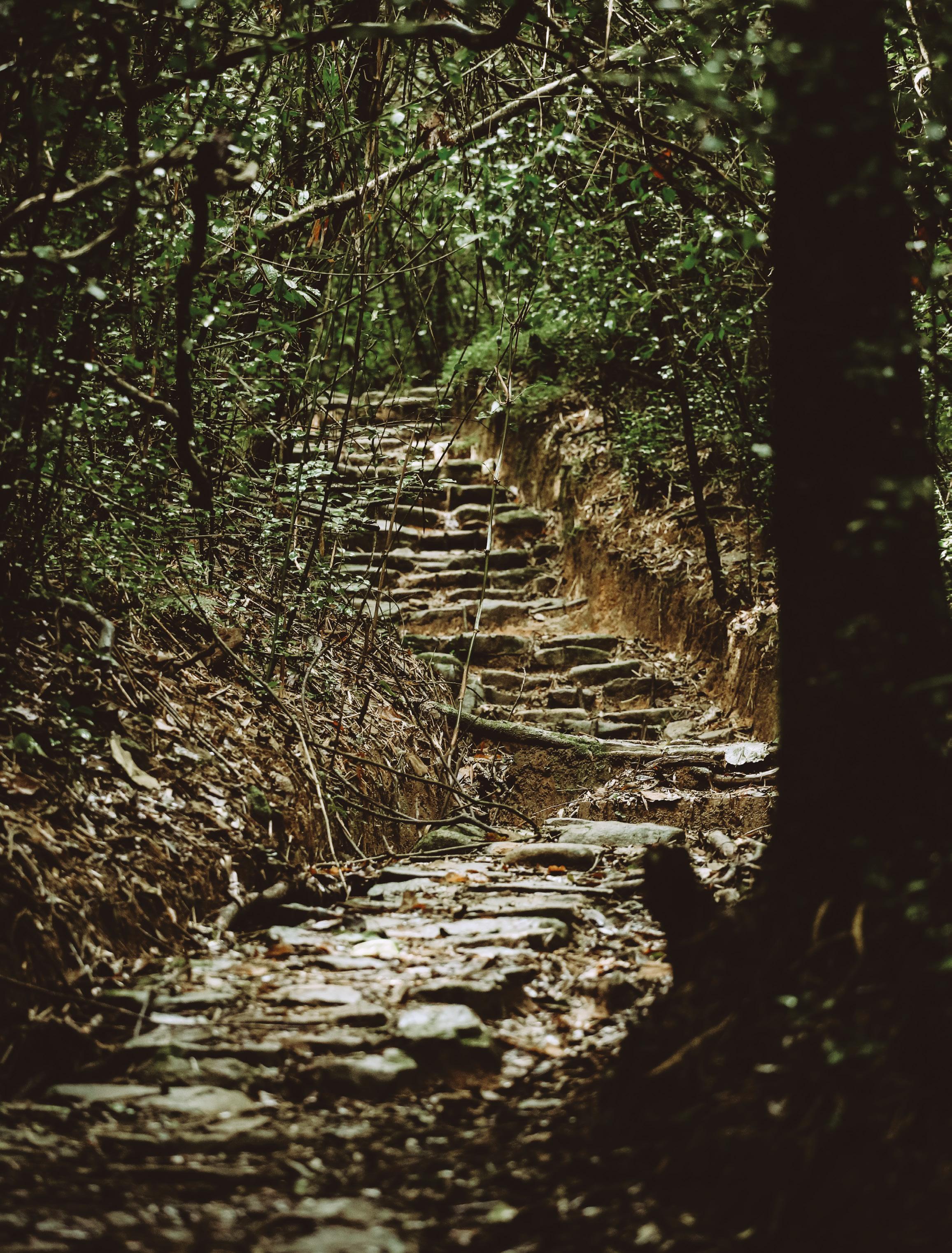
17
The trail up Amber Mountain goes through dark, dense forest.
pinnacles known locally as tsingy. Instead of going round it, rivers chose to run through it, forming caves, canyons and eerie underground tunnels.You can walk through several hundred kilometres of these things. In places, huge caves have collapsed, forming isolated pockets of river-fed forest with sunlight streaming down from above. Creatures you’ll find nowhere else on the planet live in there.
We hiked through the inky black caves, some with twinkling stalactites and stalagmites, then climbed up the mountain to view the forests and rivers from above. A troop of rare crowned lemurs came to investigate. I bent down to photograph one, and three others jumped on my back to see what I was doing. Fady works wonders in the trust department.
We camped at the foot of the tsingy, watched the setting sun turn them orange, and Zak produced some local rum. It was spittingly awful. When I refused to drink it, Zak told me a story which seemed to justify getting motherless on bad booze and opened up a later discussion about why the Malagasy are a nation of grave robbers.
There was once a mamalava (rum drunkard) whom nobody respected. He was around during a famadihana, a time of year when, for some reason or other, corpses are exhumed, their bones dusted off, danced with and carried to some other place (I saw empty graves all over the place).
When the skull was unearthed, it began to move this way and that. Everyone ran away in fright. But the mamalava took a closer look and saw it was being moved by a little tenrec in the brain cavity. He called everyone back and after that they all approved of his rum habits.
‘And that,’ said Zak triumphantly, ‘is why it’s good to drink Malagasy rum!’

Well, maybe.
Next day we headed through more red dust to Amber Mountain. It’s a thing apart, a great volcanic massif covered in ancient mist forest with its own wet microclimate quite unlike anywhere else around it. Manokan Ambre, as it’s called, towers over the northern tip of Madagascar with, more often than not, a soggy cloud frown across its peak.
We overnighted in a very neat, clean hut at Roussettes Forestry Station and hit the trail in a light drizzle at an ungodly 05h00
the next morning. Half an hour after passing an atmospheric little waterfall (sacred, of course) near the hut, we were gazing down into the forest-cloaked mouth of a crater lake named Mahasarika.
The forest was … weird. A glance at the statistics will tell you why. Madagascar has around 10,000 plant species of which about 80 per cent are endemic. It has eight species of baobab whereas the whole of Africa has only one. Of the 258 species of birds, 107 are endemic. Then there are lemurs – 30 species. They’re primates that look like monkeys with foxy faces and cat eyes. And tenrecs, which Zak promised …
We hiked past huge pandan trees (Pandanus sp.), fluffy topped Araliaceae literally dripping with epiphytes, many of them orchids, huge manaries (Dalbergia sp.), massive tree ferns (Cyathea sp.) and spooky dragon trees (Dracaena sp.).
A turkey-sized Madagascar crested ibis, the bane of tenrecs and chameleons, scratched in the understorey, a monticole played hide and seek in the upper branches of a manary, and Madagascar bee-eaters buzzed through the mist-edged glades. Lurid lichens sprouted from the rotting trunks of trees thrown down by the area’s violent cyclones, and in the stream beds Boophis frogs muttered contentedly.
The place was simply glorious, and we had it all to ourselves.
Around five hours deep we came upon a moody crater lake which appeared suddenly as we stepped out of the forest onto its grassy apron. From there it was a slippery, tough climb out of the crater and up to the summit, marked by a neat concrete pillar and a plaque with the words ‘Pic D’Ambre’. My GPS registered an elevation of 1,488 metres and, in case you like exact locations, it read S12°35.778, E43°09.188. In the swirling mist we couldn’t see a thing.
Nearly an hour later, after we’d munched the scrambled-egg sandwiches and fruit Bridget had prepared, the murk suddenly lifted. Below us was a great crater – I think it was the one named Renard – and beyond that the Mozambique Channel. There’s just something about the view from the highest point of anywhere that makes it worth the pain.
Twelve hours after starting, we were back in the hut. My feet hurt and I was suffering
from the strange emptiness I often feel after climbing a mountain. Maybe I looked glum.
Zak, ever perceptive, handed me a glass of rum and said: ‘Would you like me to tell you a story?’ He gave me no time to reply.
‘There were once three friends, bon? A duck, a chicken and a dog. They lived together in a village. Once every week they’d take the taxi-brousse to the market in Antsiranana. But one week, when they were halfway to the market, the taxi driver he told them that because of the cost of gaz-oelie, the fare had gone up from 300 francs to 500 francs.
‘The duck he had the extra cash, the dog was rich anyway, but the chicken he had only 300 francs. So when they arrived in the market, the duck got off and paid 500 francs. The chicken paid 300 and told the driver that his friend, the dog, would pay the rest. The dog had a 1,000-frank note. The driver took it, got in the taxi-brousse and just drove off.
‘That is why, today, when you see a duck in the road, it’s not worried about the car, the chicken always runs away shouting and flapping, and the dog he chases the car going ‘woa, woa woa’ …
‘Are you feeling okay now?’ Zak asked, looking at me with his wise, serious eyes all etched about with smile wrinkles.
‘Yes, sure. Fierce rum, though. Do you think if I drank it I could spot a tenrec?’
‘Well, we could try …’
For more about the tenrec
18 Jack Journal Vol. 3
Let me tell you about Ankarana. On an island of strange things it has to be near the top of the strangeness list.

19
Tsingy de Bemaraha, Madagascar.
 Weaver Nomtheliso Ngxoni. Photography by Cheryl McEwan.
Weaver Nomtheliso Ngxoni. Photography by Cheryl McEwan.
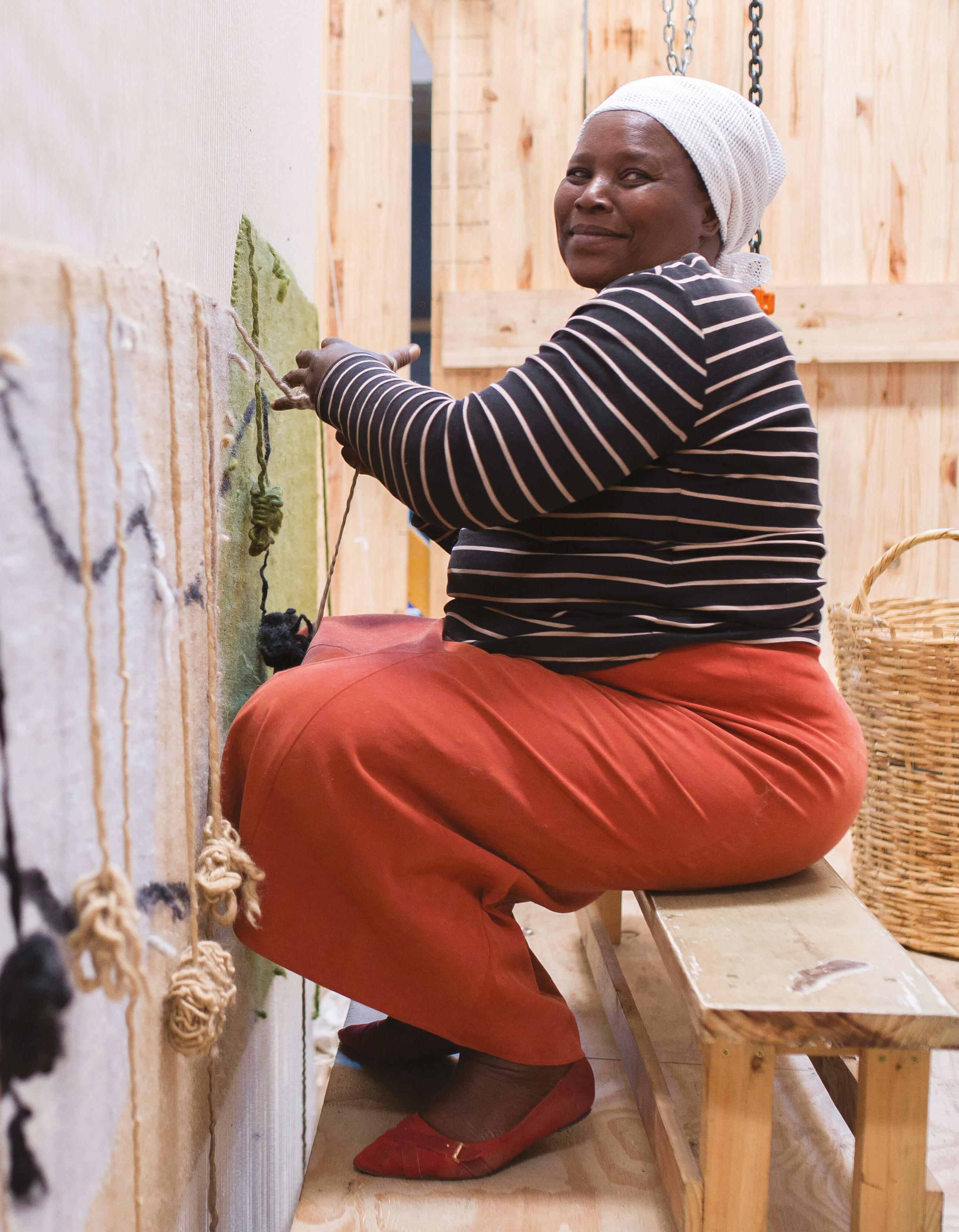
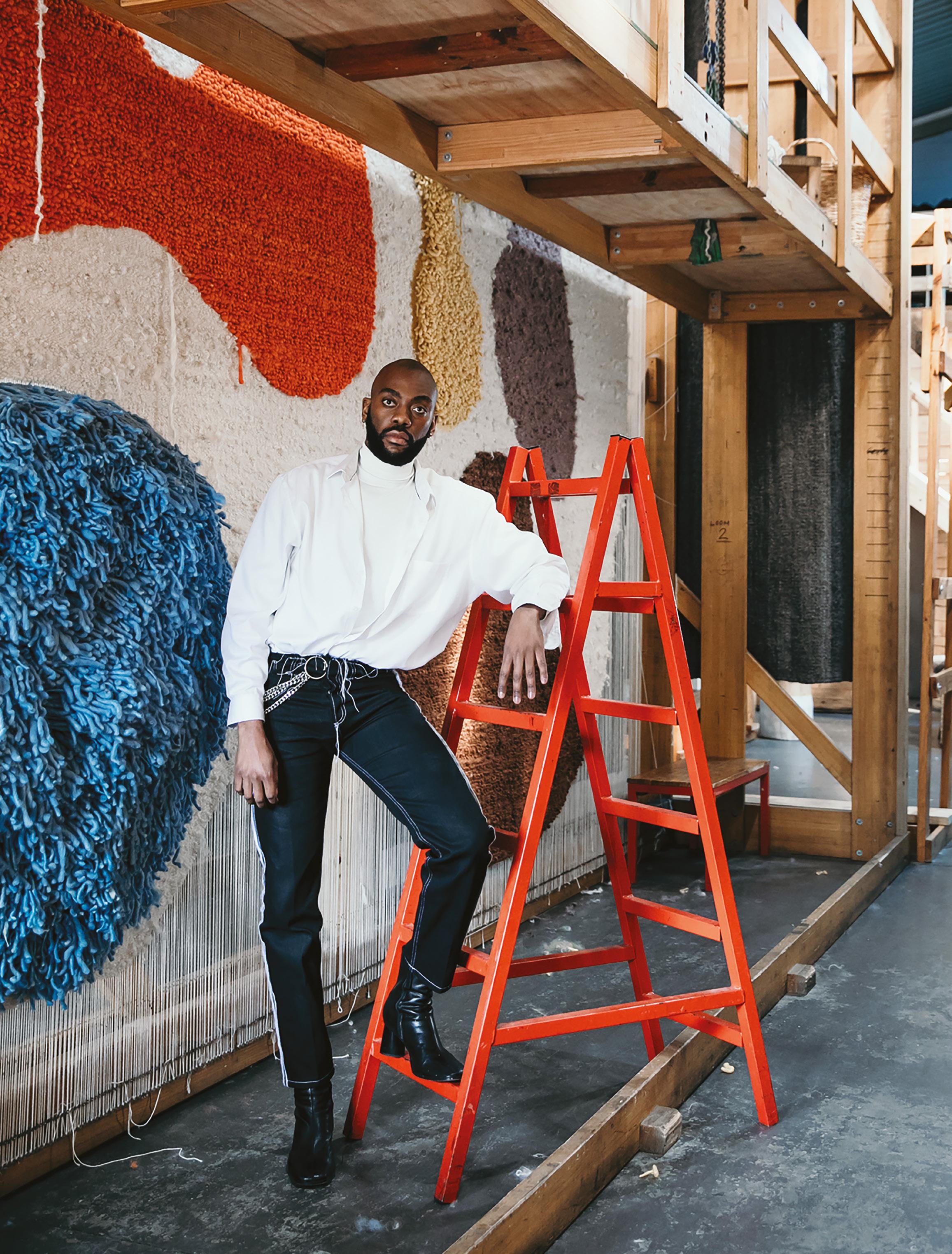
22 Jack Journal Vol. 3
Rich Mnisi. Photography by Stephanie Veldman for Southern Guild.
weaving a living through rugs, the story of oomama bethu (our mothers)
Written by: Unathi Kondile
Rich Mnisi, South African designer darling, stares boldly out from the pages of November’s Wallpaper* magazine, which features his extraordinary solo exhibition titled Nyoka (The Snake).
Behind him in the photograph is a colourful rug, still on the looms of weaving studio Coral & Hive. His exhibition features a range of objects including seating, lighting and a beaded console, but it is this imposing rug in its finished form that has everyone talking.
Rich has named the rug Nwa’ntlhohe (Pure Beauty). It is over 5 metres wide and curves organically around splashes of colour and a big blue mound of extra-long tufting that invites you to lie down, curl up and chill. It was woven on Africa’s largest loom, in natural fibres (karakul and mohair), by two master weavers, Nokwaka Dyani and Funiswa Sibeko.
After Rich had been to see the rug on the looms, Funiswa commented:
‘We were excited to have Rich Mnisi, indoda ende (tall man), visit the looms to learn our craft.’ Nokwaka was very curious to see this particular rug come to life. It took 12 weeks to weave, so she felt it was like her baby. When she and Funiswa went to the exhibition to see the rug in situ at the gallery, they commented: ‘Making this rug taught us even more about patterns, design and creativity. We had fun. And, also, it’s nice to be famous for a bit!’
The stories of these women who weave are typical of many oomama bethu (our mothers).
‘I was born in Gatyane, a village in the Eastern Cape province. My beginnings are there; it is where I grew up herding cattle, fetching water from the river, weaving ingobozi (Xhosa baskets made with thatching grass) and stuff,’ says Nokwaka. ‘Here at Coral I was given in-depth training on spinning, weaving, patterns, following designs or what is called tapestry. I mean today I can easily weave together Nelson Mandela’s face on a rug.’ Through this job, Nokwaka has been able to put her second daughter through the Cape
Peninsula University of Technology, and her eldest son is ‘heading to the mountain’ in December to become a man.
Funiswa, the co-weaver of the Mnisi rug, was also born in the Eastern Cape, near Lusikisiki. ‘My father didn’t want me to go to school. He had no son, and I was the middle one of the children, and he said I had to look after the goats and cows. In the end, my father agreed I could go until I could write my name. After that no more school. I cried as all my friends were going to school. I even stopped speaking for a while.’ In 2003 Funiswa got work weaving full time. She didn’t know any English when she started, but she learned fast and today she is proud of her English because people understand her now and don’t laugh at her. She loves to weave, to know the rug is coming from her hands. ‘This job at Coral & Hive is taking me far … it is forever … it’s like a life for me,’ she says. Funiswa’s son is doing his third year in Natural Medicine at the University of the Western Cape, and her other two children are still at school.
Funiswa and Nokwaka are only two
23
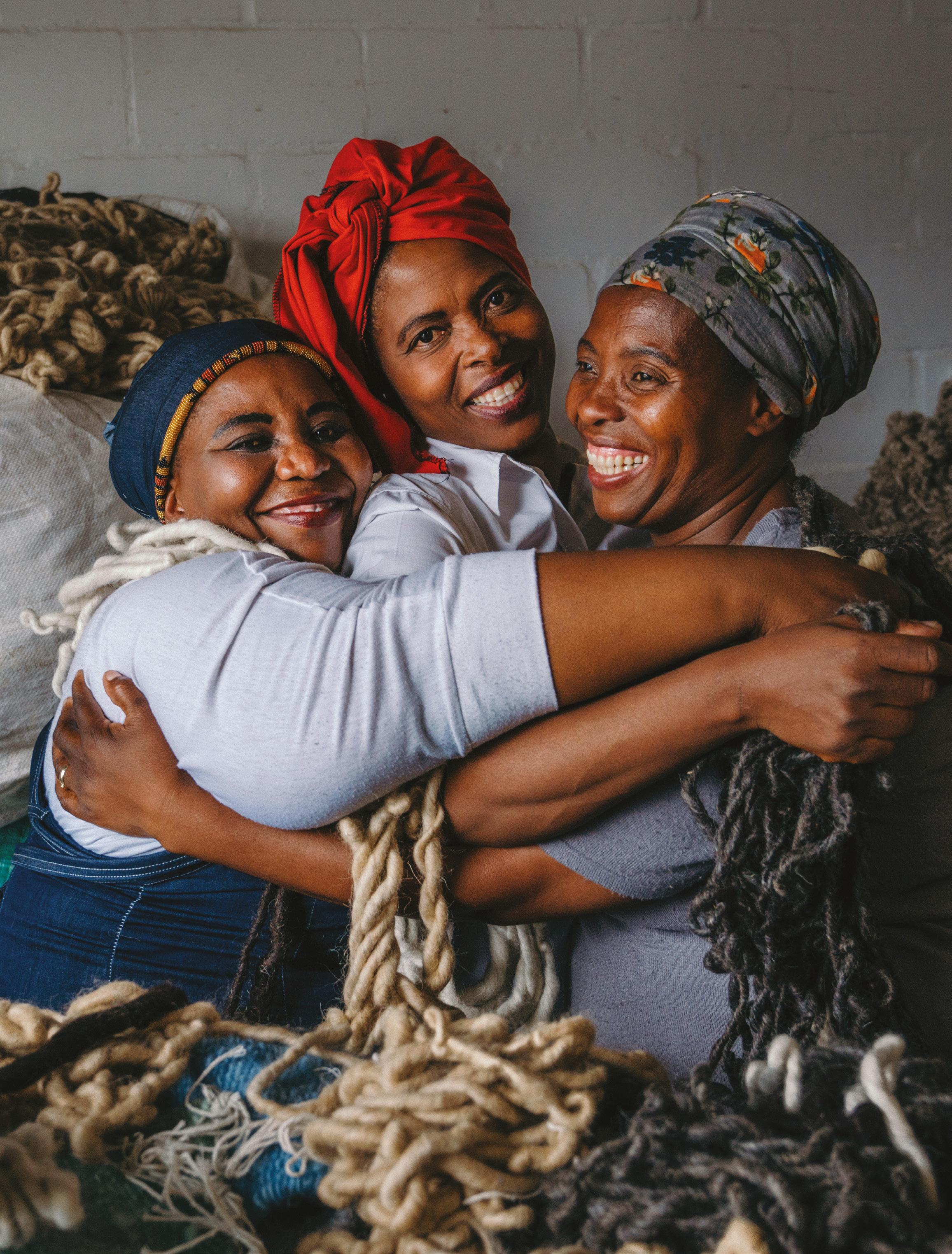
24 Jack Journal Vol. 3
From left to right Neliswa Sinuma, Nokwaka Dyani and Madida Ntseheseng. Photography by Johnny Frattasi.
examples from the many success stories behind the looms and spinning wheels. Another is Ntombomfutshane ‘Ntombi’ Mtana, who hails from rural Centane’s Gqungqe village where she was an avid netballer and bead maker.
‘Traditional women tend to decorate their ankles with various colourful beads in the Eastern Cape. So, in my spare time as a child I would make those amanqashela (ankle bracelets) using a needle, thread and various beads to create beautiful jewellery for people like my aunt,’ says Ntombi, who moved to Cape Town in 1992 where her entrepreneurial flair saw her once running a popular shebeen in Harare, Khayelitsha. After getting married, she shut down the shebeen and looked for something more secure. Ntombi trained as a weaver, but today she sits behind the spinning wheel and dubs herself as an expert on the different types of wool they work with, from karakul wool to mohair. Life for her has become more stable.
Nomtheliso Ngxoni was one of the first employees at Coral & Hive and also comes from the Eastern Cape, Ezingqolweni
village near Lady Frere. She relates the entire rug weaving process as being similar to the traditional weaving techniques of producing izithebe (traditional Xhosa placeholder mats) and amakhukho (traditional grass floor mats). ‘What we do here today is similar to what we used to do with imizi (grass from riverside), weaving to make all sorts of things at home. It’s just that here we are now doing it the modern way!’ laughs Nomtheliso.
Thembisa Sam is the youngest of the 25-strong all-women team. She was born and raised in East London’s Nxarhuni village. She dropped out of high school and took up a job as a cleaner before getting married in 2005. Today she sits high up on the looms, weaving some of the best rugs. The biggest rug she’s ever produced was a colossal 6 x 4.5 metres. ‘For me this is familiar territory – I used to braid people’s hair part-time. So now I am weaving wool full-time,’ says a smiling Thembisa. ‘My husband lost his job, so this job has enabled me to support our entire household.’
Nazeema Solomon is the head weaver

at Coral & Hive and a partner in the business. Naz, whose hands were once described as ‘unsuitable for this kind of work’ by her first employer in the 1980s, has trained over 500 weavers across South Africa and Botswana. Looking at her hands, they are still soft and have no signs of ever having done any manual labour. A beautifully aged pair of hands that still deftly feed the mohair through the strings that make up the warp as the complicated geometry of the pattern emerges. Naz has nearly 40 years experience as a weaver and she supervises all the rugs as they emerge on the loom. She also trains new staff for the expanding business, creating yet more opportunities for women who weave.
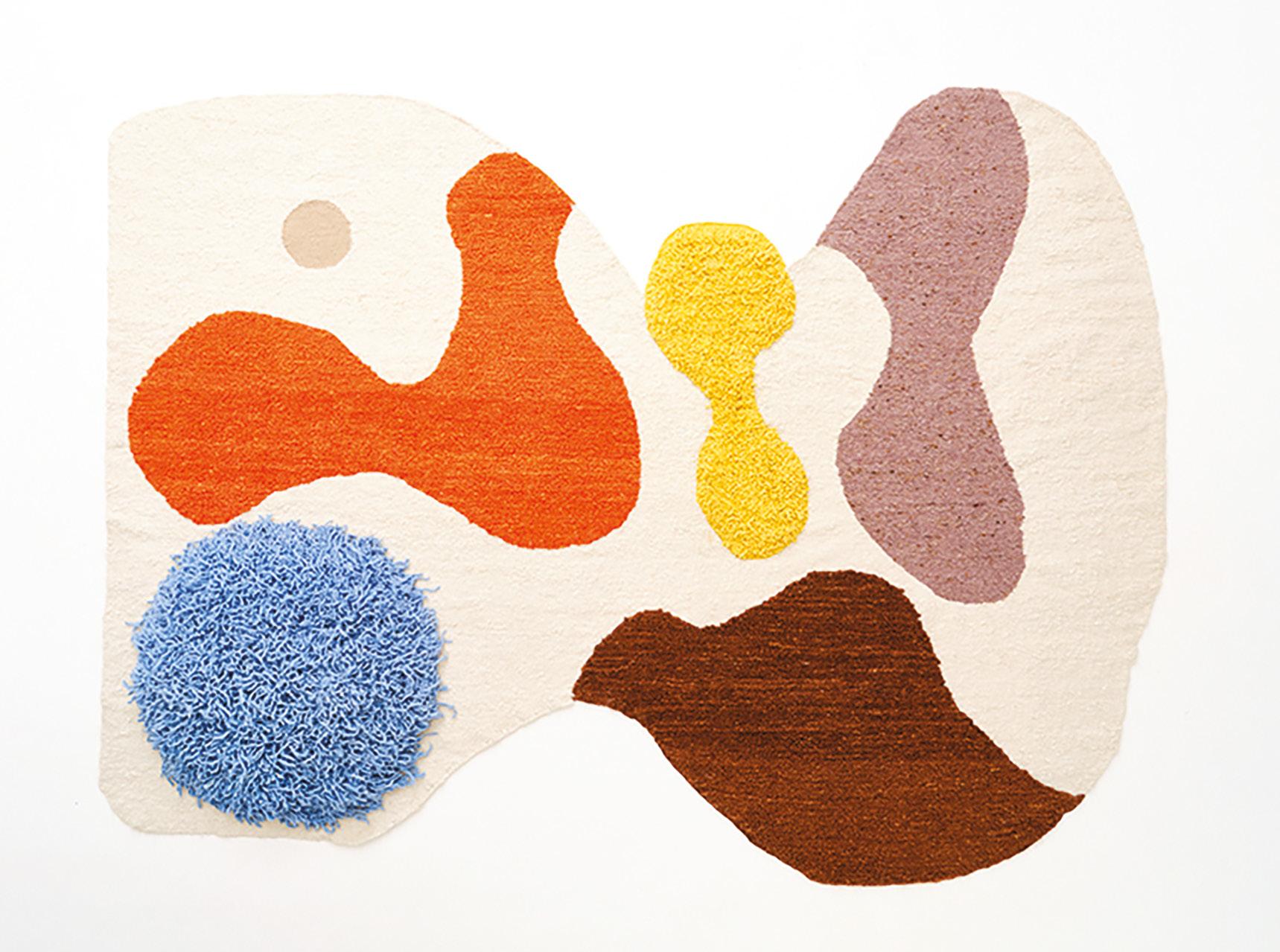
25
Pure Beauty. The Rich Mnisi rug is 3.75 x 5m. Photography by Christof van der Walt for Southern Guild.
Coral & Hive
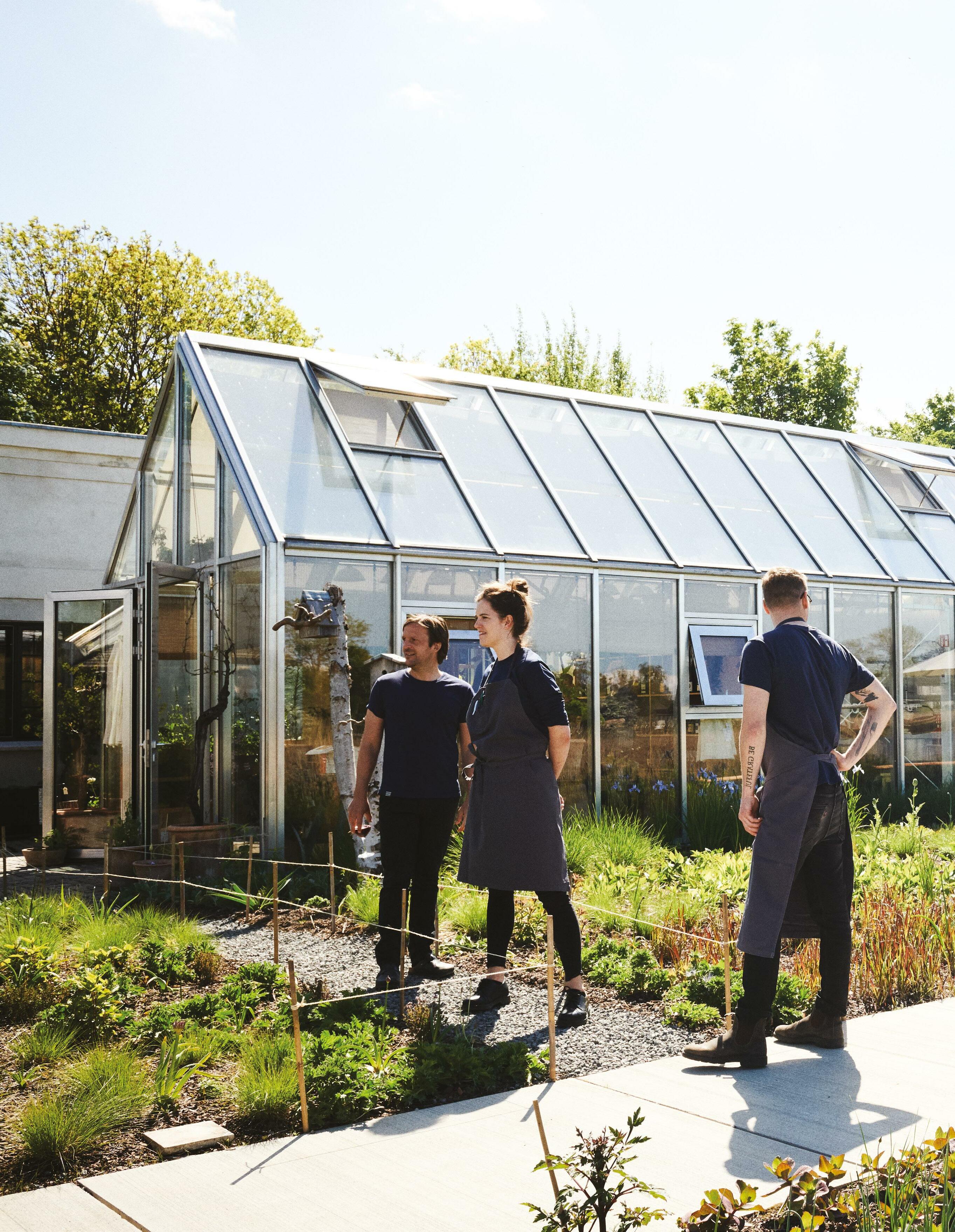
the new nordic food story
 Written by: Michael Booth Photography: Ditte Isager & Irina Boersma
Written by: Michael Booth Photography: Ditte Isager & Irina Boersma
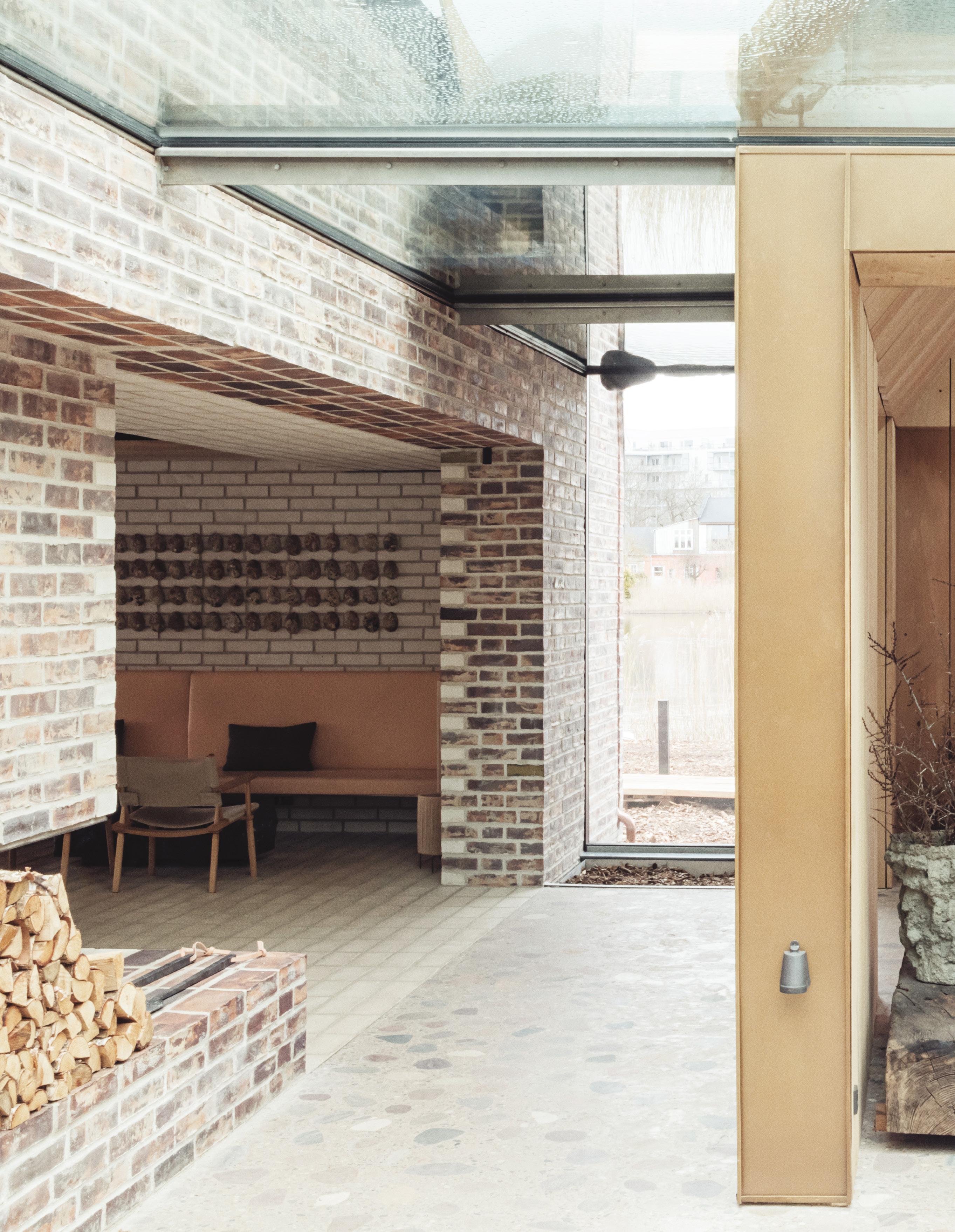
The first time I ate at Noma, I didn’t realise.
I mean, of course I realised that I was eating at a restaurant called Noma (the name is a conflation of NOrdisk MAd –mad is Danish for ‘food’). It was on the ground floor of an old warehouse beside the harbour in central Copenhagen. The building dated from the mid-19th century and had been used back then, legend has it, for storing whale meat and seal skins. In 2004, when Noma opened, the renovated building was home to the embassies of the Faroe Islands, Greenland and Iceland but, still, it was in a rather desolate part of the city. A bit of a schlep. Few went there, certainly not tourists or casual diners.
What I didn’t realise was what Noma meant, what it would become, how it might be possible for a kitchen in a city as cursed by shitty food as Copenhagen was at that time to change the world forever. Back then, the Danish capital had a dead-end dining scene with a handful of stiff, stuffy classical French and Italian restaurants that literally boasted about flying in produce from Liguria and Paris every week. Yet within a year or so, it really was a burgeoning culinary destination, with people travelling from around the world just to dine in its restaurants, and one leading Spanish chef quoted as saying that if, in cooking terms, Spain had been ‘the new France’ during the previous decade, the 1990s, then the Nordic countries were the next Spain. That chef was Ferran Adrià of El Bulli.
But I didn’t realise any of this as I enjoyed the tasty, though relatively conservative plate of – if memory serves – pork and celeriac. I do remember the waiters telling me that all the produce used in the kitchen was ‘locally sourced’ from the Nordic region, but some of the seafood was from thousands of kilometres away in northern Norway and Iceland, which didn’t seem very ‘local’. It was true, though: there were no tomatoes, no olive oil, no truffles or foie gras – the kind of thing that the other posh restaurants in the Danish capital felt obliged to serve to justify their prices.
I think I wrote a fairly nice review about Noma in a guidebook, complaining about the cost of wine, and that was it. But in the weeks and months afterwards, something nagged at me. It was kind of cool that they were sourcing ingredients from the Arctic
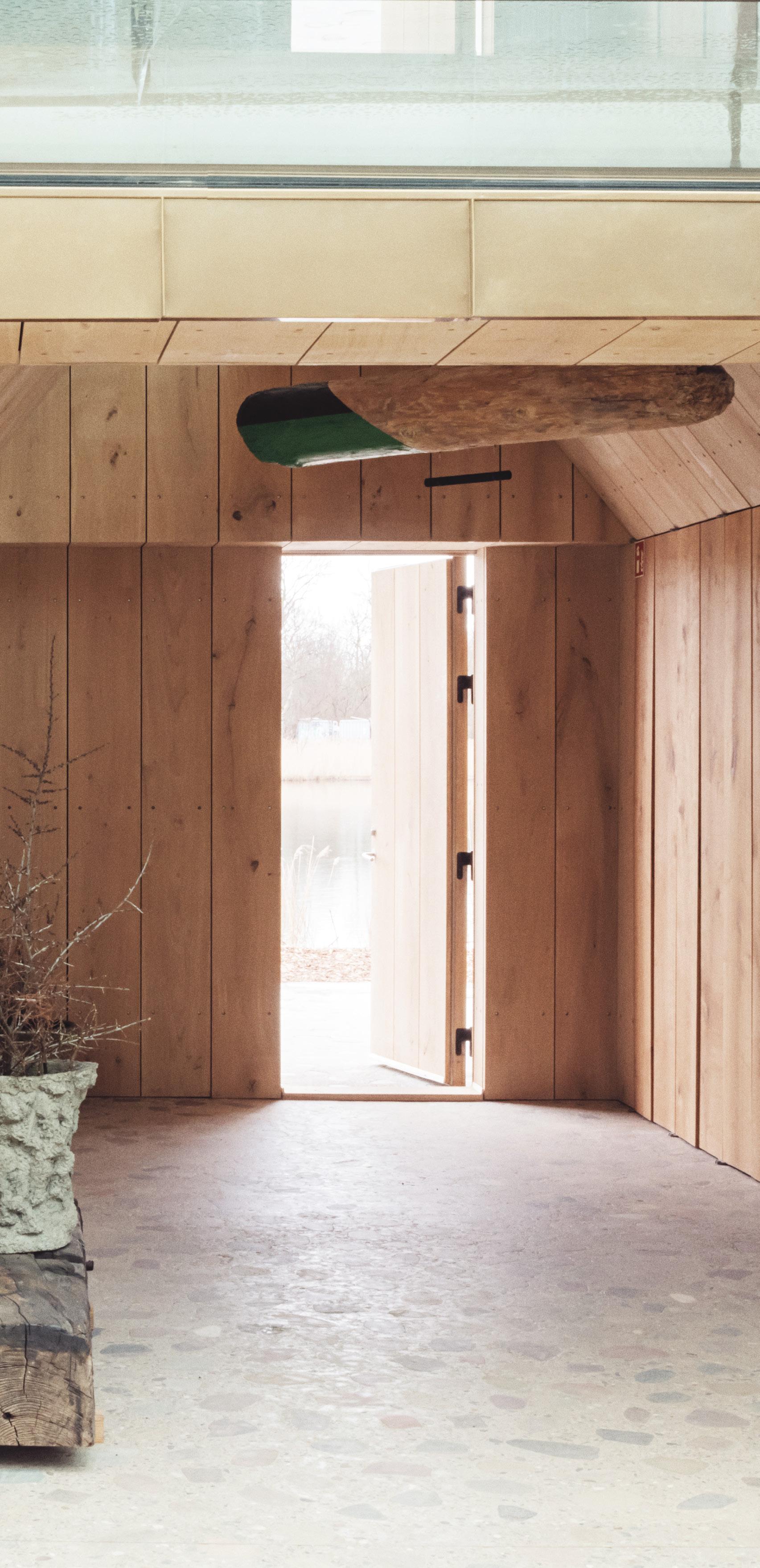
29
– sea birds and sea urchins, seaweed and musk ox. Perhaps more than a gimmick even. So I returned to Noma, and found things had already moved on: this time, for the first course the waiter invited us to dip the tip of a metre-long bullrush into a yoghurt sauce; we ate a musk ox tartare with our bare hands. Among the other fifteen or so courses were a fat, juicy langoustine tail from a Danish fjord, served on a warm stone with an oyster emulsion; a cook-it-yourself duck egg brought to the table with a piping hot skillet and an egg timer; and an ancient purple carrot from Jutland, braised in butter for two hours.
I interviewed the chef, René Redzepi, then aged 27. He was half Danish, half Macedonian, with an indie band hairstyle, friendly but with a pent-up energy. Redzepi was part of a generation of young Nordic chefs who had spent the past few years on the culinary equivalent of the Grand Tour, which at that time usually included stints at El Bulli and Heston’s place, perhaps time with Thomas Keller in California, and of course brutal stages at the Grande Tables of France, before returning home.
Redzepi gave me a blade of grass to taste, and looked at me expectantly. I chewed on the cognitive dissonance: it tasted of coriander. ‘Isn’t it amazing?’ he said. ‘It is a type of grass from Sweden. There’s lots of it growing within miles of here just across the water, but, you know, it is far, far easier for me to get fresh mangoes from the Philippines or wherever. Would you believe they sent us French asparagus the other day? Danish asparagus is the best in the world! Did you know that truffles grow wild on [the Swedish island of] Gotland? We are looking into getting hold of some.’
So I wrote my piece about the birth of New Nordic cuisine in Copenhagen. By chance, I was the first foreigner to do so, and Redzepi was kind enough to give me much more of his time over the years including, later on, to take me out to the wilds of Amager, the island adjacent to the Danish capital, to hunt for onion cress, wild horseradish, elderflowers, yarrow and goosefoot. He even claimed I could eat ground elder, a weed that had shown a triffid-like dedication to taking over my garden. ‘The young leaves are very good steamed.’ So many food writers have
followed since that someone once joked we should all have been given T-shirts: ‘I’ve Been Foraging with René Redzepi’. But his approach was a kind of revolution.
It seemed we had a movement on our hands. It had a manifesto too, signed by a few other like-minded Nordic chefs, and the co-owner of Noma, Claus Meyer. The New Nordic Food Manifesto was clearly inspired by Danish cinema’s Dogme movement but instead of no artificial lighting or special effects, it pledged to use local, seasonal produce, less meat, more organic and biodynamic produce.
Soon after all this, I moved to Paris and enrolled in cooking school. To be a food writer, to stand in judgement about the world of professional chefs, I thought I really ought to at least try and put myself in their shoes. But over the years, word began to reach me, even in the French capital, bastion of classical European cooking, about Noma. Chefs in Paris raised a few eyebrows when I told them that eating local, seasonal produce was a revolution in Denmark: this kind of approach was like breathing to them. But eventually even the French chefs embraced the Nordic movement and most ended up making the pilgrimage to the chilly North to see what all the fuss was about.
By the time I returned to live in Denmark a few years later, the New Nordic movement was in full flood. Noma had two Michelin stars but was never awarded a third, I suspect because, by then, the restaurant was being lauded by the rival 50 Best Restaurants list, which it topped three years in a row. Chefs around the world were now chanting the local, seasonal mantra, exploring the produce in their backyards, finding stuff to eat that no one had eaten before (some of which probably should have remained uneaten – I’m looking at you, reindeer moss).
In 2011, Redzepi asked me to host the first MAD Foodcamp Symposium, Noma’s food festival of ideas. On stage I introduced an amazing line-up of the world’s leading chefs and food ‘thinkers’, including Alex Atala,Yoshihiro Narisawa, Massimo Bottura, Iñaki Aizpitarte, Andoni Luis Anduriz, Harold McGee, Daniel Patterson, and the godfather of foraging, Michel Bras. I will never forget the team-building day we spent beforehand, cooking together
30 Jack Journal Vol. 3
Redzepi gave me a blade of grass to taste, and looked at me expectantly. I chewed on the cognitive dissonance: it tasted of coriander.
“Isn’t it amazing?” he said. “It is a type of grass from Sweden.
Seaweed crisp dressed with garden flowers, radish and horseradish.
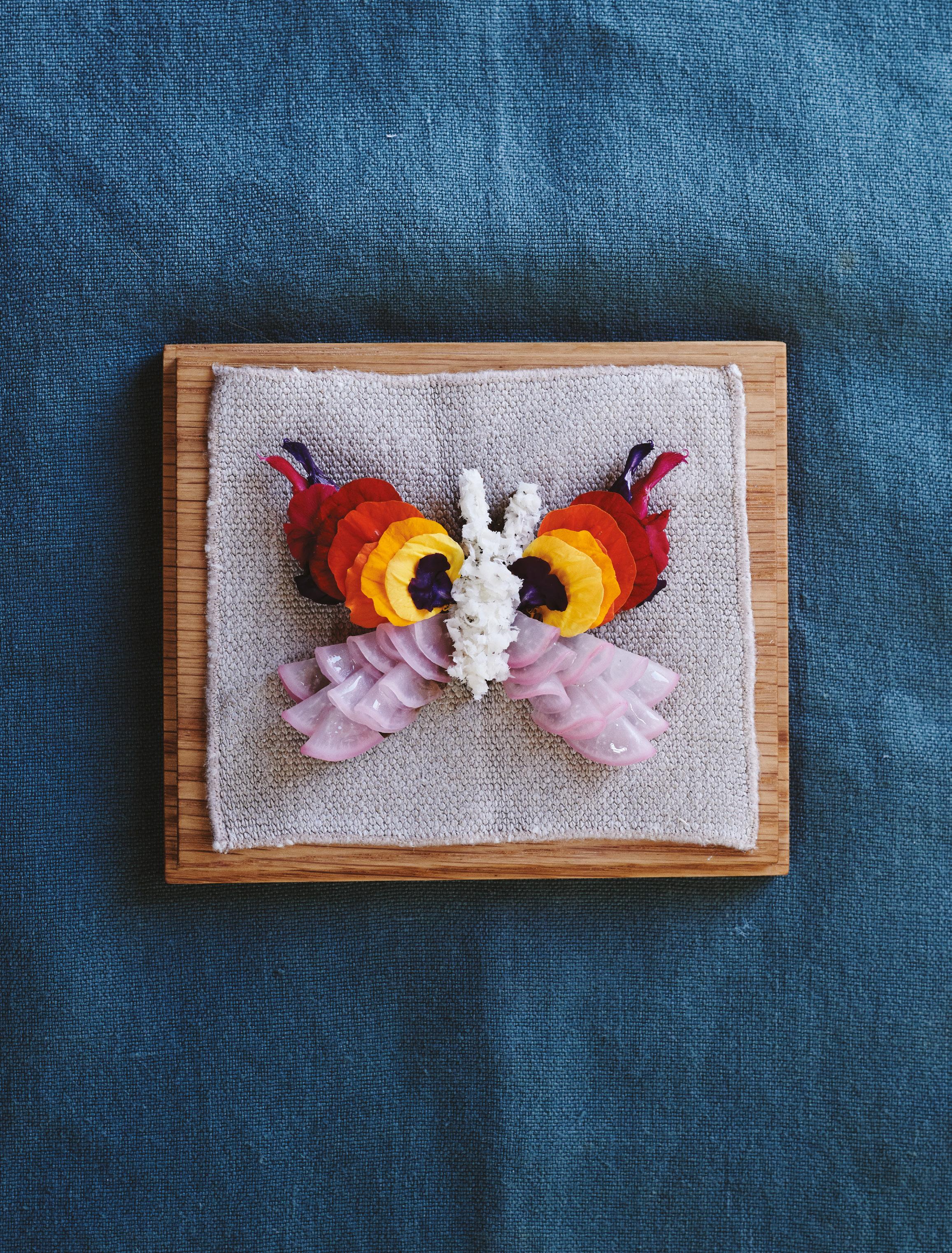
31
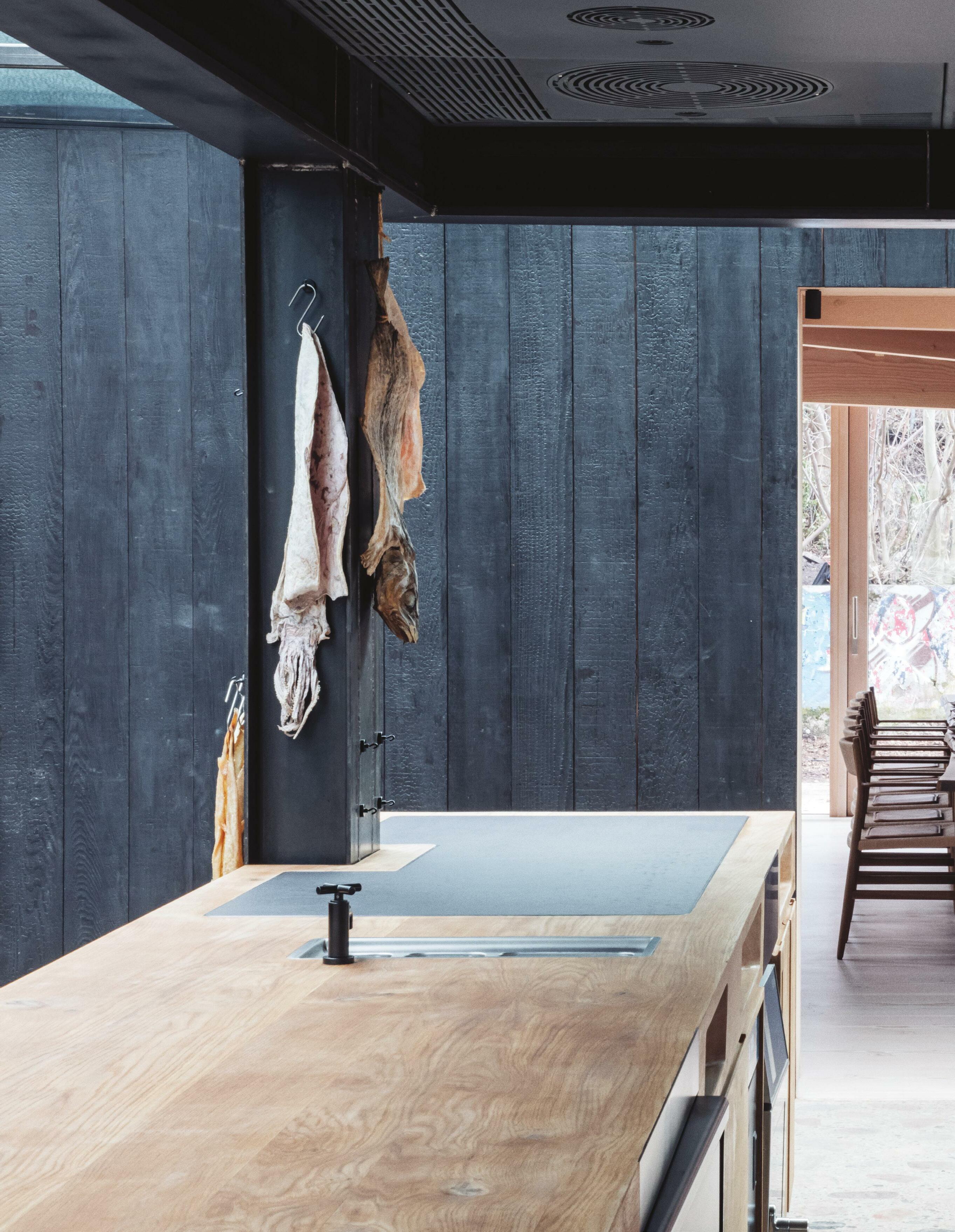
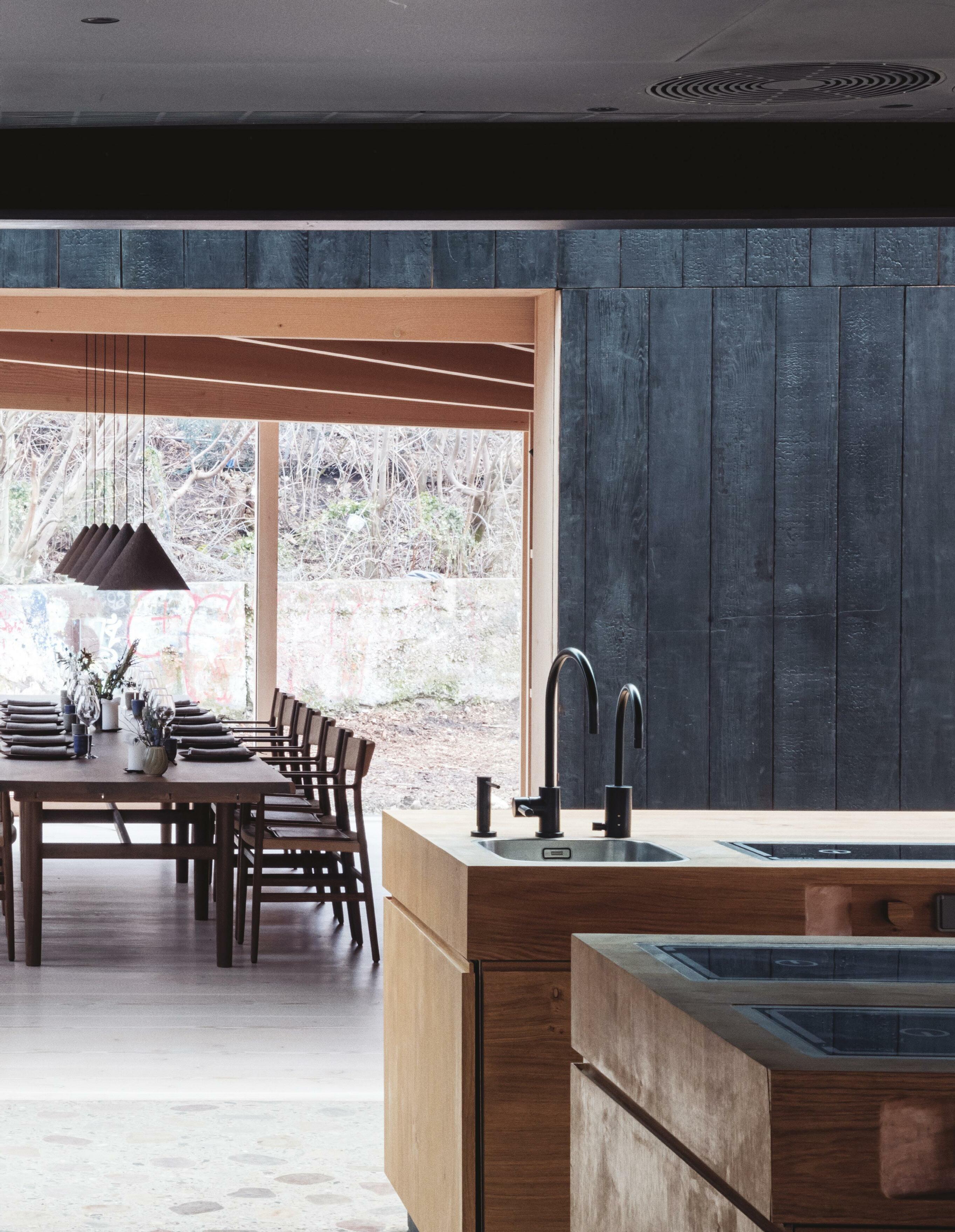
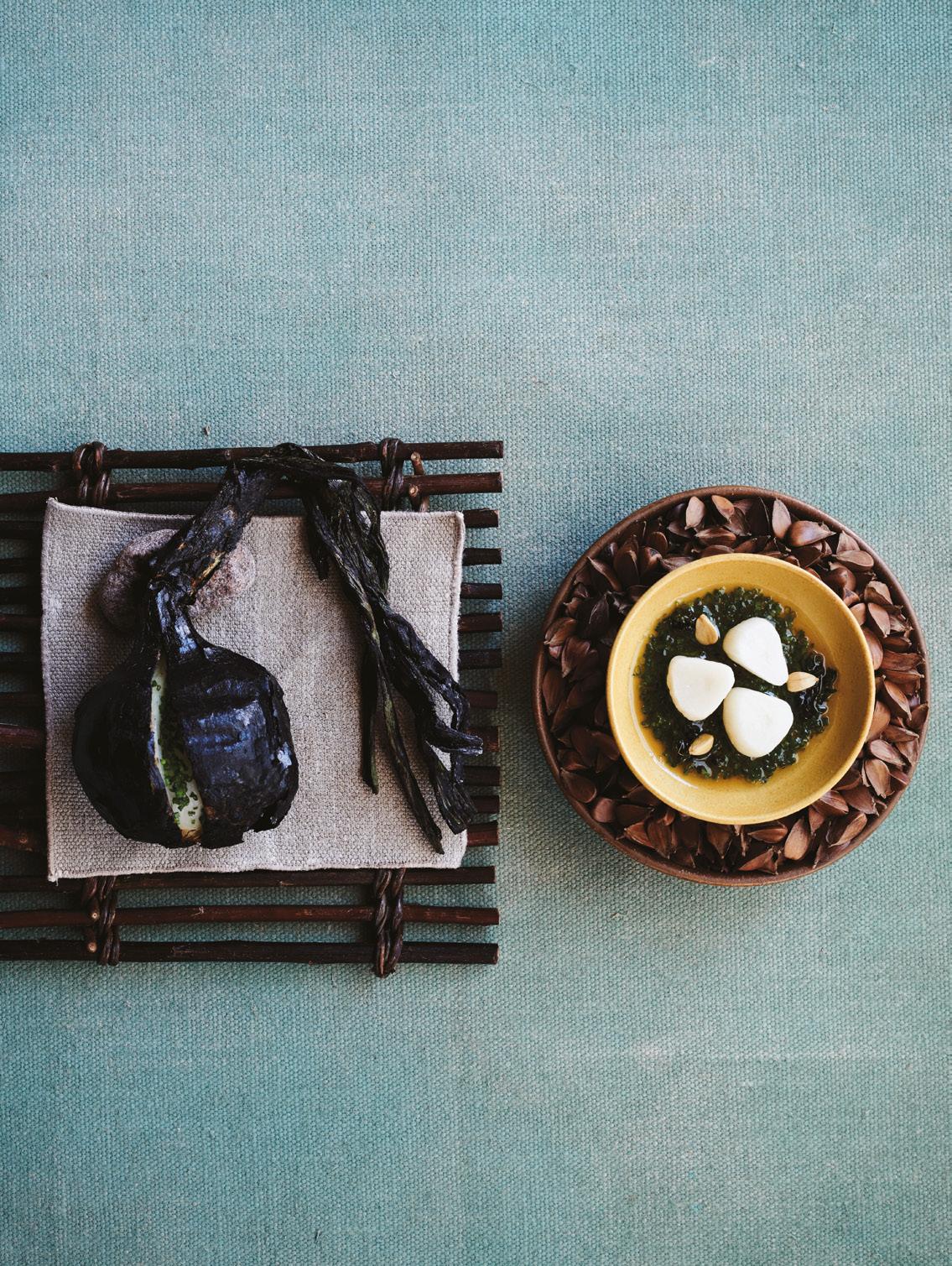
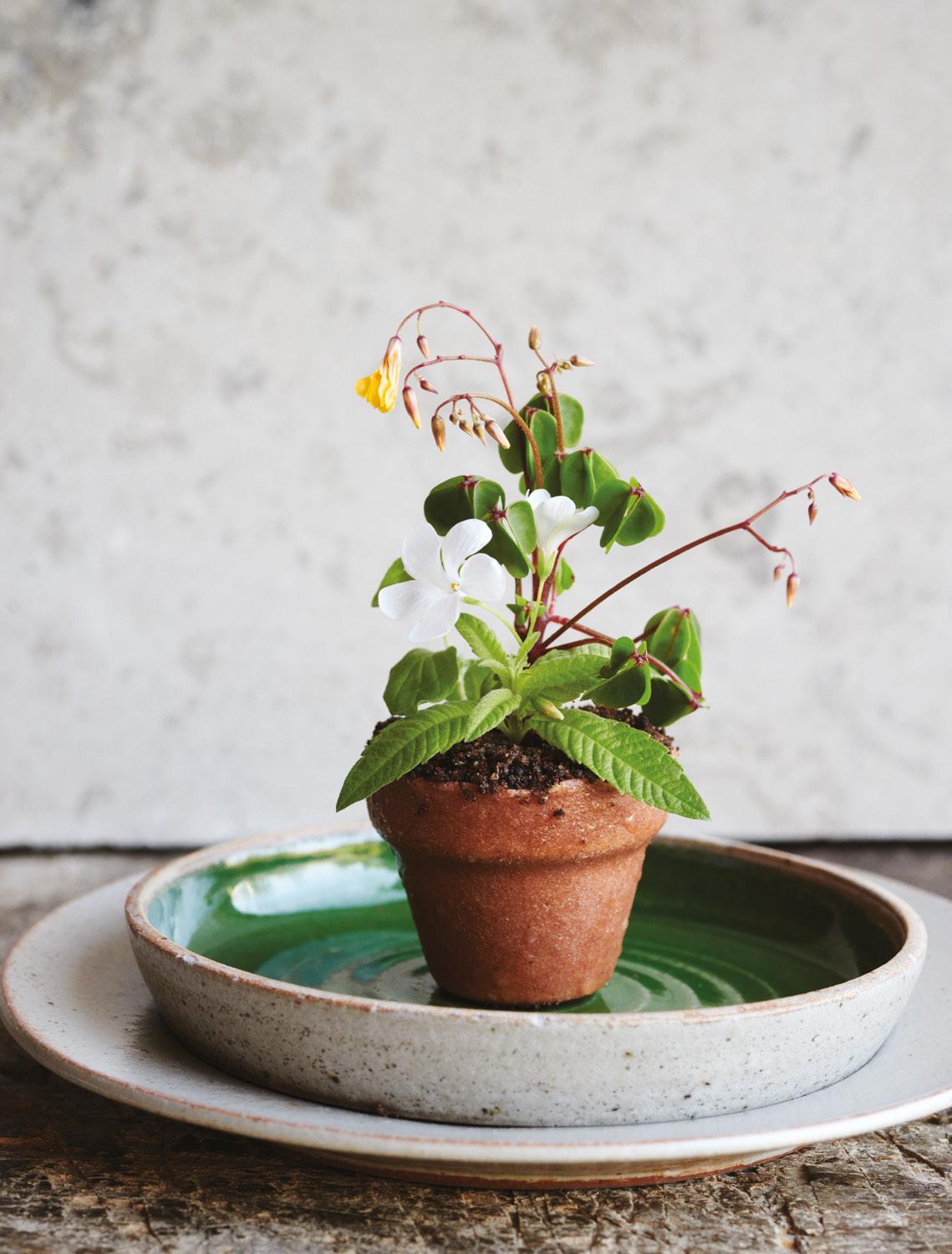
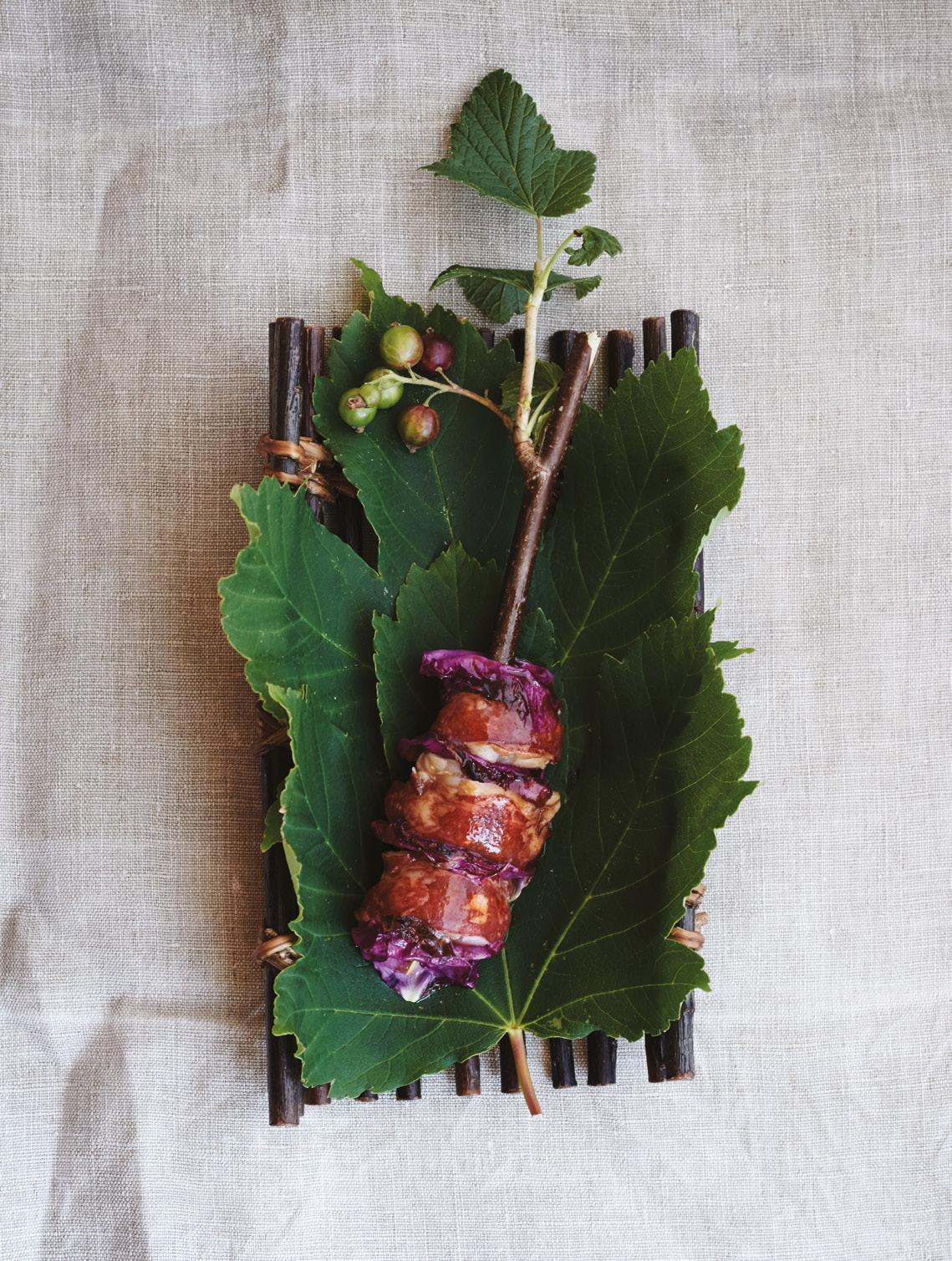
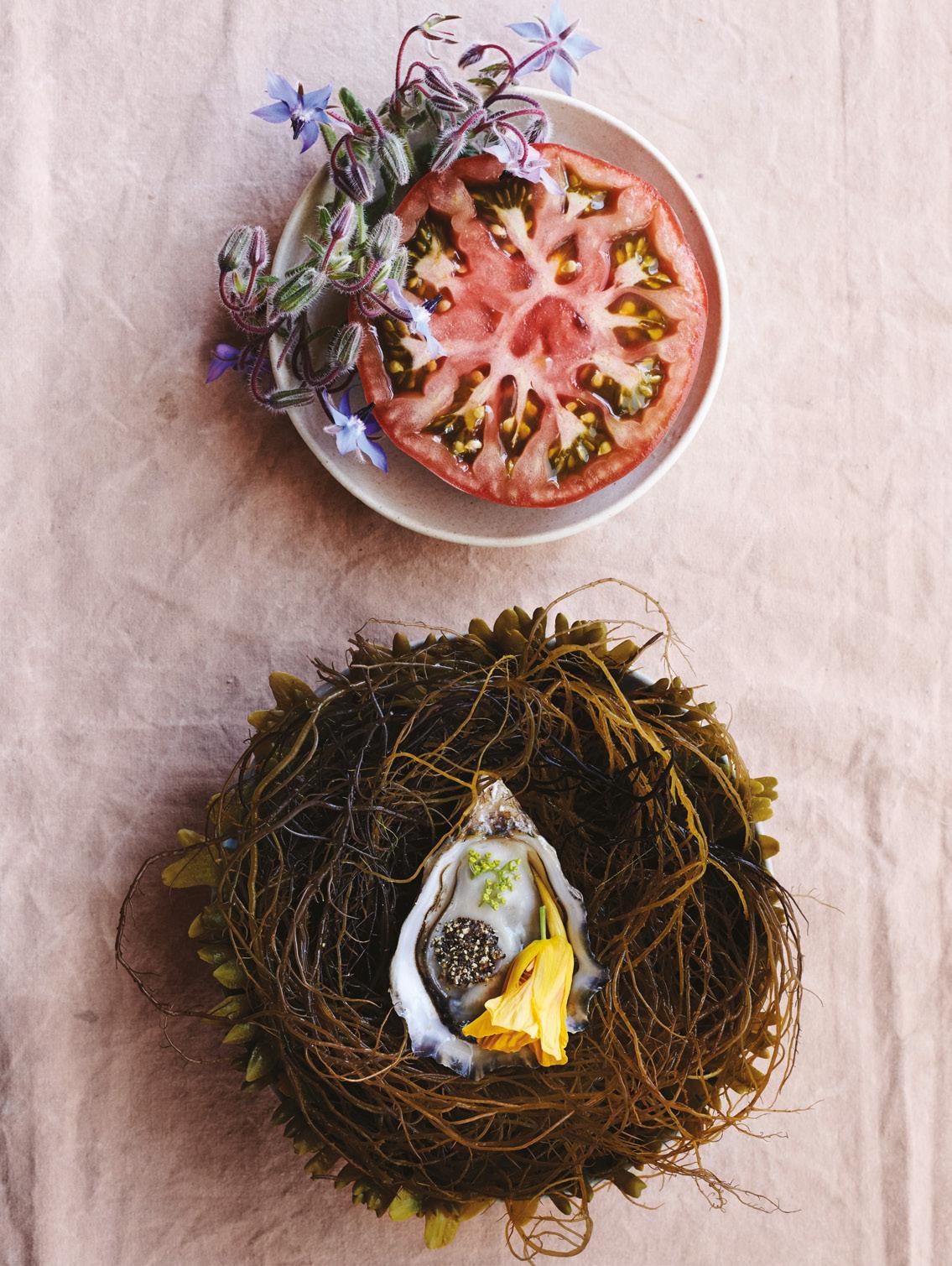
34 Jack Journal Vol. 3
3
1 2
In 2017 the restaurant reopened, reinvigorated in a purpose-built urban farm location a kilometre away from the original location, on the edge of Christiania, Copenhagen’s famous ‘hippy commune’.
in the outdoors – with Magnus Nilsson tending the grill and Bras kindly showing me how to use a mandoline without slicing off the tops of my fingers. The event itself was held in a circus tent on a piece of wasteland even further out in the harbour, where once they built ships. The restaurant’s magic touch would end up reviving that part of the city too, incidentally: it’s now home to the superb restaurant Amass, overseen by a Noma alumnus, Matt Orlando.
Other Noma alumni began to transform Copenhagen. First to open, in 2011, was Italian-Norwegian Christian Puglisi, whose ‘kælder’ restaurant, Relæ, not only led a wave of restaurants serving refined, innovative food free from the usual Michelin fripperies of thick white linens, extravagant wine lists and smarmy maitre d’s, but also sparked the gentrification of one of Nørrebro’s least salubrious streets, Jægersborggade. Many of the young international chefs who had flocked to work in Noma’s kitchen – and they were mostly foreign chefs; Danes tend to be less prepared to put in the hours that a kitchen like this requires – eventually returned to Australia and Chile, the UK and the USA, pretty much everywhere, to apply the lessons and techniques they had learned –traditional Nordic techniques of pickling, drying, fermenting – to their own native larder. Claus Meyer moved on too, falling out with Redzepi, but going on to build his own food empire, with supermarket lines, and delis and other restaurants in Copenhagen, New York and, weirdly, La Paz.
restless Redzepi decamped: popping up in Mexico, Japan and Australia before closing down for good in the original whale warehouse. In 2017 the restaurant reopened, reinvigorated in a purposebuilt urban farm location a kilometre away from the original location, on the edge of Christiania, Copenhagen’s famous ‘hippy commune’. Now, the menu changes with the seasons, in summer and winter featuring virtually no meat.
The food at Noma is genuinely lifechanging. And every time you eat there, it changes your life in a fresh way. You’ll think about the meal for months if not years afterwards. From time to time, I still think of one particular dessert, made from plankton, three years after eating it.
In the past year, Noma has had to react to Covid, of course. Once again, there was a dramatic pivot: it reopened as an alfresco burger and natural wine bar, prompting mile-long queues.
‘During the lockdown I asked myself: What did I miss the most?’ Redzepi told me the day before Noma reopened as a burger joint. ‘I didn’t miss sitting down to a ten-course meal. I missed the buzz of people just enjoying being together.’
As always, this restless, questing man, icon of a movement, hero to thousands of chefs around the world, judged the zeitgeist perfectly. Pretty great burger it was, too.
Opposite page: Photography: Ditte Isager
1. A grilled onion with chives and walnut oil, young garlic with beechnuts.
2. A layered cake of berries, elderflower, rose and herbs.
3. An oyster with fennel flowers, cracked pepper and a nasturtium flower, served with squeezed tomato juice.
Meanwhile, I travelled further in the region, meeting other pioneering Nordic chefs in Oslo, Stockholm, Reykjavik and Helsinki – people like Geir Skeie, Bocuse D’Or-winning Norwegian chef, who had worked with Michel Rostang in Paris, and Stockholm chefs Björn Frantzén, who went on to win three Michelin stars, and Mathias Dahlgren, who was there at the beginning and helped draft the New Nordic Food Manifesto (he also made me try Swedish fermented herring, surströmming, because it was, he claimed, ‘delicious’. He lied.).
In Oslo, Danish chef Esben Holmboe Bang opened Maaemo and rocketed to the top of the global culinary hierarchy, also winning three stars.
Always a step ahead, Noma and the


35
Michael Booth
Noma
A

36 Jack Journal Vol. 3
skewer of a grilled Danish black lobster with barbecued roses.
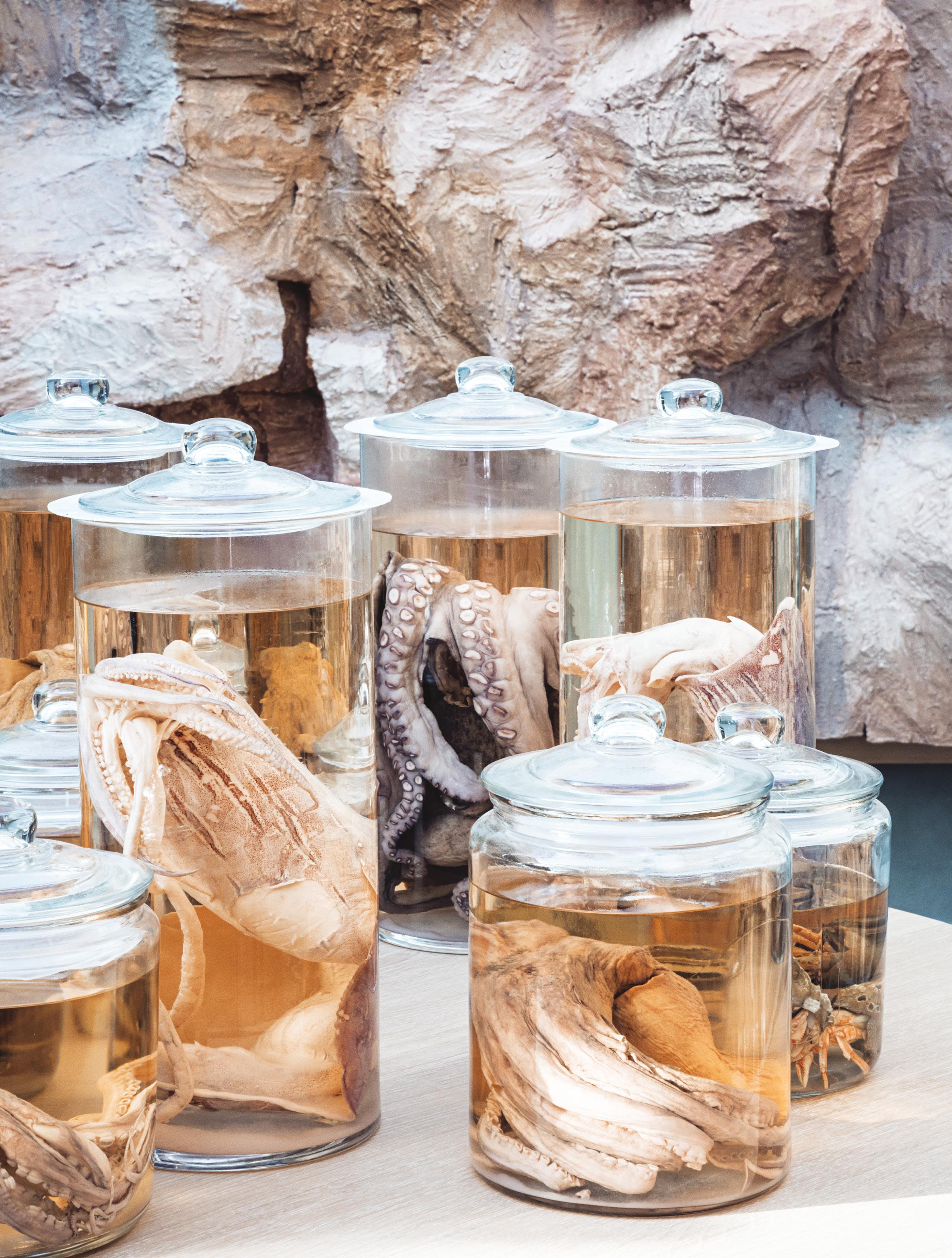
37
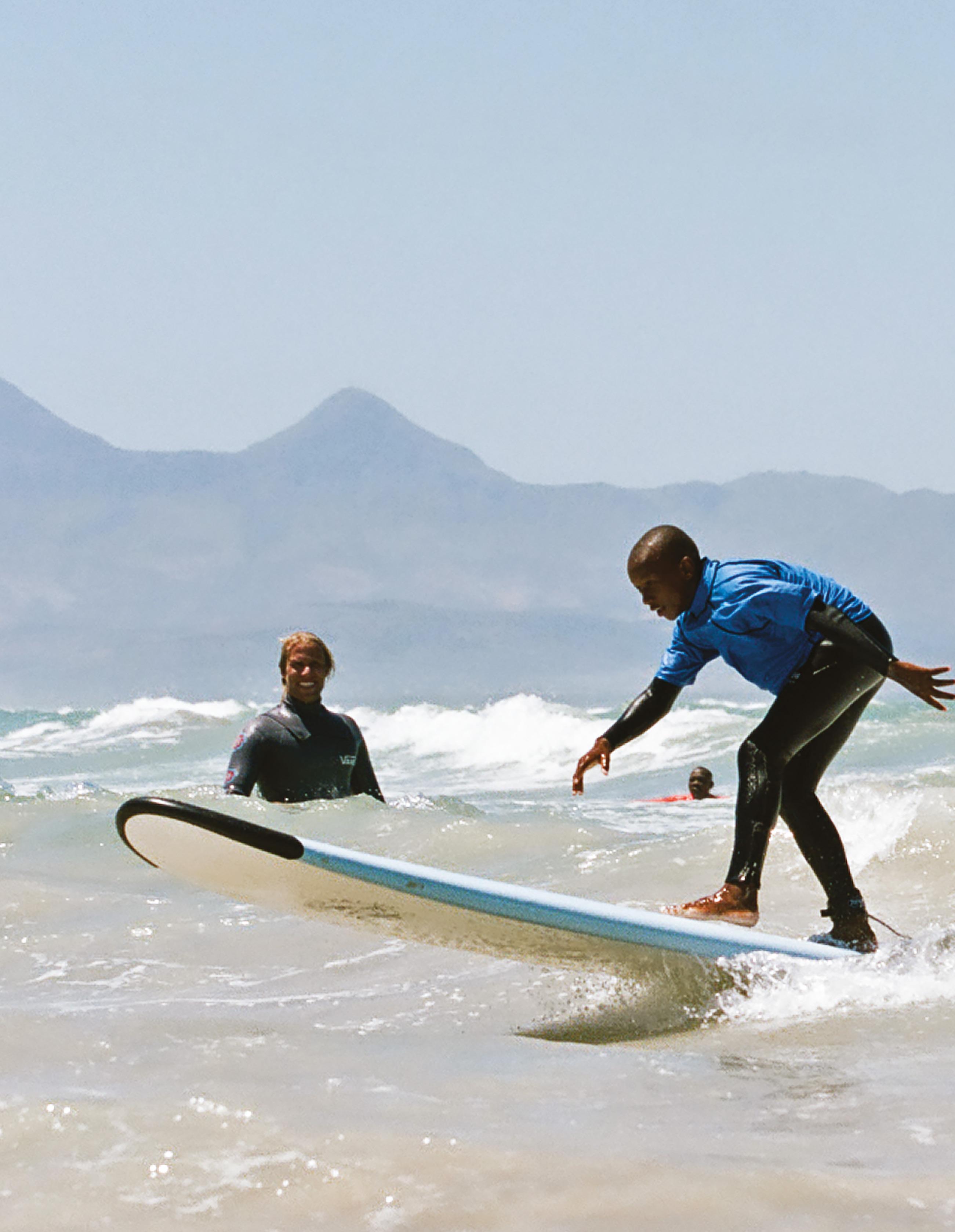
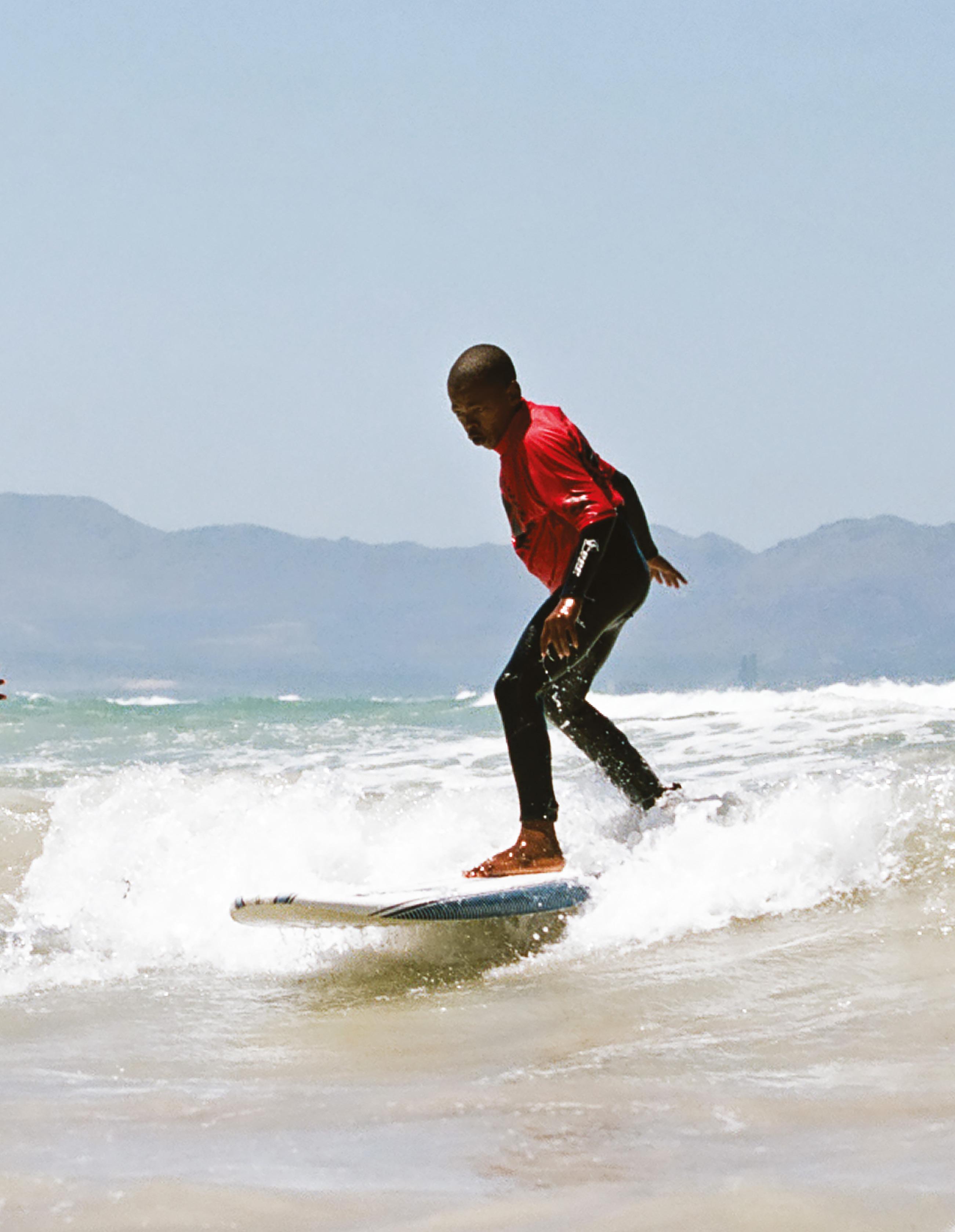

40 Jack Journal Vol. 3
riding high on a wave of wellbeing
A passionate group of surfers is transforming access to mental healthcare by giving traditional therapy a sea change.
Written by: Alison Westwood Photography by: Tao Farren-Hefer
On a sunny Saturday morning in 2008, a small white Golf with a large stack of surfboards pulls up outside Masiphumelele township in Cape Town. The children waiting on the pavement eye them curiously. Although they live so close to the sea, surfing is practically unheard of in this ekasi. But Tim Conibear and his friend Apish Tshetsha are about to change that. Little do they know, but the waves they catch today are going to propel them along for more than a decade.
Just three or four kids join Tim and Apish for that first surf lesson, but the next weekend, 15 are waiting. Tim and his Golf have to make several trips to the beach. The weekend after that, more than 40 aspirant surfers are standing on the pavement. Tim replaces the Golf with an old pickup truck,
and he and Apish create Masiphumelele’s first ever surf club. It’s still going strong today.
But that’s not where this story ends, because Tim is insatiably curious, and he thought it was a little strange that so many children were willing to wait hours for a chance to surf. So, he started asking, why do you come? He got the obvious answers (surfing is fun, we meet new people), but he also got an answer he wasn’t expecting: ‘We can talk and people listen to us.’
This poignant reply sent Tim down a rabbit hole of research, and what he discovered was heartbreaking. Beyond the obvious indignities and discomforts of township life lurks a darker shadow: constant trauma. The statistics told Tim that children in South African townships endure eight traumatic experiences every
single year – serious events, like the death of a loved one, the incarceration of a parent, witnessing community violence, physical or sexual abuse. And for Masi’s community of 60,000 people there were just two social workers and not a single psychologist.
So, in 2011, Waves for Change was born. The idea was simple. Tim and Apish would train local young adults from township communities to do what they were doing. Identify children in need and take them to the beach for a surf – but most importantly, create a physically and psychologically safe space where they could work through their challenges. With the help of universities and psychologists, Waves for Change integrated evidence-based practices into their programme, creating a special blend
41
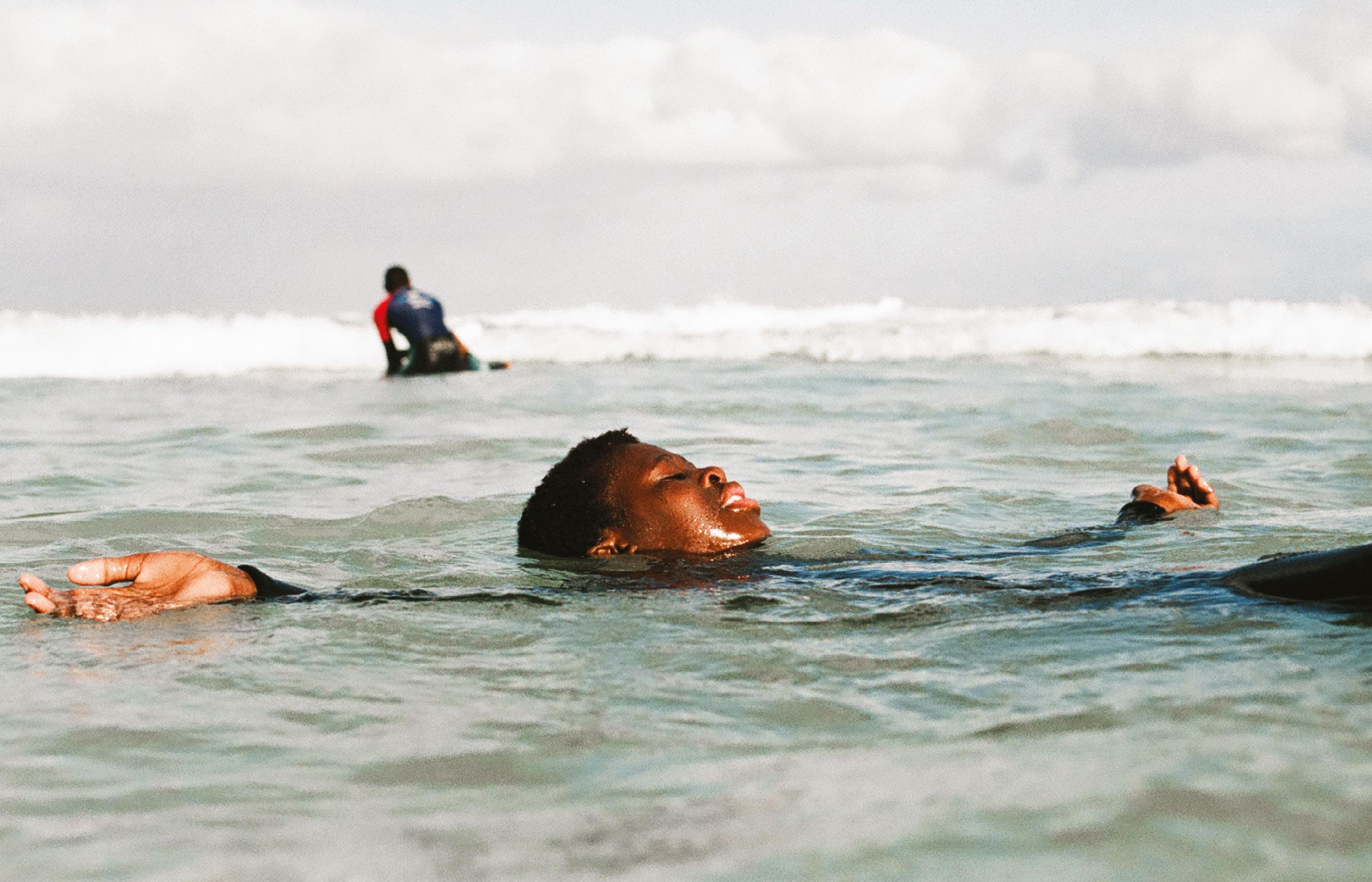

42 Jack Journal Vol. 3
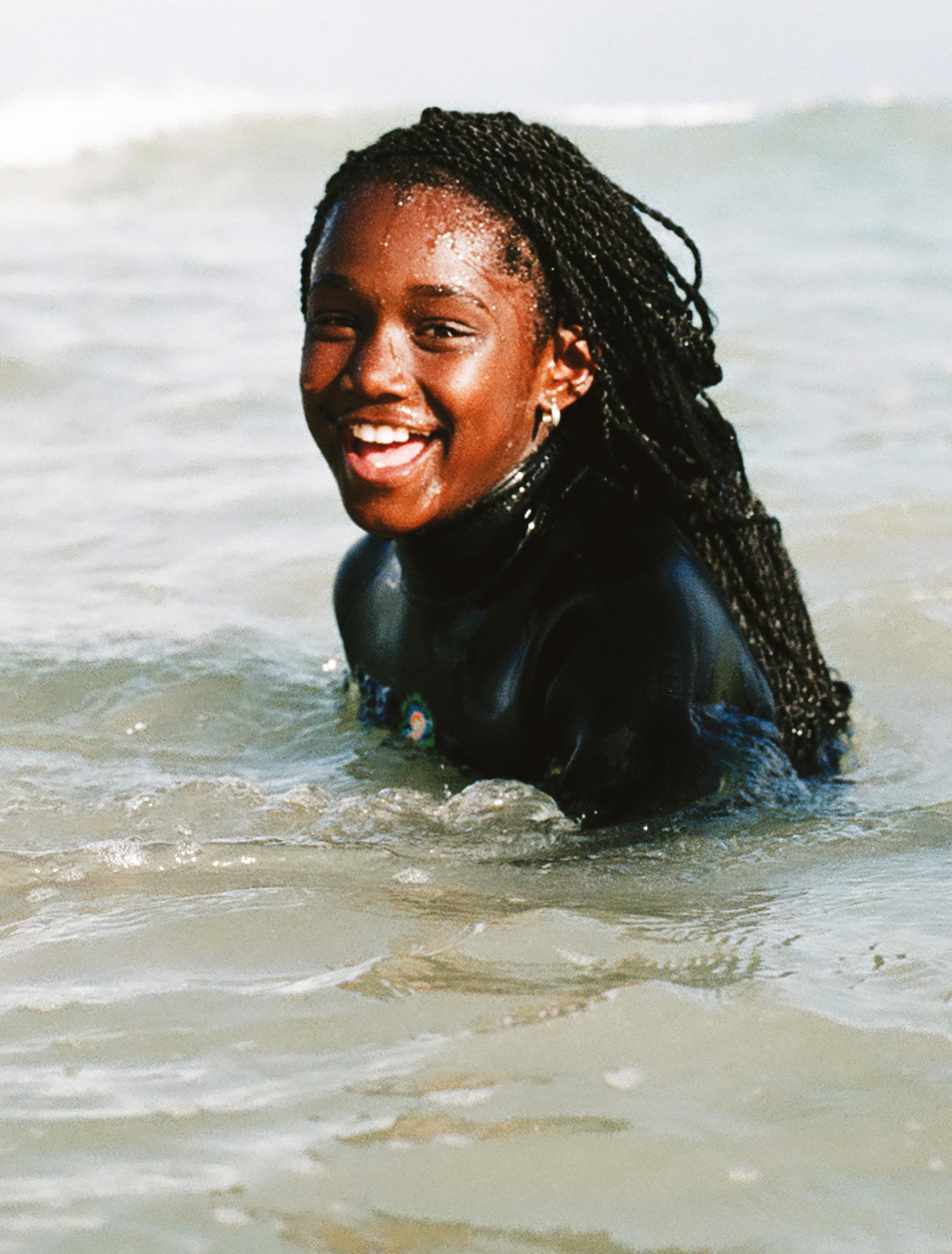
43
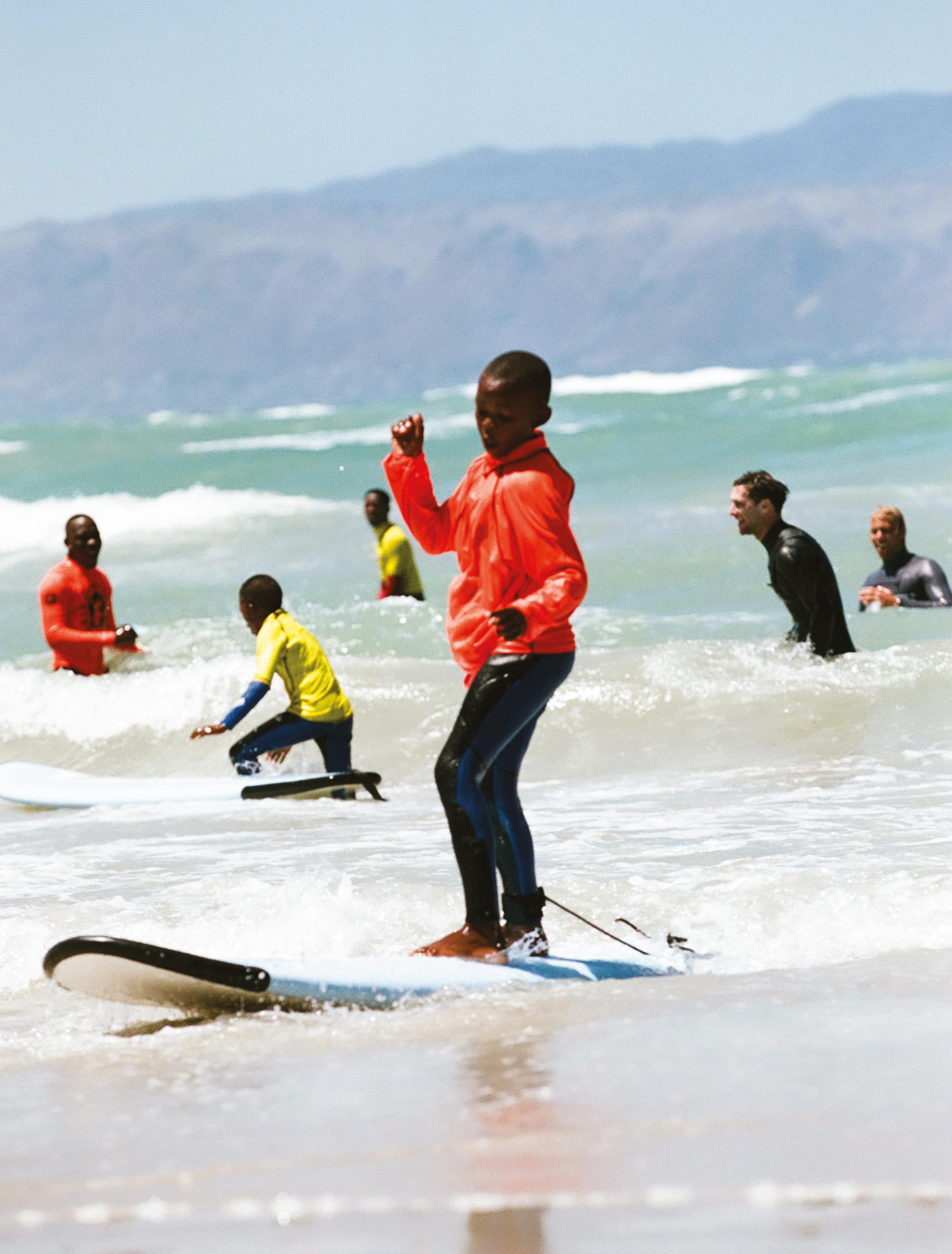
44 Jack Journal Vol. 3
of sport therapy and behavior activation therapy.

Over the course of the year-long programme, children meet every week to learn positive behaviours, such as sharing, recognising emotions, and how to ask for help. And they discover, step by step, the deep connection to nature, the sanctuary, and the sense of accomplishment that surfing provides. ‘The great thing about surfing is that you can select your risk category,’ says Tim. ‘You can choose your level of challenge and overcome it. It takes bravery, it takes strength, it takes confidence.’
By the beginning of 2018, Waves for Change was reaching 1,000 children every week (that’s now grown to 1,800). They wanted to know what impact they were having. So, they did a study of 200 children from the same background, half of whom took part in the programme, and found statistically significant evidence that the children on the programme were becoming more optimistic, engaged and resilient.
Another study, conducted with the Laureus Sport for Good Foundation, measured the children’s Heart Rate Variability (HRV). This is regarded by researchers as a relible marker for resilience and behavioural adaptation. Improvements in HRV were found within the first two months, and were sustained throughout the rest of the programme. The results showed that children who previously shut down under stress had learned to feel and risk more, while those previously in constant fight-or-flight mode responded to adversity more calmly.
Thanks to its focus on research and evidence, Waves for Change has transitioned from a surf initiative into a globally recognised child-friendly mental health programme, and has won multiple awards. In July 2021, they not only won the MTN Award for Social Change, but also the bonus award for having the best evidence of advanced Monitoring and Evaluation Practice. ‘When we talk about surf therapy, we’re starting to talk about it with more authority,’ says Tim. ‘It does work.’
But the same curiosity led them to ask why. And what they discovered was surprising. ‘Surfing is our sport,’ says Ashleigh Heese, Waves for Change Partnerships Manager, ‘but we realised that the therapeutic benefits of surfing could be present in other group physical activities.’ Research identified
the core ingredients of their service –and access to the ocean isn’t necessarily one of them.
What really matters turns out to be this: access to a caring adult, a safe space, the opportunity to learn and practise new skills, tools to regulate wellbeing, and connection to a social support group. ‘So, the question became: how can we translate this and share it more widely?’ says Heese, whose current mission in life is to extend access to the service.
Their answer was to partner up with people all around the world who are doing similar work. As The Wave Alliance, Waves for Change is now working with 23 international partners in 12 countries to introduce impactful surf therapy programmes to their communities. ‘In each instance,’ says Tim, ‘vulnerable people are being connected to caring adults, achieving something they never thought possible, and it is working.There are health outcomes that you can benchmark with therapy.’
In fact, it’s working for a wide range of population groups: post-conflict communities, children with autism or disabilities, young offenders coming out of prison. In each instance, they’re seeing similar results. And, it’s not only surfing. There are skateboarding programmes, yoga programmes, even rally driving. ‘We’re working with a gardening programme in Somalia now,’ says Tim, ‘and that’s performing even better than the surfing.’
On a sunny Saturday morning in 2021, a throng of laughing children launches their boards into the surf in Cape Town. And in Gqeberha, East London, Liberia, Buenos Aires, Peru, Costa Rica, Sierra Leone.
In Johannesburg, a posse of skaters applauds one another’s stunts. In Mogadishu, hopeful green shoots reward a group of young gardeners. For all these people, poverty, violence, disability and depression have lost some of their destructive power. This wave of wellbeing is rippling across the planet, and it’s lifting up everyone who catches it.
45
Over the course of the year-long programme, children meet every week to learn positive behaviours, such as sharing, recognising emotions, and how to ask for help. And they discover, step by step, the deep connection to nature, the sanctuary, and the sense of accomplishment that surfing provides.
Waves for Change
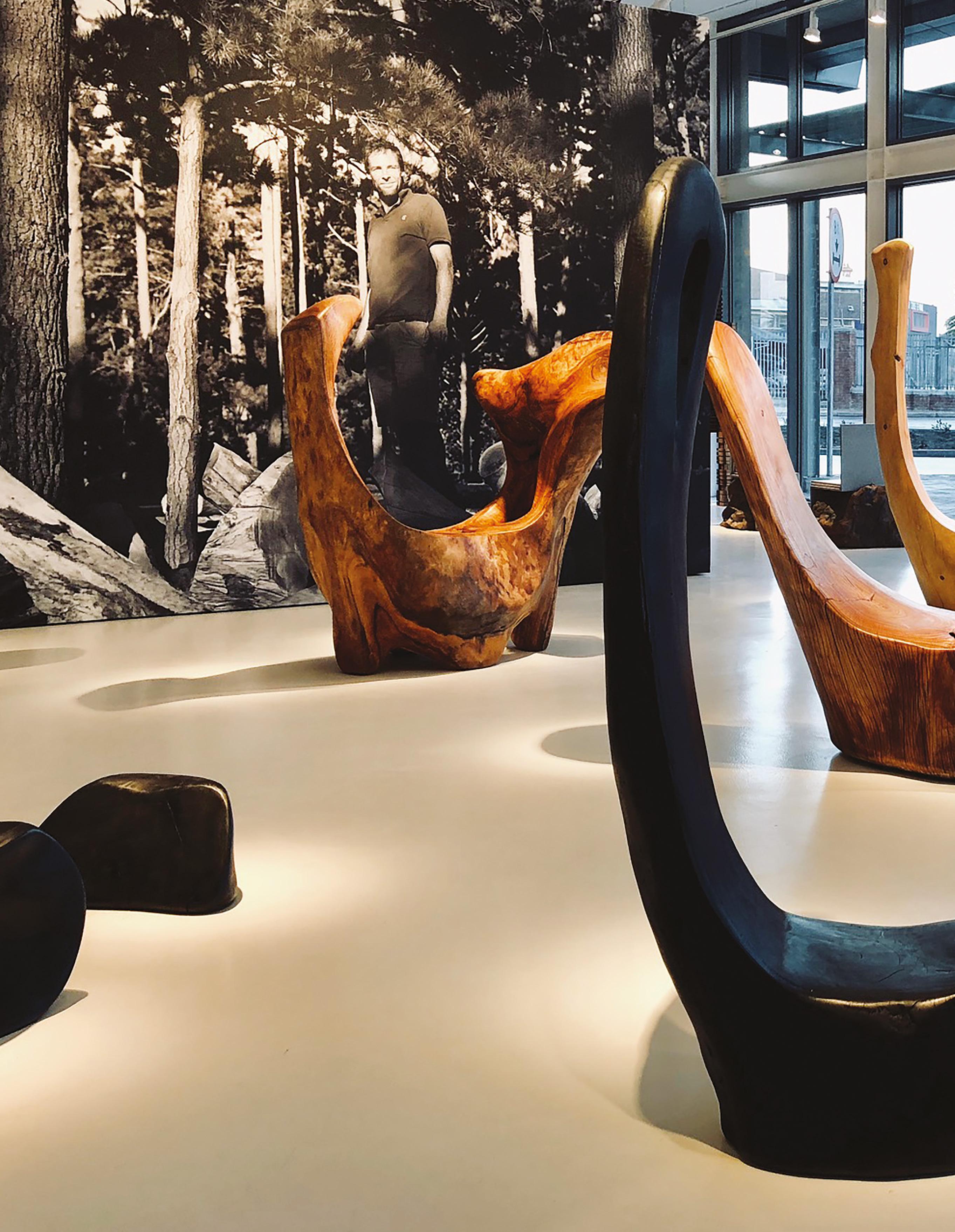
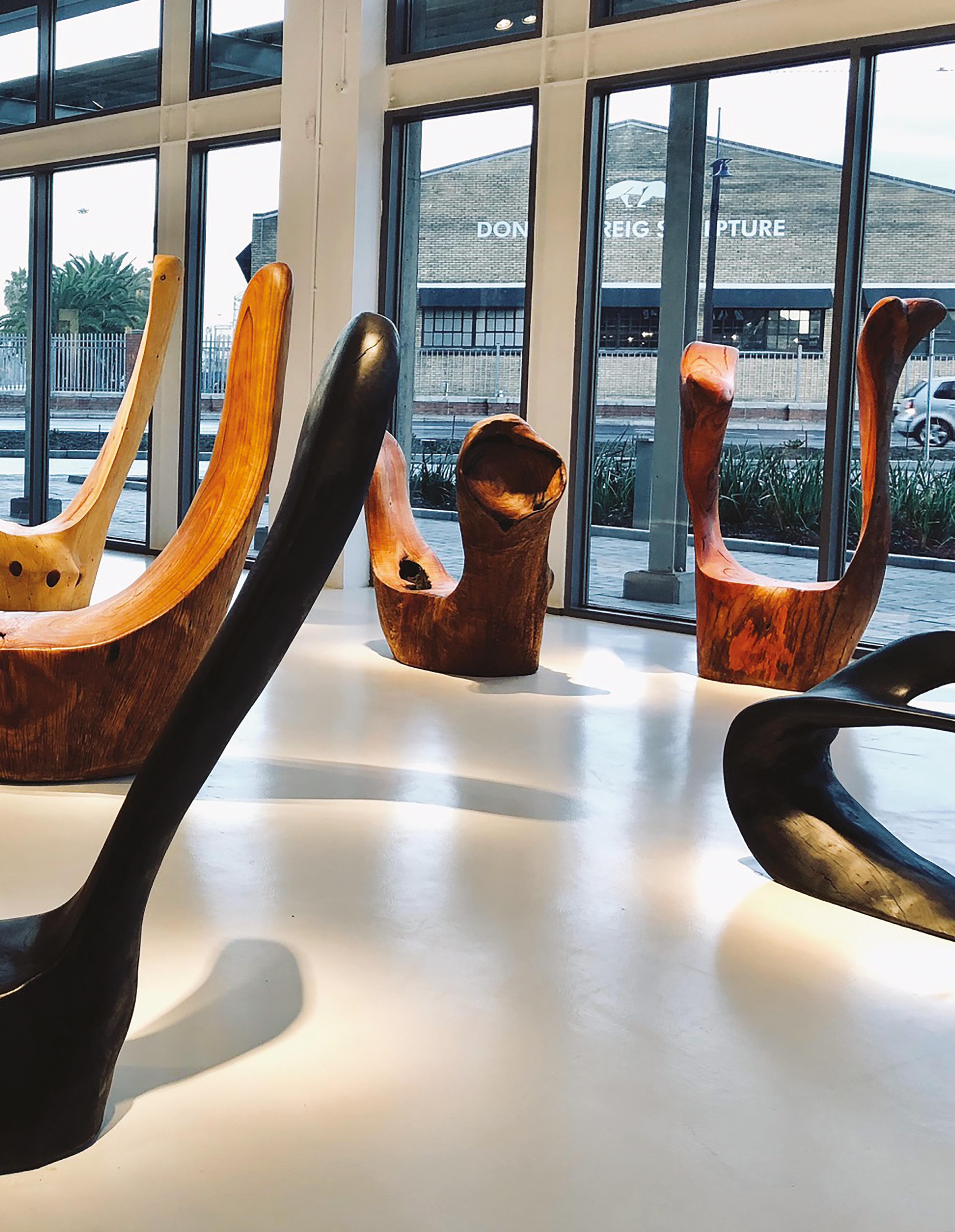
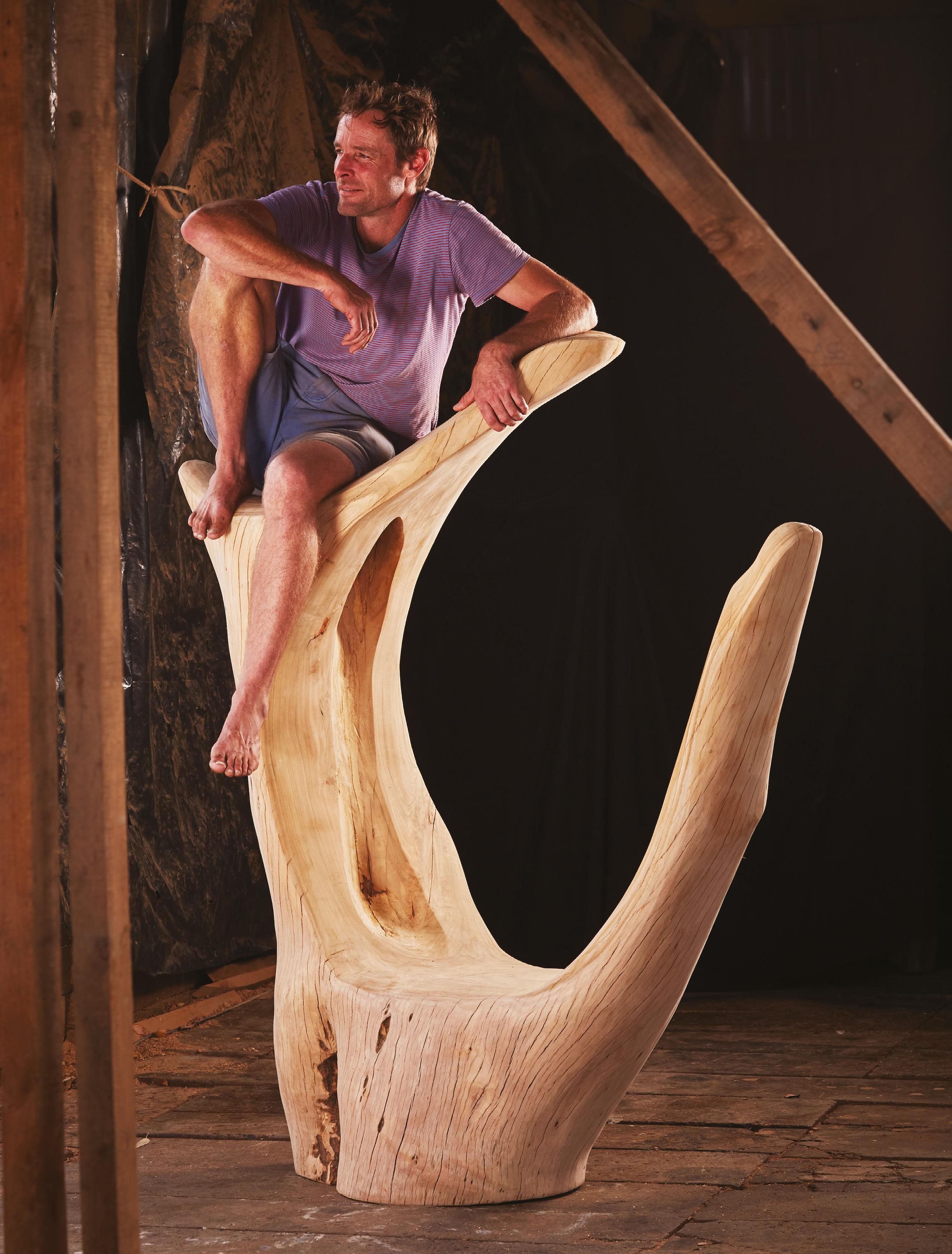
48 Jack Journal Vol. 3
Adam Birch. Photography by Southern Guild/Justin Patrick.
legacy of wood how trees live again
Written by: Melvyn Minnaar Photography: Courtesy of Southern Guild
One of the most powerful statements about the process of art-making is also one of the most vivid: Michelangelo’s description of his job as releasing the angel from a block of marble. It’s a concept that puts a dizzy spin on what drives an artist. The alchemy of media transformed into art.
Locally, the great Shangaan artist-mystic Jackson Mbhazima Hlungwani, who died in 2010, traced the forms of ancestors, of spirits, of God, in the trunks of the trees around him and when those were felled, he brought them to another life, to form.
Adam Birch, self-described as woodsman and sculptor, has defined himself in that matrix – an echo of both the Renaissance master sculptor and the African woodcraftsman of our recent time. It is a calling founded in nature.
The 45-year-old Birch has garnered a wide following that stretches from the
grand lodges of deep Africa to the design expos and studios of first-world cities. It signifies acknowledgement of real and unique talent. When you come face to face with the extraordinary form and shapes of his ‘furniture’, it is the tactile presence of the wood, the pieces’ visual stature in three-dimensional space, that inevitably invite a response of cheer, optimism and wellbeing. It is similar to that shamanic charge, nature speaking up through the hands of a fine crafter.
If both the names ‘Adam’ and ‘Birch’ lead to the forest, the young, farm-raised graphic art student had somewhat of a mission. After completing the fine arts degree at Stellenbosch, the reality of needing a job led to an unusual apprenticeship: tree care and surgery. It was a challenge and adventure, he admits, that set him off. On the eve of his first solo exhibition titled ‘Bifurcation’ three years ago at the esteemed Southern Guild Gallery in Cape Town, he told Wanted magazine how pruning an ancient camphor tree in Kirstenbosch inspired
him. ‘I kept a forked piece of that timber and months later I carved a chair into it, and that was the beginning of a long, happy journey.’
The thrill of working in the giant trees and the power tools suited his spirit of creativity and invention. And the sensitivity of the natural environment was a built-in given. Only naturally fallen, or needed to be felled, trees are taken as his medium.
Sculpture as object in three-dimensional living space was always his creative destination after the arts degree, and in a sense working with trees brings the concept home: the aesthetic of the forest lies in the manner in which trees find their balance in nature – growing in the direction of the light, upright or adapting to circumstances organically in harmony with their surroundings.
The matter of balance is a classic code in sculpture. And so is the awareness of where it is placed or constructed – how it features in the three-dimensional space in which it finds itself.
That line leads directly to the objects
49
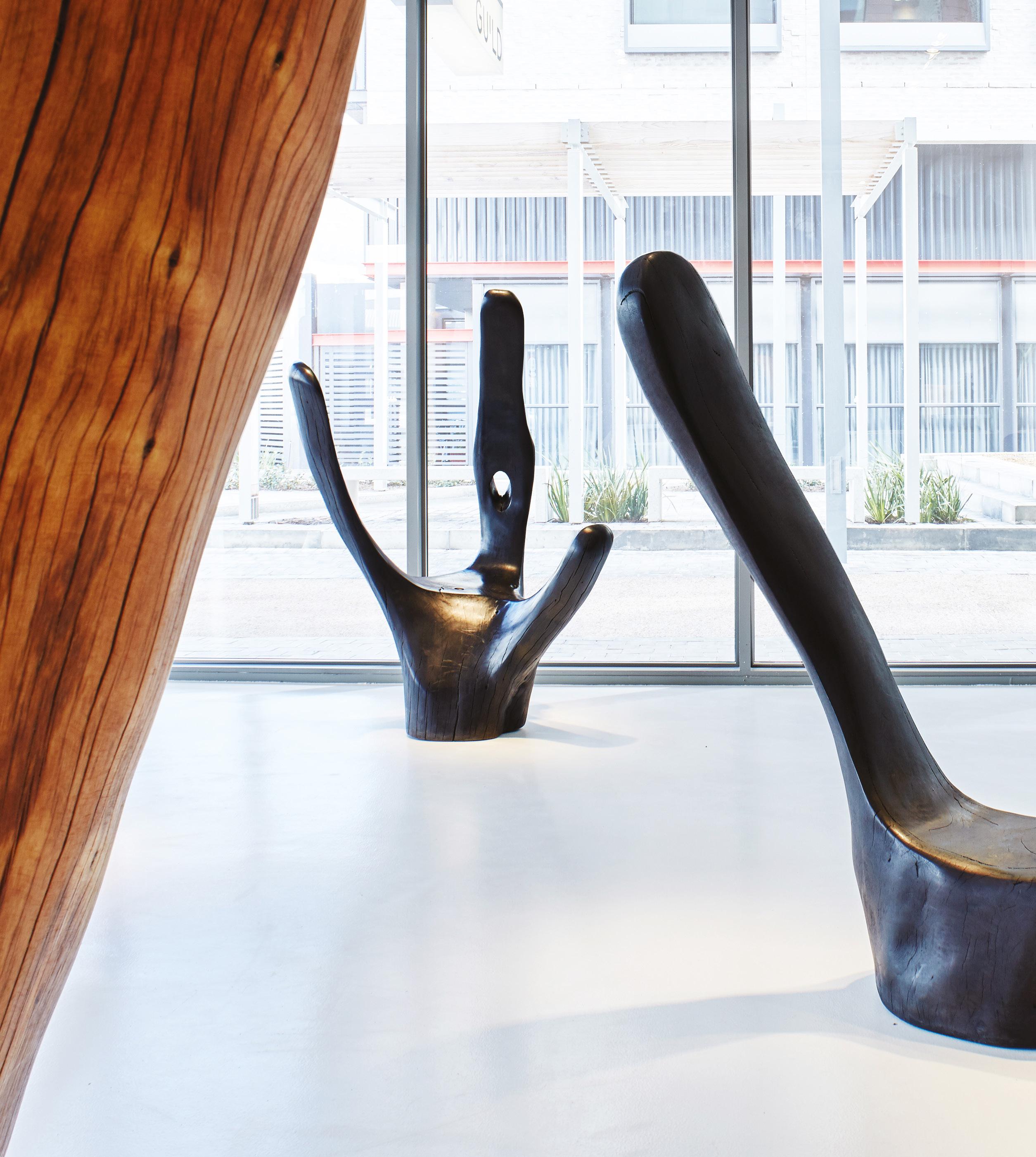
50 Jack Journal Vol. 3
Photography by Southern Guild/Justin Patrick.
Birch crafts. A seat, say, carved from whatever piece of a tree he had identified, must fulfil a function to succeed at his intention. It needs to be balanced for comfort, despite or perhaps because of its shape. It requires a fine sense of inventive poise.
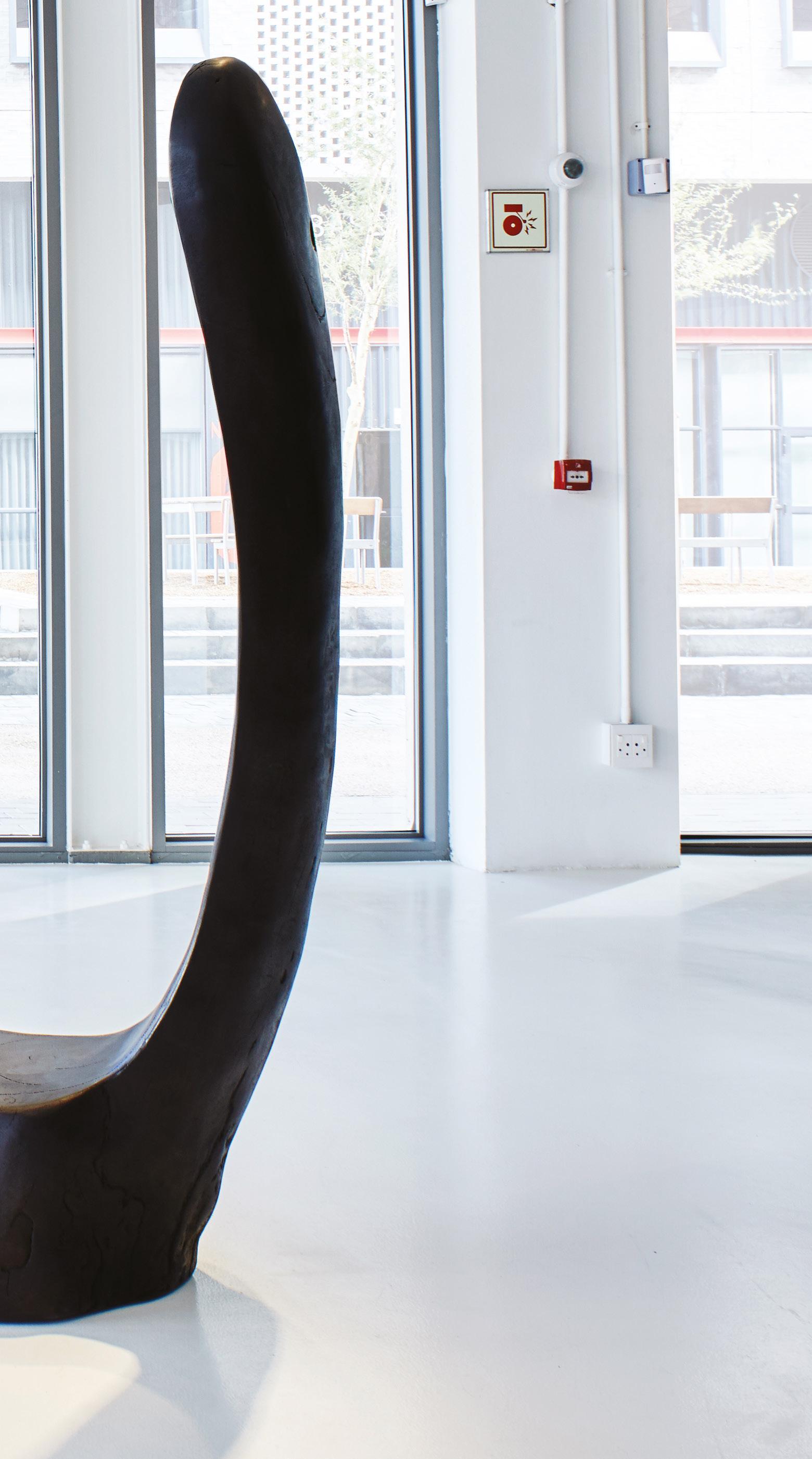
Yet if the woodsman succeeds as welladmired sculptor – as he is – the root of that achievement is constantly traced back to the origin: the once living tree, no longer anchored to the earth, but destined for a new life and a carrier of all its history, the energy of its growth, and thus mystery.

Bruce Jack, who acquired Adam Birch’s first sculptured chair, hewn from blue gum wood, is drawn to that individuality. ‘I think his pieces have a sort of energy that is unusual, unlike sculpture made from other materials – as though the tree has been given a second life through the considered handling and care of creating.’
The ‘second life’ is a key concept in what we could call the legacy of timber, and it could be quite practical – such as the ‘furniture’ that Birch carves – or like the magnificent ancestral thrones that Jackson Hlungwani made. (Much admired by Birch, the splendid overview of Hlungwani’s art, ‘Alt and Omega’, is on view at the Norval Foundation until January 2022.)
Like Hlungwani did, Birch delves deep into the timber heart of Africa. In his creative process many local craftspeople are drawn in.
He recently spent eight months working at the Xigera Safari Lodge in Botswana’s Okavango Delta, producing custom articles. Among these is an eye-catcher like the ‘Swept Server’ created from Eucalyptus cladocalyx. An elegant, simple and functional piece, yet it makes a powerful statement about that second life. Indeed a legacy relived, alive among us.
51
Southern Guild
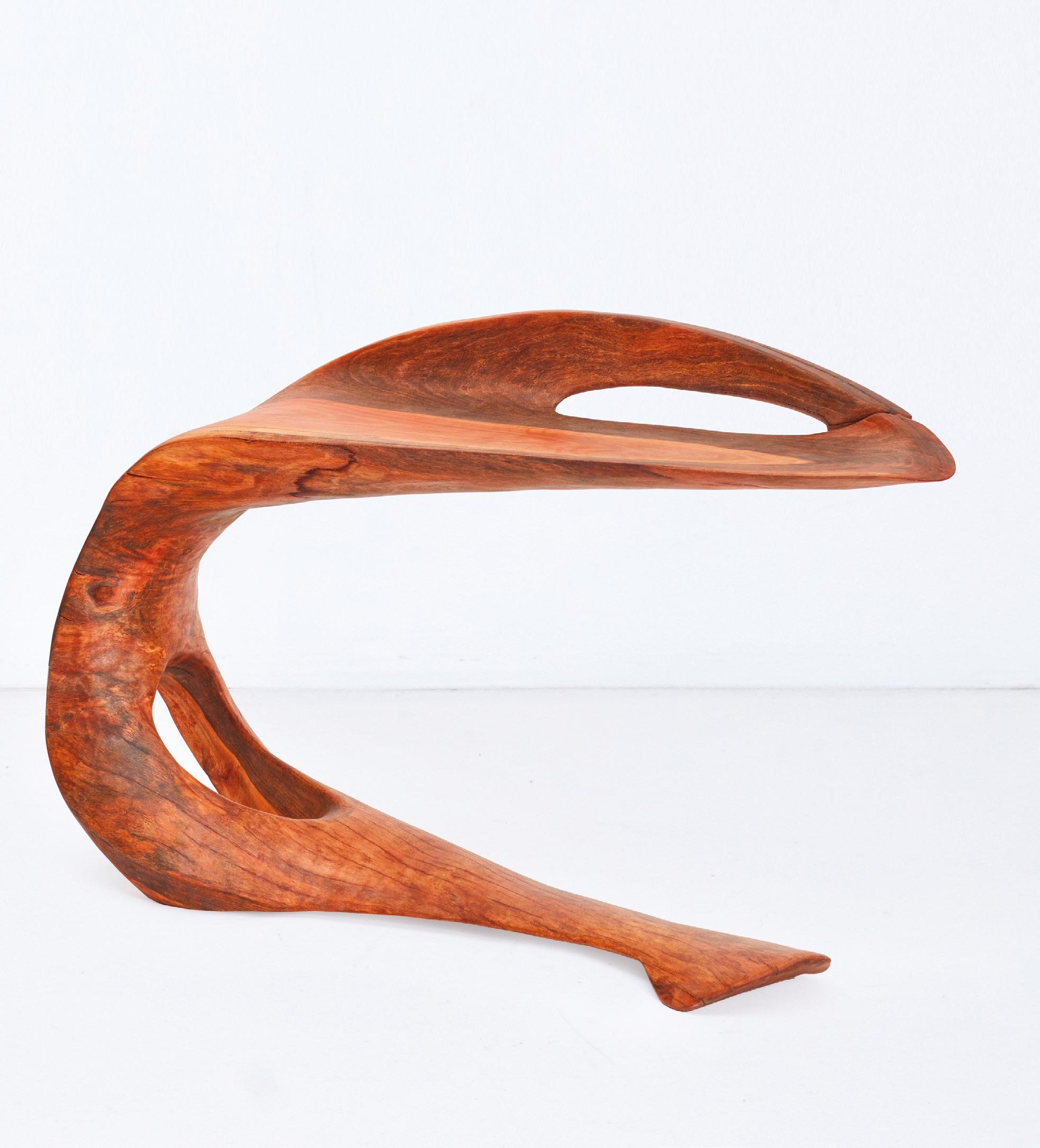
52 Jack Journal Vol. 3
Swept Server. Eucalyptus cladocalyx. Photography by Southern Guild/Hayden Phipps.
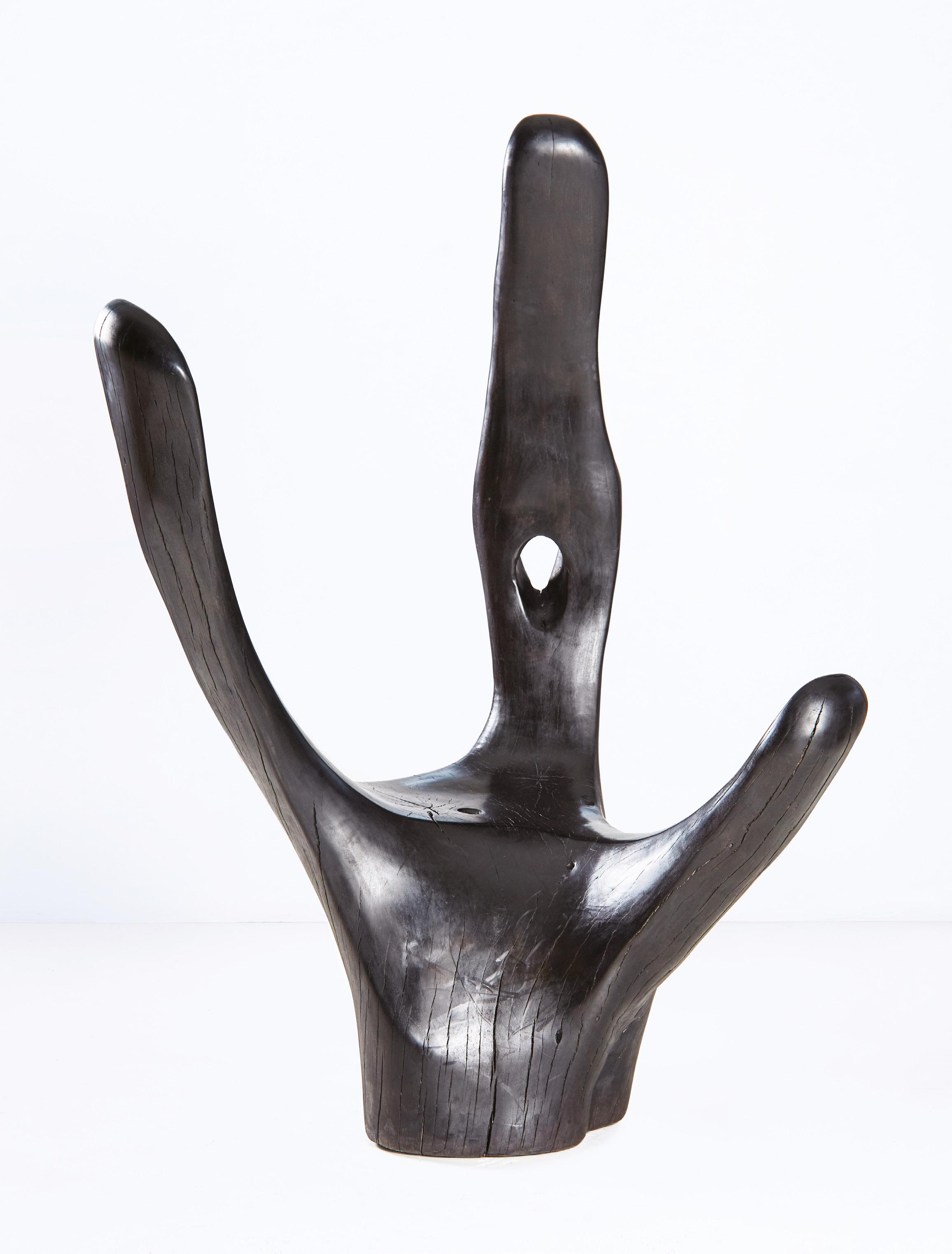
53
Voodoo 2. Eucalyptus cladocalyx. Photography by Southern Guild/Adriaan Louw.

54 Jack Journal Vol. 3
Untitled. Eucalyptus cladocalyx.
it’s still a tree by bruce jack
I met Adam through my parents who had construed a complex deal – involving a mobile mill, free board, lodging and much wine … etc. – with Adam to chop down trees on our family farm and mill them into timber. He did a great job, charmed my mom, and we have put the timber to good use. Then, in 2006, my wife invited Adam to exhibit his side-line business – his extraordinary furniture/sculpture, at an exhibition she immaculately curated called BIARA. Since undergraduate days at Stellenbosch University, every artist in whom she has seen potential has gone stellar. There were, of course, many times when we lacked the resources to buy a piece of art from an artist whose burgeoning genius she recognised, and BIARA gave her an opportunity to collect together, in one exhilarating exhibition, many of the future stars. Adam was one.
Towards the very end of the opening night, I found myself chatting to Adam – he was puffing energetically away at a ciggie (perhaps somewhat unnerved, not having sold anything yet) and I was sipping energetically away at a Shiraz (half relieved I had not bought anything, and half concerned this was a once-in-a-lifetime opportunity). I was sitting on one of his pieces of furniture/sculpture and he was standing a few feet away, half in the veranda light, on a perfect spring evening, with a brooding Table Mountain eavesdropping over his shoulder. We were the stragglers.
‘It’s clearly a chair, buddy. Why pretend it’s a piece of sculpture?’ I goaded.
‘Well, if you are buying it, it’s what you want it to be, I guess,’ said Adam.
‘I love this chair, bud, but I can’t afford it,’ I said truthfully. ‘I am a winemaker, not one of those private equity chaps …’

We both scanned the inside rooms looking for personally cut, expensive suits. It didn’t look hopeful.
‘You must see it’s more than a chair, Bruce,’ and there was a serious look in his eyes. He continued after a pause: ‘And I have not really made it. No, I was only a small part of making it. The tree was already made.’
‘You okes trying to be philosopher artists!’ I dismissed him with a sneer. ‘It’s a chair, buddy. I am sitting on it. It’s a chair.’ I paused. ‘Okay, it’s a particularly beautiful chair, but don’t push that arty stuff too much.’
Adam took a long drag and smiled. ‘It’s still a tree,’ he said.
I thought about this, and I believe the Shiraz helped me ponder. I could hear people clearing up the glasses in the gallery. ‘Which is better than a throne or a sculpture,’ I eventually agreed.
‘Yip,’ he said through his smile and then, comforted by the knowledge he had landed a customer, went in search of more Shiraz so that we could celebrate.
And that’s how I came to buy the first Adam Birch sculpture/ chair/throne/… tree he ever sold.
Now it’s fun to think we own something that will be worth many bitcoins, or dollars … or whatever people will measure financial exchange with in the future, and that’s a nice testament to my wife’s genius. However, my satisfaction comes from knowing that our precious everydays are made more rewarding by something so beautiful in our place of shelter – not just because it looks cool, but because it has been transformed in such a sensitive way –a way that will always reflect the mystical strength, magical beauty and awe-inspiring majesty of a tree. I get daily happiness from that. This is not just timber repurposed. This is something special.
Many years later, Adam heard about our HeadStart Trust and called me up and offered to visit the farm with his crack tree-felling team once again and work for a week, felling fire-damaged pines along our mountain boundary and tidying up hero trees around the homestead – FOR FREE. This team is the SWAT team of arborists – and they don’t come cheap. The deal was that the money we would have paid for this difficult and often dangerous technical work must be donated to HeadStart Trust, and that any extra firewood produced as a by-product must be donated to the local Napier community (our nearest village) in winter for much needed fuel. We have done so in his name.
55
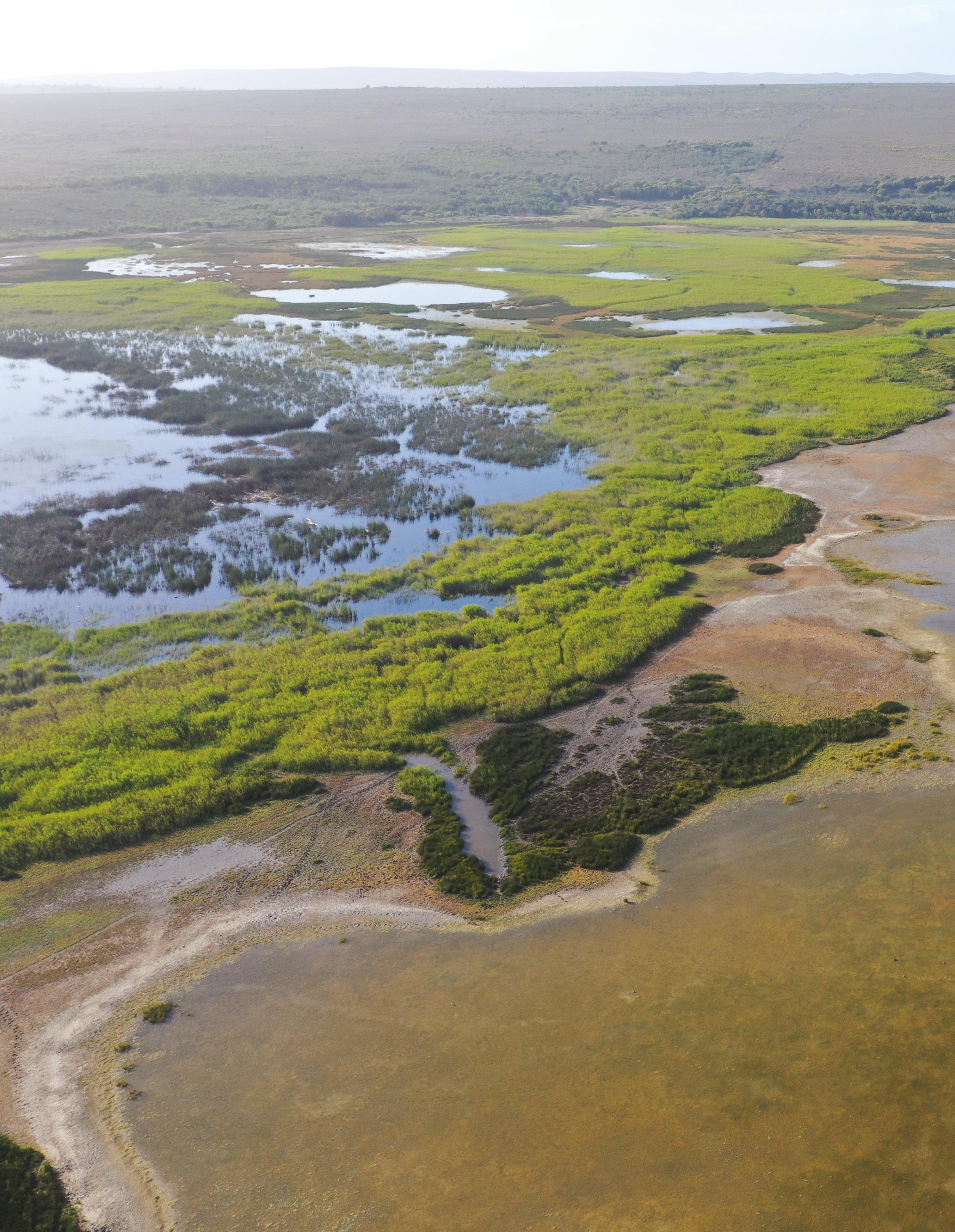 Aerial view of the Nuwejaars Wetlands. Photography by Dirk Human.
Aerial view of the Nuwejaars Wetlands. Photography by Dirk Human.
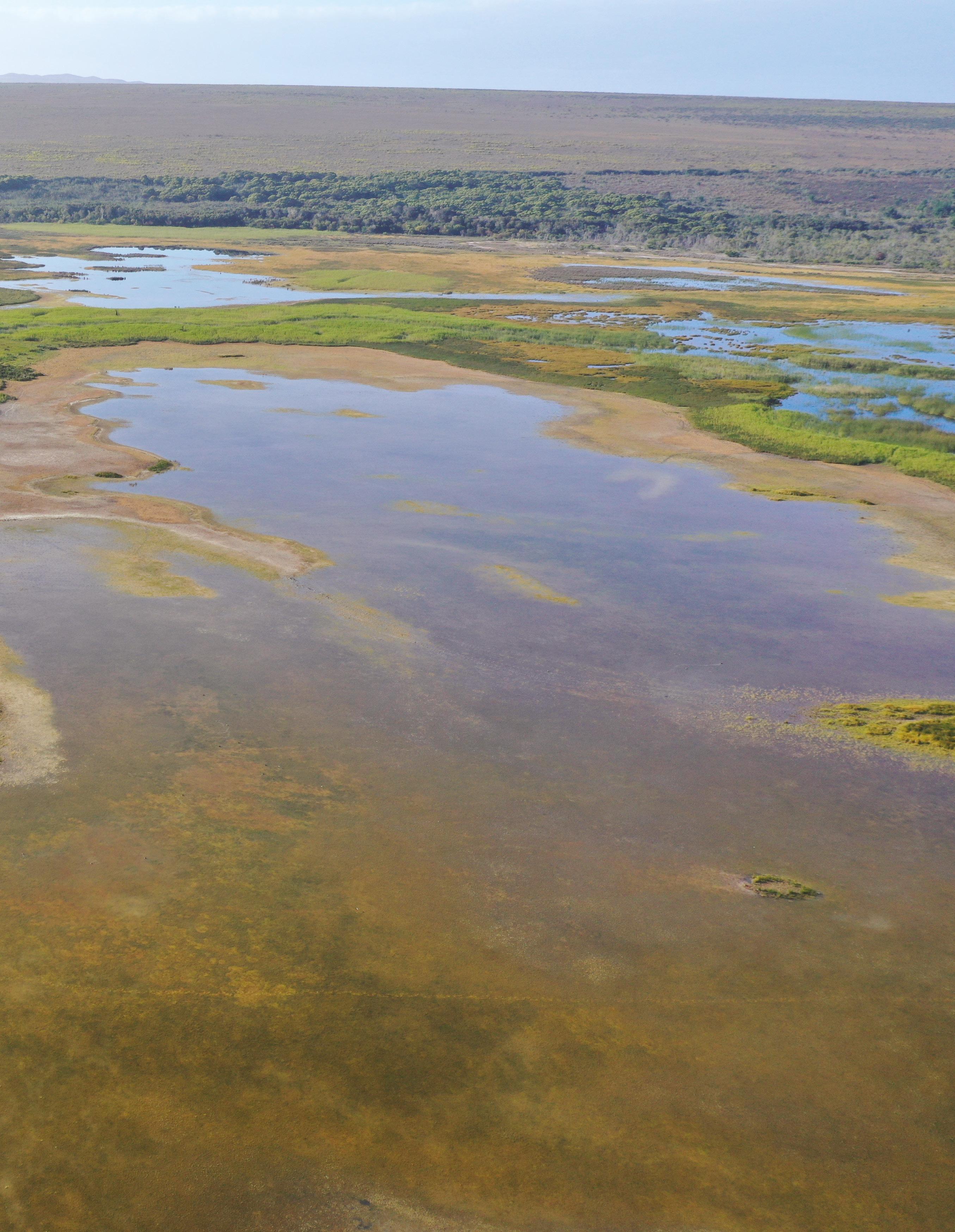
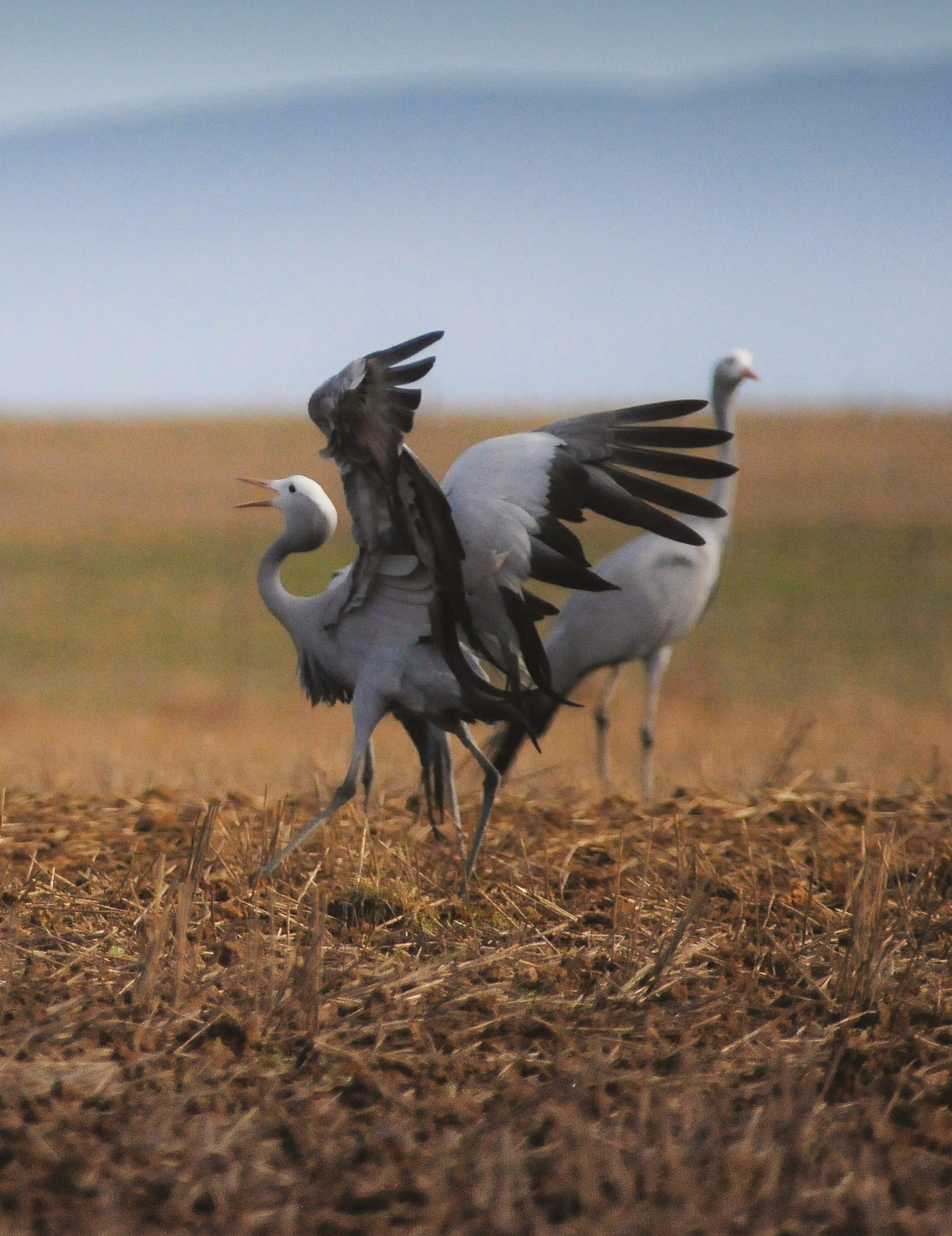
58 Jack Journal Vol. 3
Blue Crane, the national bird of South Africa, thrives in the farmlands of the NWSMA. Photography by Fraser Crighton.
for nature and for the people: conservation with a difference
Written by: Heather D’Alton
‘The Strandveld just smells different; I love the smell –of the flowers in the vlei, of the rain when it touches the dry ground, of the animals in the veld. Over the mountain from us, it’s barren in summer. But there’s always life in the Strandveld.’
For Dirk Human, founder of the Black Oystercatcher Wine Farm, and one of the founding members of the Nuwejaars Wetlands Special Management Area, there’s nowhere else he would rather live. Dirk is the fourth generation in his family to be born and raised in the Strandveld, close to Africa’s southernmost tip. His farm is nestled between a series of intricate wetlands and rivers, a haven for wildlife and plants.
It’s not only Dirk who recognises the value of this region. These wetlands and lakes, known as the Nuwejaars Wetlands, have been called ‘highly irreplaceable’ by conservation experts. The wetlands provide water to those living downstream. They
support a natural world that is critically threatened, including fynbos and renosterveld. And they’re home to frogs, mammals and birds found nowhere else in the world.
In fact, this farming area is in the heart of a conservation estate, with Agulhas National Park situated just to the south, and De Mond Nature Reserve to the east.
Dirk says: ‘We saw this landscape in which we live, and said we wanted to take it back to its natural state.’ That’s one of the reasons that Dirk and a number of farmers in the area first met up in the late 1990s, to see how they could work together to protect it. This was the start of the Nuwejaars Wetlands Special Management Area, or NWSMA.
Now, more than two decades later, around 47,000 hectares are protected forever through signed title deed restrictions, with 25 landowners and the Moravian missionary town of Elim together conserving the region. They employ a team of conservationists who work across the landscape. Game that became locally extinct in past centuries has been reintroduced. Agricultural areas are fenced out, and animals and plants can move
between farms in conservation corridors. And through funding support from WWF South Africa, the Hans Hoheisen Charitable Trust, and the Overberg District Municipality, wetlands are being cleared of invasive species and rehabilitated, and ongoing research and monitoring informs their conservation activities.
Still, this is a conservation area with a difference. Dirk, who is also the Chair of the NWSMA, says: ‘Farmers continue to farm here. You can’t split agriculture and conservation in our area – we’re both. Through our farming, we produce food. And at the same time, our biodiversity works for us.’
Other wine farmers here agree. Strandveld Vineyards and The Berrio are also members of the NWSMA. All the wineries here benefit from the Strandveld’s cool climate, with the cool ocean winds easily reaching the vineyards, keeping the grapes compact and packed with flavour. This terroir may well have contributed to these wineries becoming multi-award winners. Strandveld’s 2017 First Sighting is a Platinum Medal winner, with 97 points at the Decanter
59
Hippo have been reintroduced after being hunted to extinction locally around 150 years ago.
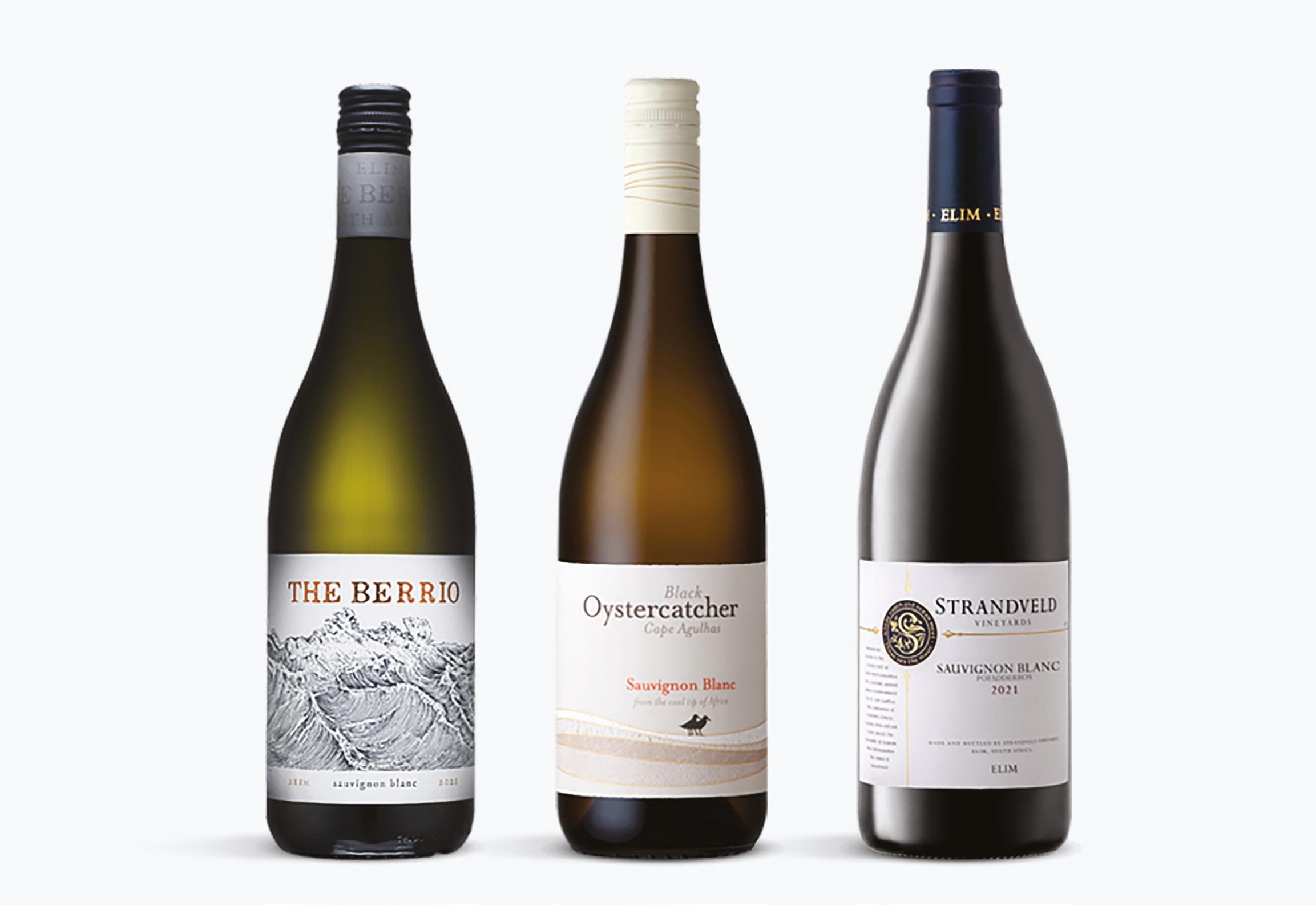
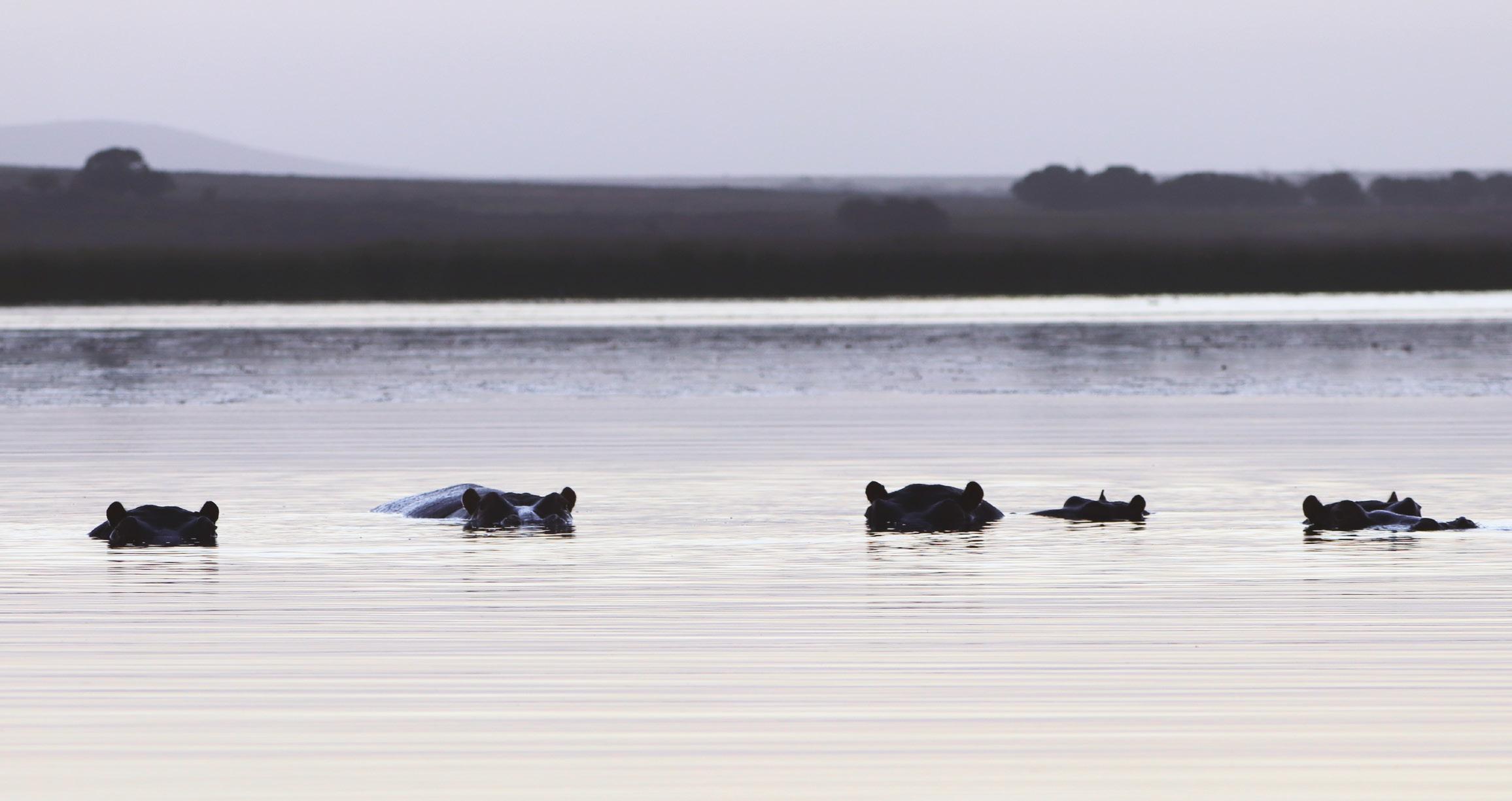 Photography by Elizabeth Knobel.
Photography by Elizabeth Knobel.
60 Jack Journal Vol. 3
The Berrio, Black Oystercatcher and Strandveld Vineyards are all members of the NWSMA, and form part of the Agulhas Wine Triangle.
World Wine Awards. Their Pofadderbos Sauvignon Blanc has been awarded five stars in Platter’s Wine Guide on several occasions. And The Berrio Sauvignon Blanc 2006 was recently awarded the Best of the Museum Class Trophy at the 2021 Old Mutual Trophy Wine Show.
For Conrad Vlok, winemaker at Strandveld Vineyards, becoming an NWSMA member was a no-brainer. ‘I’m a nature lover. From the start we wanted to farm in a way that was as green as possible. We have never sprayed our vineyards to kill insects, because our birds do that for us. So it simply made sense to become a member. Of course, many evenings drinking whisky with Dirk also contributed.’
Francis Pratt is the co-owner of The Berrio brand with Bruce Jack. Francis bought his farm in 1994, and along with Dirk, Conrad and others, is one of the pioneering wine farmers here. Growing up in Swellendam, a strong agricultural hub, he had a different take on farming when he first arrived in the Strandveld. But farming in this conservation area changed the way he experiences nature – to the point that Francis now serves on the Executive Board of the NWSMA. ‘In other parts of the Overberg, farmers often plough right up to the river, and when you do, you’re seen as being a good farmer. But those guys have no respect for nature,’ he says.
‘Being part of the NWSMA has played a big part in making me more aware –to really experience the wetlands, and to see everything that lives in these wetlands.’
And there’s good reason to be excited about the creatures that live here. A stunning discovery recently created a buzz among amphibian conservationists, when a subpopulation of the Critically Endangered Micro Frog was found in these wetlands. That makes it only the fifth subpopulation of this tiny frog (no bigger than a person’s thumbnail) left in the world. Other populations have all but disappeared as their habitat is lost to urbanisation and agriculture.
Conrad says it’s discoveries like these that give this wine route, known as the Agulhas Wine Triangle, its unique character. ‘The NWSMA’s research, where we’re finding Micro Frogs, and finding out more about Cape Leopards, offers a great tourism spin-off. We now have a wonderful story



to tell of the conservation benefits here –and people like to hear about these good news stories.’
Dirk says this model of conservation – where agriculture and conservation work in tandem – is the only viable option here, in a world where farmers must provide food using productive lands, without transforming any more natural areas. ‘The only way to conserve effectively is to do it at scale, across farms, with farmers working together.’

That’s easier said than done, however. Farmers are known to mind their own business. But that’s again where the Strandveld’s uniqueness comes into play. According to Dirk, ‘I love the nature of this area. But it’s also the people who make this area special. We’ve suffered together here, so we’re closer as a result.’
Francis can’t quite let his neighbour’s comment pass. He quips at Dirk with a laugh: ‘Well, I’m definitely a little “gatvol” of you!’
But in the Strandveld, this captures just how easily farmers get on. Dirk is undeterred. ‘That’s why we work so well together, and why, through the NWSMA, we can determine our own destiny.’
61
I’m a nature lover. From the start we wanted to farm in a way that was as green as possible. We have never sprayed our vineyards to kill insects, because our birds do that for us.
NWSMA
Strandveld Vineyards
The Berrio Wines
Black Oystercatcher Wines
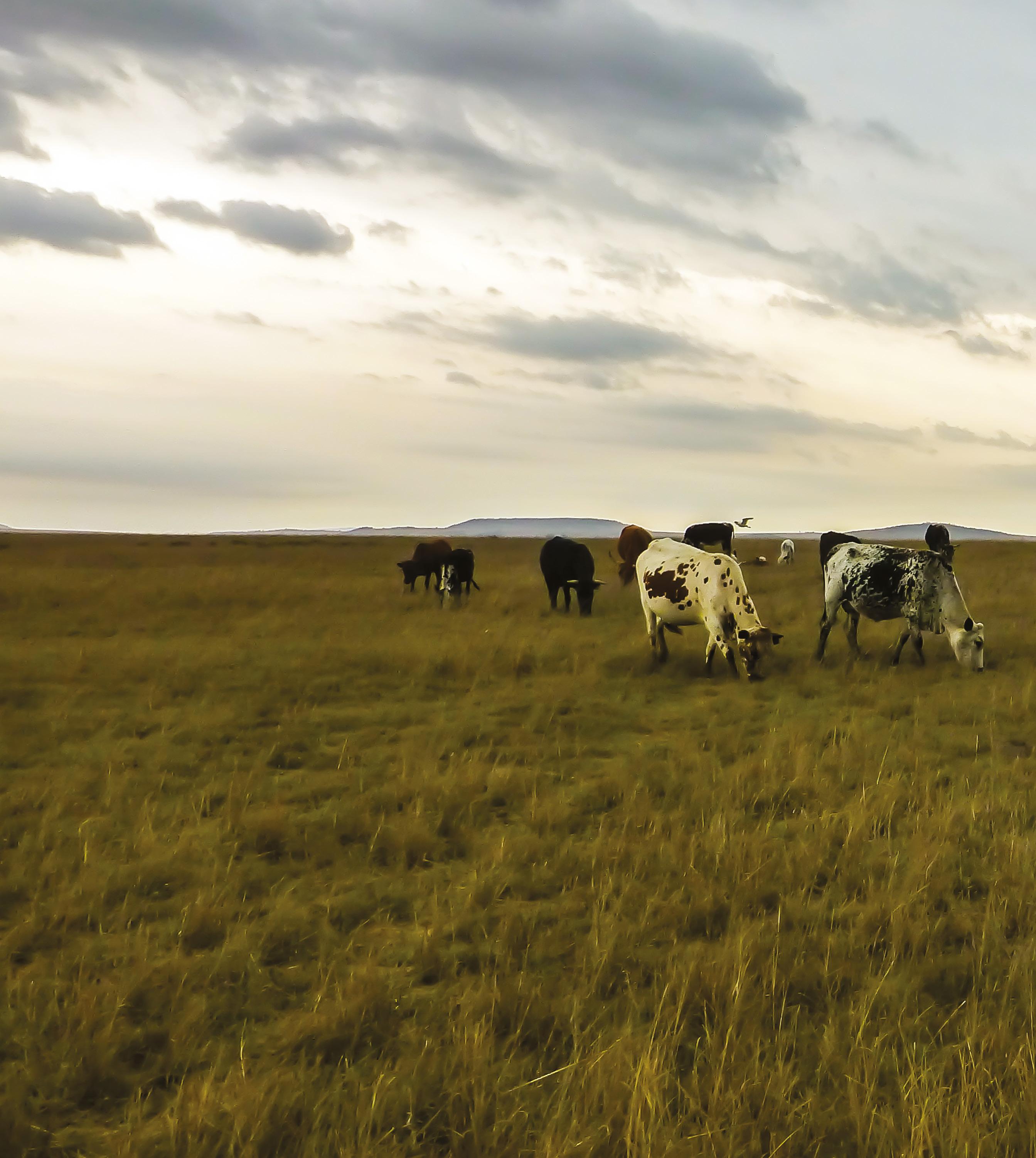
62 Jack Journal Vol. 3
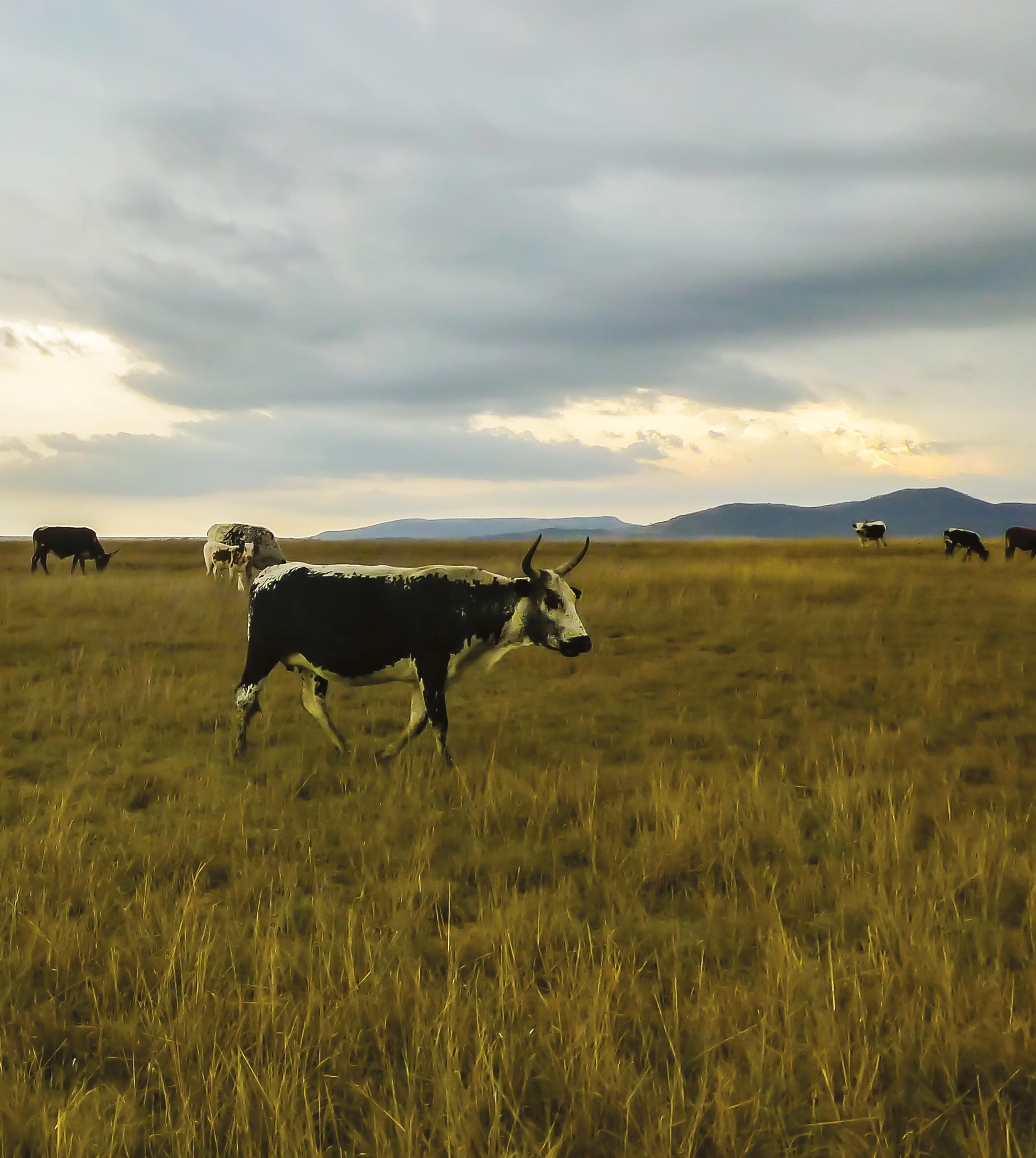 Nguni herd grazing near Dundee, KZN. Drought and coal mines have left cattle in this area increasingly bereft of water. 63
Nguni herd grazing near Dundee, KZN. Drought and coal mines have left cattle in this area increasingly bereft of water. 63
Nguni wander contentedly near Nieu-Bethesda in the Eastern Cape. Their owner practises holistic planned grazing to build the soil.
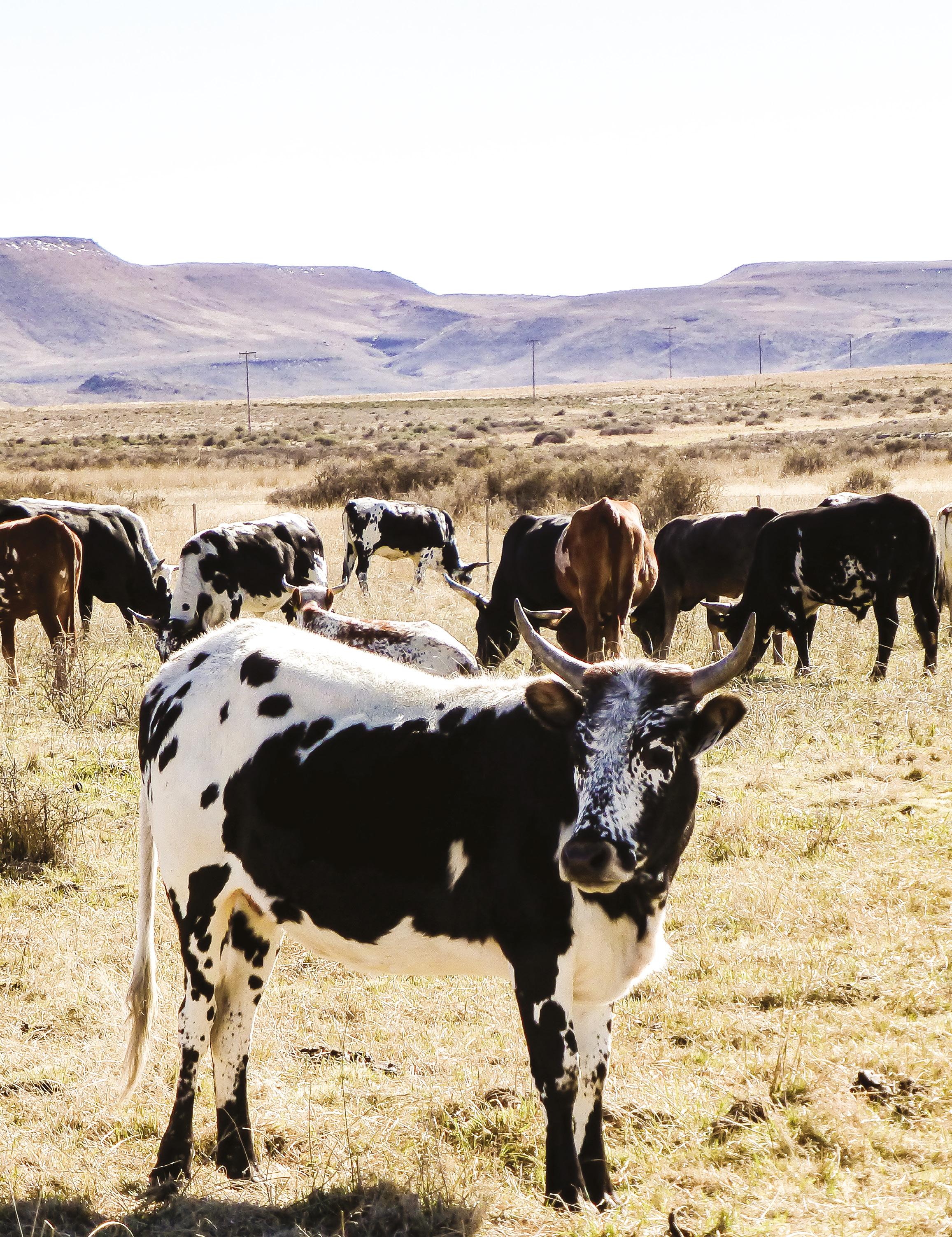
64 Jack Journal Vol. 3
nguni cattle – a gentle african treasure
Written by: Gregory Mthembu-Salter Photography: Gregory Mthembu-Salter Illustrations: Leigh Voigt
Fifty years ago, the Nguni breed looked as if it might be dying. Across South Africa, and in neighbouring Lesotho and Eswatini too, there seemed to be fewer and fewer of these trim, modestly framed and mild-mannered cattle, with their wonderful, distinctive hides.
Commercial farmers and abattoirs had little respect for Nguni, because of the low volumes of meat and milk the cattle yield, and even in the herds of subsistence farmers, Nguni were becoming increasingly mixed with other breeds. Eswatini’s late king, Sobhuza II, noticed this with rising concern and eventually asked Tim and Liz Reilly –who, famously, also established the country’s national parks – to identify and preserve remaining pure Nguni, assigning them several members of his royal court to assist.
The Reillys came with an attractive offer – two mixed-breed cattle for every one Nguni – and had soon purchased 20 cattle. The couple immediately liked them, at first for the cows’ beauty, but later when they saw how capable they were of fending for themselves, how alert and intelligent they were, and how sociable. The Reillys went on to acquire a larger and larger Nguni herd, and in 1981 formally applied to the South African Stud Book Society to have Nguni cattle recognised as a breed. The application was approved in 1983. In 1986, the Reillys founded the Nguni Cattle Breeders’ Society, which remains active today.
In this Anthropocene era of climate breakdown and global heating, the benefit, and indeed the blessing, of an indigenous cattle breed that can more or less cope – so far – with both is much more obvious than it was back in the 1970s and 1980s. But the antipathy of abattoirs to Ngunis because of their compact size, and because they do
not fatten up as much as other cattle when stuffed with maize, molasses, and hormones in feedlots, endures.
As a result, there are still commercial farmers out there who want to bulk up and to ‘improve’ the Nguni. One such attempt is the PinZ²yl. The PinZ²yl has been bred by the Van Zyl family on their huge ZZ2 farm in Mooketsi, Limpopo Province (which is otherwise famed for its tomatoes), and is a cross between Nguni and the Pinzgauer, a much larger-framed breed that hails from Austria. A farm manager there once assured me that the PinZ²yl has retained all the best qualities of a pure-bred Nguni while at the same time inheriting the Pinzgauer’s bigger frame. Perhaps he was right. But the Nguni has been slowly evolving as a breed for many hundreds of years, and the idea that you can make the cow significantly larger now without upsetting any of the subtle, delicate balance in the breed that has gradually emerged over all this time
65
Nguni cattle are described and classified according to perception of what the colour and markings resemble or signify. The Zulu descriptions are rich in imagery and metaphor that often relate to the natural surroundings.
Thuthu u(lu)thuthu [hot ashes]. Ash-grey coloured beast.
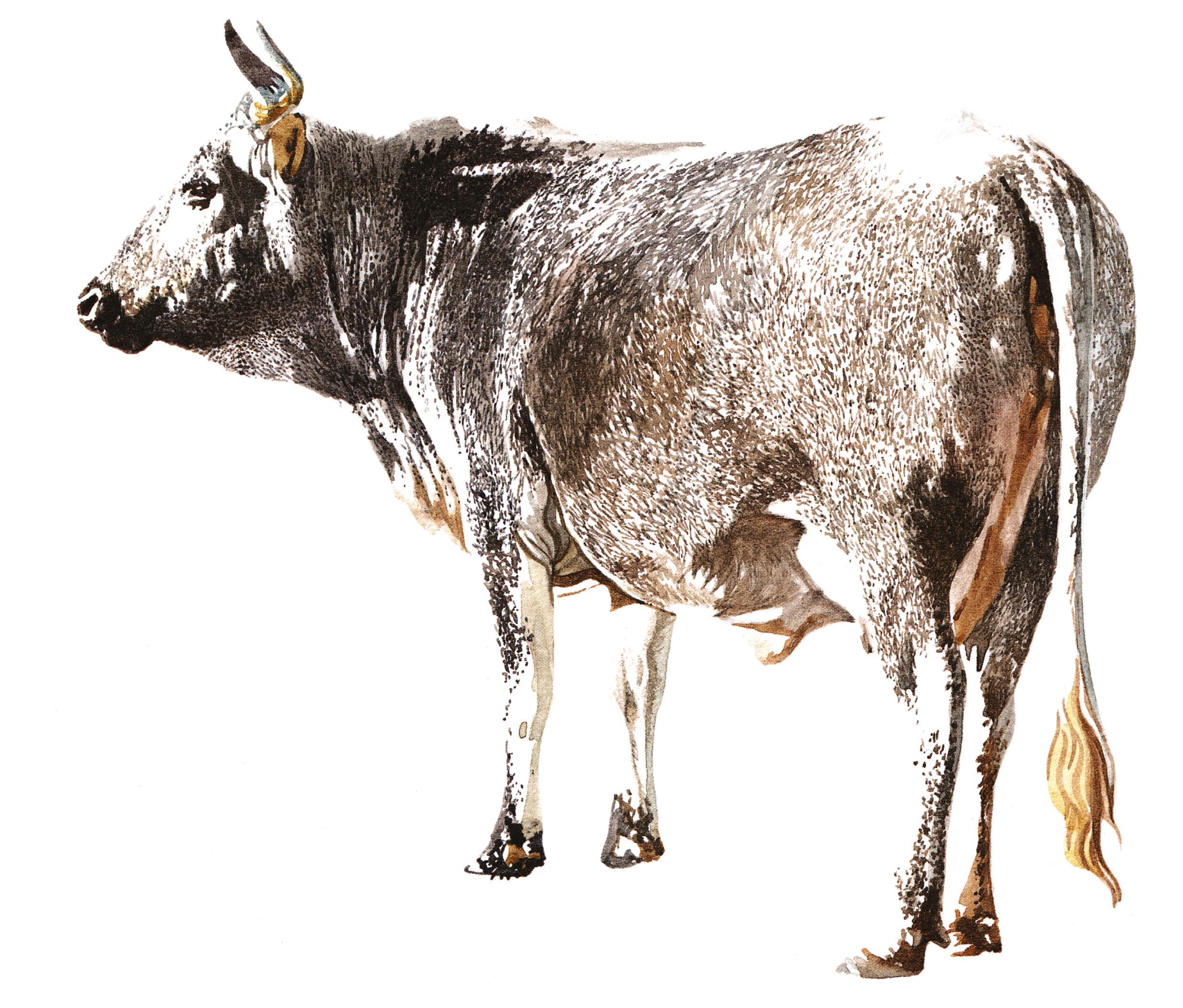
66 Jack Journal Vol. 3
The one-horned cow that has drunk the dregs of beer.
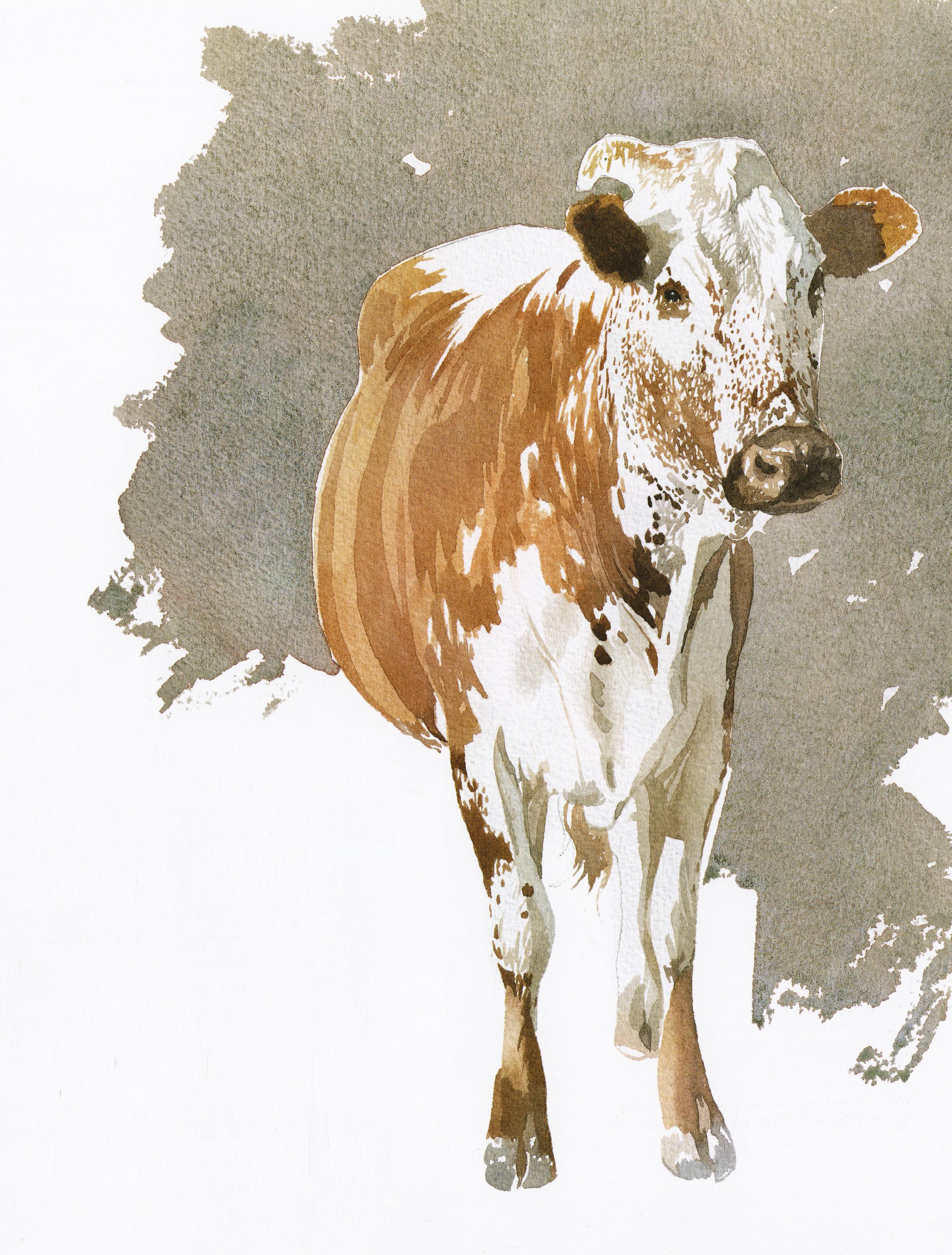
67
Bafazibewela inkomo [the beast] ebafazi [which is the women] bewela [crossing over]. This colour pattern brings to mind an image of a woman lifting her skirt to wade into water.
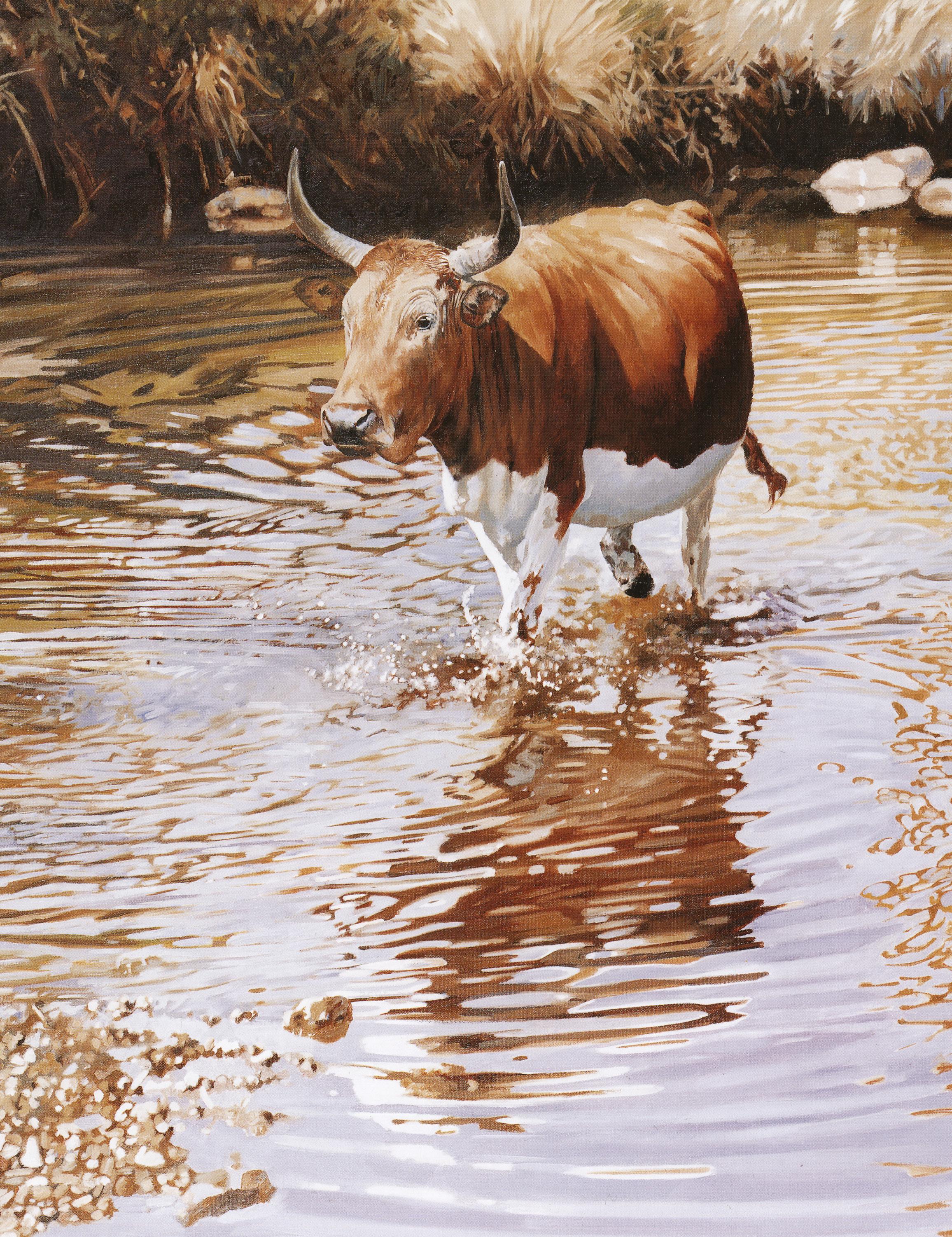
68 Jack Journal Vol. 3
seems, well, far-fetched.
Unlike most European breeds of cattle, Nguni have never historically been bred to provide lots of meat or milk. Instead, African livestock farmers over the ages have been content to accept whatever progeny their cattle deliver without trying to influence the result. Going further, many perceive communications from their family ancestors in the shape of their new-born calves’ horns and the colour of their hides. Indeed, this is but a small part of the myriad connections that these livestock farmers perceive between themselves, their ancestors and their cattle.
One farmer living in Zululand I spoke to explained it this way:


Our cattle bring our family together. Both when they are alive and when we slaughter them. It brings harmony to us. Everyone has a role in the ceremonies, and when everyone comes to celebrate, it makes the occasion important and brings joy.
Another told me:
When a problem comes up in our household, cattle can be part of the solution. If our sons are to marry, we can use our cattle to pay lobola (dowry). Or if we slaughter and have a ceremony, there will be a hierarchical order to proceedings that helps our household.
This last comment was a reference to the way that ritual can ease the tensions that so often arise between wives in polygamous households. Properly managed, a cattle slaughtering ceremony can help cool the heat by reinforcing the hierarchies both between the living, and between the living and the dead.
When I asked another Zululand farmer what cattle meant to him, he summoned a young boy and asked him to fetch something from his rondavel. The boy returned with a full set of Zulu regalia. As he calmly replaced his trousers and shirt with these clothes, the man explained: Cattle are part of our lives. When we die, our bodies are wrapped in a cow’s hide. And when we live, we wear their hides, connecting us to our cattle and our ancestors. That is how things used to be, at least. Everything we had came from the world around us.
The benign result of all these centuries of deliberate and loving non-breeding is that today’s Nguni are well-balanced and
adaptable all-rounders that browse as well as graze, and resist not only drought but also ticks and all manner of diseases that can fell imported breeds.
Kevin Watermeyer farms Nguni cattle in the foothills of the Sneeuberg Mountains in the Eastern Cape. In the early 19th century, the white farmers who took this land from the Xhosa shot out almost all the indigenous fauna so that they could farm sheep. The sheep are still there, but on his farm, Watermeyer has opted to buck the trend. Watermeyer was unimpressed by attempts to bulk up the Nguni, telling me that we needed to stop thinking that bigger is always better, and obsessing about the bone/meat ratios of our cattle:
Look at the rhebok, the kudu, the steenbok … they all have compact rumps. It fits with the nutritional inputs we have available to us in this part of the world.Yet South African breeders are breeding cattle with massive rumps. That is the opposite of nature. Ngunis have the same compact frames as game animals. They fit what nature has made available here.
Watermeyer told me he believed that farmed correctly, Nguni cattle could also play a key role in rescuing South Africa’s much-degraded soils, and in sequestering much of the carbon emissions currently plaguing our planet. A keen adherent of Zimbabwean ecologist Allan Savory’s Holistic Planned Grazing (HPG) farming philosophy, Watermeyer keeps his Nguni moving from one paddock to another, in a bid to prevent his herd from overgrazing anywhere, ensuring that his fields are well manured and trampled, and by so doing building the richness of the soil.
Savory says he has calculated that if all cattle farmers farmed this way, and if there were many more cattle, it would be possible to sequester 500 billion tonnes of carbon dioxide in 40 years, which would take carbon dioxide levels down to where they were before the industrial revolution. Others are more sceptical, with the University of Oxford’s Food Climate Research Network (FCRN), for example, agreeing with Savory that changing the way we farm can sequester more carbon in the soil, but arguing that even with everyone farming à la HPG, it is ‘vanishingly unlikely’ that the soil could absorb nearly as much carbon as Savory thinks. The FCRN, in addition,
points out that adding massively to the world’s cattle population in the name of soil restoration would at the same time provide a dangerous boost to its already high level of methane emissions.
Even if Savory’s numbers are too high and his forecasts too optimistic, the basic point that livestock can be used to rebuild soil is still a vital one, particularly in South Africa, where so much of the country’s already nutrient-poor soil has been remorselessly degraded over the years. But the methane issue remains real. Cattle emit methane and methane speeds global heating.
True, there are some interesting potential fixes. One of the most exciting is the mixing of kelp into cattle feed, which several studies have shown dramatically reduces methane emission levels. More fundamentally, however, we as consumers, as meat lovers, need to cool our demand. More of our protein simply has to come from plants, so that cattle can again take their rightful place in the farming landscape, not displacing crops, but rather grazing and slowly healing land not suitable for cultivation. More of these cattle, in South Africa at least, should be Nguni, and – prodded by consumers –abattoirs should learn to love them, delivering us smaller portions, less often, of fine grass-fed beef. To help the process, those of us still hooked on prime cuts must become more adventurous, and get closer to the ideal – still lived by so many in this country – of eating animals, when we do eat animals, rarely and nose to tail.
Sustainable agriculture, if not an oxymoron, is at best a fast-moving target in a world where climate breakdown keeps rewriting the rules faster than we can learn them. Ngunis are no magic bullet, but they are part of the solution, and another graceful, gentle African treasure for the world.
Holistic planned grazing
69
Buy Gregory Mthembu-Salter book

70 Jack Journal Vol. 3
“i never thought of myself as a cartoonist”
Interview by: Emily Flake Art by: Glen Baxter
Glen Baxter has been creating strange, perplexing, delightful pieces that blur (and possibly erase) the lines between art and comics since the 1970s. His work comprises a fully realised and delightfully odd world of cowboys, Boy Scouts, knights, wimples, snoods – a vocabulary of authority and adventure turned on its head that puts one in mind of a sane Henry Darger. He cites the collages of Max Ernst as an influence, and indeed his work has much of the straight-faced drollery of an Ernst collage, the same sense of playful subversion. Edward Gorey was an early champion, and there’s a certain shared DNA in their respective oeuvres – a Surreal shiver, a laugh earned not by a traditional joke, but through tension built up by the juxtaposition of the quotidian and the utterly strange. Baxter makes his home in London, and was kind enough to answer my questions via email. His new collection, Almost Completely Baxter: New and Selected Blurtings, is available now from New York Review Comics.
Emily Flake: I was struck by something you said in an interview about you watching a Busby Berkeley film and experiencing it as a Surrealist piece of work. Your work seems to take the surface of an art form, divorce it from its original intent, and repurpose it for your own wonderful, absurdist ends. How did you come to work this way?
Do you have a love for the source material itself, or more for the aesthetics of the work?
Glen Baxter: I grew up in a Northern industrial town after World War II. The only escape from the boredom, the grit, and the grey was the local library and, perhaps more importantly, the cinema. I often used to go three times a week (they changed the programme three times each week). I remember walking into this darkened cavern with the flickering screen already alight with scenes of derring-do …
An island in a hurricane sometimes, and memorably a city scene shot in black and
white. An odd-looking man wearing a belted trench coat was leaning up against a tall building. New York cop walked by, tapping his billy club – ‘Hey, waddya think you’re doing, Buster, holding the building up? Scram!’
The figure immediately obeys and the building falls down.
It was my first Marx Brothers movie and my hero was Harpo …
So you see this sense of fractured narrative was already in place in the mind of this young lad. Then Surrealism kicked in and I was hooked.
Of course, I didn’t know it was called Surrealism. I only discovered that later, when I escaped to art school. Everything André Breton said seemed to make sense. I came home from school one day and my mom was watching Dames on our TV. ‘That’s SURREALISM!’ I exclaimed.
‘Be quiet, Glen – it’s a Hollywood musical,’ came back the reply.
Too late. I knew I was on the right track …
71
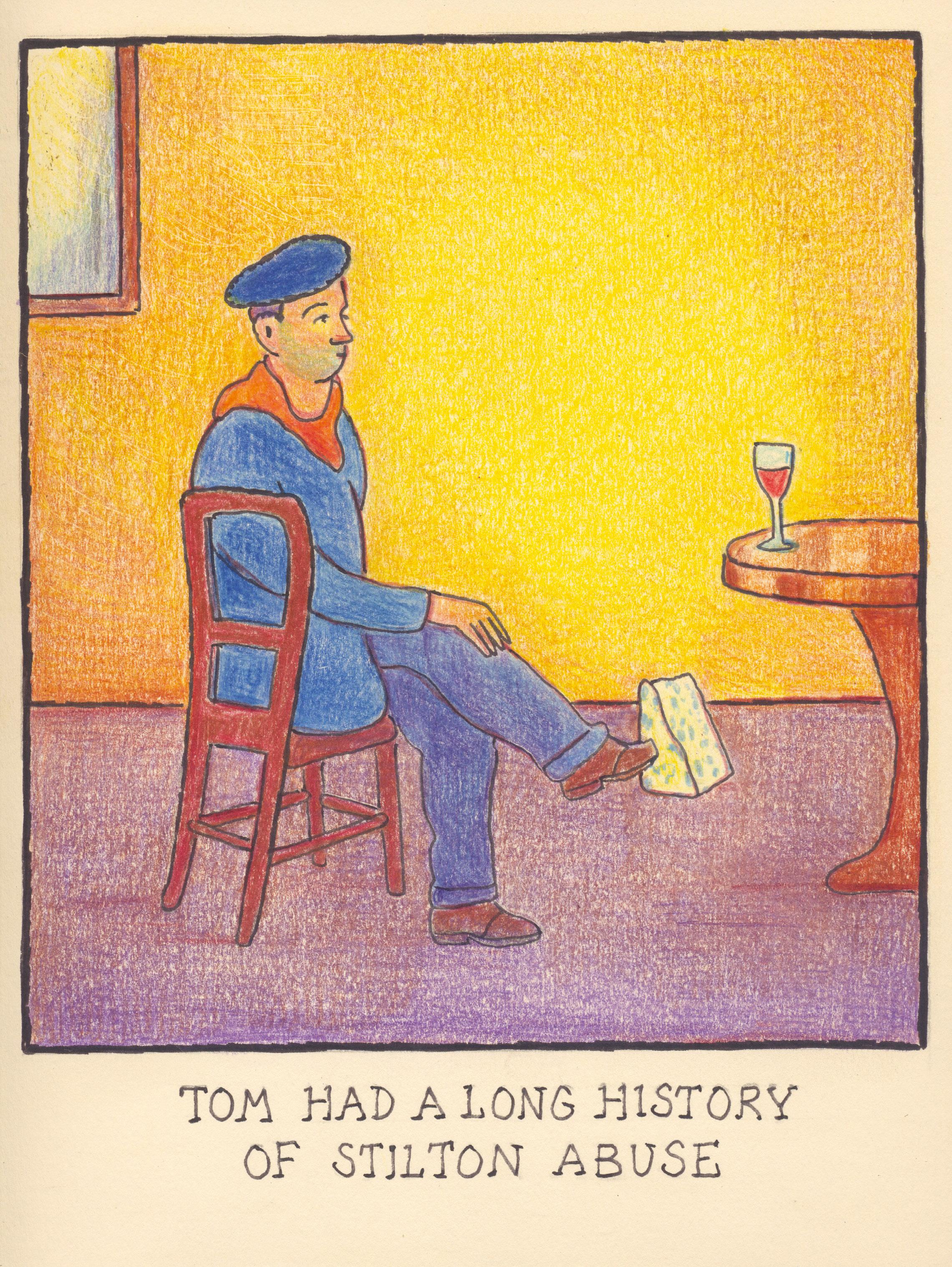
72 Jack Journal Vol. 3
Your drawings look as if they’d been clipped out of an obscure children’s book from an earlier time. From what do you draw the inspiration for your drawing? That authoritative, strong line has an almost parental, reassuring, genial quality. Is that what makes it so much fun to subvert with the caption?
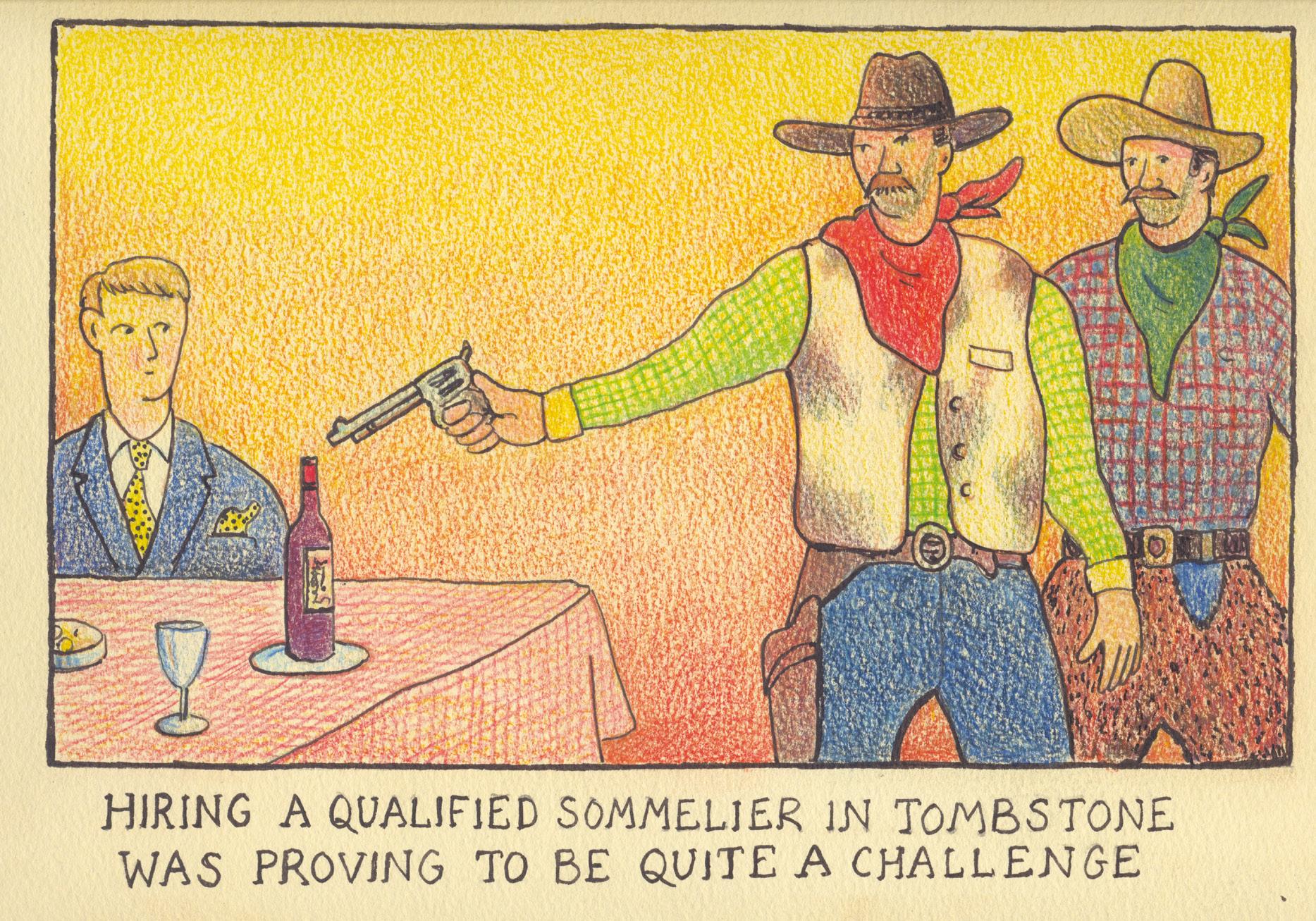
I was really blown away by the collages of Max Ernst: spooky, haunting, absurd. All these old steel engravings from the Victorian era with a magisterial authority subverted by the artist. THIS is what I wanted to do – but Ernst had already done it, so how to proceed?
Actually, his work has been pre-dated by two English chaps, E.V. Lucas and George Morrow (the latter a Punch cartoonist).
They had collaborated on a collage novel way back in in 1911 called What a Life –it’s a photo Dada masterpiece, included in the Dada and Surrealism exhibition in NYC in 1936. It’s in the catalogue.
But what to do? I had been collecting loads of old children’s adventure stories,
partly because they were inexpensive and had beautiful colour covers. I did this by trawling boot fairs (yard sales) and picked them up for a song because nobody else wanted them. Max Ernst did exactly the same thing with the steel engravings, picking them up at flea markets in Paris for next to nothing.
So here were the raw materials!
I loved the authority of the black line and realised that with a little tweaking I could create fragments of an absurdist narrative. I was reading Kafka and Raymond Roussel, so it just fell into place. So I had managed to avoid the trap of collage and felt liberated to draw in a way that seems to evoke this reassuring quality that NOTHING COULD POSSIBLY GO WRONG. Much like the work of Magritte … I’ve never looked back.
Speaking of which, your work – to my eyes – subverts and upends, but does not seem to mock. That is, there doesn’t seem to be anything mean-spirited about it, but rather a generosity of spirit, a willingness
to play. At the risk of sounding unbearably woo-woo, can you talk a bit about the ‘soul’ of your work?
How I would love to be, as you say, woowoo – that’s hilarious! But you’re right –I don’t want to mock and certainly not be mean-spirited. It’s meant to be an act of subversion and hence liberation! What I really want the viewer to experience is the exact feeling of not knowing what to make of things. This dislocation is a vital ingredient of Surrealism, of course.
To experience what the French call a FRISSON on encountering the marvellous and the unexplained, and somehow having to try to make sense of it – as I did all those years ago …
Do you draw the images first, or write first?
Tricky one this. Usually it’s drawing, but sometimes I have a word or a phrase I want to use.You will notice that snoods, wimples, and tofu appear from time to time.
73
One great achievement – I think –was my drawing ‘It was Rudolph’s Turn to Lubricate the Cinders’. It’s absurd but it also makes a kind of sense.
Also Wittgenstein did creep in to my early books. Art and philosophy are often present.
I did originally start out as a poet. I was invited to read from my works at the Poetry Project at St Mark’s Church, NYC, by Larry Fagin (Adventures in Poetry) and Ron Padgett in 1974. I stood up at the lectern in the church and read to an audience of poets, filmmakers, and writers. They roared with laughter. After years of rejection in England, I had found my audience.
After my talk I was encouraged to submit some drawings for exhibition at the Gotham Book Mart Gallery, which I did and had three shows there in subsequent years. At one of these exhibitions, I met Edward Gorey, who became a big supporter and one of the first people to buy my work.
Over the course of your career, the definitions of ‘art’ and ‘comics’ – and the lines between the two – have blurred considerably. Has this affected your reception in the art world? How do you think of yourself as an artist?
I never thought of myself as a cartoonist. I came from art school with only a vague appreciation of comics. At that time (mid-1960s) comics were not a big deal in England. It was really the French who took up the cause, and suddenly comics were treated seriously and revered, their historical roots explored, etc. Bande dessinée is big in France, as anyone who has been to Angoulême can testify. I have had three shows there over the years.
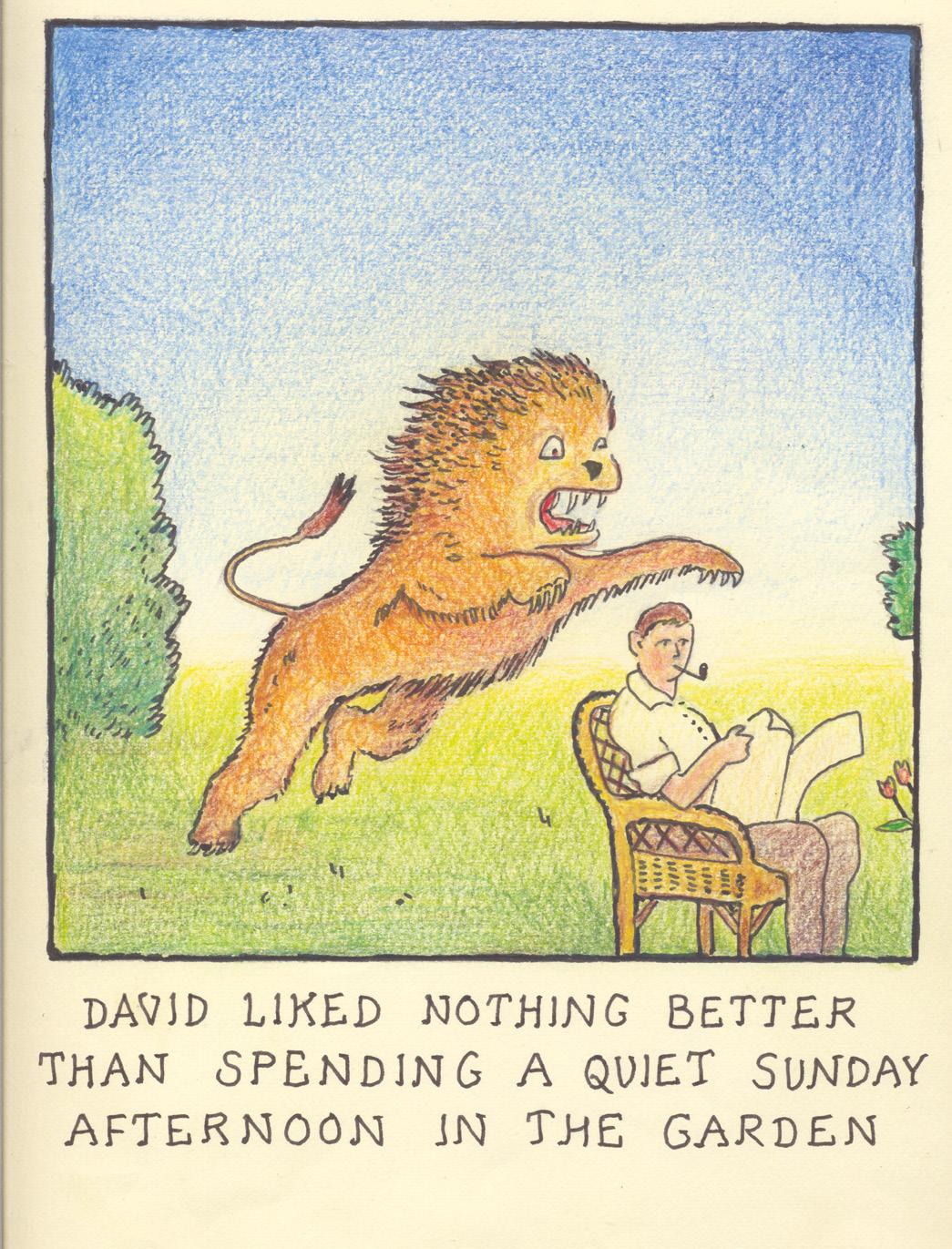
In those early days the word ‘cartoon’ usually meant ‘political’ or ‘satirical’ and ‘topical’. I think you will agree my work does not fall into any of these categories. To many it’s not ‘funny’ either. But in a way, I don’t TRY to be funny – it’s just the way the scenario turns out! The
humour is a release. I don’t TRY to make people laugh. I just want to direct them to see the strange in everyday life. It’s all around us.
This interview originally appeared in The Comics Journal in July 2016.

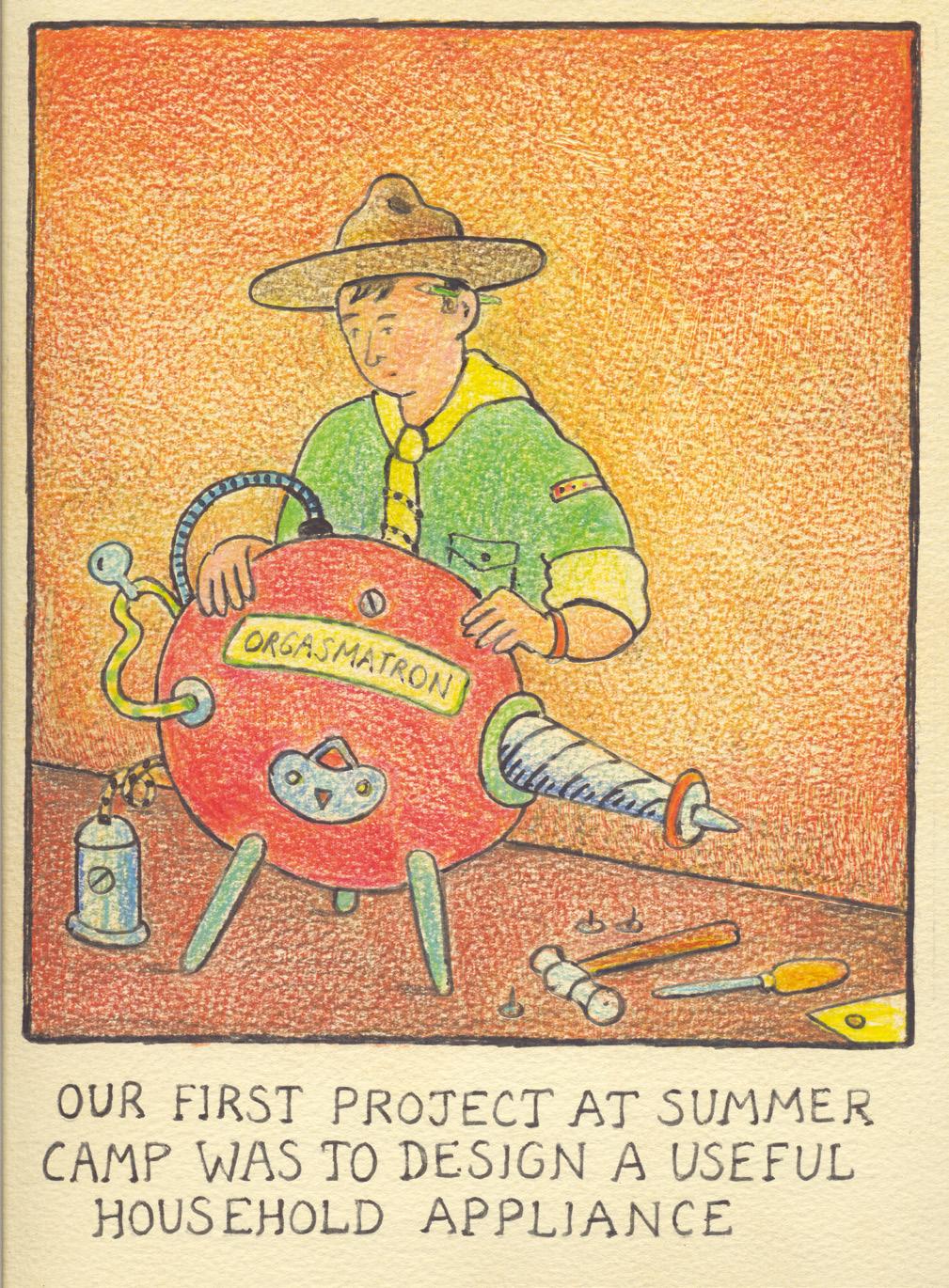
74 Jack Journal Vol. 3
Glen Baxter
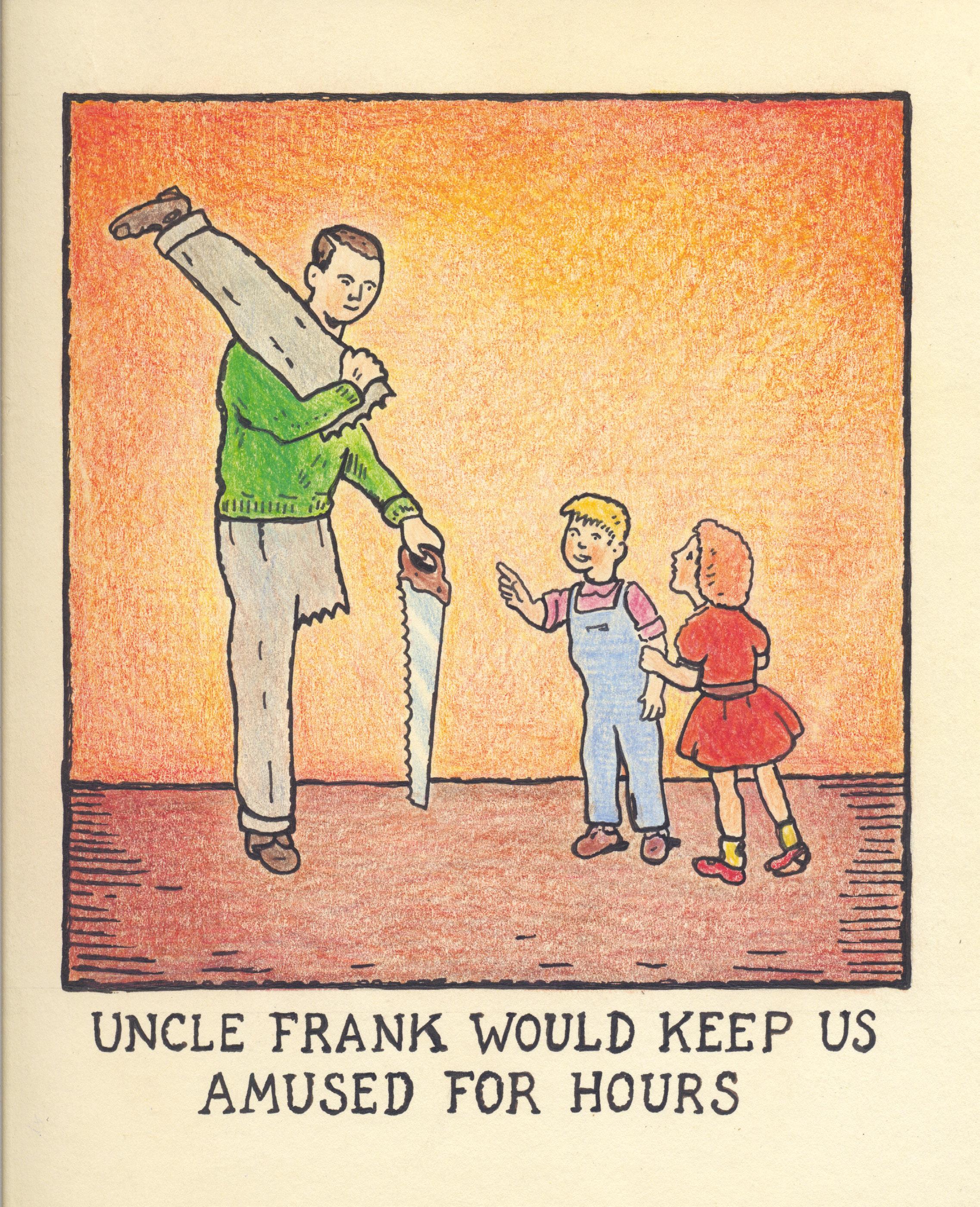
75



78 Jack Journal Vol. 3
music makes miracles
Written by: Su Birch Photography: Erica Bartholomae
The Trust has an inspiring vision, namely to use music to heal broken communities through providing a positive mythology alongside those provided by churches, sport and rare economic opportunities. The Trust works with with primary schools in rural villages to bolster their education offering by providing music classes. It also aims to build a stand-alone, self-funded music academy, called the Elspeth Jack Music Academy, for school learners.
The Trust began teaching in 2019 at Protea Primary in the impoverished rural village of Napier in the Overberg Highlands region of the Western Cape. An expert, highly qualified music teacher with experience of teaching in low-income schools in London was appointed and, after much trial and error, found that the most effective teaching method of combining theory and practical play was through the Alfred’s Piano Library series, Level 1A and Level 1B for the first year of keyboard lessons, and Level 2 for the second year of keyboard lessons.
A second music teacher was appointed, and 36 Grade 7 children received regular music lessons. The results were astonishing. The Deputy Head reported that the children returned from keyboard lessons
happy, relaxed, loving their music lesson and with a more positive attitude to learning. He attributed an increase in attendance by grade 7 pupils, up from 80–85% in prior years to 98%, to the music lessons and asked for the programme to be extended to further grades as he felt it would improve overall school attendance. The learners began developing fine motor skills, which had been seriously lacking, and they learned to work together and appreciate each other. Some learners also took their learned musical skills into the community by joining the church band.
So, all fired up for the first term in 2020, the Trust employed an additional music teacher, and all 97 pupils in Grade 6 and 7 learned the keyboard in school hours. Twenty Grade 4s volunteered to learn recorder after hours, and 20 Grade 2s and 3s volunteered to join the choir after school.
And then Covid struck. All schools were closed for months, and learning restarted in 2021 on a staggered basis, with absolutely no extramural subjects allowed.
The Headstart Trust activities changed the focus from music education to fighting hunger, and worked to support those already involved in food relief such as soup kitchens. Wine growers and farmers worked together
to pool and distribute resources. Throughout the rest of 2020 and all of 2021, between 10,000 and 20,000 people per week were supported through food parcels and meals at soup kitchens.
It is expected that normal schooling will resume in January 2022, and Headstart is all ready to restart the music programme. Schools from neighbouring villages have also requested music lessons, and everyone is enthusiastically waiting to restart. If you would like to find out more or be a part of change and donate money or music instruments, please click on the QRcode for more information or contact W.P. van Zyl, Managing Trustee at wpvz@icloud.com. Sales of Bruce Jack and The Drift wines support The Headstart Trust.
The Headstart Trust
To donate at globalgiving.org


79
The Headstart Trust was founded by Bruce Jack to honour the memory of his late mother and grandmother, both of whom were distinguished musicians and music teachers. The main goal is to provide music education opportunities and outreach programmes for poor and needy children in impoverished rural areas of South Africa.
the national poetry prize 2020 winners


“It was inevitable that I would come to love poetry – I had a mother who read nursery rhymes and sang to me. It helped that she was a musical prodigy and music was her life. The phrasing and rhythm of my own poetry shows the distinct fingerprint of lilting, Scottish folk songs I was wrapped in each evening at bedtime.
Like many bemused teenagers, I found solace in the construction of poetry at school. But it wasn’t until I met Professor Stephen Watson at university that I realised poetry was essential to me. I am part of a large and fortunate cohort who owes much to this man.
I write poetry, not because I like to, but because I have to. I experience it as something simultaneously compelling, difficult, necessary, uncomfortable, revealing and uplifting.
I read poetry because it helps me breathe and I love the way words can taste in the mouth – sometimes bitter like the bile of unfairness, at other times ripe like a forbidden kiss.
I support poetry because it is the essence of language and communication and we need to keep these things powerful and relevant if we stand any chance of making the world a better place.”
Bruce Jack
80 Jack Journal Vol. 3
The poem is about the innocence of daughters growing up fitting their mother’s clothes and wanting to look like them. It is that innocence that inspired the poem. My mother was/is a domestic worker and that includes taking care of everyone, both at work as a worker and at home as a mother. Now as a young woman, I realise that there were things that she kept only for herself including this favourite outfit I wrote about in this poem.
i wear mother’s bones by busisiwe mahlangu
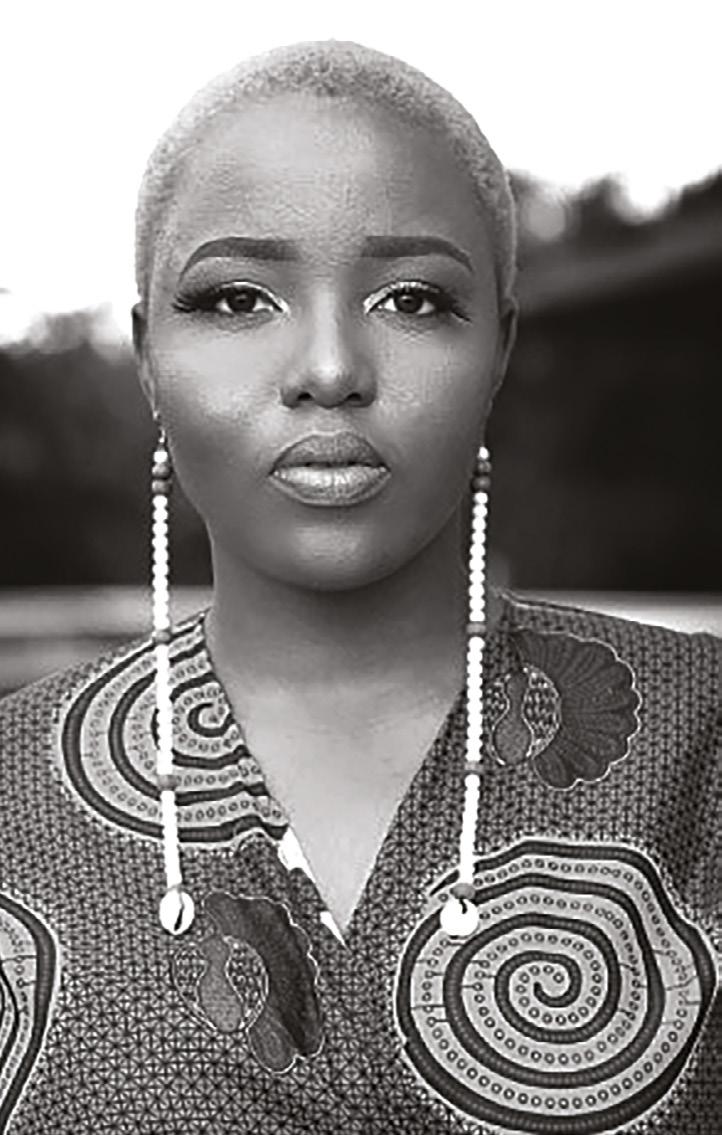
I fit mama’s clothes when she goes to work. I fit into the dances she had in them, into the panic of walking the streets at night, into the making of a home that would not hold
Her favourite skirt is striped black and white, the lines pointing to her feet like a whisper saying she must run.
Her favourite blouse is blue she was beautiful in it before it became a mouth swallowing her ugly along with her light
This one outfit excused from scraping the floors and raising white children Saved for Sunday’s gospel and prayers begging God for an answer To look like mama is to look like sacrifice: only a corner in a drawer to keep all her things while baba fills the whole house with himself
The mirror says i am drowning in skirt i twirl in amazement mama’s life is so beautiful i can die in it if death could tell me what made her laugh.
Made her happy with less. made her stay when she could run made her wear a blouse to watch herself drown?
i want to tweak the sides with a needle and thread but she will know, that i wear her life when she goes
81
1st Prize
While writing this poem, I challenged myself to rather point the finger inward and by doing this was able to find forgiveness for myself and humanity as a whole. I hope this poem leaves the reader contemplating their own flaws and finding compassion for the ways in which they too have been complicit.
2nd Prize
a new veterinarian spends a compulsory year working at a slaughterhouse by melissa sussens

I have watched death. Have become so familiar with slaughter in the last 204 days that I will see it
with my eyes closed, even two years later –My white gumboots splattered red, the bare white walls and steel frames
echoing with the growl of saw splitting sternum. The dull thud of another hide tossed down a chute to somewhere other
than here. The cold death banging into me as I fight my way through the crush of carcasses to reach the chiller’s exit sign.
To survive, I separated myself from the living, raced home to scrub myself clean. No soap could chew
through the smell of sulphur of 800 sheep packed tight as coffins in a mass grave. I haunted the compulsory hours,
a silent witness to each ending, there but not there. I did not speak against
the prodders or the whips. I did not remove the calf left to watch its mother stunned.
I did not call out after the truck overloaded into a trample of death. Life was eviscerated and quartered,
every day. The person I thought I was, bled out. No longer can I hold myself holy –I am fifteen again, at boarding school, watching
two girls clamp the pillow over another’s head. It takes five minutes until unconsciousness. For two, I did nothing.
Just stood there, complicit.
82 Jack Journal Vol. 3
I decided to write only one poem about COVID-19, which I called ‘2020’.
I remember seeing images on TV during the global lockdown of deserted streets that somehow reminded me of classic Western movies like High Noon, so I tried to capture that eerie sense of dislocation and unease –where have all the people gone?
2020 by stephen devereux

Imagine a town you’ve never visited a town you would never want to re-visit a town filled with all the sickness of the world. When we were young we did not travel to this town but in 2020 it visited us all, and sent us home.
A quarantine boundary runs through the central reservation like a fault-line. The country is in lock-down. No antidote except self-isolation. Fresh air is limited, airtime is running out. In the main square a defiant artist works intently on a still-life until a water-cannon dissolves her water-colours with purple rain.
I broke the curfew, wandered through deserted back-streets taking photographs of windows, silhouettes behind curtains. Chimneys billowed smoke signals, some white, some black. I returned once more to the mass grave behind the mosque with its mounds of white lime, dazzling and visible from space.
I came to a street where everyone was online and tear-stained, their faces lit up by computer screens and tablets and smart-phones. In the next street neighbours wearing face-masks played board games with latex gloves, balancing sanitised chess-pieces on garden walls. Behind them, orphans swam in hopeless circles in paddling pools.
Surveillance cameras were everywhere. A drone hovered above my car until I parked and it followed me as I crossed the road to a coffee-shop. The last waitron brought me a pint of vintage blood from the top shelf. “What’s wrong with you?” he asked, more accusing than concerned. “I’m not better,” I replied. “I wanted to be better than I am.”
I slumped in my seat, Google-mapping a route out of this town, now that I have lost my career to social distancing. At least I had freed the past. The waitron and I bumped elbows, then the drone led me back to my car and I sped towards the deserted airport, staring wide-eyed in the rear-view mirror at all I had left behind.
83
3rd Prize
Specifically, the poem is about the poet Ingrid Jonker and how she committed suicide by walking into the sea one night. More generally, it is about the sea, its many moods a way of saying something about my own mental weather. I also love the fact that so many ocean organisms look like our internal organs, as though we began as sea creatures and then closed our skin around that sea to keep it always in us.
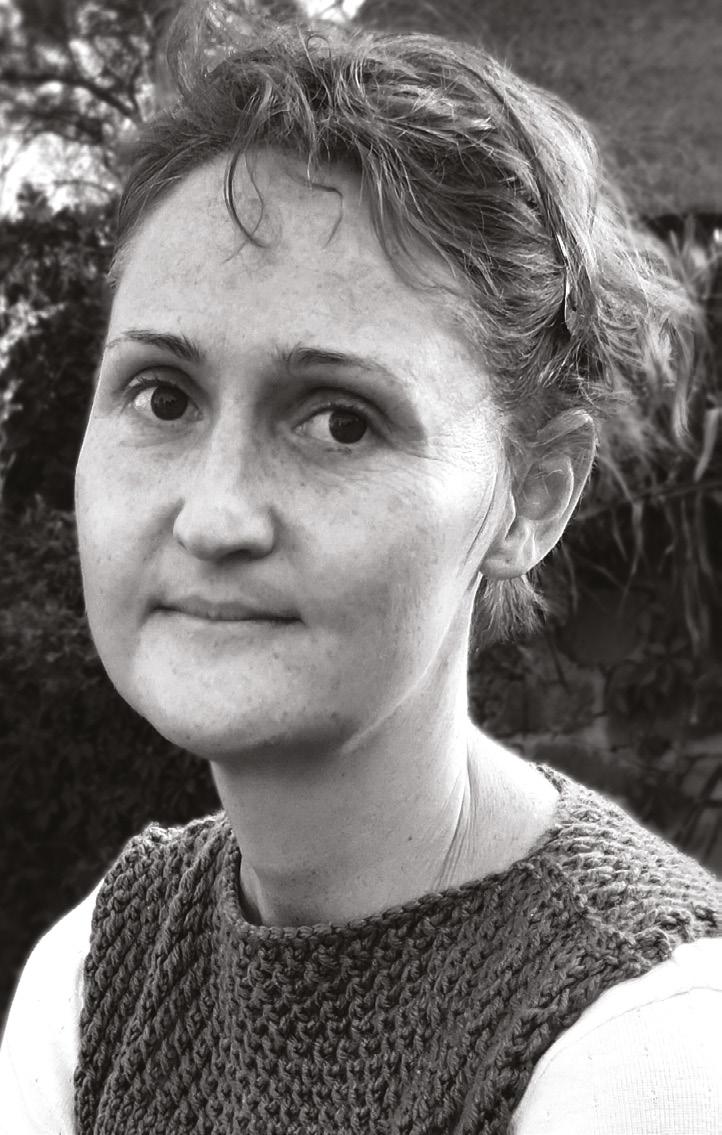
ingrid and the sea by betony adams
The sea is my cliché: woman. The moon in it, or holy ovum lit from within.
What’s the anemone if not a fallopian opening, a wish for fish.
And all that dark water, its monthly tug.
The heart, the heart is a man o’ war, a moody bloom in the blue, see-through.
Unspooling its stinging filaments in a current of blood.
The sea is a mouth: poet. The waves show white teeth. Sometimes it smiles, it beguiles. Sometimes it needs to eat.
84 Jack Journal Vol. 3
Commended
Today, as we flit past the graveyard on our way home, I see the grey headstones dyed canary-yellow by sunset, and think of the grandmother who I have never met, my father’s mother, who stands poised in greyscale on the wall, and warm in Father’s memories. I think how lucky you are, whose ancestors are buried in the family plot. You whose lineage is exact, century-old family portraits which hang lopsided in the family home. Say, This is my Great Great Great Grandfather, who fought in a war. Say, This home has been in our family for generations. I will not ask whose war. I will not ask whose land. I will tell a charming story, how I was born in the backseat of a car, because the nurses didn’t know shit, and sent my bursting mother home. This car seat I bless, call my capital, my country. These polyesters my hospital. Mother’s fingers the midwife, guiding me from womb to winter, the cold of August
This piece is a musing on my own family history (and lack thereof) as emblematic of the collective robbery of black and brown people’s history and assets during and after apartheid, specifically through the lens of the shared generational trauma which seeps into the smallest of things, like not knowing where your grandmother is buried.
night which blew heavy at the window. And as I think this, the graveyard passing in a yolky ribbon of colour, I recall how Grandma has no headstone, no one place to mark her resting bones, or highlight golden at dusk, or leave carnations atop. How she worked her fingers rough, but could not afford the final chunk of stone. Photograph in lieu of headstone. My parents, station-wagon in lieu of hospital plan. I ask if you know what it means, you whose wars hang on the wall rather than flow through your veins. To call a car your continent. Or be buried without a name.

85
continent without a name by connor cogill
Commended
Nothing, not even the memory of long applause at the end of a Saturday afternoon of Death & Contentment, lasts forever. Time is (like us) a slave to fashion & our moment in history is on the wane. Some say that blood sports have seen better days, though why bullfighters should now struggle to survive is quite unclear: Violent death has never been more a la mode. Surfeit, if anything, erodes our trade: who cares for the fate of a fighting bull in the face of a Sarajevo? This is why I urge you, now, while you are young, before you find the sickness full-blown in you, now,
My best poems are generally those which write themselves. With ‘An Old Matador…’ I began with an image - dredged from a childhood trip to a bullfight in Spain - of the crowd escaping its reality in the pirouette of death. The 20th century has made an art form of using mass death to create a distraction.
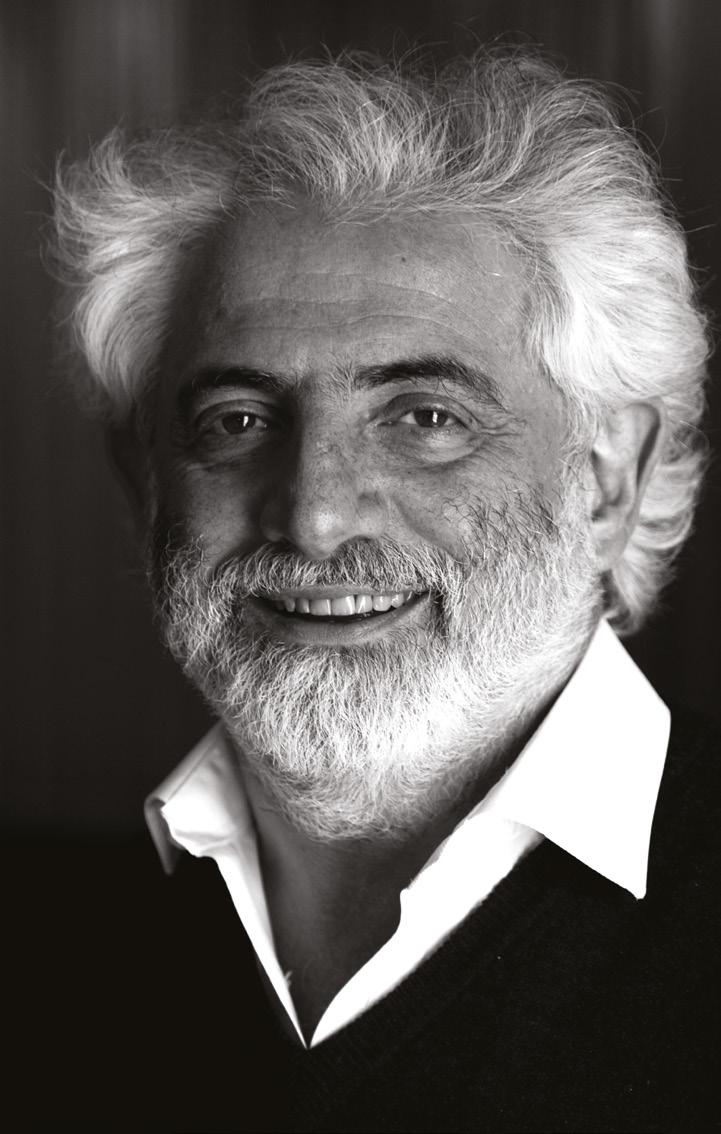
while you can still gigolo the pavement bars or work an eight hour day behind a desk, now, before your blood needs the fear that chokes your prayers in that small sweatfilled chapel beneath the stalls, now, before the crowd’s roar makes you foolish like a god, long, long before, the deed done, you temper murder with regret and envy the dying bull his courage and revile your own, give all this up and walk away.
This age has no place left for us who traffic in primitive rage, the pitiless
will to live, and deal in hand-held death.
The moments you dream about are windmills, and nothing is more absurd than a hero out of time.
86 Jack Journal Vol. 3
an old matador counsels a young toreador against remaining in the profession
by michael fridjhon
Commended
‘From Where’ was written to elaborate on the cultural anomalies and nuances of identifying simultaneously as both South African and Indian; a concept that has time and time again proved to be complex to those other than South Africans themselves.
Commended
from where?
by meshalini govender
I collect stamps- passport stamps; the process is always the same.
Airport officials direct travel-thirsting throngs. “India?” they ask, mechanically. My head moves no; the colour of confusion is not a subtle shade. Fleeting, “Pakistan?”
“South Africa.”
Confusion was red, but suspicion is maroon. Shooed away to an immigration counter. They shove each passport page under authenticity scanners and call other officials, whispering. They have to be sure.
*
But, my mouth knows of coconut, curry, cinnamon and cardamom, my ears: the distinctive pop of cloves thrown in flames, my nose: the scent of chai, my touch: the silk of a sari, my childhood: Diwali, while I : only of an African home; since forgotten forefathers brought as slaves, “indentured labourers” ploughed plantations and collected colonialist cane.

*
They look at me, again, baffled; but the data doesn’t lie. So, they add a stamp to my collection, now knowing that the colour Indian can exist on African canvas.
87
‘The Door of No Return’ on Goree Island anticipates profound change – the wrenching change in the first instance that newly captured slaves experienced when forced through that door onto the slave ships; but also our local change where South Africans reached across divides here at the historic IDASA Dakar meeting in 1987. I use the Yoruba myth of the marasa spirit twins – a metaphor deployed by some cultural scholars of the African diaspora to describe the twin consciousness that enslaved people had to adopt – as a central motif acknowledging its latent power while also harnessing the way in which this myth was syncretised in Haiti with a Christian myth of martyred doctor twins whose legend includes grafting an ‘Ethiopian’ leg onto a ‘European’ stump.
door of no return goree island, senegal
by david schmidt
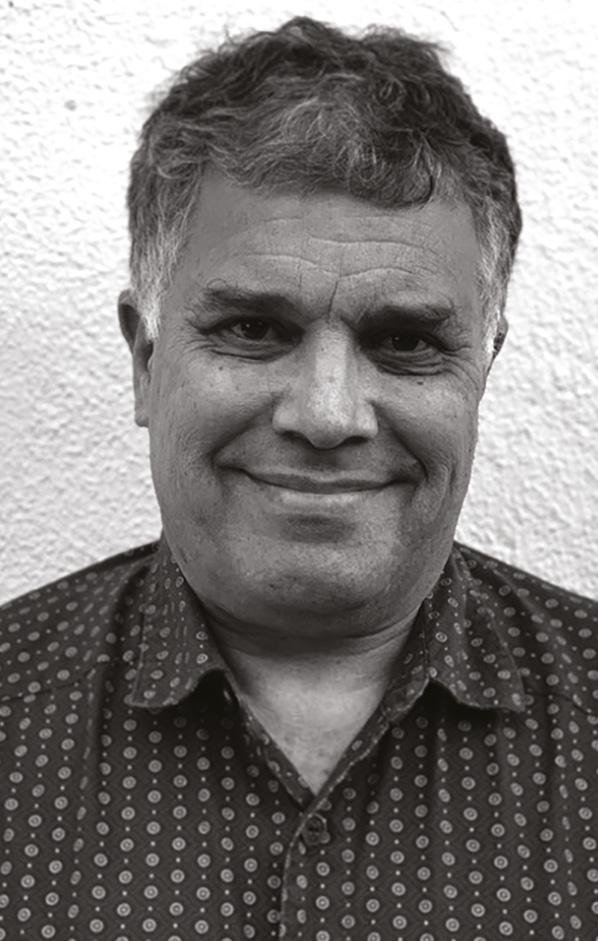
Families burrow homes into the holes of old fortresses, reframe rusted cannons as art galleries and washing lines. Colonial debris now lover’s nests looking over cliff edges, as boys deep dive off ferries to grasp the falling coins, the unspoken wrecks deeper still beneath the shifting sands. All the paths on Goree’ Island funnel down to one dark corridor leading to one small door, opening out onto light that was not light, but squeezed the juice of old lives out like mops. Their names and words shucked like oysters, pickled in the brine of oceans packaged with burning iron to be bought and sold. Waking blind as moles from that long dark passage, identical twins of former selves, fully lost save stories hidden in the heart. The slave barques of Liverpool now gleaming London skyscrapers, the storied legacy of those enslaved, still shackled, still seeking light.
The marassa myth of the spirit twins travelled with them. Beyond physics, more than their sum, one and one is three. Syncretised there with the moneyless surgeons, St Cosmas and St Damian, twins themselves, who cut and stitched to change the world, black legs grafted onto white stumps, those clear edges blurred. Reality like broken bones can be reset, damaged souls recast in alabaster. Fixing the wound sometimes requires a scalpel’s touch
to cut scarred sinews healed so tight, the hands cannot open. South Africans once pushed through walls of hideous thought, stood on the open steps that frame this door of no return, reaching out to each other across that gaping hole. Was it enough that fingers stretched to limits, they touched? Or did they need to cut and stitch themselves new shapes to squeeze through to the other side, blurred into each other like crows?
Walking down the corridor towards that final door in that lingering dark, the sweaty intimacy still of slaver and slave, to the brightness of the open ocean where nothing remains. Where in our souls does that cruelty lie? The streets of our cities are red rivers bending back on themselves, the plastic detritus of our civilisation floats on the oily waters, a connected world no longer intimate but still cruel. Does anything beyond our debt, bind us to those who went before? Once fallen over the threshold, you can never return to yourself or the other doors of what might have been. Beneath our human noise, the universe lies open. Unheard trees sprout silently in unknown cosmic forests. We dream united with the ancestors by the vast forever sky, as every night, the stars of Gemini keep falling into the sea.
88 Jack Journal Vol. 3
Commended
“give me a flagon of red wine, a book of verses, a loaf of bread, and a little idleness. If with such store I might sit by thy dear side in some lonely place, I should deem myself happier than a king in his kingdom.”
Rubáiyát of Omar Khayyam
Scan the QR code to find out more, or to enter the competition, visit www.newcontrast.net

89
the winning poets
BETONY ADAMS
Betony Adams is finishing her PhD in physics at UKZN. She also works part time in road maintenance.
Poetry, at least to me, is something that is able to contain some of the complexity of what it means to be human – it tests the potential of both life and language. And I mean potential at least partly in the scientific sense: the electric gap across which lightning is generated, the distance between bodies and their longing to cross it.
STEPHEN DEVEREUX
Stephen Devereux is professor of Development Studies at the University of the Western Cape and the University of Sussex in the UK. He recently completed an MA in Creative Writing at the University of the Western Cape.
Stephen’s poem ‘2020’ was awarded third prize and ‘A Simple Request’ was shortlisted in the top 10.
I always wanted to write ‘poet’ as my occupation on official forms, but I never had the courage. Now that I’ve won a poetry prize, maybe I will!
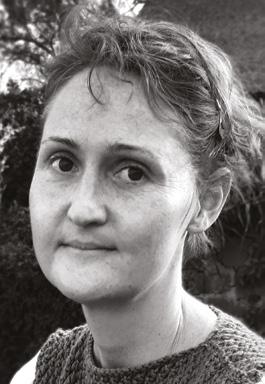
CONNOR COGILL
Born in Cape Town at the turn of the century, Connor Cogill is a student and queer writer of colour. He is currently registered for a Bachelor of Arts degree in Language and Culture at Stellenbosch University, engaging his love for philosophy, writing and literature. He has recently been shortlisted for the Sol Plaatje EU Poetry Award, and his work can be found in New Contrast and The Johannesburg Review of Books. Connor himself, on the other hand, can usually be found sunbathing with his dogs.

Cliché as it may be, poetry to me means freedom – finally getting to say those things I can’t express otherwise, in a way that is both simple and complex, difficult and easy.
MICHAEL FRIDJHON

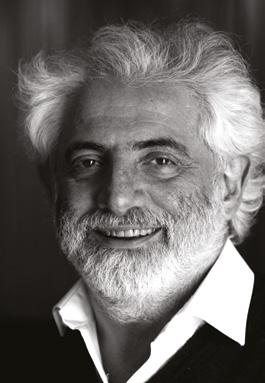
Michael Fridjhon has been writing and publishing poetry for over 50 years. His works have appeared in various publications, including A Century of South African Poetry. However, most of his working day is focused on the wine industry, dealing with production, importation, judgement and commentary. Visiting Professor of Wine Business at the University of Cape Town’s Graduate School of Business, he has written or contributed to over 40 books about wine, and writes what is believed to be the longest running weekly wine column in the English-speaking world. He is married to Janice and they have two sons.
It’s taken me the better part of my lifetime to work out that being a poet is less an activity and more another way of seeing things.
90 Jack Journal Vol. 3
MESHALINI GOVENDER
Meshalini Govender is a South African teacher, traveller and daydreamer, who revels in all forms of art. When she is not curled up with a piece of literature or a travel guide, she is scribbling down her own short fiction or poetry, teaching English in some corner of the globe or feverishly checking off her bucket list. She has previously been published in Odd Magazine , Reedsy, thesouthafrican.com, Brittle Paper, The Kalahari Review, was shortlisted for both New Contrast and Jack Journal ’s National Poetry Prize and Time of the Writer 2021, and is working on her debut poetry collection.
I read poetry because it brings me refuge, I write it because it gives me freedom.
DAVID SCHMIDT

David Schmidt lives in Cape Town, works on urban and public policy challenges, and teaches ethical leadership. He has been an activist, a teacher, a change facilitator, a city executive, a policy adviser and a trustee of various education and human rights bodies. He is learning to be a writer and has had poetry published in local and international journals. He recently completed an MA in Creative Writing (UWC).
Poetry is like sculpture – a craft of chipping away at the superfluous and the artifice to find something real, meaningful and often surprising residing below the obvious surface.
BUSISIWE MAHLANGU
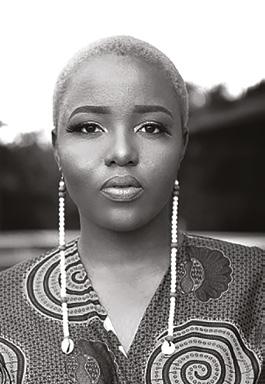
Busisiwe Mahlangu is a poet, performer and a dreamer from Mamelodi, Pretoria. She is the author of the poetry collection Surviving Loss and produced its theatre adaptation at the South African State Theatre. Mahlangu is the SA National Poetry Prize winner (2020) and the winner of the Tshwane Speak Out Loud Youth Poetry Competition (2016/2017). She has toured and shared her work internationally, including in the USA, Sweden, Lesotho, Mozambique and Nigeria. Busisiwe currently runs her business, Busi Creates, where she makes jewellery and beadwork.
To me poetry is a personal labour first. I connected deeply with poetry when I was depressed and displaced at varsity, sleeping at computer labs. I did not know anything about depression or anxiety, and writing made me feel as if I was digging my way out of a very dark place.


MELISSA SUSSENS
Melissa Sussens is a queer small animal veterinarian and poet. Her work has appeared in Germ Magazine, Capsule Stories, Anti-Heroin Chic and Ja. Magazine, among others. She was selected as one of the winners in the ClemenGold Writing Competition in 2020 and as one of the shortlisted poets for the Time of the Writer: Poetry For Human Rights competition in 2021. Melissa has performed at the Poetry In McGregor festival and at Off The Wall. She lives in Cape Town with her partner and their two dogs and can be found on Instagram @melissasussens. Melissa’s poem, ‘A New Veterinarian Spends a Compulsory Year Working at a Slaughterhouse’, was awarded second prize.
I write to find connection and understanding – with myself and my lived experiences and with the larger world and other people. The greatest gift for me as a poet is to know that a reader can find themselves in my words.
91

92 Jack Journal Vol. 3
shweshwe swish and sniff
Written by: Fiona McDonald Photography: Nicholas Schlemmer Artwork: Allendre Hine
It’s the quintessential South African fabric. Originally only available in an indigo blue hue, shweshwe now comes in brown, red, yellow and other vibrant tones. Fiona McDonald looks at this material’s interesting history and popularity.
In the dim and distant days of English grammar lessons, onomatopoeia was a fiendishly difficult word to spell. Understanding it was so much easier: it’s a word that mimics the sound of the object or action it refers to.
To my mind, shweshwe cloth is a great example: it perfectly describes the gentle ‘swish-swish’ that the fabric makes when stiff and new. For
generations, enterprising Xhosa woman of the Eastern Cape and their counterparts from Lesotho have sewn garments from this distinctly patterned fabric – and they knew that shweshwe cloth should be felt and sniffed before purchase, because the real-deal shweshwe should be slightly stiff, should swish when rubbed and also have a faint acidic aroma.
In the last decade, shweshwe has crossed over and become trendy – a symbol of Africa in vogue. Few people appreciate that it’s a specially trademarked material and that Eastern Cape-based Da Gama Textiles ensured the survival and ownership of shweshwe in 1982, when it bought the sole rights to one of the most popular brands from a company in Manchester, even going so far as to have the copper rollers crucial to the printing process shipped to South Africa.
Shweshwe has a fascinating history, one which is tied to the historical popularity of the colour indigo – which was, incidentally, identified in the 1660s by Sir Isaac Newton as part of the seven colours of the visible spectrum when he conducted an experiment with a light shone through a glass prism. (And that’s why we learned the mnemonic ‘Roy G Biv’ in science lessons, describing the order of the colours: Red, Orange, Yellow, Green, Blue, Indigo and Violet.)
Ancient Phoenicians and Arabs knew all about real indigo as far back as 2300 BCE – the colour extracted from sea snails and also plant sources (Indigofera tinctoria) was rare and thus valuable.
In her article ‘Shweshwe: a true blue passion’, Cynthia de Villemarette wrote that ‘designs are created using a discharge
93

94 Jack Journal Vol. 3
process, unlike modern printed fabrics where colour is added to the surface. With Shweshwe, the cotton cloth is first entirely dyed, thoroughly penetrating the fibre. Then the cloth is passed through copper design rollers, which emit a mild acid solution, removing colour with pinpoint accuracy. One of the characteristics of shweshwe is the intense use of picotage, tiny pin dots that create not only the designs, but also texture and depth. It is because of the difficulty and expense in creating these designs that they fell out of favour with American and European manufacturers, who chose instead to move to printing processes. Da Gama Textiles of South Africa is the only known manufacturer of fabrics still using the discharge process … The reverse side of the fabric will be a solid colour because it was dyed. Da Gama also prints its seal on the back to help you identify it.’
The South African garment and textile industry has been hard hit by cheap fabric imports – and shweshwe cloth hasn’t been unscathed. Fabrics from Pakistan and China are inferior quality imitations, and that’s where local woman know exactly what to look – and listen and smell – for! The real shweshwe should be a solid colour on the reverse side of the fabric, ideally with a trademark logo. It should be slightly stiff from the starching process – hence the swish-swish sound – and it should also have a faint acidic smell (and even taste) because of the method used to print the design.

The origin of the name of this material apparently has a link to King Moshoeshoe (pronounced onomatopoeically as Mashweshwe), long-time ruler of Lesotho who died in 1870. History has it that he was given some distinctive indigo cloth by
French missionaries visiting his mountain kingdom – and that this blue printed fabric became extremely popular among his people.
Historic evidence of settlers’ clothes in museums in places like Graaff-Reinet and Qonce (previously King William’s Town) show that printed indigo blue fabric was popular locally hundreds of years ago, even among slaves and soldiers at the Cape. German settlers referred to it as ‘blauwdruk’, or blue print, because it was similar to a material popular in Germany in the 19th century. The Xhosa initially called the cloth ujamani, although nowadays it is universally known as shweshwe.
Since 1982, when Da Gama textiles obtained the rights – and rollers –for the most popular designs, the Three Cats versions, new colours have been introduced, namely brown, red and even yellow.
As the years go by, it’s through the efforts of people such as local fashion designers Amanda Laird Cherry, Nkhensani Nkosi of Stoned Cherrie and Craig Native that the fabric continues to win new fans to its historical designs and ever more trendy applications.
95
The origin of the name of this material apparently has a link to King Moshoeshoe (pronounced onomatopoeically as Mashweshwe)
Da Gama
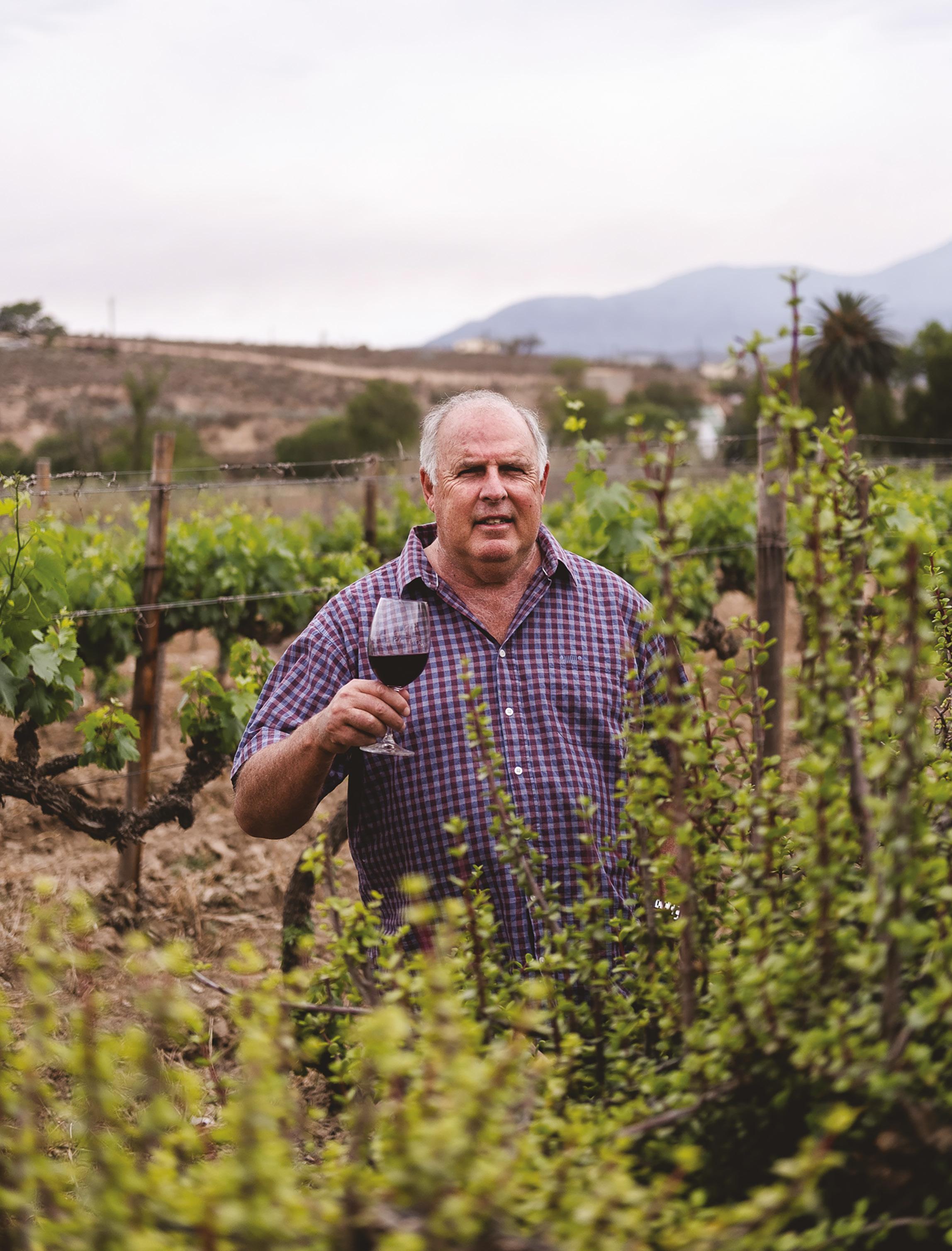
96
Journal Vol. 3
Jack
Carel Nel alongside his spekboom corridor in the Boplaas vineyards.
carbon copies
Written by: Fiona McDonald and Su Birch
Can a small succulent plant be a solution to years of overgrazing? Can it regenerate degraded hectares of arid land?
Yes, if it is Portulacaria afra, known in South Africa by the strange name ‘spekboom’, which translates as ‘bacon tree’. There have been claims that, per hectare, it is more effective than the Amazon rainforest at sequestering carbon dioxide from the atmosphere and, while these claims may be exaggerated, spekboom packs a restorative punch as impressive as any giant tropical tree.
Spekboom is indigenous to the subtropical thicket vegetation found in dry regions of the Western and Eastern Cape of South Africa. An extensive research project has shown that in its natural environment, it can absorb between 2.9 and 8.6 tonnes of carbon dioxide per hectare per year, and that’s
only counting the plant’s trunk and leaves above ground. A restored or intact spekboom thicket stores about 200 tonnes of carbon per hectare as it continuously drops lots of leaves that help to build up soil organic carbon, and its dense canopy provides shade and protection for the organic carbon and for increasing indigenous biodiversity.
What makes the spekboom such a successful carbon converter? When it gets too hot or too dry, it carries on working at night. All plants trap carbon dioxide in order to photosynthesise and grow, but the spekboom differs in that it does so even when the plant’s breathing pores are shut. It has adapted to change its photosynthesis mechanism depending on temperature and water supply. When conditions are favourable, it operates much as any other plant would (C3 photosynthesis), but when drought hits, it relies on CAM –or Crassulean Acid Metabolism –photosynthesis. Essentially, it shuts its
leaf spores during the day to avoid any unnecessary transpiration. Acid that builds up in the leaves during the night –stored as carbon dioxide – is then broken down during the day and metabolised. Hence its ability to survive and continue photosynthesising, using small amounts of water while simultaneously sequestering carbon.
This hardy, drought-resistant plant can survive on tiny amounts of rain – 250–350mm annually. What it has not been able to survive is the rampant overgrazing caused by sheep and goat farming over the past two hundred years, which has left vast tracts of land barren and unproductive. But the good news is that it is remarkably easy to propagate. A 5–8cm cutting can be placed in soil or sand and will soon root and grow, provided it’s not overwatered. And it can form a bush or even become a 5m-tall tree. It works well as both a hedging plant and even a firebreak. For all of these reasons, it’s an exceptionally
97
Portulacaria afra by Pierre-Joseph – Digitally enhanced by rawpixel.
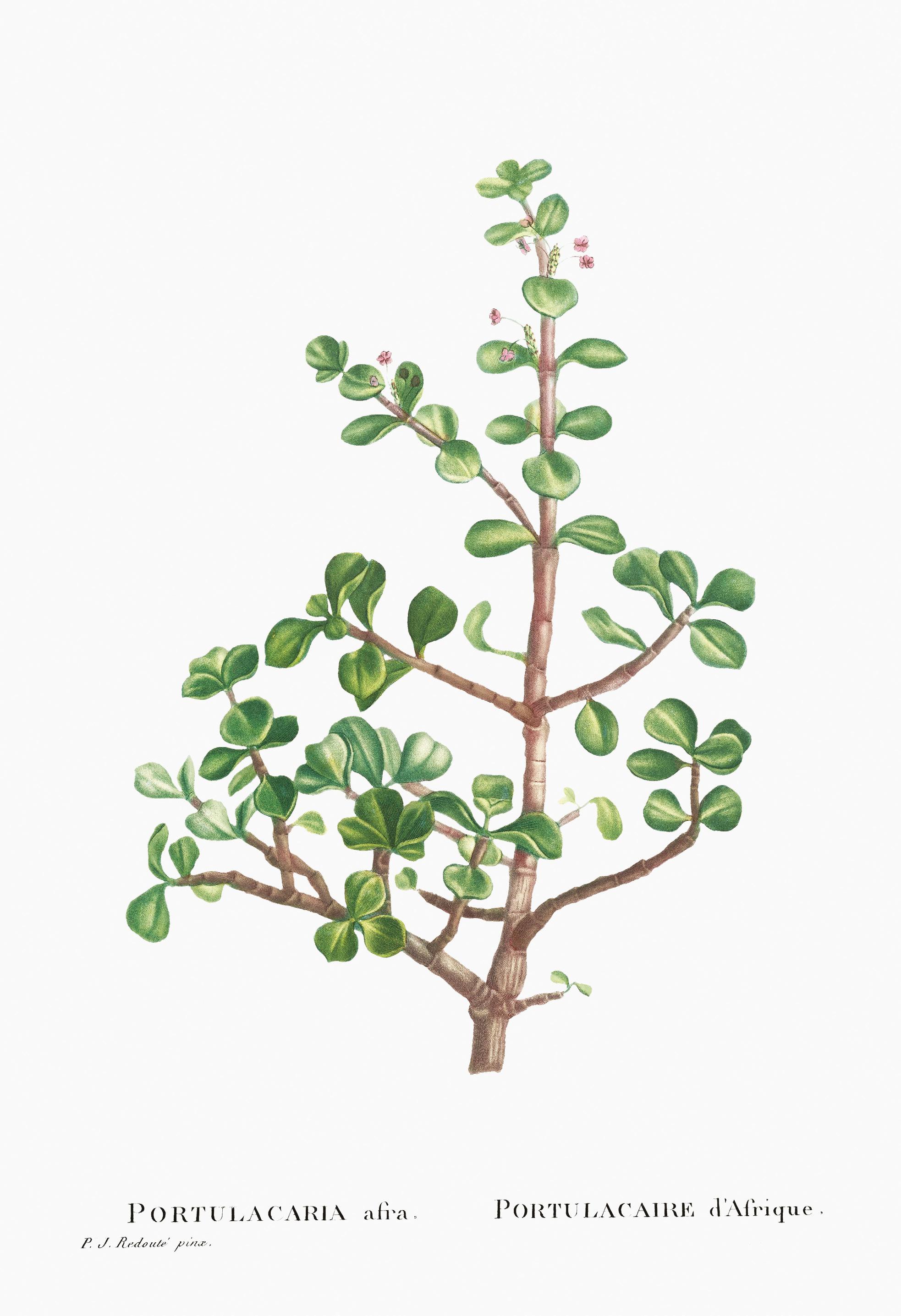
98 Jack Journal Vol. 3
useful part of the botanist’s, farmer’s and conservationist’s armoury when re-establishing ecosystems in arid areas. In 2007, the South African government (working with the UN Environment Programme) began an ambitious programme to restore a totally degraded area of over a million hectares by 2022 through replanting tranches of spekboom.
An equally impressive private initiative is the passion of Carel Nel, a renowned pioneer of port-style wines in South Africa at his Boplaas property in Calitzdorp. Nel is a quietly spoken man who has a deep-seated conviction of the need to conserve the overlooked paradise that is the succulent Karoo. The humble spekboom plays a critical role in his conservation dream. ‘I’ve loved the veld since I was a child, and I still take my family for walks and hikes in the veld –even though they’re now adults themselves – just to enjoy nature. I still marvel at
spekboom! I’ve experienced terrible droughts in my decades in the Klein Karoo, and the spekboom manages to survive, no matter what the conditions are.’
Nearly two decades ago he bought 2,200 hectares of Karoo veld in order to conserve and protect it – and he’s recently added another 2,500 hectares. ‘In my lifetime I’ve seen the impact that sheep, goats and ostriches have had on the veld in the Klein Karoo – this is a remarkably biodiverse area, with more plant species within 150km of my front door than in the whole of Europe!’ Nel is happy to take the uninitiated for a hike far into the red soils of the Klein Karoo and demonstrate the difference between succulent Karoo and thicket biomes. ‘And deep in the kloofs around here you will even find ancient milkwoods and stinkwoods that you’d expect to find in the Knysna forest biome.’
Nel’s vision is to facilitate the planting of a million spekboom cuttings by the year
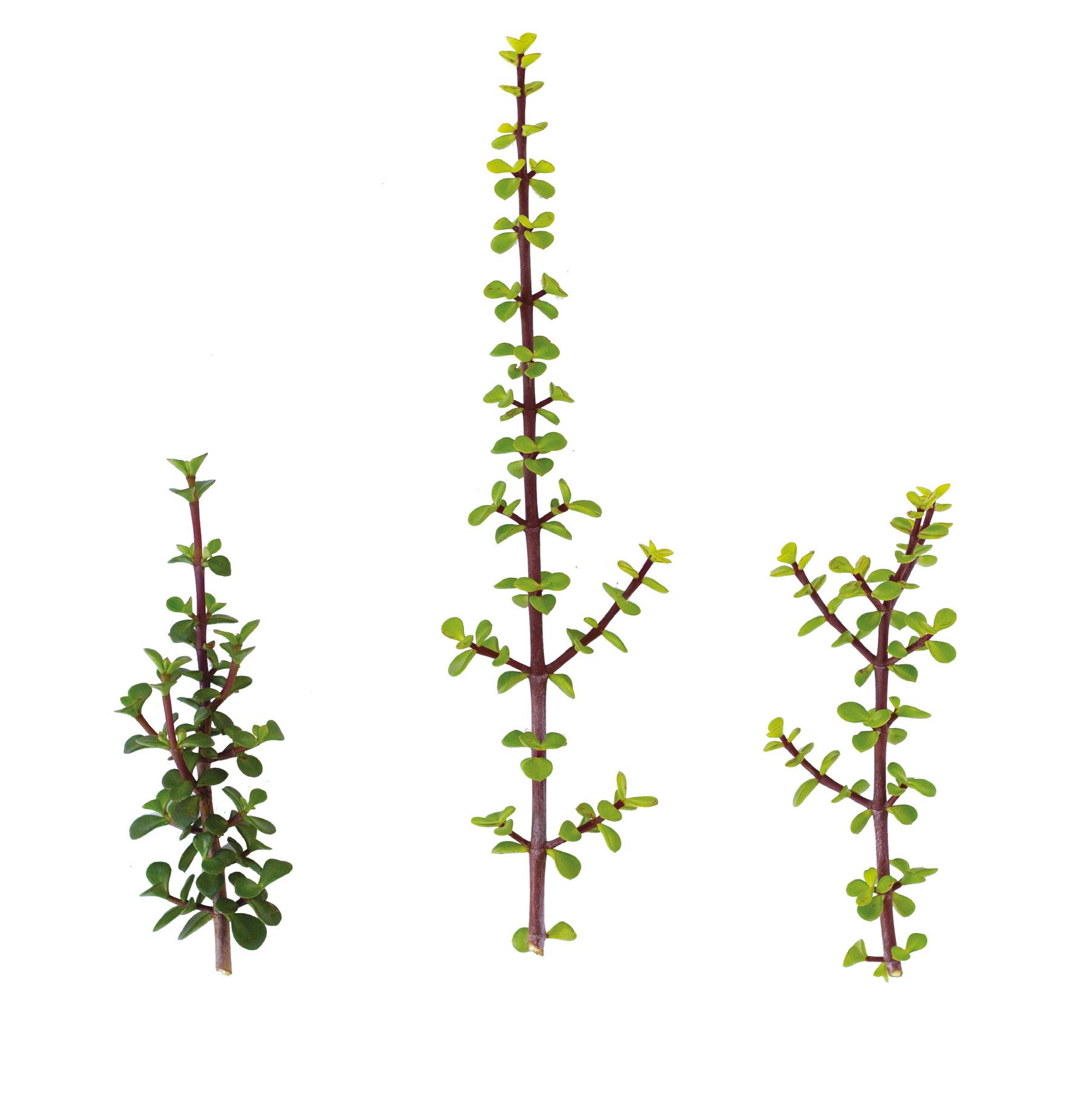
2025. For obvious reasons, the global pandemic has affected the project and the deadline has been extended – but each visitor to the Boplaas tasting venue leaves with a cutting or three. ‘My philosophy is simple,’ Nel said, ‘and it’s been said before: if everyone tried to leave the planet in a better position than how he or she found it, we’d all be better off.
‘Earth doesn’t need us. We need this earth for our survival.’
For more on spekboom
Boplaas Wines


99
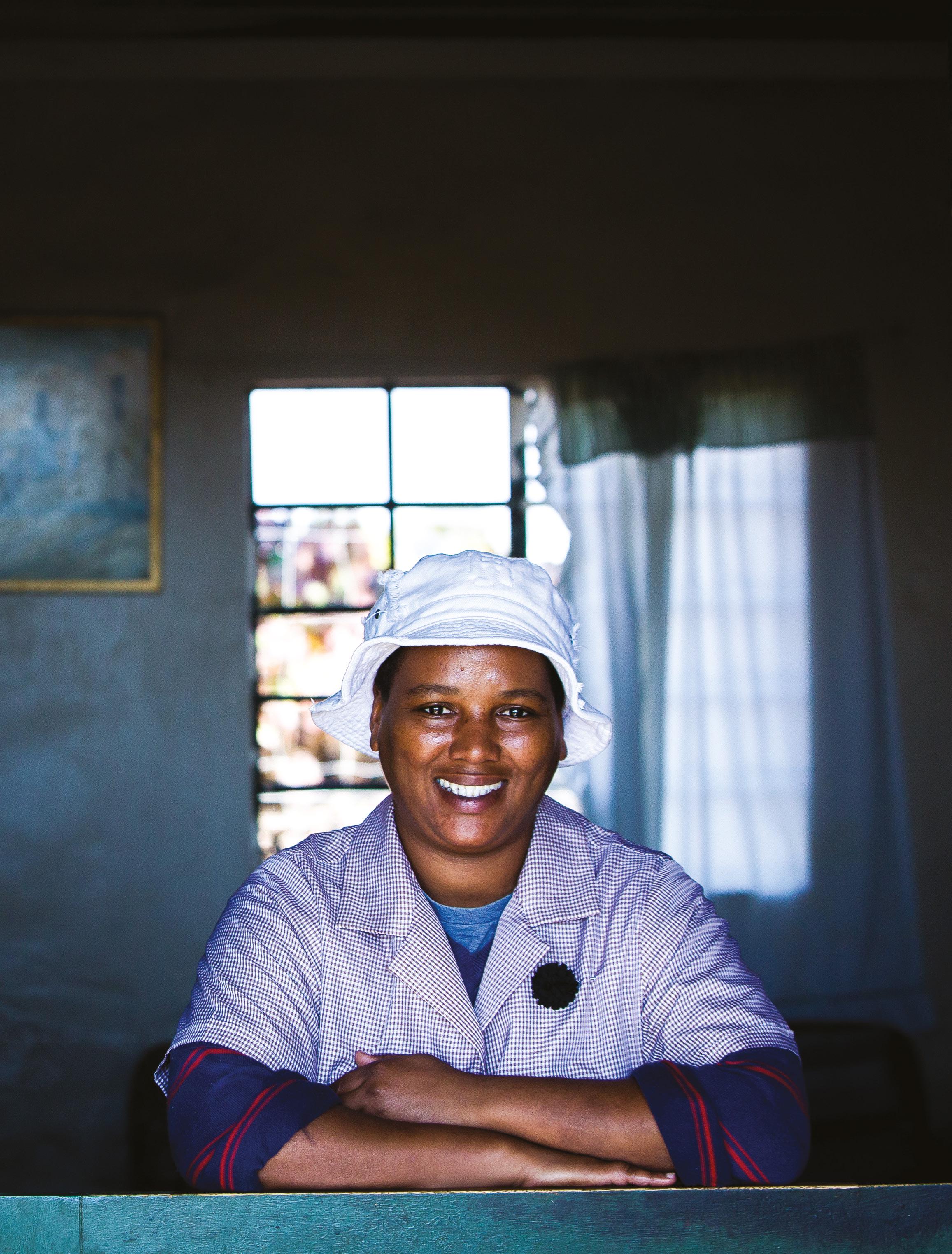
100 Jack Journal Vol. 3
Michelle Lukas, a fully employed worker at Merwida, at her home, cottage number 9.
capitalism with a conscience
Written by: Biénne Huisman Photography: Halden Krog
Life changed for Michelle Lukas when she was thirteen years old – a grade eight pupil at Worcester Secondary School in the Western Cape.
Under a floppy fabric hat, she smiles while relaying the memory etched in her mind: the day she got new school shoes, a new school skirt, a backpack, socks, pens, pencils and a calculator – for free.
This was fourteen years ago.
‘We went to De Jager in Worcester where each child could get new school clothes worth R500,’ she recalls. ‘Before that, my shoes weren’t quite broken – I mean I looked after them well. But they were old. I would walk three years with a pair of shoes.’ From then on, all the children at Merwida wine farm, in the bougainvilleadraped Breede River Valley, were allocated new school clothes each year.
In addition, their school fees were covered and they were transported to schools in three minibus vans. At home, they now had DStv.
Merwida became Fairtrade accredited in 2008. Essentially capitalism with a conscience, Fairtrade helps farmers build international trade relationships, while stipulating standards for improved working and social conditions on their farms.
Merwida is home to 209 adult workers –but this number swells to 500 people who live on the farm, including pensioners and children.
‘Fairtrade brought a lot of change,’ says Lukas. ‘A lot. It really improved our lives.’
Born on Merwida, where her father is a driver, Lukas works as a domestic in the main homestead.
Inside her home – cottage number nine in a row of houses flanking a Chenin Blanc vineyard – a Women’s Health magazine and a Solly Ozrovech Bible study book rest
on a table. Six years ago, Lukas joined the MHB (Merwida Hexwal Boerdery) netball team, with their green-and-yellow tracksuits and weekly matches in Worcester.
‘Ja, it’s exciting; it keeps me fit and it’s good for gees,’ she says. ‘We practise three times a week at the community centre.’
Completed in 2018, with a capacity of over 200 people, the community centre is close to Merwida owner Pierre van der Merwe’s heart.
Behind the wheel of his white bakkie, miniature Jack Russel named Gabi on his lap, Van der Merwe points out the sprawling grey centre with its four classrooms, computer centre – with 20 computers – sporting facilities, and nurse’s station. ‘They’re starting to plant grass now, and we will have a vegetable garden here, too,’ he says. ‘So it’s used for functions, weddings, etcetera. And look, over there is the creche, and the joint body’s office.’
101
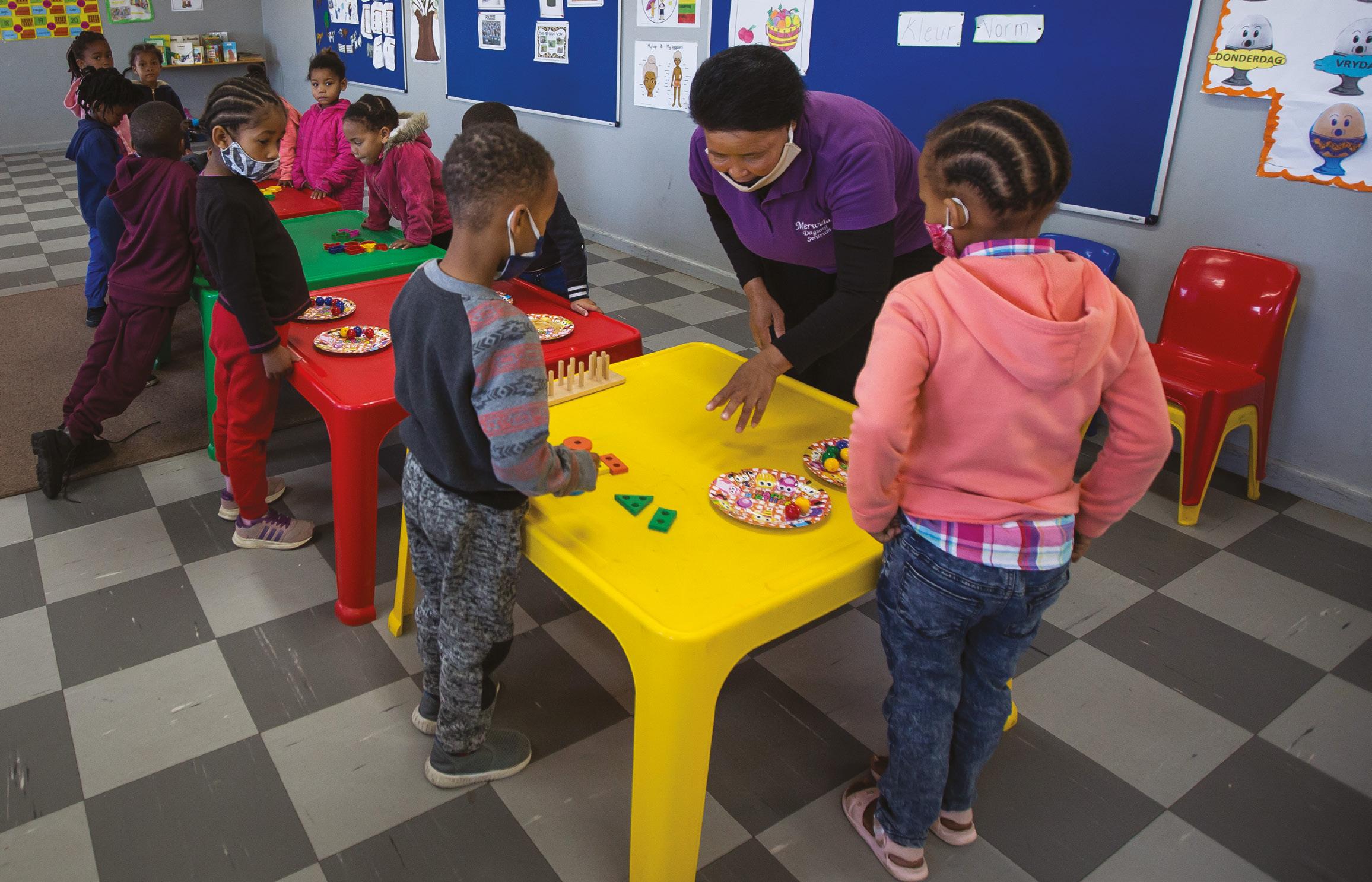
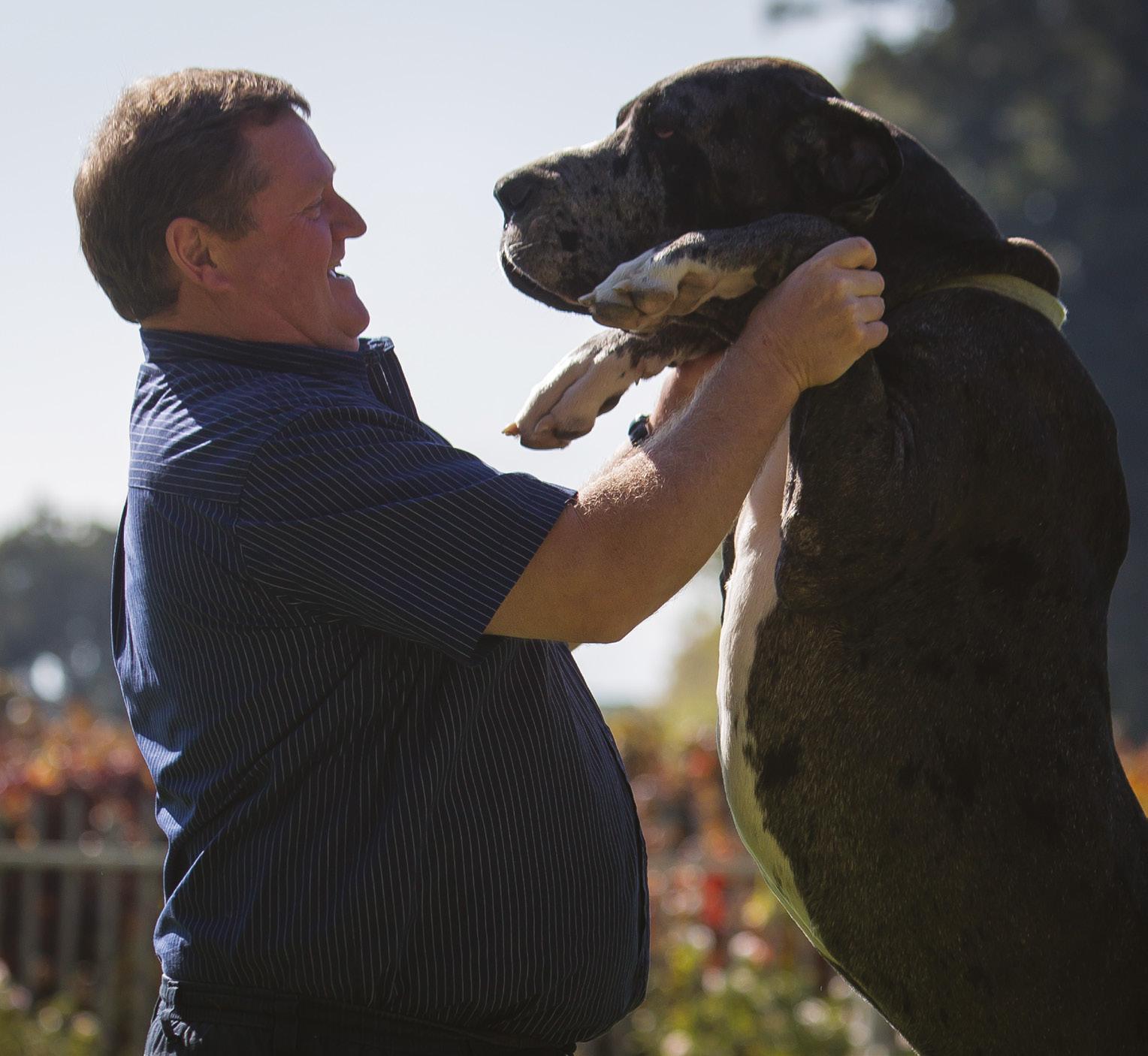
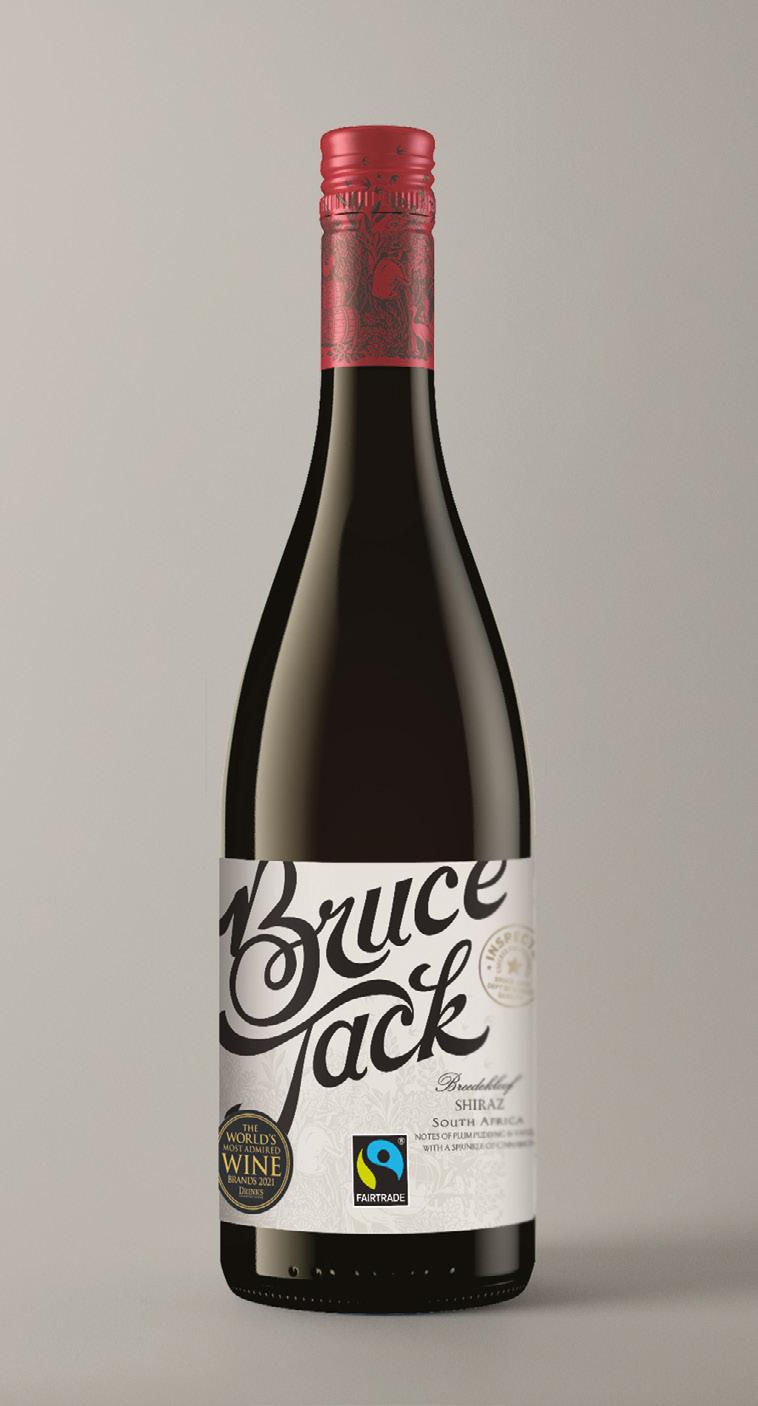
102 Jack Journal Vol. 3
Sofia Starts, a teacher at the Merwida Fairtrade Wine Farm school, helps the 4–5-year-old children in her class with a counting exercise.
Pierre van der Merwe, owner of Merwida Wine Farm, Rawsonville, with his dog.
Bruce Jack Lifestyle Shiraz and Chenin are Fairtrade accredited.
Van der Merwe goes on to explain that Fairtrade stipulates that farms must have a ‘joint body’ consisting of worker representatives who decide how their Fairtrade returns are spent.
He adds that of Merwida’s wine sales, 86 cents per litre of red wine and 96 cents per litre of white are paid back from retailers to the farm, and this is then available to the joint body to spend on benefiting workers.
For example, people who live on Merwida are transported to shops and church in the farm’s three minibuses, plus they have a yearly fishing trip to Elands Bay on the West Coast. There is DStv in each worker’s house, at a combined cost of R42,000 a month.
‘We have portable toilets for the workers – twenty in total, separate ones for men and women. Now you can imagine moving the toilets around the vineyard to keep up with harvesting,’ says Van der Merwe, smiling. Speaking to Jack Journal, the 53-year-old farmer’s speech is punctuated with joyful Afrikaans expressions like ‘o jitte!’
The sixth generation in his family to grow and ferment wine in the valley,Van der Merwe completed a degree in economics at Stellenbosch University, then spent a year in the army, before taking over the family business in December 1991.
At the time, Merwida was teetering on the brink of collapse. As bank managers nervously eyed the farm’s finances,Van der Merwe started making changes from the bottom up, focusing on working conditions. He was following his motto: ‘Grow in yourself, for a better future’.
Later, at international wine expos, he would learn of Fairtrade, which resonated with his personal vision. ‘My people on the farm, I wanted to make them a part of the value chain,’ says Van der Merwe. ‘Our farm’s vision was basically to create a sense of family.’
At the community centre, Shahida Persens is one of seven teachers who daily look after 112 children, aged between three months and 16 years old. The centre has jungle gyms, bright walls and shelves with books, and a designated cook who prepares two meals every day.
‘In the mornings we give them porridge, Jungle Oats or Weet-Bix,’ says Persens. ‘Then for lunch breyani, fish pasta, vegetables, soups, with yoghurt or fruit in between.’
Two of her own four children are still
attending the play school, where youngsters are helped with homework, as adults pore over computers in the adjoining room.
‘It really is important for people who work here, knowing that their children are safe,’ she says.
Her husband, Jonathan Persens, a farm supervisor and head of the joint body, nods. ‘So people on the farm can apply to the joint body to have their projects funded,’ he explains. ‘For example, there are the school fees which are covered. Normally it would cost parents R900 a year to send their child to school.’
At its core, Fairtrade is about dignity, about creating a better humanity. On Merwida, male and female workers receive equal pay. Workers have pension funds, and a medical doctor is on call. Swearing and disrespect is not allowed.
‘We have a grief procedure box,’ says Van der Merwe. ‘It’s for complaints about treatment. The admin ladies here open it. No more cursing is tolerated. I can tell you, it’s difficult after a long day in the sun.’


He laughs, concluding: ‘It’s not always moonshine and roses. But there’s a good attitude. I won’t say all workers have a positive attitude, but many do. And this makes it all worthwhile.’

103
At its core, Fairtrade is about dignity, about creating a better humanity. On Merwida, male and female workers receive equal pay. Workers have pension funds, and a medical doctor is on call.
Merwida
Bruce Jack Fairtrade
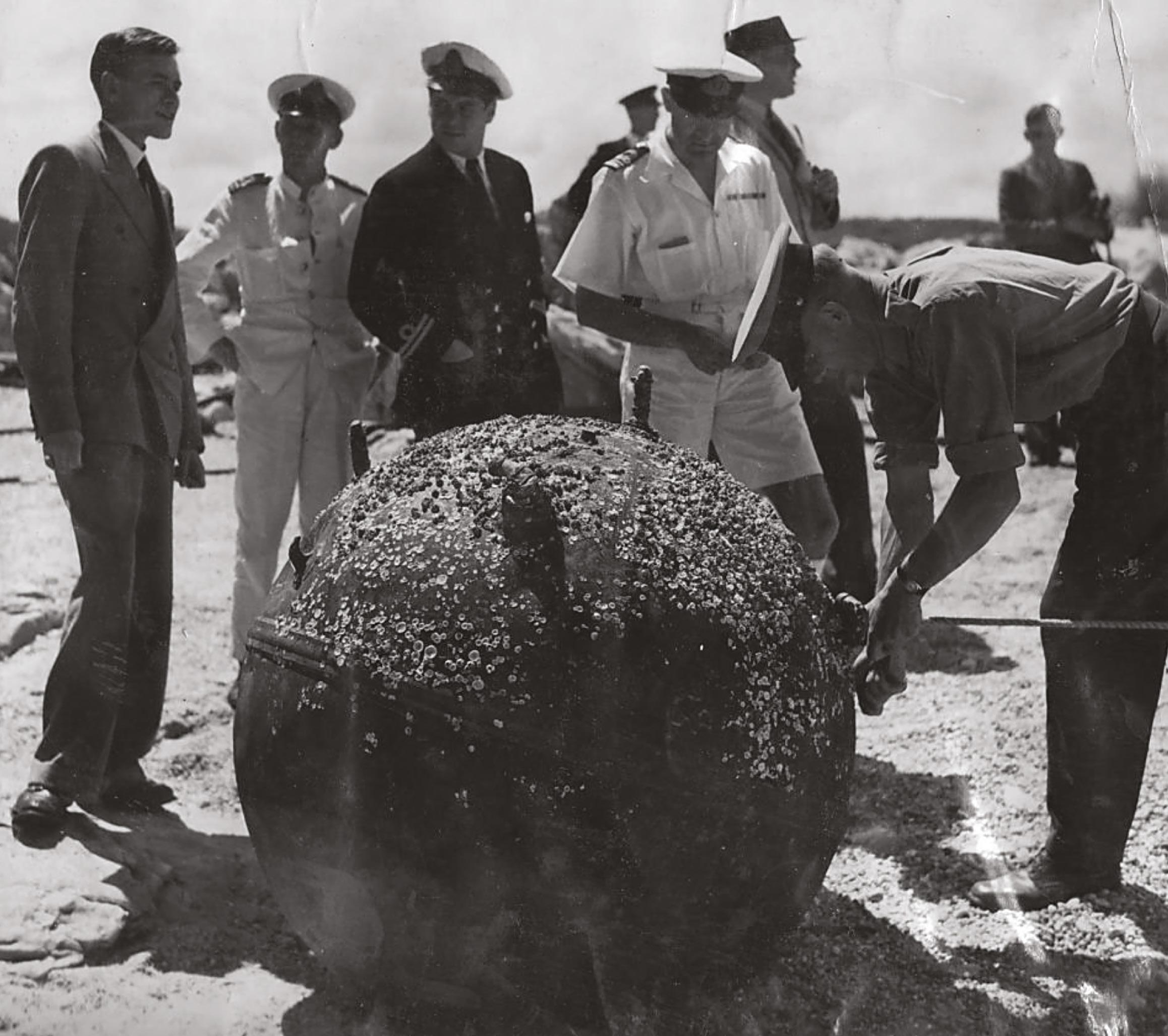
104 Jack Journal Vol. 3
Navy inspecting a German mine beached off Agulhas, 1940 (South African National Museum of Military History, Masondo Reference Library. SA Navy Photo Collection, S.A. 659).
raiders at the cape
When South Africa declared war on Germany on 6 September 1939, it is said that Hitler burst out laughing. It wasn’t long before Nazi raiders and U-boats were operating off the South African coast, and a local seaward defence had to be hastily established.
Written by: Justin Fox
I live in the Cape Town suburb of Mouille Point and my desk overlooks the city’s famous anchorage: The Tavern of the Seas. Watching the ships coming and going each day, I often think of the war years when thousands of vessels were routed around the Cape. When a convoy was in town, Table Bay would be crammed with more than 50 ships at a time, each one of them needing protection. In place of today’s yachts and pleasure craft puttering around the V&A Waterfront, minesweepers and antisubmarine vessels would make their daily round of the bay.
During the war, the Cape of Good Hope became a critical strategic point on the sea route around the continent and was particularly important during the North African campaign. Once Italy entered the
war in 1940, the Mediterranean became too dangerous for Allied convoys and most were diverted around the Cape. Much preparation was needed before Nazi warships made their way to Africa’s southern tip. The Royal Navy base in Simon’s Town had to be expanded and reinforced, and a fledgling South African Navy created almost from scratch.
First came the German surface raiders, then the U-boats. They attacked within sight of the coast and near the entrance to the harbours of Cape Town and Durban. There are incredible stories of heroism and cloak-and-dagger raids around our coast. For instance, one U-boat slipped into Table Bay and its captain allowed his crew to come up on deck and see the bright lights of Sea Point (all German cities were blacked
out at the time). Over a period of just two days in October 1942, thirteen merchant ships were sunk by U-boats around Cape Town. But the Allies soon hit back, and a Royal Navy destroyer sank one of the attackers, U-179, off Dassen Island on the West Coast.
There are many apocryphal stories that surfaced in the folklore of coastal towns, such as German sailors coming ashore and playing soccer with Nazi-sympathising locals, spies operating from Glencairn and letting the Germans know about ship movements in Simon’s Town, and farmers replenishing U-boats around Agulhas and Arniston. One of the more persistent and colourful rumours is of the body of a German seaman washed ashore with tickets to Cape Town’s Alhambra
105
Theatre in his pocket. There is another (tall) tale of U-boats putting men ashore at Bakoven where they took the bus to a cinema in Sea Point to brush up on their English!
During the course of the war, enemy submarines, raiders and mines sank more than 150 ships in South African waters. It’s an episode in the country’s history that went largely undocumented. During the war, this was justified given the need to maintain morale and keep ship movements secret. After coming to power in 1948, the Nazi-sympathising Nationalist Party did not wish to celebrate, or even acknowledge, South Africa’s war achievements. For them, the future of the country looked not
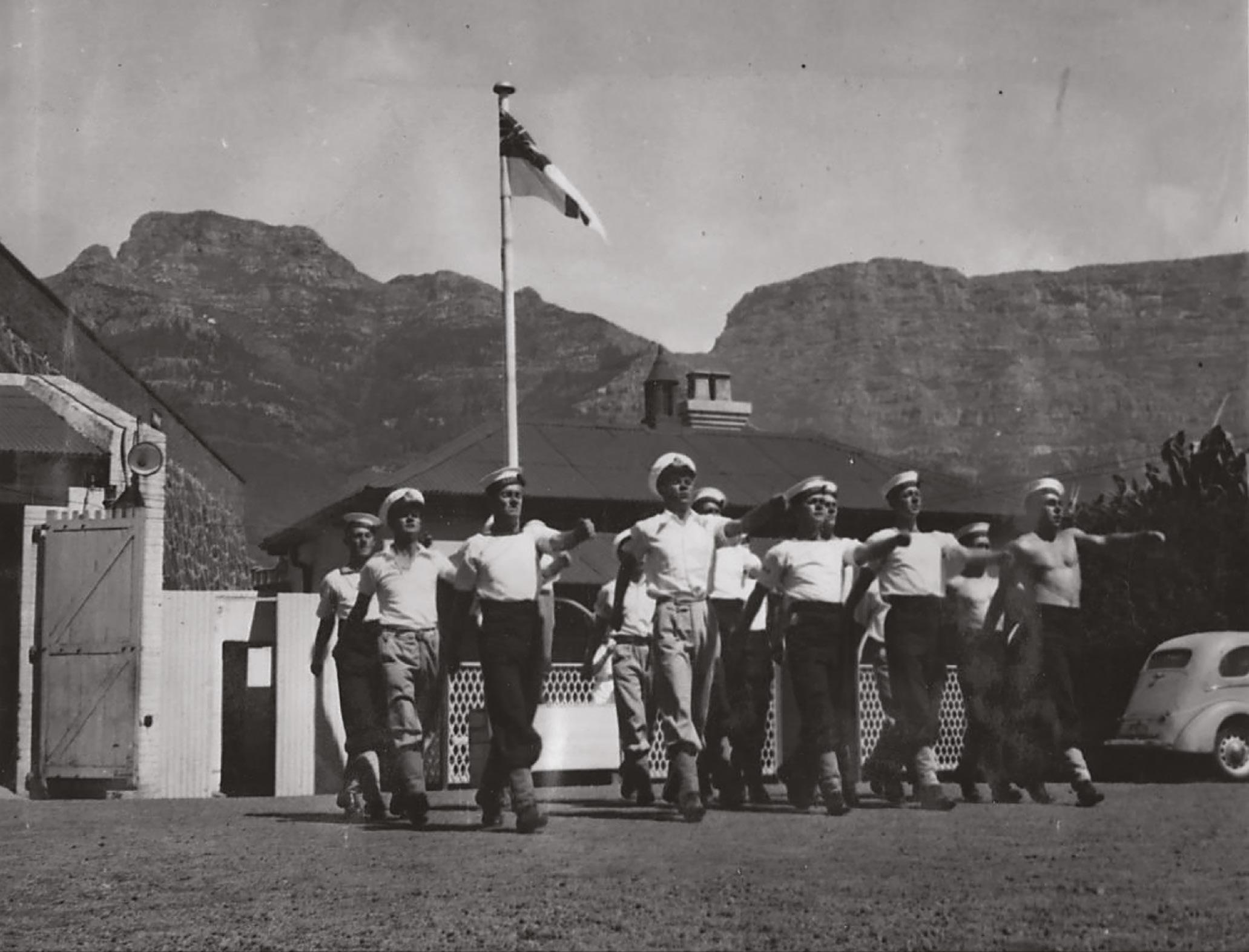
dissimilar to Hitler’s Germany, with racial segregation being central to their post-war plans.
Like many South African children of my generation, I had a fascination for World War II. I built model ships and aeroplanes, played war games in our suburban garden and devoured books about the great battles. But I was always mildly disappointed that most of the stories I encountered were about the North and that South Africa seldom featured in the accounts.
During my national service in the Navy back in the 1980s, I began to learn a little bit about the battles that had been fought in South African waters against Axis raiders
and submarines. German, Italian and Japanese naval forces all operated close to our shores and sank many ships within sight of land, often focusing on the bottlenecks of Cape Town, Cape Agulhas and the Mozambique Channel.
I became interested in the minesweeping exploits of South Africa’s ‘little ships’. If the actions of raiders, U-boats and convoys were soon forgotten by the general public after the war, the exploits of minesweepers hardly received mention at all.Yet the industrious, daily sweeping by these vessels kept South African ports open. Theirs was an extremely hazardous endeavour with no visible foe and hardly any chance to hit back – just the lottery of endless sweeping through deadly waters.
106 Jack Journal Vol. 3
Seaward Defence Force officers in training at Cape Town Castle, circa 1940 (South African National Museum of Military History, Masondo Reference Library. SA Navy Photo Collection, S.A. 1651).
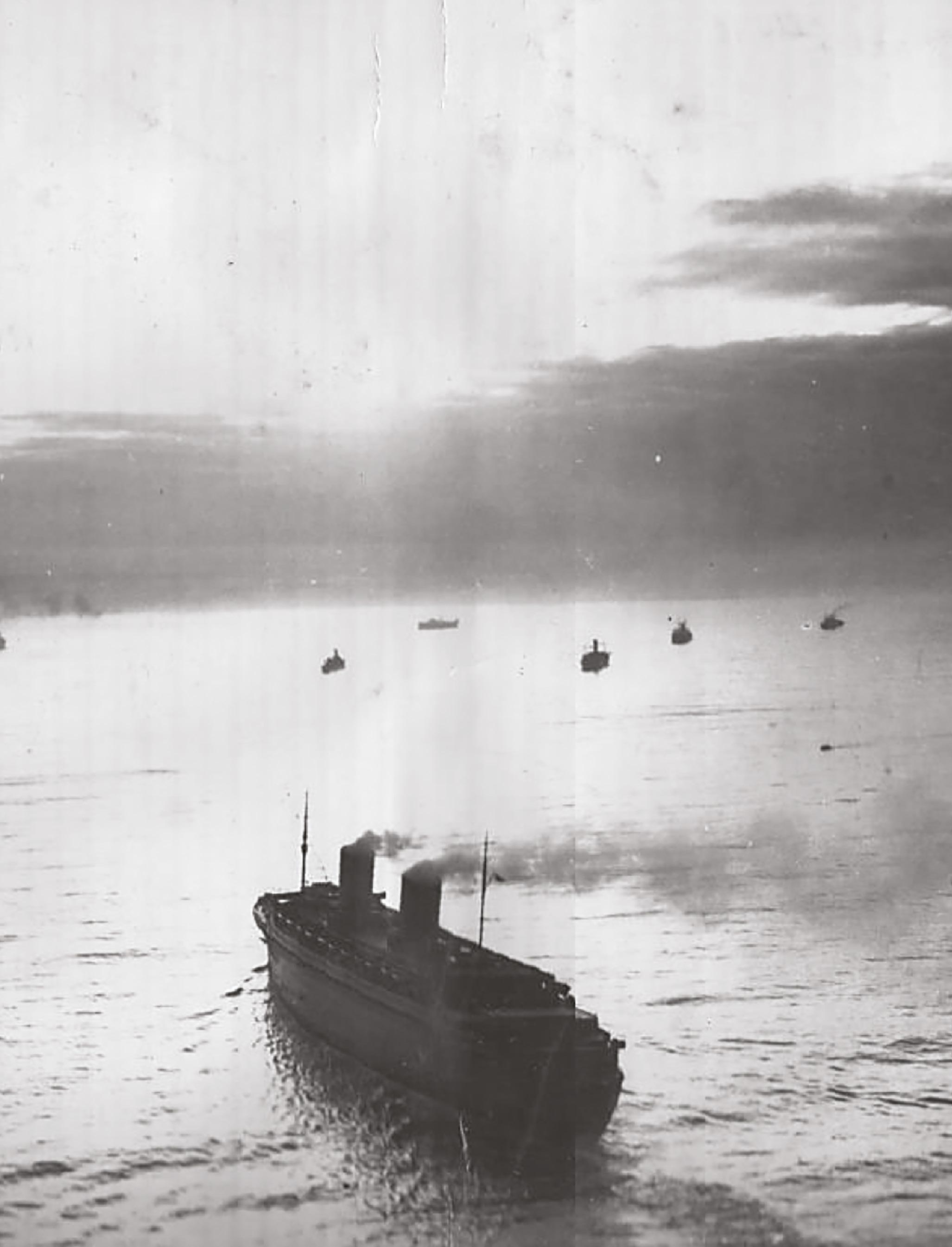
107
Allied merchant convoy approaching Cape Town (South African National Museum of Military History, Masondo Reference Library. SA Navy Photo Collection, S.A. 459).
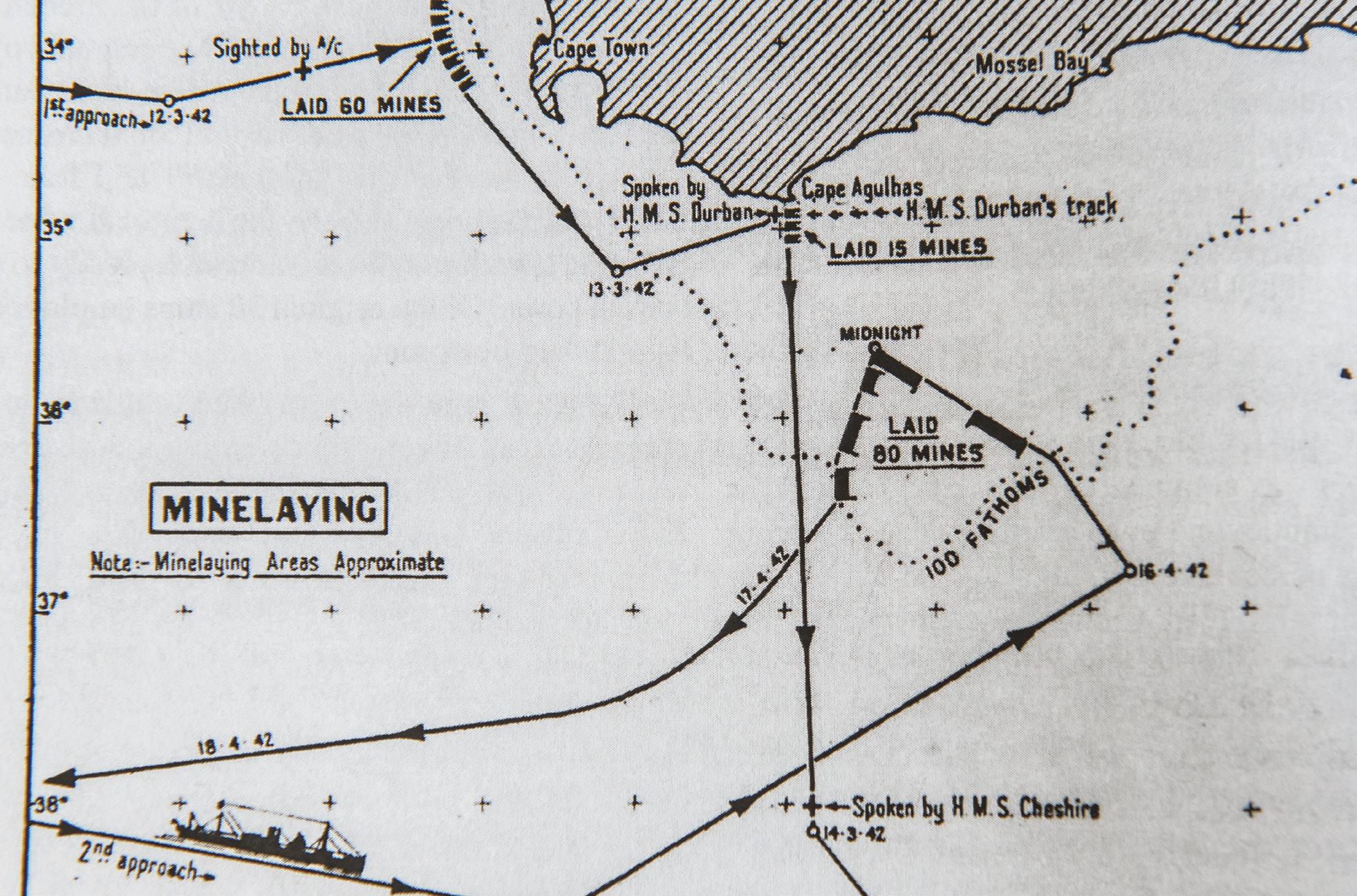
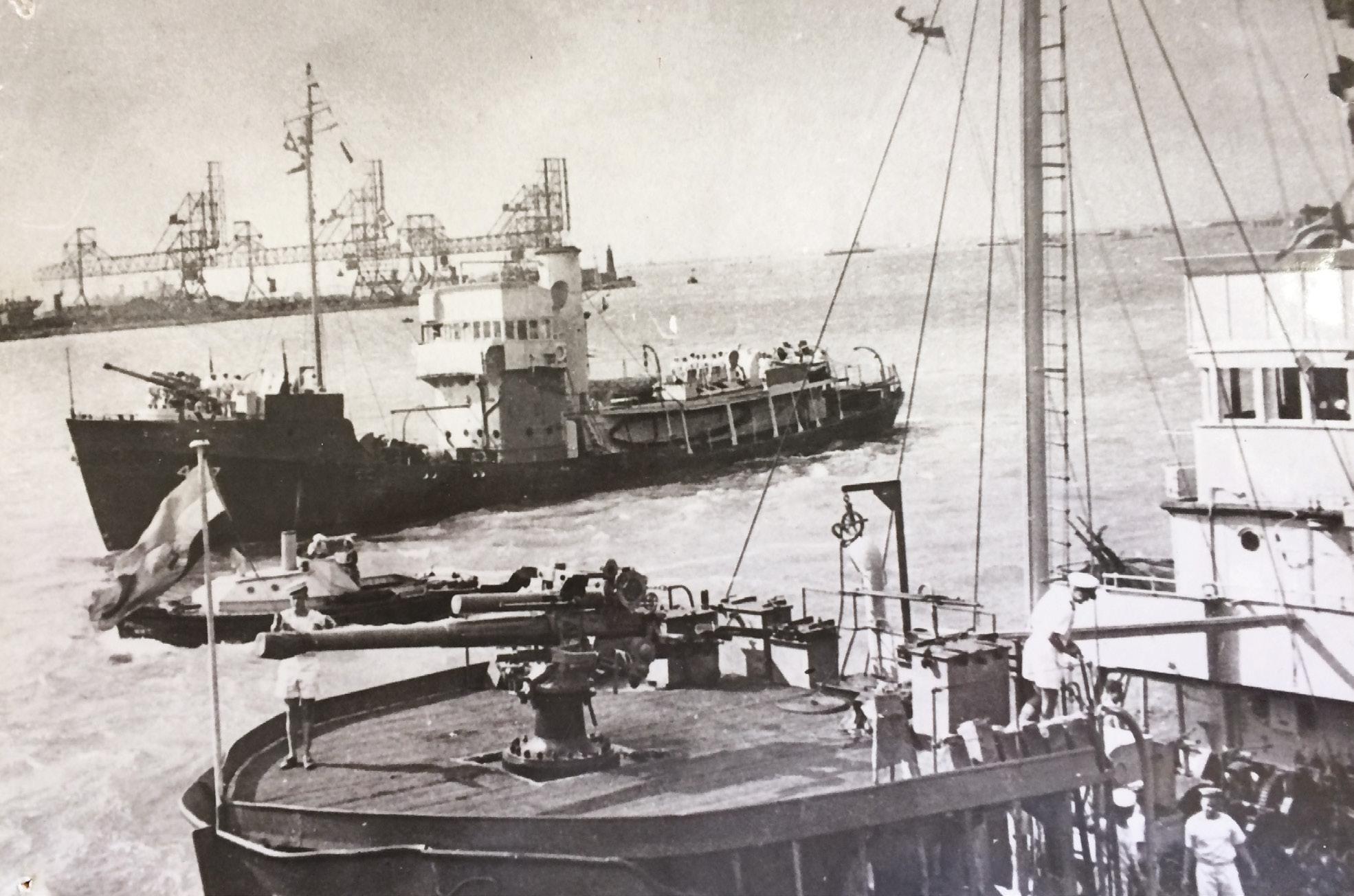
108 Jack Journal Vol. 3
Nazi minelaying map from War in the Southern Oceans.
SA minesweepers, SANMMH museum, photo P James.
Coastal gun, Signal Hill, Cape Town, circa 1940. (South African National Museum of Military History, Masondo Reference Library. SA Navy Photo Collection, S.A. 987).

Most of these vessels were converted I&J fishing trawlers or Norwegian whalers, which were hastily fitted with a few guns and minesweeping equipment. Many of them served in and around South African harbours, some were sent to sweep minefields further afield (such as those laid off Cape Agulhas by Nazi raiders), and a few served with distinction in the Mediterranean.
My research took me down a number of fascinating rabbit holes. At the British National Archives at Kew in London I found many of the original logbooks of the minesweepers. Even more rewarding was dipping into the Simon’s Town Museum archive, as well as the archives of the Simon’s Town Naval History Museum and those of Snoekie Shellhole, attached to the Simon’s Town Museum (especially their meticulously recorded personal accounts of those who served at sea during the war). My research also brought me into contact with retired naval officers – all of them similarly passionate about World War II – who were happy to offer anecdotes and guidance. I was particularly interested in German
commerce raiders, such as the Pinguin and Atlantis, which operated off the South African coast. Raiders took on various disguises and adopted different nationalities in order to remain undetected. Using a veritable box of tricks that included fake ventilators, collapsible deckhouses, telescopic funnels, masts that could be raised or lowered, and myriad paint jobs, their appearance could be completely transformed while at sea. One day a raider might be masquerading as a Greek tramp steamer, the next as the smart flagship of a Swedish line.
Nazi raiders were wolves in sheep’s clothing, prowling the oceans of the world and able to stay at sea for up to a year without needing replenishment. At a casual glance, they looked like any ordinary merchant ship, but they concealed awesome firepower that could be revealed at a moment’s notice. As such, these ships were highly effective weapons that were very hard to counter. For instance, Pinguin sailed 59,000 miles and was responsible for the sinking or capture of 32 Allied ships, while Atlantis spent 601 days at sea and sank 22 ships.
My interest in this period of history and the heroic efforts of South African sailors has a personal and patriotic aspect to it. Winston Churchill talked about World War II as being Britain’s finest hour. In the past 100 years, I think South Africa has had two ‘finest hours’, both of them linked to great leaders who were able to inspire and galvanise. These are the rainbow, Madiba years after 1994 and the Jan Smuts years of World War II, when (most of) the nation came together against a common enemy. The crews of the South African ships were multiracial, the fight was unequivocally for the ‘greater good’, and victory nonnegotiable. It’s a period that continues to inspire.

109
Justin Fox
diary of a london restaurant owner 2021



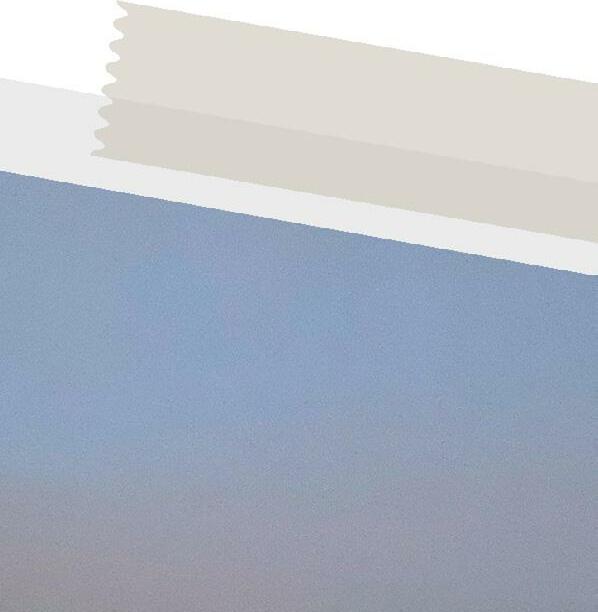
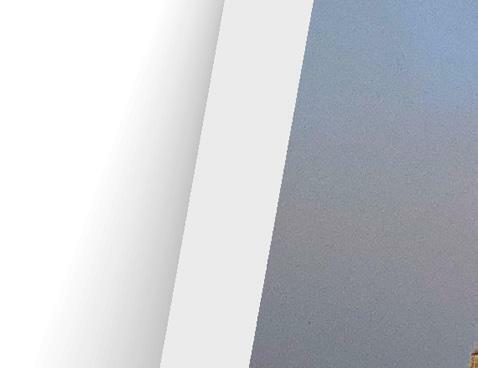


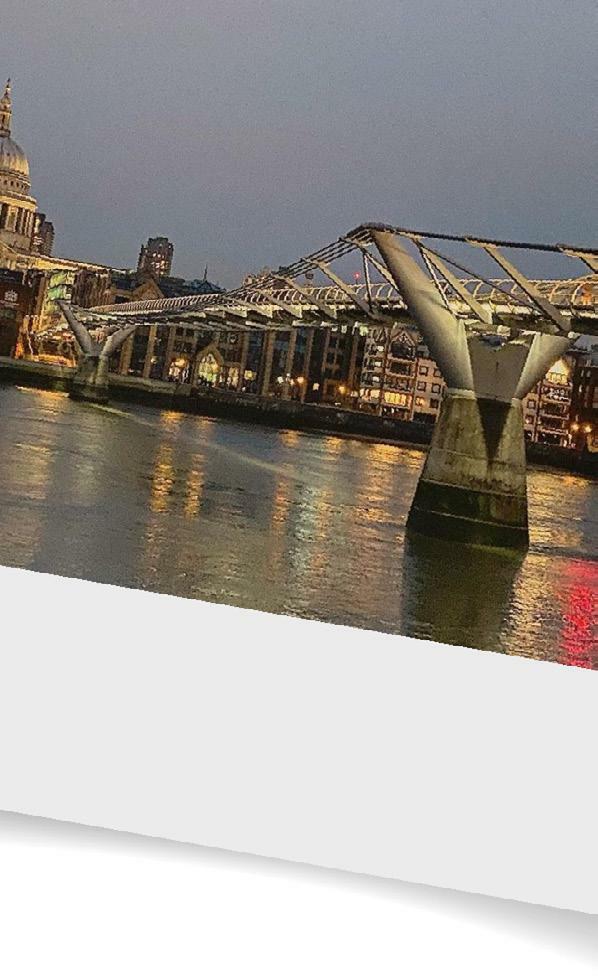
 Written by: Neleen Strauss
Written by: Neleen Strauss

110 Jack Journal Vol. 3
Want to get totally invigorated? Spend a month in the Southern African bush –Ingwelala and Ntsiri if you are lucky, over December and January. That will sort you out and make you think clearly again as it did for me.
I decided High Timber needed a facelift during UK lockdown. It never crossed my mind that painting 400 square metres with secret nooks and crannies might be time consuming and might need three layers. I’m convinced we kept the masking tape manufacturers in business for two months. Staff popped in to help on alternate days, and we had a good time making High Timber pretty.
This redecorating job went slowly, but I loved it. Leyland Hardware in Farringdon became my local. I have a pair of paintstained Levi’s I should frame, and my nails can now have their own TV horror channel.
26 February
Towards the end of February our upstairs dining room was a new restaurant. Chuffed! And, then, unexpectedly, surprisingly, and definitely unwantedly, we got blessed with an indoor swimming pool in our basement, home to our two wine cellars and private dining room. Situated as we are alongside the Thames … inevitable? Not. The water tanks in the posh flats above burst. I didn’t see the actual burst, no one saw it because we are all still alive, but I thought of the time I stood at the side of the mighty Mosi-oa-Tunya (Victoria Falls, for nonAfricans) and admired the thrust of it all. Knee-deep disaster without the African sunsets. Water seeping happily through the building like a new underground river wanting to join the already underground River Fleet 500 metres away; flowing into lift shafts, corridors and ultimately settling down in our happy place full of wine.
Physically, this new waterfall’s origin was outside of our ‘demise’, so the managing agents of the building should have taken responsibility. Accepting responsibility in this day and age doesn’t come naturally. Why is that? Oh, they sent someone with a sucking-up-water machine that resulted in more water coming in – remote building management at its finest. My protests fell on deaf ears in a posh office somewhere. Had a solicitor firing off letters, ignored by their solicitor. Then in a stroke of emotional desperation invited the Corporation of the City of London’s Pollution Control Team for a look-see. That got some attention and someone did something to a valve of the tanks and they stopped flowing … after 17 days.Yes, it took them 17 days. But really, it shouldn’t have bothered me as we were not open was the coded message.
March
Dehumidifiers got everything dry after weeks of sucking, carpets were ripped out and replaced, both cellars and the dining room got a loving makeover. The result, our downstairs area is 90% new. We have until mid-May to sort out the last bits and bobs. That is when the Covid bugs stop attacking people inside restaurants, apparently.
A moment to think and to write – tomorrow Chef is in the freshly painted and highly scrubbed sterile kitchen, prepping some biltong and other essentials for our outside opening next week. The kitchen will have renewed life after four static months; the chefs will banter and drink dumbfoundingly strong coffee, the smell of bearnaise will be missing, but we will quietly smile behind our masks. We’re here, and next week we have our customers back – warmly dressed, sitting on the banks of the mighty Thames, overlooking the Tate Modern, Shakespeare’s Globe and the Wobbly Bridge, sipping on South Africa’s finest wines and enjoying great food.
April
Writing this in a snow flurry, glass of Donovan Rall’s soft and sensuous Cinsault in hand, after a Zoom masterclass with him and waiting for a Deliveroo Capricciosa pizza with extra capers from Santoré in Exmouth Market – lockdown life 2021.
It is April in London, one week before we reopen High Timber. Again. After four months of doing ‘nothing’, it’s almost time to dust off my make-up and sharpen the little blade on my waiter’s friend.




So, how do we reopen time and again after each lockdown? It is a bit like opening a brand-new restaurant with the added bonus that the staff are trained and suppliers established. This time we go from a Christmas menu to a Spring menu (although we had summer on Tuesday and I braaied for friends on the High Timber terrace). We take the heavy reds off the wine list and add more whites. We had the fridge engineer come in to check them – they all needed gas today after being inactive for months. We had the plumber service the pipes, the pumps and the loos, the sparky trek around with an oversized weights belt

111 10 April 31
January
“The water tanks in the posh flats above burst. I didn’t see the actual burst, no one saw it because we are all still alive, but I thought of the time I stood at the side of the mighty (VictoriaMosi-oa-Tunya Falls, for non-Africans) and admired the thrust of it all. “
30
12

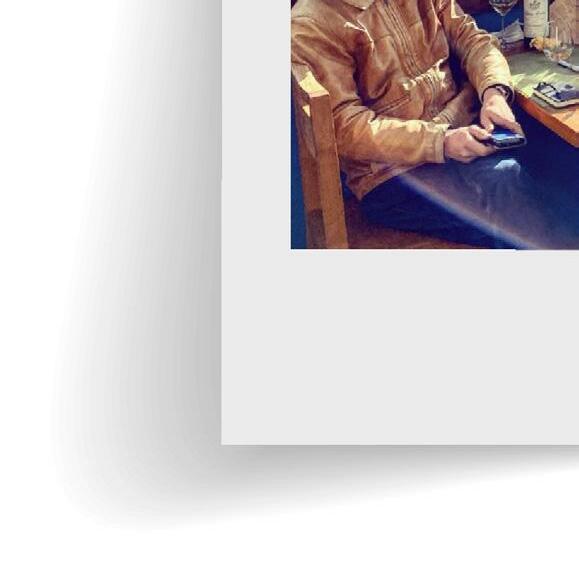

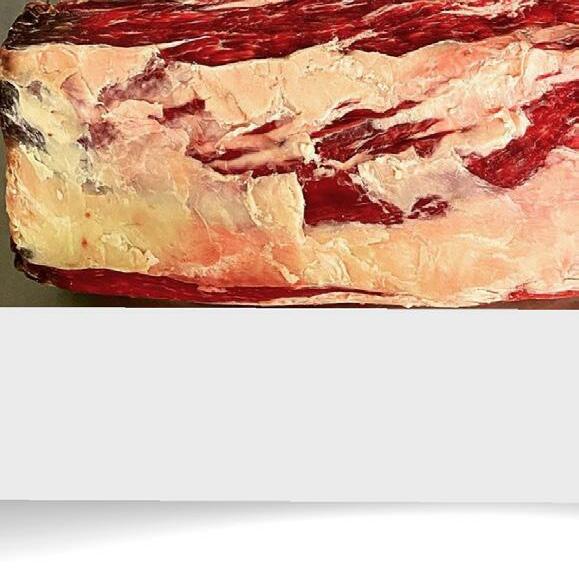



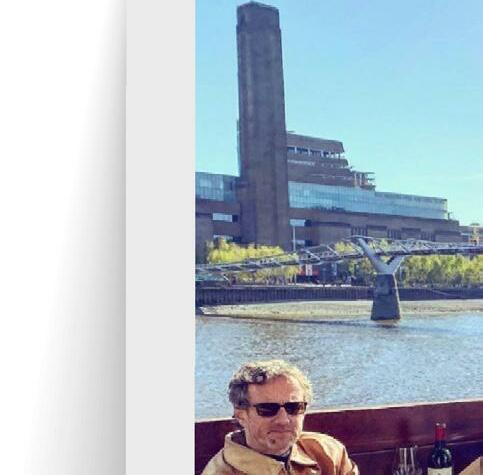
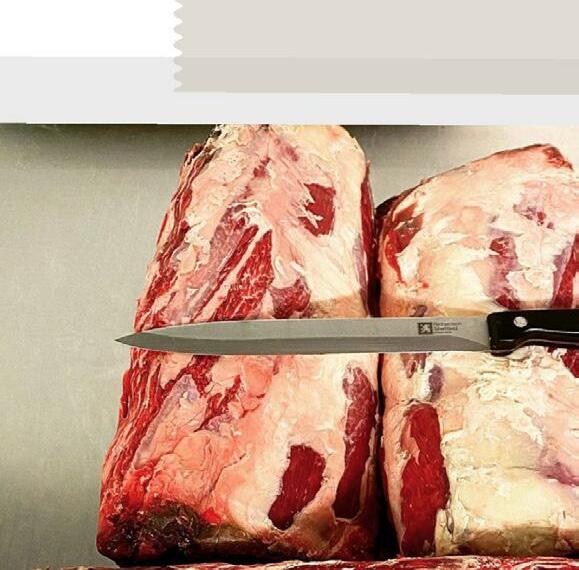







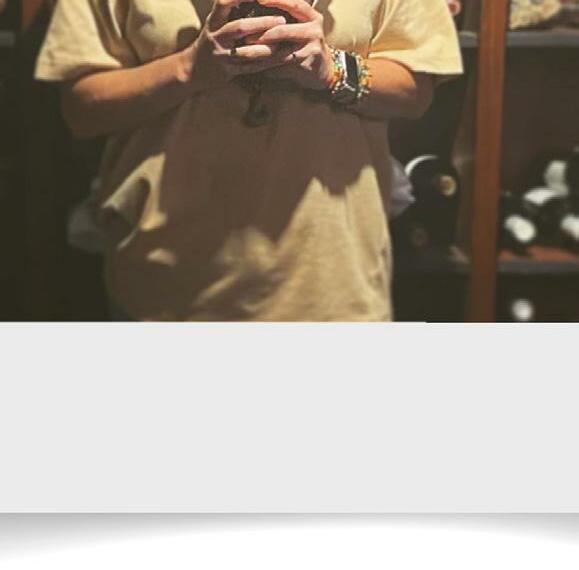



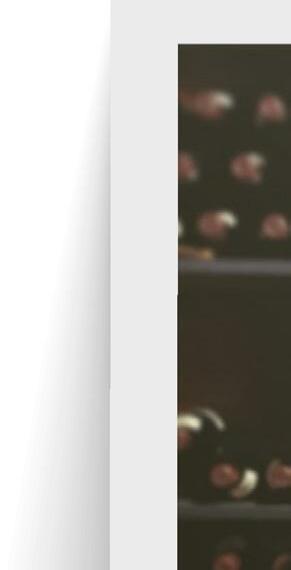
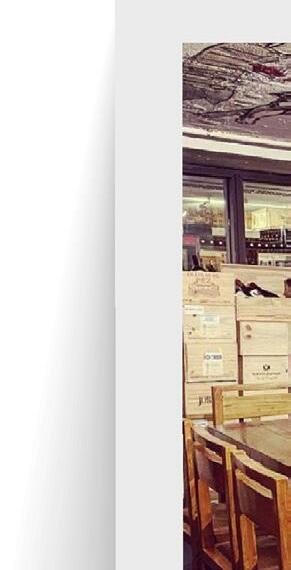

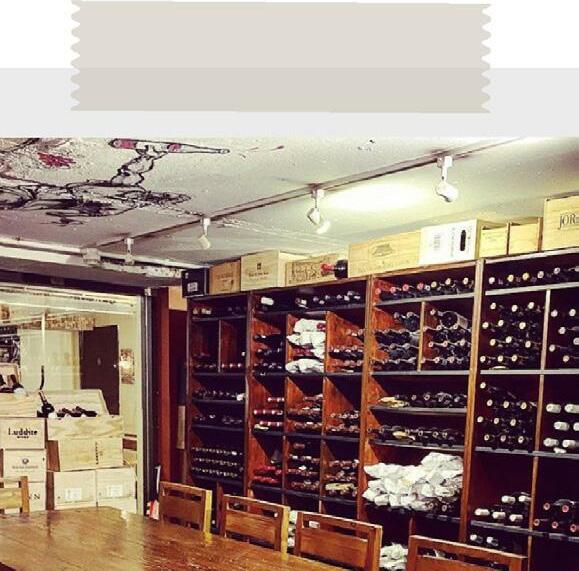


112 Jack Journal Vol. 3
prodding electrical things. We goad people on social media with fabulous pictures of our steaks, and we’re ready. Easy!??



31 April
Two weeks of outside trade has happened. Our regulars sat steadfast in the snowy winds for an average of four-and-a-half hours over lunch. Some of them went home before 9pm too! Long lunches got a new meaning. The waiting staff never complained about their masks; it added heat and hid their frostbitten noses and cheeks. We sold ridiculous wines, had the friendliest customers ever, and the staff were bought more drinks than the previous twelve years combined.
31 May

Restaurant life has settled back into a fairly expected routine. Being inside with heating is a fabulous bonus – the little things we take for granted … I had to employ more staff, which proved challenging. Between Covid and Brexit, the EU nationals became scarce, and demanding. During an interview with a sous chef candidate, he told me he has issues serving anything with eyes; another one demanded cash only; a girl had tattoos over her entire face. Lady Luck eventually smiled and dealt us a perfect Sous. And he’s English to boot. A South African winemaker lent me his son for six months to waiter. Add a Peruvian food runner, and High Timber was fully staffed for the first time since Christmas 2019.
So here we are. ‘Double jabbed’ and ‘virus’ have been overtaken by ‘pinged’ as the buzz word. People are planning their year-end functions, they’re looking at holidays, they’re sitting at large tables discussing the year that was – the losses, the gains and the kindness of strangers, to quote Blanche.
The virus has changed things permanently in the hospitality industry, some of it for the better.
All we can do is hope that Boris and his maatjies don’t lock us down again. Onwards, upwards and sideways. Rolling, always.
Cheers!
113
“ It is April in London, one week before we reopen High Timber. Again. After four months of doing ‘nothing’.”
29 July
“ During an interview with a sous chef candidate, he told me he has issues serving anything with eyes; another one demanded cash only; a girl had tattoos over her entire face.“
High Timber Restaurant
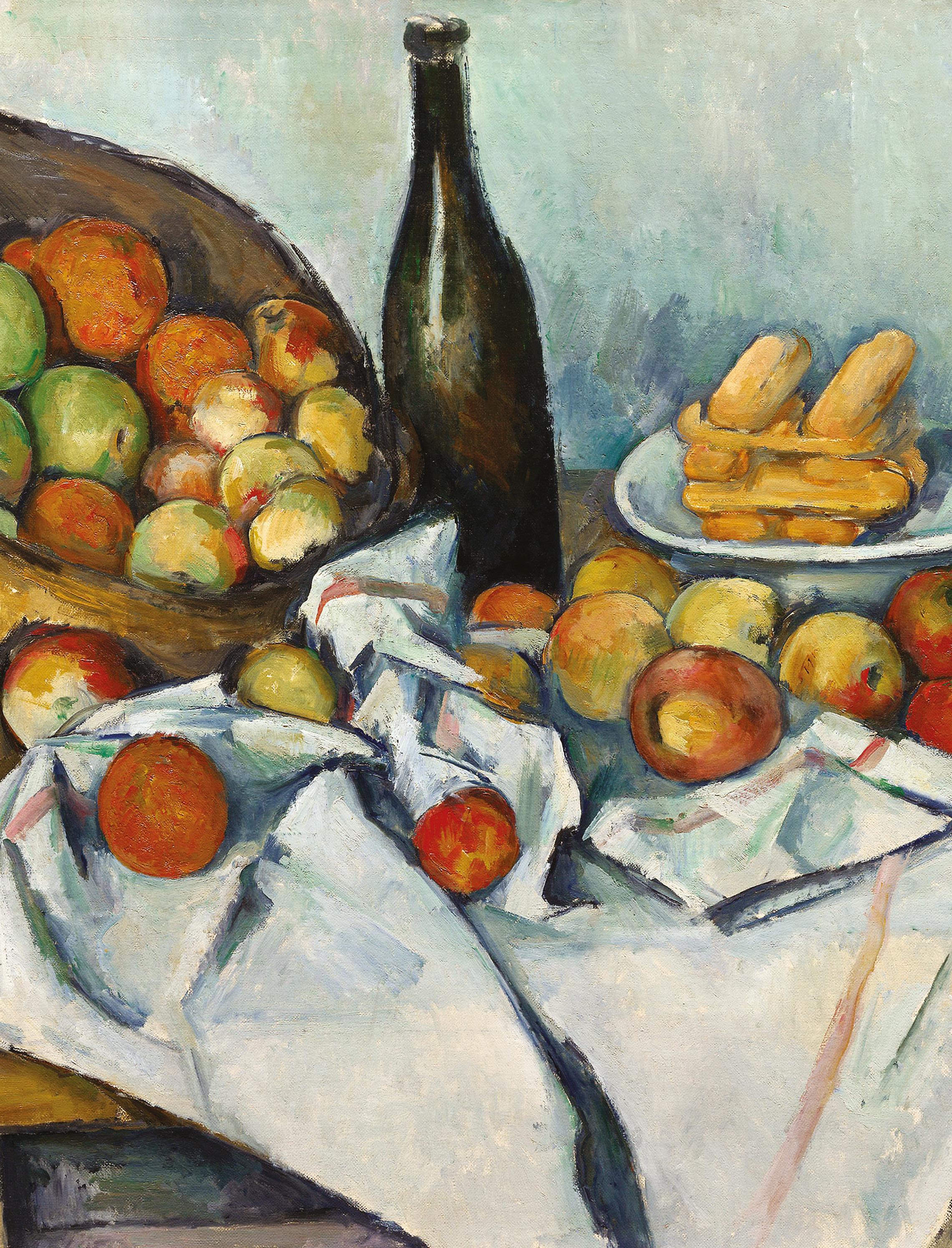
114 Jack Journal Vol. 3
The Basket of Apples (ca. 1893) by Paul Cézanne.
a meeting of two worlds
Written by: Felicity Carter
It seems a universal rule that whenever one or more wine writers gather together to talk shop, the first item on the agenda is tasting notes. How long should they be? How many flavour descriptors are reasonable? How do you write in a way that the site Fake Booze won’t mock you?
For more than a decade, I was the editor of Meininger’s Wine Business International Over that time, I worked with more than 30 or so writers from around the world, from places as far flung as South Korea, Singapore, India and Iceland. If there was somewhere where people were growing wine, drinking it or selling it, we tracked
down a correspondent and commissioned a story.
But no matter where the writers came from or what they were writing about, they nearly all wanted to sneak in a tasting note. A story about French appellation regulations? Sales of Zinfandel in Sweden? All opportunities to hold forth about the taste of something.
Before Meininger’s, I’d assumed that working with international wine writers would introduce me to a wide and diverse world of storytelling and wine opinions. Nothing could be further from the truth.
There were minor differences to do with national journalism traditions. Russians had mordant wit. Germans handed in articles so weighed down with statistics that whole paragraphs had to be turned into tables. British writers submitted work both
idiosyncratic and erudite, while Australian interviews were often full of swear words.
But while the style was individual, the substance wasn’t. Wine writers across the world write about wine in much the same way, think about it much the same way, and value the same attributes, more or less: central Europeans prefer a bit more acidity, while Scandinavians love rich reds, but all parties largely agree on which are the finest acidic whites. Jamie Goode calls this ‘the community of judgement’, and nothing more clearly demonstrates the international nature of wine than this taste concordance.
But I did discover one, singular difference between writers. The wine world, it turned out, was bifurcated. There were the Americans, and then there was everybody else. Thanks to the pandemic, that wall
115
between us is dissolving, and it’s interesting to speculate on what that means for wine.
French connection
The story of American wine is intimately and uniquely bound up with France, in a way that has put the USA on a unique wine trajectory.
It starts with Thomas Jefferson, the third president of the USA, writer of the Declaration of Independence, and lover of French wines. In 1785 he was sent to France, where he made a point of visiting Burgundy, Bordeaux and the Rhône Valley, and then on to Piedmont. So enchanted with wine was he that as well as importing bottled wine into America, he also tried to grow vines at his Monticello property in Virginia.
A few decades later, a young Frenchman called Alexis de Tocqueville arrived in America. In 1835, he produced the first volume of Democracy in America. Now considered one of the defining political works of the 19th century, it offered Americans a view of themselves that they embraced. That both countries had been born from revolution just strengthened the bonds between them.
And Paris was where young Americans headed, which remains true today. Josephine Baker, Gertrude Stein, Ernest Hemingway, you name it – they went to France. So did Julia Childs, who brought home the art of French cooking. Back home, pioneer Robert Mondavi regularly showcased his wines against their French counterparts.
And, of course, the great coming-of-age moment in American wine history was the 1976 Judgement of Paris, when California wines bested those of the French.
Then came Kermit Lynch’s Adventures On the Wine Route (1988). ‘It’s no accident that, more than 30 years later, it continues to be a book cited by many in the wine trade as one of the most influential they have read,’ wrote Eric Asimov in the New York Times. The wine route in question, of course, wound through France.
While Italian wine has also played a significant role in America’s wine story, it’s still true that for many Americans, French wine embodies the platonic ideal of what wine should be. Americans may have wearied of top Bordeaux, but they’re still stocking up on the Loire and Beaujolais.
The American wine trade does have other unique features. One is that American wineries rarely export. With a few rare exceptions – Opus One, Stags’ Leap and Harlan Estate at the top, and Apothic and Barefoot at the other end – American wines are rarely seen outside the USA. Instead, Americans are used to the world beating a path to their door, wanting a piece of the most lucrative market in the world.
Until recently, American writers also travelled less than their counterparts elsewhere, thanks to a media that took ethics seriously, and frowned on press trips and freebies. While Wine Spectator regularly sent staff to the New World, other publications tended to spend their travel budget on the Old.
But while the American wine industry was busy behind its own borders, one American – Robert Parker, of course – made an outsized impact on the world after he, too, fell in love with wine on a trip to France. The days of winemakers making opulent reds to suit his palate are over, but the 100-point scale he popularised continues to make its presence felt, particularly in the fine wine market, where a single score can have a ripple effect, changing prices up and down the vintage chart.
And, of course, there are vineyard-trotting Americans and American wine judges. In the main, however, America has been a wine land apart.
Empire wine Britain, despite its proximity to France, has a long history of buying wines from elsewhere: medieval nobles drank wines not only from France, Germany and Italy, but also Greece and Spain. Not only did their tastes (and their wars) shape the fledgling global wine trade, but their status as an empire gave them geographical reach. By the end of the 19th century, London was the undisputed centre of the world’s wine trade.
And, eventually, it cemented this status with formal credentials: in 1953, the Institute of Masters of Wine (IMW) was founded; in 1969, the Wine & Spirit Education Trust (WSET). Other institutions followed, from wine competitions to Liv-ex, the fine wine exchange. And both wine writers and members of the trade alike are widely travelled, thanks to their proximity to the continent.
In the 1980s, when New World winemakers decided to export, they headed straight to London. For Australians, the British embrace of Rosemount Chardonnay marks the start of its export boom; for New Zealanders, it was Cloudy Bay.
In the past decade, the IMW and WSET have expanded globally, including into China. Wine professionals around the world now flaunt British credentials, and write tasting notes accordingly, using the language of the WSET.
Not only that, but the top London wine competitions make a point of bringing in the world’s best wine experts, wherever they’re found, while the London Wine Fair used to be the place where the world’s wine producers met one another, until ProWein took that role. Not to mention all the people who got their start serving in a London wine bar, or slinging cases at Oddbins. Then there are all the British expats forging relationships on the continent.
What began in London as merchants bringing in wine for the nobility has become a global wine community.
Enter Zoom
There have always been widely travelled Americans who have a rich understanding
116 Jack Journal Vol. 3
It starts with Thomas Jefferson, the third president of the USA, writer of the Declaration of Independence, and lover of French wines. In 1785 he was sent to France, where he made a point of visiting Burgundy, Bordeaux and the Rhône Valley and then on to Piedmont.
of wine, some of whom are regulars at European wine competitions and fairs. The natural wine community has been at the forefront of building an international community, and then there are plenty of regional wine communities. And the rise of cheap airfares saw more Americans travelling widely.
But, until recently, it’s been broadly true that there have been these two separate wine communities in the world.
Then came the pandemic, and with it came Zoom. It took a while for people to work out the etiquette – I remember one Zoom tasting where the winemaker stood in a vineyard, singing to us, while we smiled and nodded on the other side of the screen. There were wineries who turned their presentations into scripted extravaganzas, with winemakers mouthing words, and music swelling in the background.
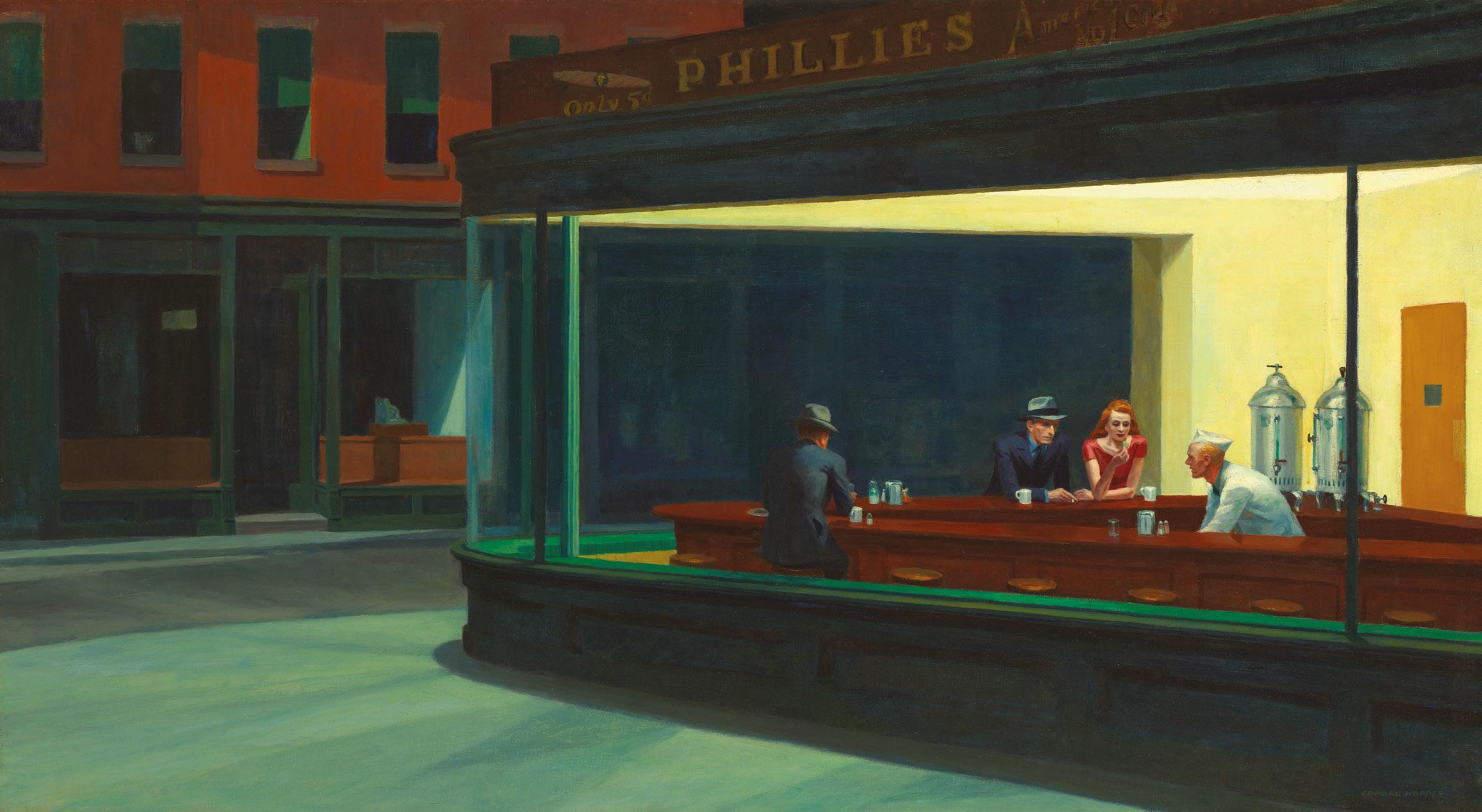
But for most of us, Zoom offered

a way to talk and taste together. And that’s when the magic happened. Once the burden of airfares was gone, doors were flung open. Ray Isle, the wine editor of America’s prestigious Food & Wine magazine, and Eric Asimov, the Chief Wine Critic of the New York Times, became regular guests on British webinars. In turn, the Americans invited the world to their professional development events. This year’s Wine Writers Symposium not only featured international guest speakers, but wine writer attendees from around the globe.
My takeaway from this mingling is not that the world is going to see an explosion of wine writing diversity. My experience at Meininger’s has taught me that people who become wine writers are fascinated by the same things as are their counterparts elsewhere.
But what this cross-fertilisation may
do is open up the world to one another, particularly as the rise in tubes and other small formats makes it cost-effective to send international samples. Writers outside the USA will learn more about what’s going on in California as well as in lesser-known regions. Americans will discover that their counterparts elsewhere are enthralled by South African wines.
And when the camera is turned off, they will all turn and write tasting notes.
117
Edward Hopper, Nighthawks, 1942, The Art Institute of Chicago.
Felicity Carter
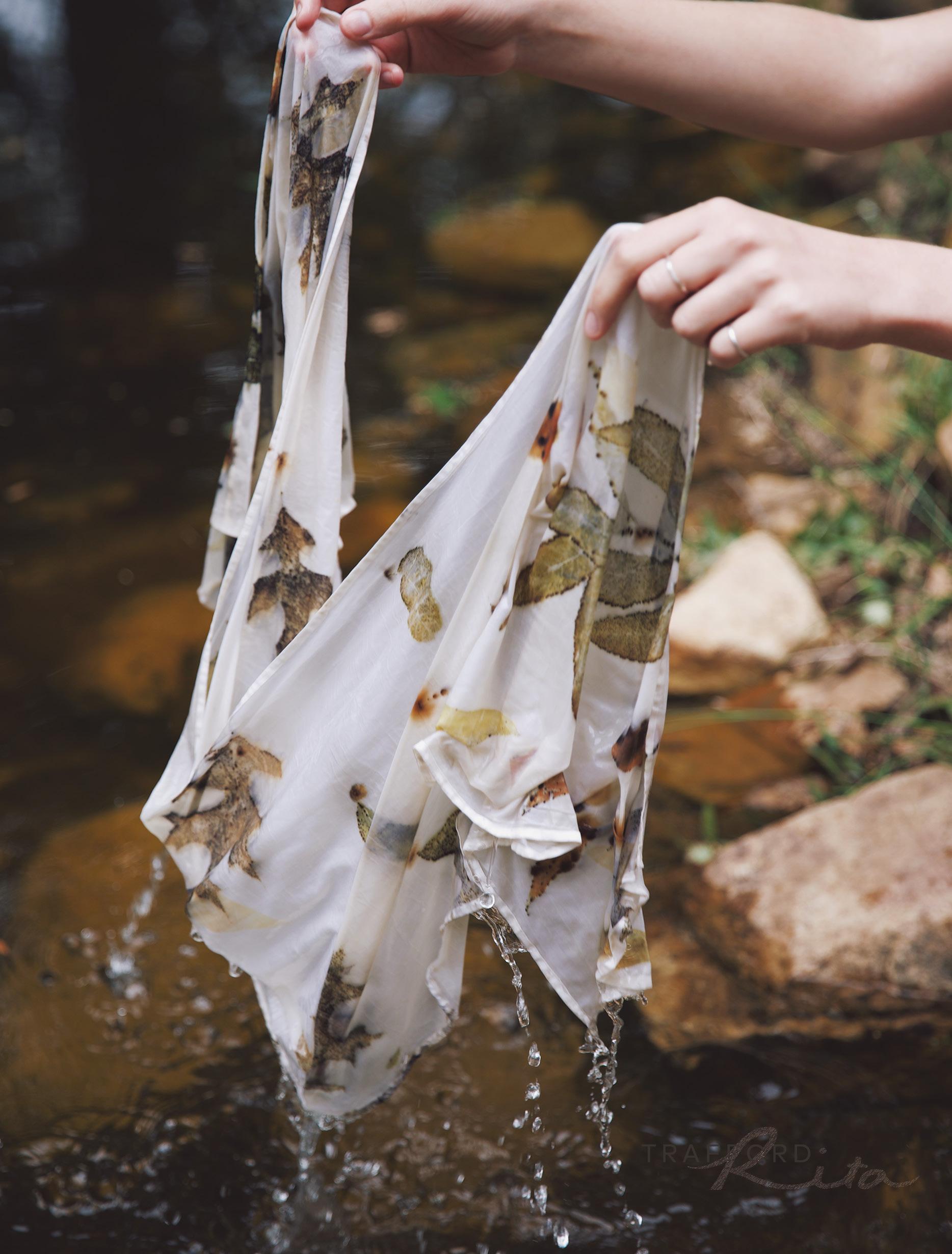
118 Jack Journal Vol. 3
eco-printing. inspired by nature and working with her seasons
Written by: Rita Trafford Photography: Rita Trafford

I capture what nature sheds between the folds of silk and occasionally linen; borrowing from nature the newness of spring, the intensity of summer, the ochres of autumn and the starkness of winter, and permanently imbedding them in wearable art scarves.
When the presence of pigments, tannins and acids in the leaves, the tendrils and spent blossoms combine with the natural cloth, mordant, water, heat and pressure, the images of the foraged botanicals are imprinted permanently on the cloth.
After many years of painting and with an unsettling empty nest looming in 2016, I googled ‘printing’ one restless evening. Eco-printing and leaves popped up. Because I live on a mountainside wine
farm in Stellenbosch, South Africa (De Trafford Estate), I have lots of leaves on my doorstep. This led to further investigation and a wonderful day spent with felting artist Karin Platte, literally in my ’hood. It was a wonderful, practical introduction to this inspiring medium and process.
Besides purchasing and devouring many books, participating in online courses and attending a greatly rewarding six-day workshop with guru botanical printer Irit Dullman in Holland, there have been many metres of flopped eco-printed fabric. Eco-printing is humbling, many ‘ahaaa!’ moments and many ‘oh pooo!’ frustrated squeals. One has to expect the unexpected. Nature is at the helm of this ship. She is telling you her story, and as a botanical printer you have to listen.
Eco-printing is also about walking in the landscape a little more slowly. It has made me look at nature in much closer detail –
to pause on mountain walks. To me, the visibly nibbled, the obviously stressed sickly leaf, holds the most beauty. Once printed, the uneven and off-centre edges draw one’s eye and keep one’s attention for a few seconds more. There is much beauty in imperfection, which I hold dear.
My silk scarves are available at De Trafford Wines and online. I also offer full-day workshops at my studio on the farm. The workshops allow me to share the love of nature, the process and insight into this rewarding medium of creating with nature, and of course, a glass of wine with a delicious lunch.
119
Rita Trafford Textiles
Eco-printing workshop on De Trafford Estate.
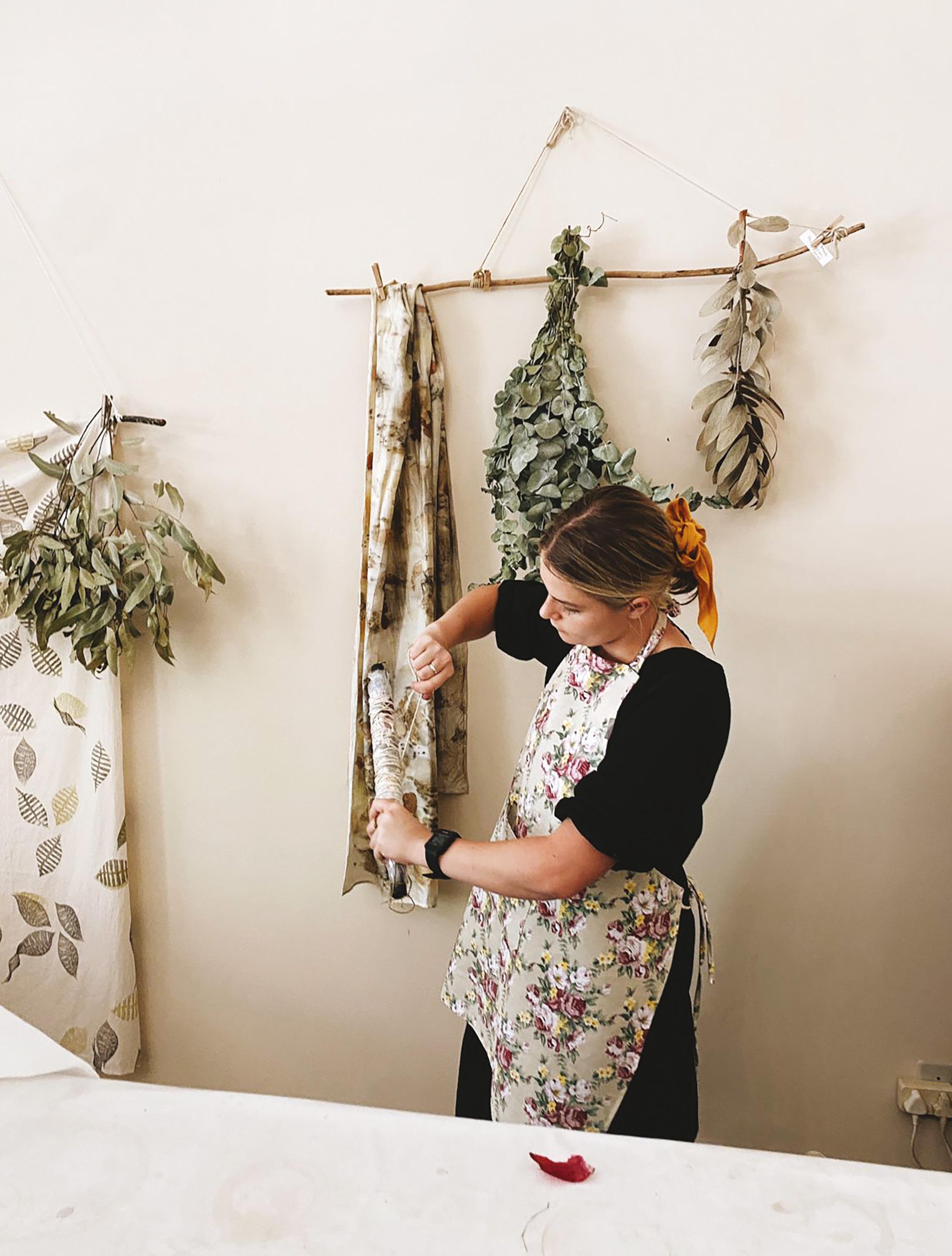
120 Jack Journal Vol. 3
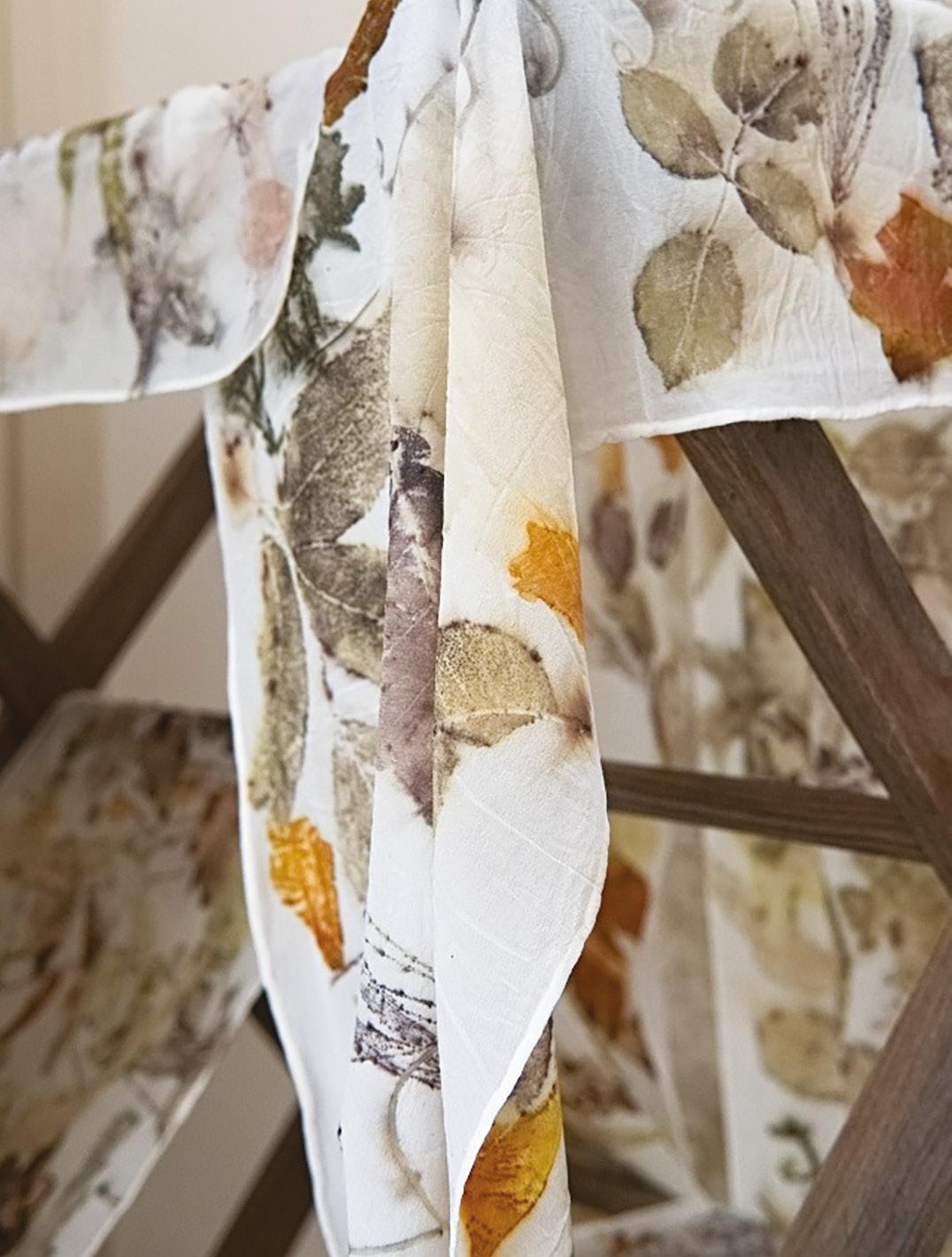
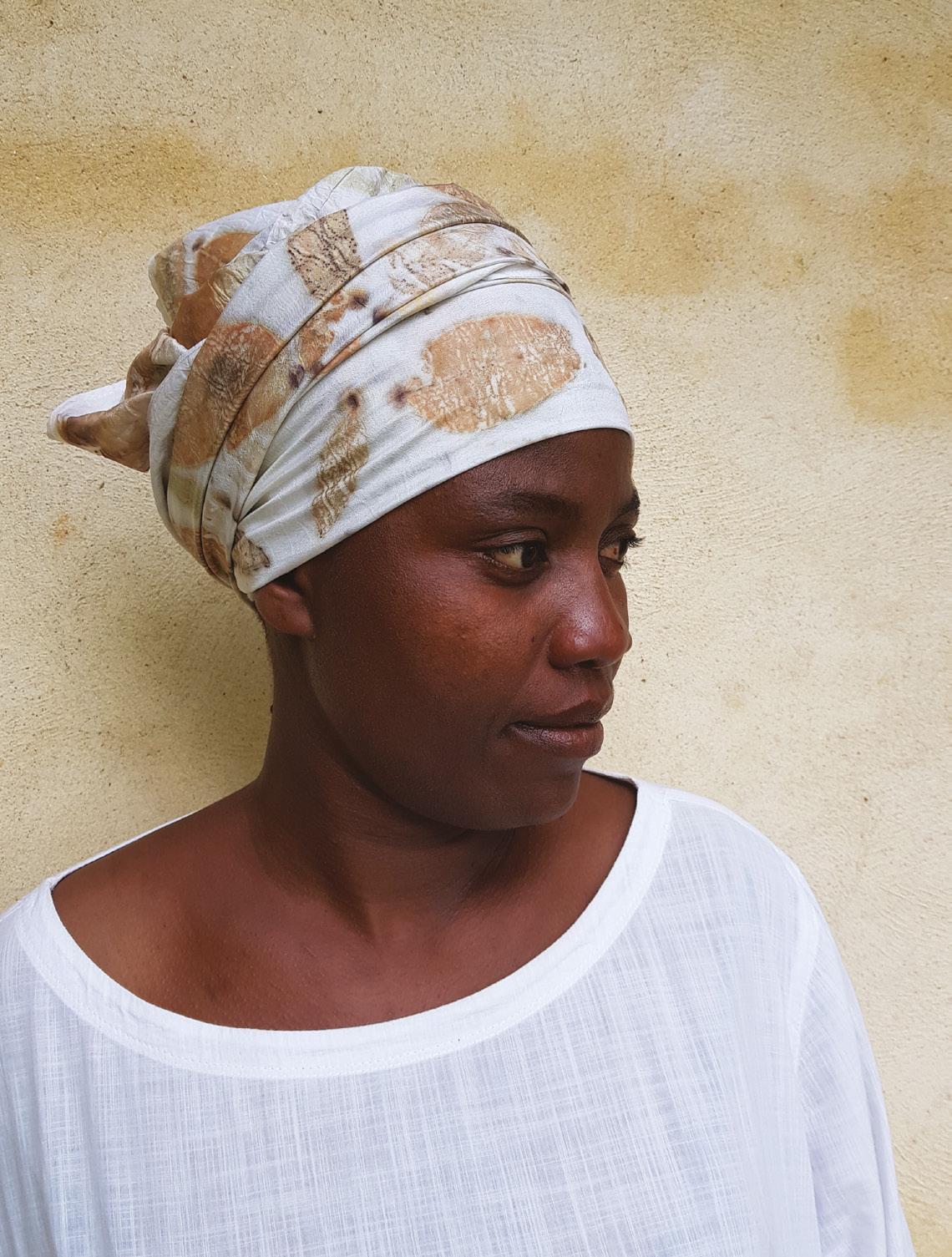

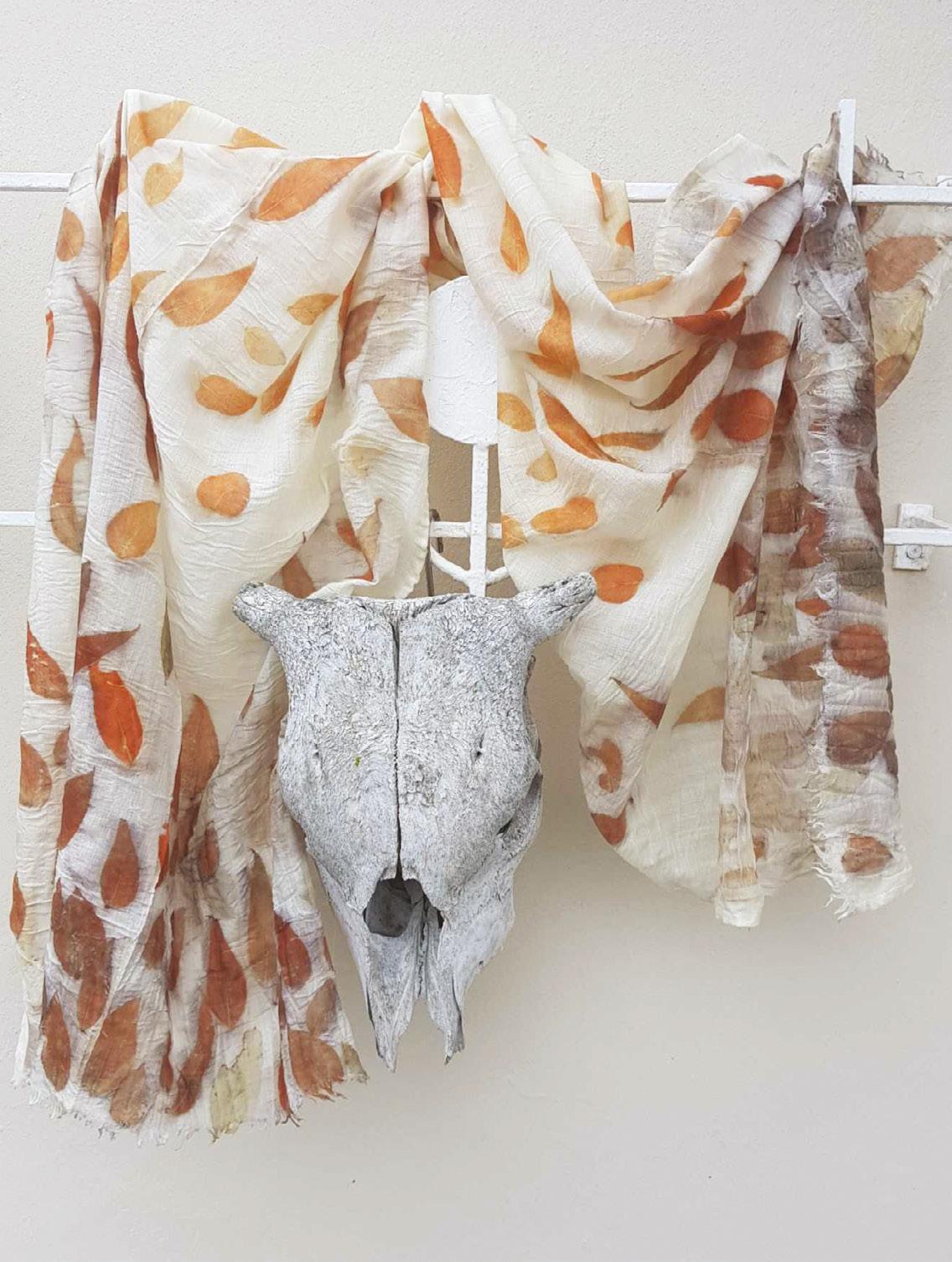
121

122 Jack Journal Vol. 3
why the best brands are now run by their customers
Written by: Richard Siddle Illustration: Janneke de Kock
It was the moment that legendary music journalist, David Hepworth, says he will never forget. ‘Would you like to go on BBC Radio and talk about new music sensation Amy Winehouse?’
Now, usually, being able to share his decades of experience writing about the latest rock stars and where they sit in the pantheon of music history was an opportunity he would have grabbed with both hands. Only there was a slight problem. He had never heard of her. But thousands of everyday music fans had.
It was months before she had even released her first single, but Amy Winehouse had already been discovered by a large fanbase on the internet. Hepworth realised in an instant that his position as one of the world’s agenda-setting music journalists was over.
All those years hosting the BBC’s iconic ‘The Old Grey Whistle Test’, responsible for creating and launching pioneering music magazines such as Smash Hits and Q, never mind co-hosting Live Aid around the world – none of that mattered any more. The fan had taken over.
Rather than rush with excitement to their local newsagent to pick up their weekly music paper, carefully, and oh so knowingly crafted by Hepworth and
his all so powerful journalist friends, they were simply going online and finding the music they liked for themselves.
Brands’ Amy Winehouse moment
The same situation is happening with brands, retailers and businesses up and down the high street. COVID-19, the global lockdown and our universal switch to online and e-commerce has meant that every consumer brand and business is now faced with its own ‘Amy Winehouse moment’.
Are they, too, going to be deemed irrelevant, consumed by the internet, or have they made the all-important switch, and put all their key decisions into the hands of their customers?
123
All a bit too dramatic for you? Well, look around. In any major consumer goods sector there are now breakthrough, startup brands that are taking on some of the world’s most famous names and setting that category’s agenda, be it Peleton in health and fitness, Glossier in health and beauty, or Hello Fresh in food and drink.
These are brands that have connected with people online and have then spread like wildfire by the power of viral word of mouth.
In some cases, the threat to major consumer giants has been so great they have either bought out the pesky startups – Unilever was prepared to spend $1.4 billion to get its hands on the Harry’s men’s shaving subscription brand –or have set up their own startup divisions, like Unilever Ventures and Diageo’s Distill Ventures, in a bid to spot, recruit and tap into that entrepreneurial spirit at source – and save themselves a whole lot of money too.
Customers are King
If your customer is not running your business then you are doing something wrong and could soon be going out of business. Every decision you make now needs to be based on sales data, the social media analysis of what your customers are liking, sharing and saying about you.
Take online retailer Naked Wines, which relies on its customers – its Angels –making a monthly payment for it to invest in winemakers to make wines Naked knows they are going to buy. Its wine director, Ray O’Connor, says every wine decision it makes is based on tracking the sales data and analytics of its customers. It is constantly talking to its Angels, asking them about the wines they like and which winemakers they would like Naked to invest in.
This builds an invaluable three-way connection between Naked, its Angels and the winemakers it works with around the world. It’s a bond so much more powerful than any other wine subscription service because the customers, the Angels, are emotionally and financially invested in the wines they decide to buy.
For years thousands of new products have been launched only to quickly crash and burn because they were based on a gut feel that their target customer would
like them. Nowadays successful brands don’t have a ‘target’ customer – they have followers, supporters, stakeholders, and committed Angels. They know their customers are going to like their brands because they have spent the time to invest in them, to listen to their needs and know what they are going to like. Their past sales data, spending behaviour and social media activity will have sent out enough smoke signals on which to base any new product launch.
Understanding consumer trends and behaviour has also opened the doors to brands and services we did not know we even wanted, but can’t do without, now that we have them. Like the iPhone, Netflix, or Spotify.
Ripping up traditions
So what does this mean for old, traditional categories and products? Let’s take the wine industry. Here the brand owners will often say they are dictated to not by their customers but by the climate and yearly cycle of weather that determines the size and quality of harvest and subsequent price of their wines. It does not matter what consumers want if there are not enough grapes to make those wines.
Well, think again, and fast. The traditional wine production story has to change to one that puts the consumer first. If wine’s genuine USP is the emotional connection a consumer can have with the vineyard, the terroir, the sense of place, the winemaker, then why not make that the driving force of the brand? Personalise that emotion.
Give customers the chance to blend their own wine and to design their own label. Make it unique to them. Or at least offer them enough ‘personalised options’ they can choose from that make economic sense for the producer to make.
Rather than sitting with cellars full of wine ageing quietly in barrels, that only you know the backstory of, why not bring them to life using a QR link to the backstory not only of the wine but more importantly of the customers who have invested in it and become part of that producer’s success?
It’s a business model that is just starting up in the spirits sector with the launch of Still In Cask. It gives spirits lovers the chance to invest in aged spirits that are
usually tucked away slowly maturing in barrels, never to be seen or heard about until they are ready to be bottled.
Still In Cask is working with distilleries and brand owners to open up those casks to everyday drinkers who are allowed to buy up to the equivalent of three bottles and then share in the story of how that spirit slowly matures over the years. Crucially, Still In Cask will only work with distillers willing to bring those consumers into their businesses, and talk to them, allow them to visit, and take part in tastings at each stage of the ageing process.
Illy Jaffar, one of Still In Cask’s co-founders, believes the concept ‘democratises’ how spirit investment works, as he explains: ‘You are not just buying into a ready-made story of a brand, you are actually creating your own story, your own brand. You can talk to the actual distiller at each stage of that journey. It’s such a unique opportunity.’
There’s surely now an open goal for new startups like this to provide this sort of personalised offer using tanks, barrels and wine and spirits stocks from anywhere in the world. Most consumers don’t care about viticulture, but they do, increasingly, care about exclusivity, the experience, the moments they can share with others. Wine – and spirits – can do that in spades.
124 Jack Journal Vol. 3
If your customer is not running your business then you are doing something wrong and could soon be going out of business. Every decision you make now needs to be based on sales data, the social media analysis of what your customers are liking, sharing and saying about you.
The conscious consumer
The internet has given consumers the power of search – to compare and contrast; to find out the best deals, the promotions that mean the most to them. It has effectively put the high street in the smartphone in their pocket.
They don’t want to be sold to, but to call the shots, or at least feel as if they are – to buy into brands with a purpose, that they can believe in. It’s why we now see so much brand marketing that is all about what that product can do for us, and how it makes us feel. Even banks want us to feel good about giving them our money. Like Bank Mutual’s ‘Trust. The feeling is mutual’ campaign, or American Express’ simple ‘Take Charge’ message.
The more we live our lives online, and the bigger and more powerful our personal data becomes, the more consumers will up the ante and expect brands and businesses to pay for that data.
‘We have become digital, phygital beings,’ is how Michael Becker, founder of personal data service, Identity Praxis, describes it. ‘Consumers are wanting more control over their connected and personal data.’
How consumers go about ‘managing and controlling’ their ‘phygital data’ is a completely different battleground on which brands and their customers are going to have to navigate, stresses Becker.
The more machine learning, Artificial Intelligence and Big Data combine to offer us new brand experiences, the more consumers will be simultaneously excited and scared.
It will result in consumers wanting to take greater control and have a ‘seat at the table of this personal information economy,’ warns Becker. A brand’s customer will soon want to know what they get in return for their business.
Noticeably, the Still In Cask new spirits investment model is all powered by blockchain technology, for two key reasons. Firstly, it provides third party, independent control over all the data, transactions and investor details for perpetuity. Secondly, it’s what younger consumers, in particular, understand and want – control over their data.
‘That’s where the blockchain comes in,’ says co-founder, Liam Hirt. ‘Any trust and guarantee assurances that customers
might have about committing to such a long-term partnership with Still In Cask are covered by the blockchain that collates and records all transactions and data relating to every cask sale investment,’ he explains. ‘With a blockchain you don’t have to rely on trust. If we disappear, all the accounts of our customers and their cash shares are stored on the blockchain, which can pay out on request.’

All-powerful consumer
The pandemic and global lockdown have only fast tracked how powerful the average consumer has become. Their standards, expectations and benchmarks of expected behaviour have all got higher. Next-day delivery has become same-day, or within an hour. Amazon Prime is now the benchmark, the level of service people now expect whether they have paid for it or not.
If we don’t trust or like what our leaders say, we are now willing to invade government buildings or famous football stadiums. Rightly or wrongly, we’ll take the law into our own hands.
We expect big business and brands to have an opinion, a stance on the big issues of the day, a purpose we can support. Stay quiet, do nothing and you will be ignored, or brought to account.
Social media has given us all a voice, an equal status. The rich and famous need to line up for a selfie just like anybody else.
But above all else, the new consumer also just wants to be loved, to be cared for, to know that they matter. The brands, businesses and services that can do that are the ones that are going to be cared for and loved back.
125
TheBuyer magazine

126 Jack Journal Vol. 3
playing into silence: a concert guitarist learns the covid art of the online guitar ashram
Written by: Derek Gripper Photography by: Luke Younge
Three hundred hours in the air in a single year; to play one hundred and sixty concerts one hour long. That’s more flying than playing. That’s also a lot of the world to see, a lot of people to meet, experiences to have. That’s also something we just don’t do anymore. Or at least not right now.
My last tour before COVID-19 was in a place I wasn’t that familiar with, Australia. I had spent most of the previous years making a patchwork tour of the States,
with small forays into Canada, Malaysia, all over Europe, Swaziland, Zimbabwe, even Moscow. Then Australia. A tour organised in a very different way, actually a cancelled tour saved by the organiser of The Melbourne Guitar Festival, where I had played a few months earlier. Michael Macmanus called me up when he heard my tour had been cancelled and said: ‘Why don’t we do some small concerts around Melbourne?’ I thought, why not? Small concerts turned into big concerts, Melbourne turned into southeastern Australia, and Michael and I spent just over two weeks on the road battling escaped horses, dead kangaroos and
dwindling chocolate supplies while I played sixteen sold-out venues in places Michael had never even visited himself.
By the time I got home to Cape Town, I was enjoying myself immensely. I had just got started. In Australia, every concert had seemed better than the last, music coming without any effort. This was what playing concerts was all about and I didn’t even have to wait long until the next concert. I arrived home on a Friday, had a performance in Stellenbosch at Die Woordfees on the Sunday, and in two weeks I was returning to the States.
At the reception after the concert, somebody mentioned that Cyril had
127
announced a state of disaster. I had just been on a full flight from Australia and so, not wanting to be South Africa’s patient zero, my children and I decided to start our quarantine a little early, actually that very night, on the way back from Stellenbosch, after stopping for supplies. The rest of South Africa joined me five days later.
The emails started coming in. Both 2020 US tours, one of which was scheduled to start in two weeks, were postponed. Suddenly 2020 was free. Just like that, I had more airplane vouchers than booked flights, and exactly zero concerts.
But somehow it didn’t bother me. I was still riding the wave of playing. So I started a WhatsApp group. I told people on my mailing list to join up if they wanted to join
me on Zoom to play some guitar. The first sessions were pretty busy. There were people who had watched the concerts on the recent Australian tour, people from England, the USA, Canada, China, Switzerland, Germany, India. The first piece we played was a song called ‘Jarabi’. It has a simple bass line, three beats plus three beats plus two beats. Over and over, round and round.
Now of course when you’re playing with thirty or so people on Zoom, you can’t all have your mic on. So we reached a compromise. I would have mine on and everyone else would be muted. The result was that everyone in the meeting was playing a duet with me, while I was playing alone. ‘Jarabi’. 3+3+2. Slowly. Change the feel, add a swing rhythm,
shorten the bass, change the upper notes, speed up, etc., etc. After an hour we logged off. Since everyone was in different time zones, I did two or three classes a day; it got confusing for everyone to know what time was what, so after exploring every online booking app I could find, I found one that could display multiple time zones. Suddenly we were up and running with a weekly schedule that everyone could check in their local time.
Then we started looking at written pieces of music too, so that we could play music that was a little more complex. I also ran a few courses called ‘If you found a guitar in a forest and didn’t know what to do with it.’
So what this all amounted to was a form
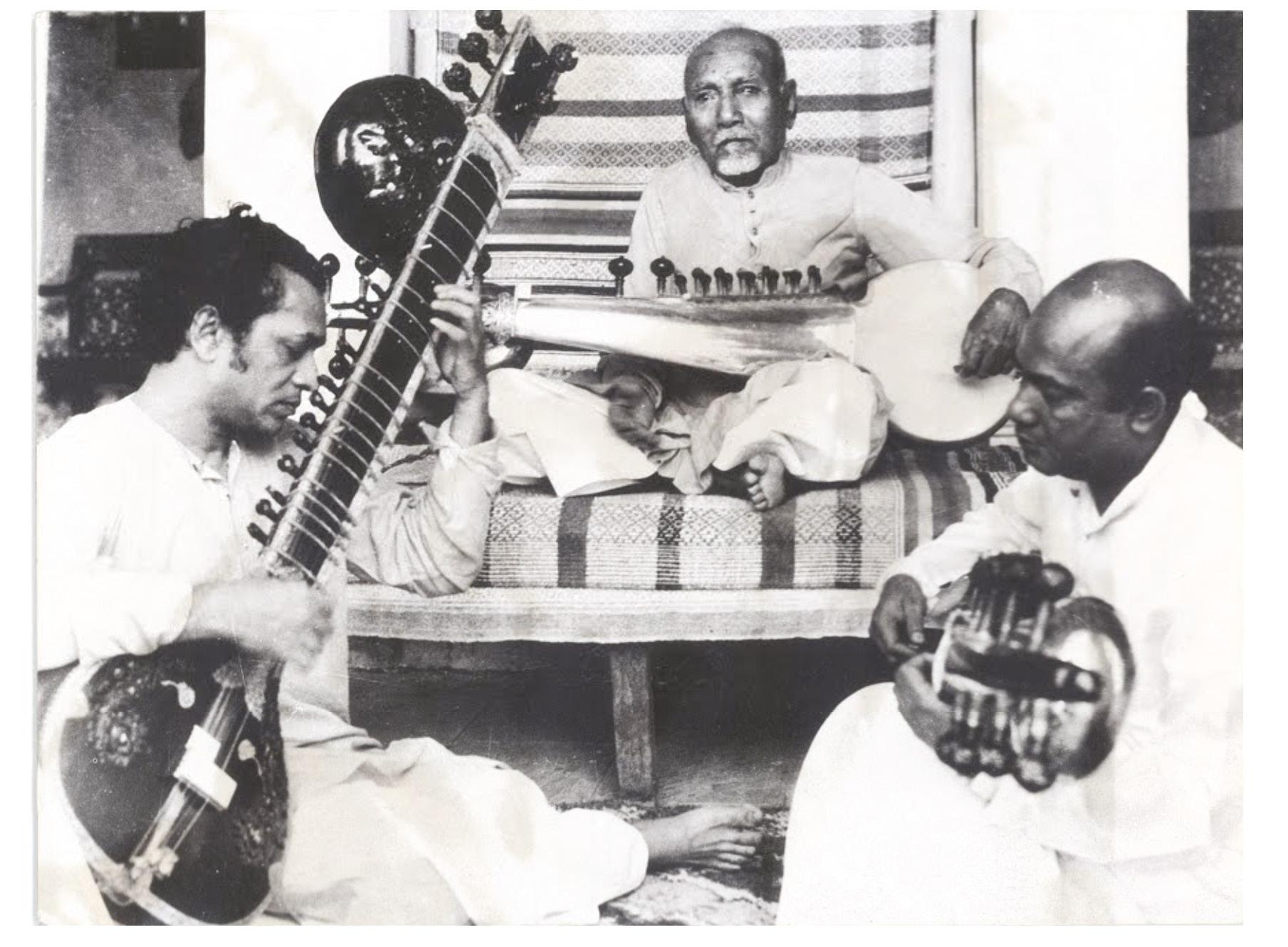
128 Jack Journal Vol. 3
Baba Ustad Allauddin Khan, Ravi Shankar and Ali Akbar Khan in Maihar.
of playing that was a hyper-focused (in terms of material), slowed-down concert. In one month I would cover music that in a concert would last only ten minutes. Playing into silence allowed the participants to be active in their reception of the music, to not only be listeners, but to be players too, without the ‘teacher’ over their shoulder judging, correcting, adjusting. Just like a conversation class, a language immersion class – some time spent with a musical instrument.
As for me, this allowed me to feel as if I was a musician in a much more complete way. I have always envied the artist and their studio. William Kentridge once said to me, on a dance floor at a wedding, ‘but you must have a studio.’ A place for thinking, a place where thinking becomes concrete, where evidence of thought builds up and becomes a work, a place where questions are asked. Playing music can be a lot more abstract. You have this little object that you can take anywhere, and this constellation of possible sounds and relationships between sounds; for me, a constellation of composers, techniques, possibilities, ways of interacting. But once you put the guitar back in the box, there is no evidence. It leaves no trace, no marks of paint on the studio floor, no offcuts, no evidence of anything except the marks on your fingertips.
I often asked myself what this ‘being a musician’ actually was. What is my day-to-day life? What can being a musician look like, how could it look like ‘living in music’? Rather than a few hours in a passport queue, sitting in buses and trains and having backstage snacks, could it rather be some sort of a daily immersion in playing?

I’ve often had this image in my head of sitar master Ravi Shankar and sarod master Ali Akbar Khan, in a courtyard, playing to their guru, Allauddin Khan. The courtyard is surrounded by buildings looking inwards. Protected from outside, there they sit, performing together, directed by their teacher. It is a beautiful image of the practice of music as a place of looking inward, the guitar ashram, the immersion in a river of sound with no thought, for those moments, of the outside world.
That is what the stage can be. It is the most relaxed time in any twenty-four-hour period on tour. After all the activity, all the
questions and movements and lists and dates and times and forms, you get to quietly meander onto stage and sit down, the room goes quiet, the lights go down and for the next one or two hours there is only the movement of hands on fingerboards and the sound of the instrument bouncing against the walls of the hall. ‘Don’t you get nervous?’ What’s to get nervous about? It’s absolute bliss. How could you bring anxiety with you when you’re doing such a marvellous thing? Anxiety is for visa applications and late trains and forgetting which gate you had to ask the taxi to drop you at. There is no space for that in the wonder of the concert hall.
But now my days look different. The playing is different and the focus is different. What part of this piece of music will we look at today? What is this piece and how is it made up? What are its parts, and what is the best way to show these parts to others? And the best way is so simple. Playing. One note at a time, then small groups of notes, then whole groups of groups of notes swirling round and round without ceasing. Listening to these notes bounce into the silence of the internet, imagining the response, hearing the echo in your mind, and then playing again. Many of the participants described the sessions as a lifeline – a thread of connection in a time when connections everywhere were being disrupted, severed or put on indefinite hold. While our countries locked down in quick succession, our daily international call and response reassured us that we were all still there.
In contrast to a concert, this new way of playing is infinitely slower and more intimate. The audience is there and they know and love the music far better than any audience I have ever played to. And the guitar ashram is alive and well, even if the (online) courtyard looks a little less picturesque than the walls that echoed with the music of Ravi and Ali playing to their guru.
129
Derek Gripper
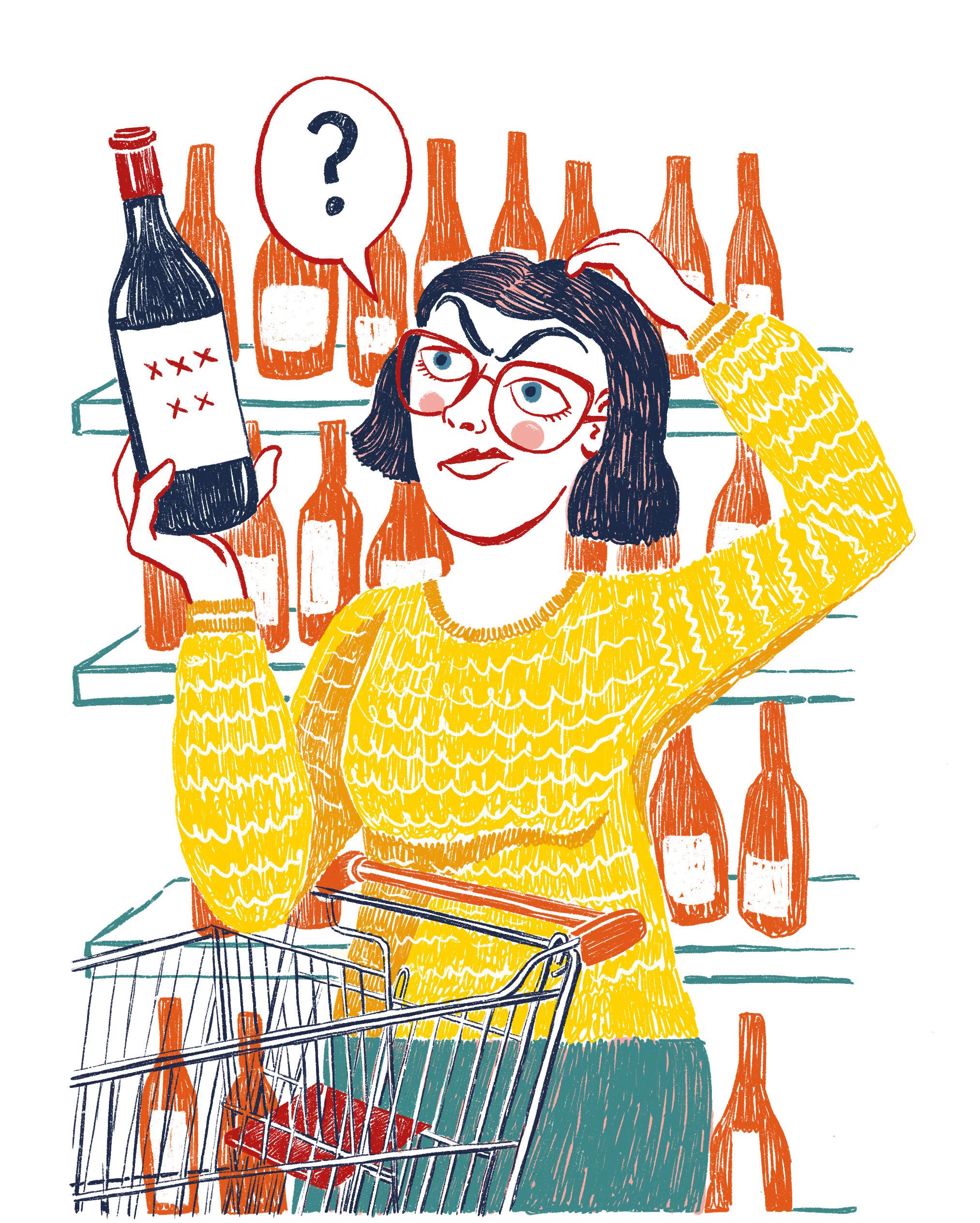
130 Jack Journal Vol. 3
the knackered mother’s wine guide
Written by: Helen McGinn Illustration: Rohan Etsebeth
Years ago, back when I was a wine buyer for a big UK supermarket, I remember loving my job but also thinking I’d never, ever been so busy. I travelled the world, worked long hours and was responsible for selling millions of bottles of wine. However, all that became a relative walk in the park when motherhood came calling.
Suddenly, with the arrival of my first baby (closely followed by another two), drinking tea while it’s hot and going to the loo unaccompanied became just a couple of life’s little luxuries. And an actual walk in the park was more like a finely tuned military operation, not to mention unbelievably exhausting.
But having given up my globetrotting job for something a little more child-friendly, my friends continued to call me in a panic from the wine aisle on a Friday, asking what to buy. So I started a weekly blog, The Knackered Mother’s Wine Club, as a way to steer friends and family to the good stuff on the supermarket shelves.
Over a decade later, and the KMWC is still going strong. And I can honestly say I’ve learnt more about what women (and it is mostly women, usually fellow knackered mothers) want when it comes to wine from writing the blog than ten years as a wine buyer ever taught me.
First of all, if you love wine – and you’ve
got a fair few years of wine drinking under your belt – you tend to know what you like but you’re not necessarily afraid to try something new. Secondly, you want to know the essentials – where it’s from, what it tastes like, what food to drink it with – but you don’t always need to (or have time to) know every single last detail.
Most importantly, it must have a nice label. Okay, I’m kidding. We’re not *that* shallow. But how it looks definitely plays a part and it helps if what’s on the label at least gives us a clue about what to expect from the contents of the bottle.
Over the last ten years, I’ve been lucky enough to run wine tastings for anything between ten and three hundred people. My most memorable one was done wearing a gold catsuit and culminated with me performing my party trick (I can fit my fist in my mouth), but that’s another story, possibly for another time. Anyway, the point is that when I do these tastings, I love seeing how people react when they discover a new grape, country or blend they’ve never tried before. Or go from saying ‘I don’t drink red’ to ‘pass me that Syrah, will you?’
Perhaps I’m biased (I so am!), but I’m a huge fan of good supermarket wines. Of course, I support our local independent wine shop whenever I can (mine is called The Solent Cellar and I love it so much that it inspired one of the settings in my latest novel, In Just One Day), but the reality is that most of us still buy our wine in the supermarket and if I can do my bit to help people find the good stuff on those shelves,
I’m more than happy to do so. And there really is so much good stuff nowadays.

Twenty years ago I remember deciding that Mexican wine was going to be a Big Thing (it wasn’t). Together with a winemaker, we made an own-label Mexican Chardonnay and Mexican Cabernet, and to say that I created an overstock in the warehouse is putting it mildly. I think some of it might still be there. But now, take a trip down the aisle and you can go from Greece to Georgia in a few footsteps. Even English wine isn’t a joke any more. Our wine horizons have been truly expanded in recent years.
I also love how much the South African wine range has developed over the years. Back then it was all cheap Chenin and Shiraz on the supermarket shelves. Now we’ve got red blends to rival the smart stuff coming out of Bordeaux, Rhone-style blends at far more affordable prices, and whites so good they bring actual tears to my eyes for all the right reasons. I feel positively spoilt for choice.
But to go back to where we started, what I don’t have is much time – or energy, come to think of it. So when it comes to picking up a good bottle of wine, what I really need to know is if it’s going to be a) delicious and b) good value. And that’s where I think South African wine is winning hands down at the moment. I’ll drink to that, just as soon as I’ve finished this lukewarm cup of tea.
Buy Helen McGinn’s new book InJustOneDay
131
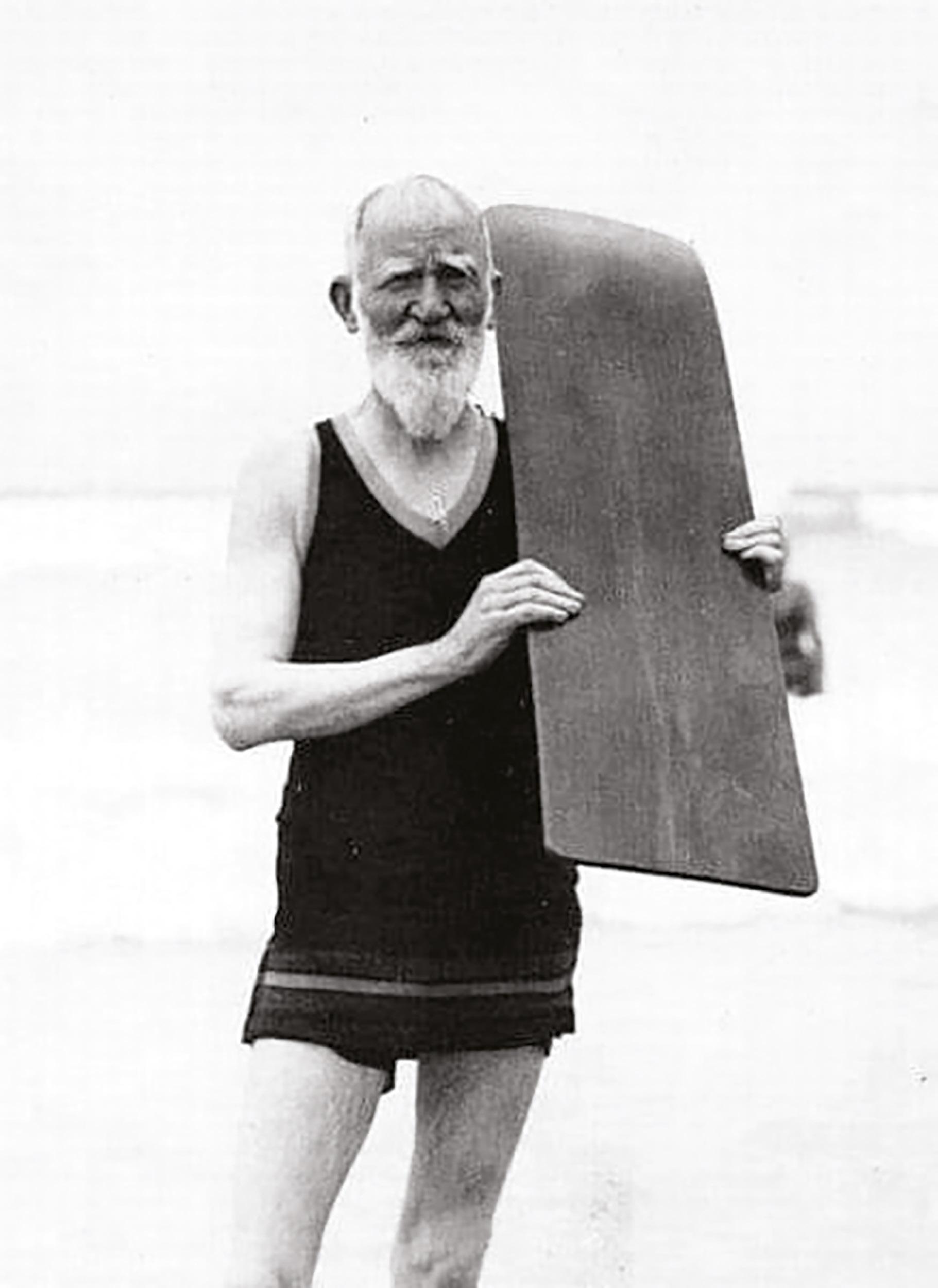
132 Jack Journal Vol. 3
George Bernard Shaw with his board, Surfers Corner, Muizenberg.
and then there was fun
A famous photograph taken at Surfers Corner in 1932 shows a white-bearded George Bernard Shaw (75) holding a surfboard for the first time. But GBS wasn’t the first celebrated writer to learn to surf at Muizenberg, nor would he be the most popular …
Written by: Alison Westwood
On a hot summer’s day in February 1922, a laughing brunette flung herself into the frothy waves in front of the Muizenberg Promenade on a thin plank of wood. She and her husband Archie were on a round-the-world tour to promote the British Empire Exhibition, and Cape Town was their first port of call.
The young mother was a newlyminted novelist with only one moderately successful book under her belt. She was by no means a celebrity; just another happy holidaymaker keen to try out the new sport of ‘surf-bathing’ at the Cape. But years later, long after her name had become synonymous with murder, Agatha still treasured her memories of learning to surf at Muizenberg. ‘The thing I enjoyed most, I suppose, in the Cape Province, was
the bathing,’ she wrote in her autobiography.
Surfing had come to the Cape a dozen years earlier, and the fun, easy waves at Surfers Corner had become so popular by 1918 that a Cape Peninsula tourist brochure declared: ‘Ask a man who has enjoyed a season at Muizenberg what he considers its greatest attraction to be, and, after due reflection, he will reply: “The surf bathing.”’
This was most certainly true for Agatha Christie. ‘Whenever we could steal time off – or rather, when Archie could – we took the train and went to Muizenberg, got our surfboards, and went out surfing together.’ The future Queen of Crime soon got the knack. ‘It was occasionally painful as you took a nosedive down into the sand, but on the whole it was easy sport and great fun.’
‘In the Pacific, the islanders have made it an art. At the Cape, it has become a cult,’ boasted the 1918 brochure. But, in fact, surfing in the Cape hadn’t yet advanced nearly as far as in Polynesia. True, Heather Price was photographed stand-up surfing at Muizies in 1919 – the first record of such a feat in South Africa. But the American Marines who’d loaned her their boards took them back home. Surfing then was more like what we call bodyboarding now.
The Cape surfboards were smooth planks a couple of feet wide and about four feet long, similar to the Hawaiian paipo (small board). ‘Armed with this,’ the tourist brochure explained with painstaking political correctness, ‘the devotee wades far out where the waves are breaking best. He/she then waits his/her opportunity.
133
‘A fine big curling breaker comes rushing in. The surfer throws himself/herself on the plank, is caught by the wave and whirled, straight as a die, for the beach. The wave tries to overtake him/her, but itself is his/ her propelling power, and he/she is always just ahead until in the shallows it is spent and hisses harmlessly by.’
Although Agatha would never ride high on her Muizenberg sessions, she did manage to successfully stand-up surf a few months later, when she and Archie took a short holiday in Hawaii on their world tour. Agatha spent every day surfing on a borrowed board named Fred. Many bruises, a shredded bathing suit, and a nasty case of sunburn later, Agatha Christie could finally declare surfing to be ‘one of the most perfect physical
pleasures I have ever known.’
But the fun she had in the Cape wasn’t entirely eclipsed. After an exhausting day in heavy Honolulu swell wrestling an even heavier surfboard, Agatha writes: ‘I said doubtfully to Archie: “I suppose there is a great deal of pleasure in surfing?” Then, sighing, “I wish I was back at Muizenberg.”’
Did you know?
Paipo, or bellyboard surfing, was apparently introduced to South Africa by an Australian passing through Cape Town in 1910. On a visit to Muizenberg Beach, the Aussie noticed a plank of wood in the sand, which he picked up and used to show locals how to catch a wave.
Agatha Christie is probably one of the first British ‘stand-up surfers’. The only
British person known to stand-up surf earlier than her was King Edward VIII (then Edward, Prince of Wales), who learned to surf in Waikiki on his royal visit to Hawaii in April 1920.
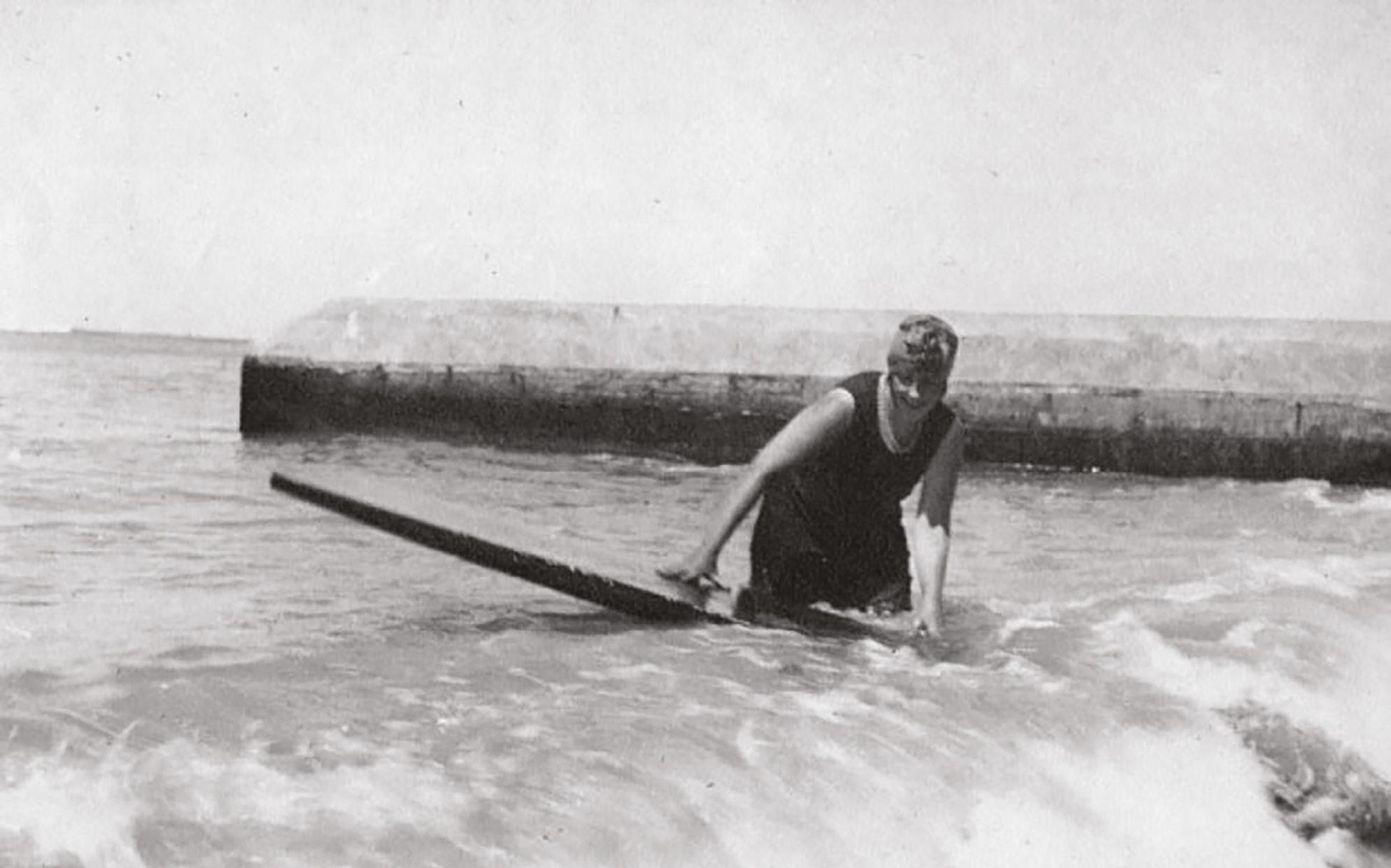
The Guinness Book of World Records lists Agatha Christie as the world’s best-selling fiction writer. She also wrote the world’s best-selling mystery novel, And Then There Were None. Her crime novels have sold an estimated two billion copies.
To book your surf lesson at Surfers Corner

134 Jack Journal Vol. 3
Agatha Christie in Hawaii. Picture Christie Archives/Findmypast.
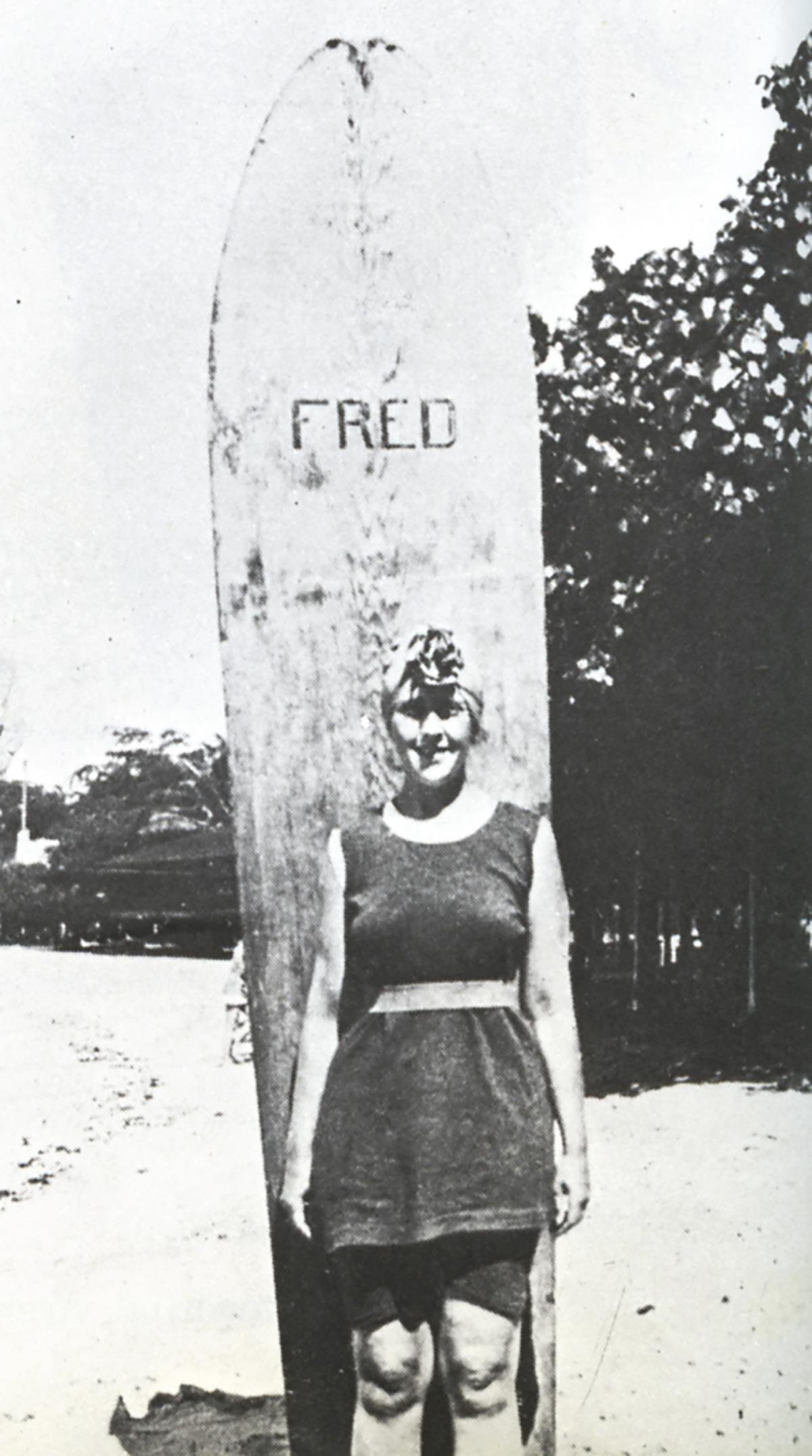
135
Agatha Christie the surfer. Picture Christie Archives/Findmypast.
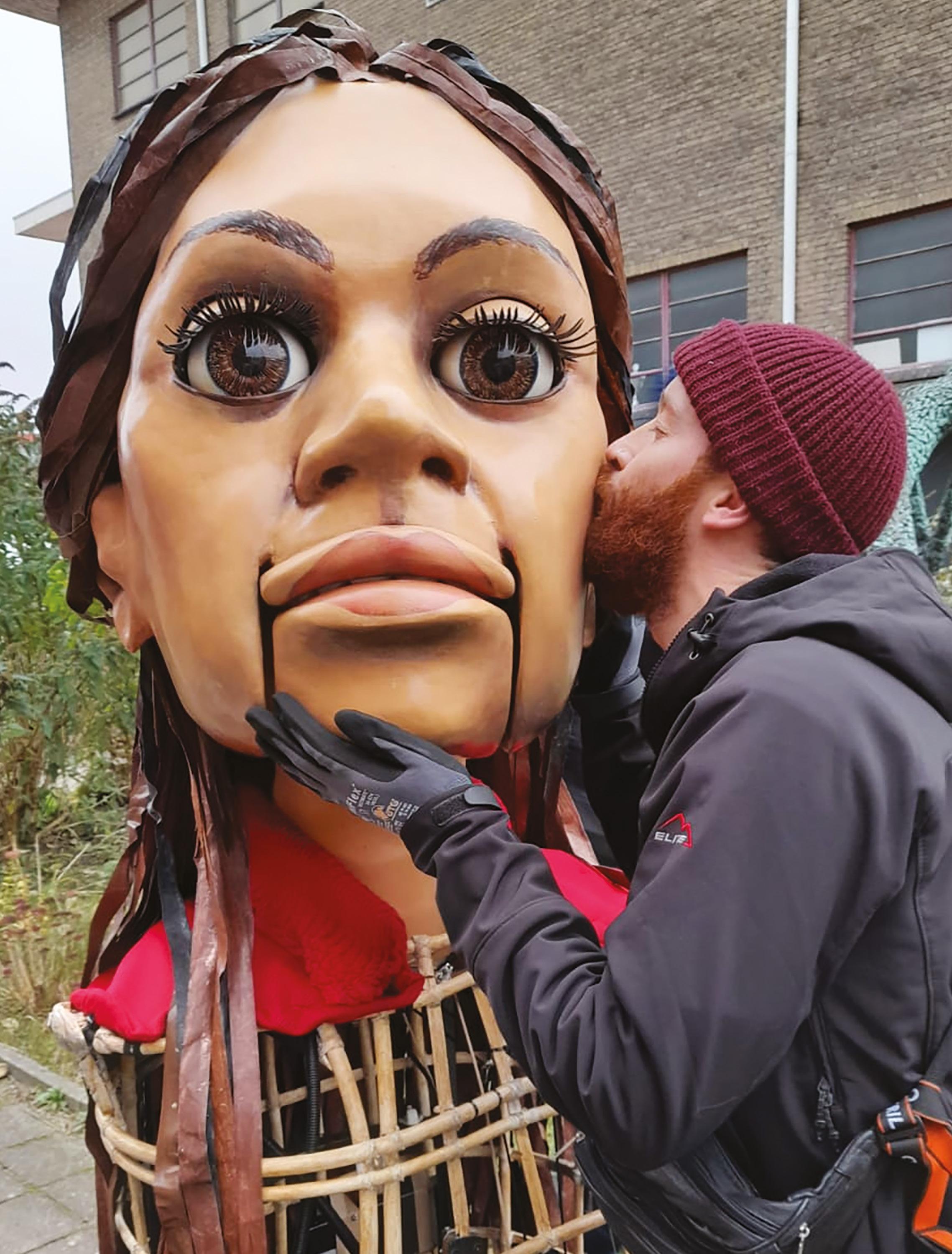
136 Jack Journal Vol. 3
Amal startled by an affectionate volunteer.
the walk
Written by: Adrian Kohler Photography: Adrian Kohler
Syria
The devastating drought between 2006 and 2011 forced many in Syria to abandon their farms and eke out a living in the cities. In the wake of the Arab Spring sweeping the Middle East in 2011, the Assad government began smashing the popular uprisings in Syria, destroying homes and livelihoods. Reaching a peak in 2015, the outflow of refugees from that country became a flood.
Forced into fleeing the chaos and death, they crossed seas on leaky boats and were forced to find food and shelter along a route known as the ‘Road of Tears’. Some found temporary places of sanctuary, others walked on, among them many lone children, eventually arriving at a camp called ‘The Jungle’ on the western edge of France.
There, over 12,000 people, a mix of the displaced from many nations including the Syrians, made temporary homes awaiting a ‘good chance’ to slip into England.
Schools, mosques, churches and ‘shops’ emerged among the tents, but two young British volunteers noticed that there was no general meeting place. Back in Scotland they found a second-hand collapsible geodesic dome, erected it with the help of people in the Jungle – and the Good Chance Theatre was born: a hub for music, poetry, food and eventually a play, which became The Jungle Performed by Jungle refugees plus
professional actors, it opened to huge interest at London’s Young Vic theatre and has since played at several venues in the USA.
Then the French government bulldozed The Jungle. Shortly thereafter, the play closed.
But drought and war and their offspring, the refugees, remain endemic.
Amal
Joe Murphy and Joe Robertson, the founders of Good Chance Theatre, were looking for a new way to focus world attention on the reasons why people are forced to leave their homes and families. They made contact with us and outlined their audacious plan.
Would we, they asked, be able to make a large figure of a young girl, as big as possible, who would walk from the border of Syria, across Europe and end her journey in Manchester, UK?
She would be nine years old, her name would be Little Amal and the production would be called simplThe Walk. Her story: she was left completely alone after her mother had gone out to look for food and had never returned. She would escape Aleppo and follow the route other Syrians were taking, searching for her missing mom.
Of course we were keen. We have made life-sized giraffes, elephants and horses. We had a spare month or so, and the concept was inspirational.
After consultations with champion Cape Town stilt walker, Craig Leo, longtime collaborator on Handspring projects, we advised Good Chance that the tallest we could make an Amal would be 3.5 metres with a stilt walker inside, holding up the body and moving the head and legs. Two puppeteers walking alongside would work the left and right arms. She would be twice as tall as an adult and extremely visible in a crowd. We had very little time to get a prototype from our studio factory in Kalk Bay, Cape Town, to London for a feasibility workshop.
Simon Dunckley was in charge of the controls, Jonah de Lange was our welding and carbon fibre maestro, and Zweli Ncombela was responsible for what would become the critical cane work – all experts in their fields as well as veterans of our Warhorse theatre production. Days turned into nights and too soon we were loading all the bits into boxes and airfreighting them to London, much to the relief of our neighbour who had yelled over the wall at 2am: ‘If I can get my ducks in a row with my business, why do I have to endure the fact that you can’t?’ He had a point.
In London, because all the bits had not yet added up to a whole Little Amal, feasibility was still in question.
Fortunately, long-time teammate Craig
137
Leo joined us for the feasibility testing, filling the first two days in London with stilt training for the puppeteers while Amal’s eyes went in and her hair went on. By the end of the week she was vertical, and at the end of the workshop she walked around a lavender field on a beautiful day in Kent, hair flying in the wind.
However, this excursion showed that the head control I had designed could cause injury to the puppeteer wearing it in the event of an accident or fall, so it was back to the drawing board, but otherwise my basic concept worked well.
This meant that Simon and I had to reconceive the head control system. He added in a smaller computer that he built to modulate the new motorised eye movement, and redesigned the harness that is vital for the comfort of the stilt-walking puppeteer.
Zweli remodelled the cane work to give Amal’s chest and pelvis a better little girl’s belly, and James Dee made the elaborate moulds that would enable us to make identical copies of the head and hands. He and his wife, Josie, also constructed four pairs of outsized boots that would have to walk the intended 8,000 kilometres.
Jonah had also refined the welding of the central frame that takes the harness, and cast carbon fibre heads and arms in James’ moulds.
Then, almost as an afterthought, Simon devised a set of collapsible furniture that Amal might need. His wife Uta is a stilt walker and made the point that a largerthan-life person needs a larger-than-life chair.
One and a half years later, in November of 2020, with Covid throwing all its spanners in the works, two duplicates of the redesigned and rebuilt Amal left Cape Town for London as the first wave of the pandemic was receding.
Covid
Covid caused a four-month postponement of the walk. Then the new Delta variant prevented four team members from South Africa from travelling to the UK for rehearsals. So these were hurriedly moved to Kemer on the south coast of Turkey, where, because of the pandemic, tourist hotels stood empty. One was found with an underground ballroom and a ceiling high enough to accommodate all of Amal’s moves, and rehearsals commenced in earnest.
Under the expert guidance of Tugce Aydin, the hurriedly hired Turkish costume
coordinator from Istanbul, Amal’s final ‘look’ crystallised, whizzed together by a local tailor. Much of the tailoring happened deep into the night. Swims in the salty, warm Mediterranean provided the breaks.
As the start date grew nearer, trouble from the crowded streets Amal would be entering was recognised as a possible danger. Not everyone might be in empathy with the larger-than-life Syrian refugee we were presenting. Simulated riots were rehearsed with unruly children rushing between the stilt walker’s legs, followed by an ‘angry father’ or two.
And then it happened. Days before we were due to fly to the start city of Gaziantep, close to the Syrian border, our regular Covid tests returned a positive result for one of our puppeteers.
The remaining rehearsals were immediately cancelled, travel arrangements postponed and everyone confined to their rooms until we could ascertain whether the virus had spread to anyone else in the team. Two days later were on our way to the start – minus one. Preparations in Gaziantep had been progressing. The route was carefully walked and re-walked, checking for issues like uneven paving and places of interest where she might stop.
The Start
The centre of the old city is where a large community of Syrians have settled over the past few years, and the erecting of a stage and lights near the old castle had caused a lot of interest.
By 8pm on 27 July, the streets were humming. As Amal set off, many children and their parents greeted her progress, holding lanterns. More poured out of houses or watched from balconies as she passed. When she emerged from a side street into the park at the castle, thousands of people welcomed her and swarmed around as she headed for the stage. Laser-light bees fluttered up and down the castle walls around her like fireflies.
After the music and the speeches and the gift of a suitcase full of ‘useful’ things for her trip, she got up off Simon’s huge chair and headed off into the night. At the truck where she was being dismantled, a group of young Syrian refugee children, who had driven for three hours from Reyhanli, came to say goodbye. It was they who had sent the
suitcase. Their teacher said: ‘Tonight, with Amal’s presence here, I was able to forget Aleppo.’
The Walk
From that first walk, the pace of everything suddenly picked up exponentially. Each day started in a new town, with one, two or sometimes three events planned.
Dance groups, visits to refugee camps and strategic walks in the street, often accompanied by a band, became familiar scenes. Each outing required an advance recce party to check the route terrain, plus security clearance from the police at each stop.
Almost everywhere across Europe Amal has been welcomed with bigger and bigger crowds. In Antwerp, 10,000 people greeted her.
But there has also been opposition. At one event in Greece, one of the Mediterranean countries where refugees head to first, Amal was pelted with tomatoes and eggs, and a puppeteer was injured when something hard struck her shoulder.
Two groups gathered for a confrontation in the town square where she was due to arrive, conservatives against anti-fascists.
She declined to attend at the appointed time, to the disappointment of both sides, only to magically appear later on the top floor of a building, looking down and waving.
Her appearances were guided by a resolution to only appear where she would be welcome. Being the target of a street fight would send the wrong message entirely.
As her journey progressed and Amal drew more and more attention from the media, both traditional and social, the events grew in stature and so did the confidence of her performers. In Naples, she was allowed to have her first tantrum. Accompanied by a pounding group of drummers, she tried to escape her puppeteers, spinning around and flinging them to the ground.
On a small city beach in Marseilles, 80 dancers wearing life jackets created a piece, which ended when all the dancers plunged into the sea and disappeared. Amal was left looking out over 80 life jackets floating on the water.
With the need to keep the walk teams free of Covid, everyone was tested every few days, and smaller groups only travelled
138 Jack Journal Vol. 3
together in their bubbles.
Across four months, apart from the scare in Turkey, nobody else became infected and Amal the puppet remained intact. Only minor repairs ever became necessary and she fell only four times – once with a resounding crack as her head hit the ground. She has a slight squint as a result. The puppeteer was shocked but unhurt, strapped into what is effectively a flexible, and so safe, cane basket.
Across the whole four-month period there were only two days of rain, one of which was a such downpour that it was decided to cancel the day’s walk and events.
Nizar Zouabi, the director, went to the square to inform anyone who might have arrived. There, huddling together under an umbrella, was a Syrian family. A little girl asked, ‘When is Amal coming?’
It turned out that her name was also Amal (‘Hope’ in Arabic). On learning that,
Nizar returned to the group and explained they just had to continue. At that moment the rain stopped, and the clouds parted. As a result, and this seems in itself miraculous, no events were ever cancelled due to the weather.
And Now?

The Walk is over and we are assessing what an oversized little girl who has walked a great distance and captured the imaginations of so many children and adults means. There are so many angles.
Many of the cities visited have sizable groups of immigrants and refugees, and these have become more visible to the settled community as a whole simply by everyone turning out onto the streets to watch Amal, and, as a result, seeing one another.
Many arts groups spent months devising performances and events focused on the
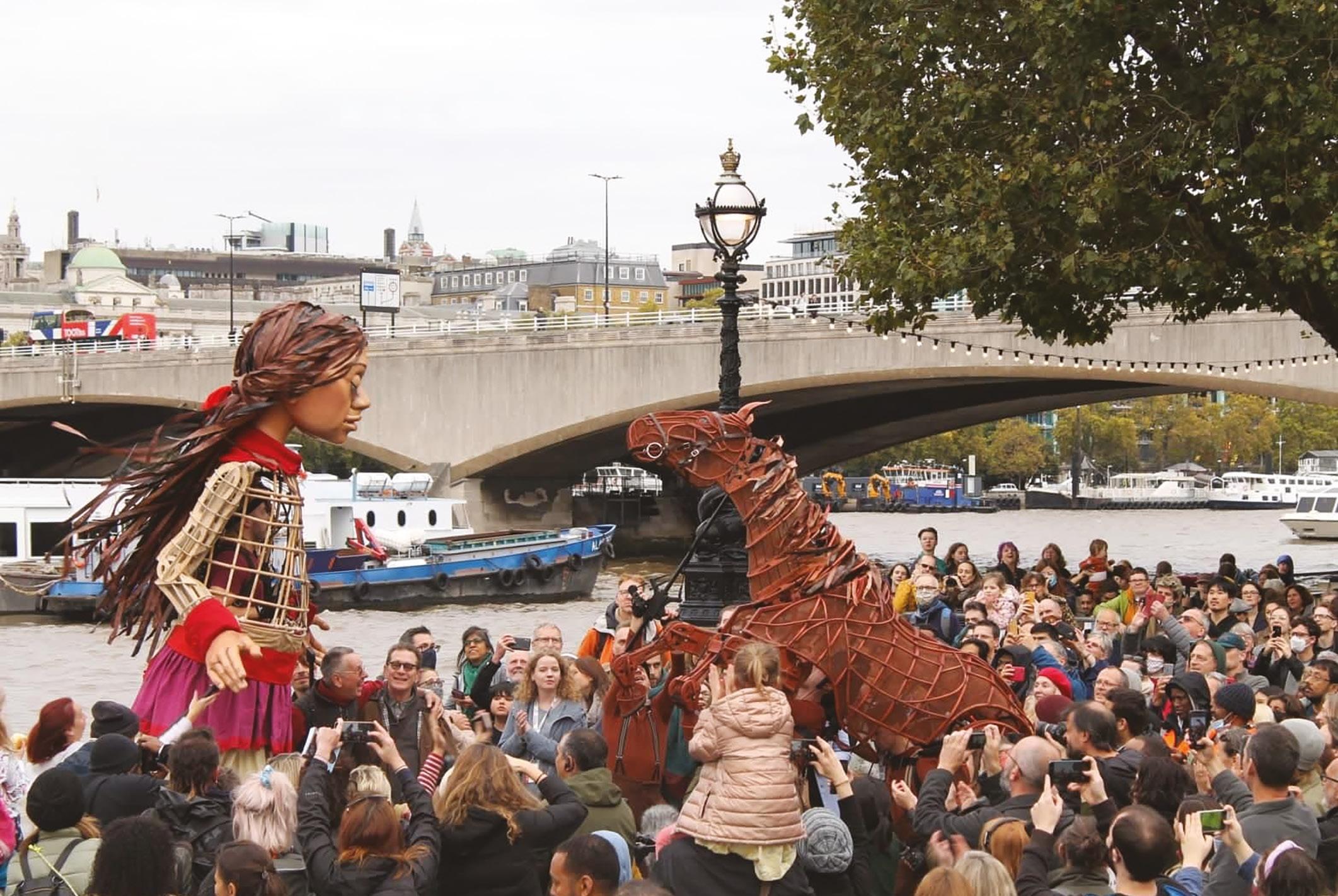
very difficult subject of migrancy, with its deeply challenging socio-political implications. They have ended up realising that immigrants play an important part in the economies of the new situations in which they find themselves. These groups will continue to meet in some form or another.
The big unanswered questions about why so many displaced people are seeking a better life away from their homes is a global one, because no one gives up their home willingly.
And Amal? She is receiving invitations from all corners of the world and it is clear to us that her journey to bring joy, to sow empathy and spread understanding has only just begun.
139
Amal meets Joey from War Horse in London.
Walk with Amal
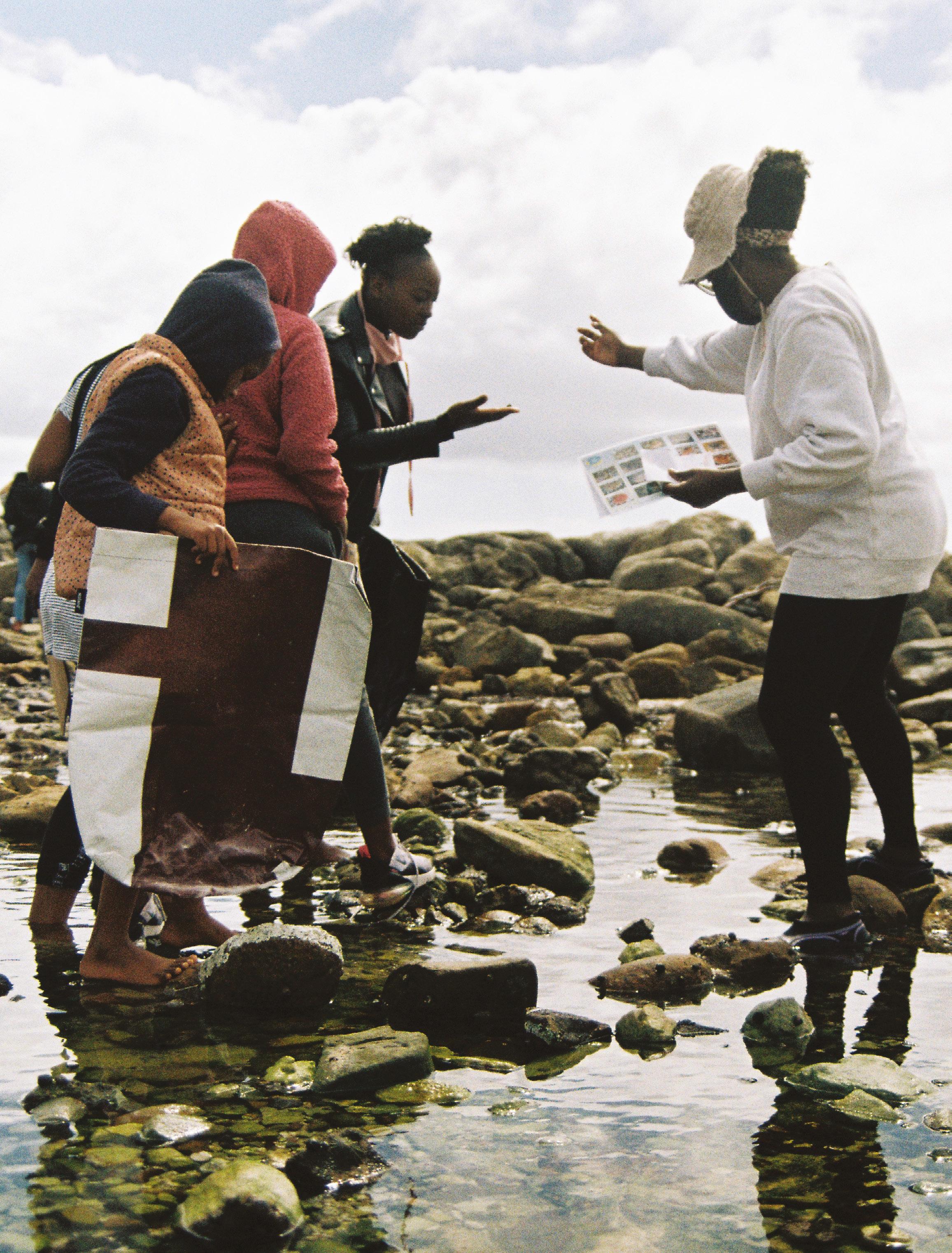
140
Journal Vol. 3
Jack
A Beach Co-op outing with young women to discover the intertidal zone.
we shared what brings us joy
Written by: Aaniyah Omardien and Monique Rodgers Photography by: Erica Basson
The Beach Co-op (TBCO) recognises that families and communities add enormously to any environmental regenerative activity or project. This is why we are building ocean-minded communities that care for our marine environment – not only because the ocean has intrinsic value itself, but because it provides clean air for us to breathe, protein for us to eat, and supports the availability and quality of fresh water that we drink and use to irrigate our crops. It is therefore impossible to talk about the very thing that sustains us – water – without involving people in the story.
The Beach Co-op also engages specifically with the youth from diverse backgrounds to instil a love of the ocean. We forge equitable access to the ocean and bodies of water and have reoriented our strategy to enable and encourage a greater diversity of people in blue and green spaces in South Africa.
More recently, we worked with a few partners advocating for access, community and conservation; women saying yes to working together, yes to South Africa, and yes to change.

“We shared what brings us joy.
We rock-hopped and explored the intertidal zone – looking for sea stars, sea urchins, sea anemones, sea slugs and seaweed.
We found seashells and powered them up with positive thoughts and personal power.
We played, and splashed, SUP-ed, broke bread and played again.
The water was an unreal crystal-clear turquoise colour –dream-like but not a dream.Very, very real.
Some girls paddled around on boards, some splashed in the shallows, some sat on the tidal pool wall and swung and swirled their legs in the water, some lay on the ground to warm up post-swim.
It was happening, hope in action.
We closed the day with a movement and mind session.
We stretched up tall, we breathed big deep breaths, we shook and jumped and laughed.
We put our hands on our burning hearts and said together:
I am strong I am kind I believe.
Again, I am strong I am kind I believe.
One last time,
I am strong I am kind I believe.”
Monique Rodgers – Movement, Mindfulness and Meditation teacher. (Monique facilitated the movement session for the outing for girls from Crossroads)
South Africa has an abundance of open, natural spaces, yet they are still spaces of privilege. This event and similar community events aim to unravel this norm and co-create access to powerful, inclusive, collaborative spaces. How do we co-create this bridge from where we are to where we envision ourselves and our country? There is no precise step-by-step guide yet, but we do know that the path is rooted in collaboration and community. We would like to deepen and strengthen a more intensive programme with the youth, and women in particular, and appeal to you as readers to reach out and support the development of this programme.
Bruce Jack Wines is a long-term, cornerstone sponsor of The Beach Co-op.
To make a donation to The Beach Co-op
141
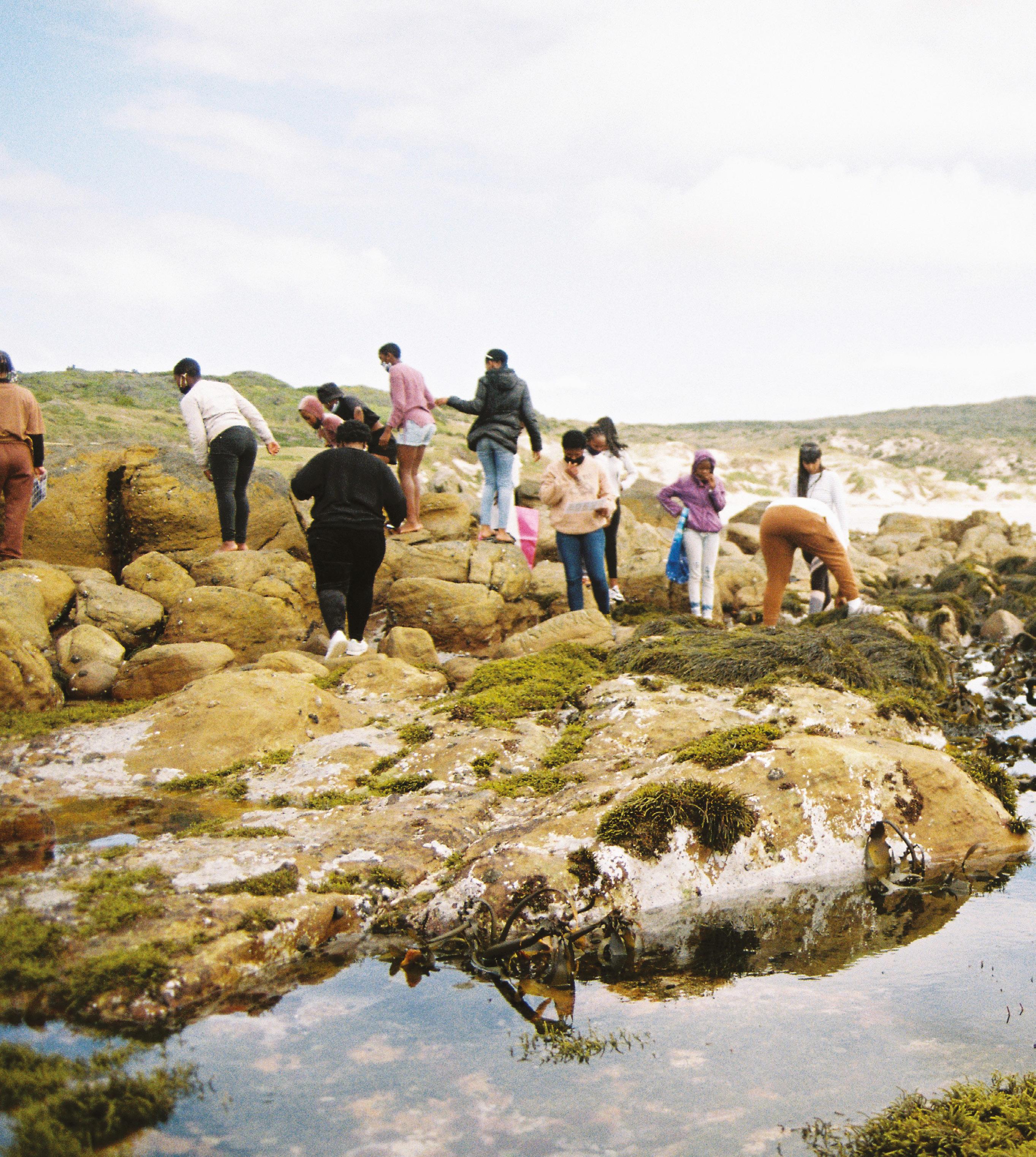
142 Jack Journal Vol. 3
am so glad I was able to get the opportunity to snorkel for the very first time. When we got to Harmony Park tidal pool, we walked around the beach and we all looked around the rock pools and learnt about the different small animals, and even saw an octopus! Afterwards we all got into wetsuits and put on snorkels with goggles. The best part was when we all went under the cold water and looked around at the different shelled creatures and small fish. It was such an awesome experience!
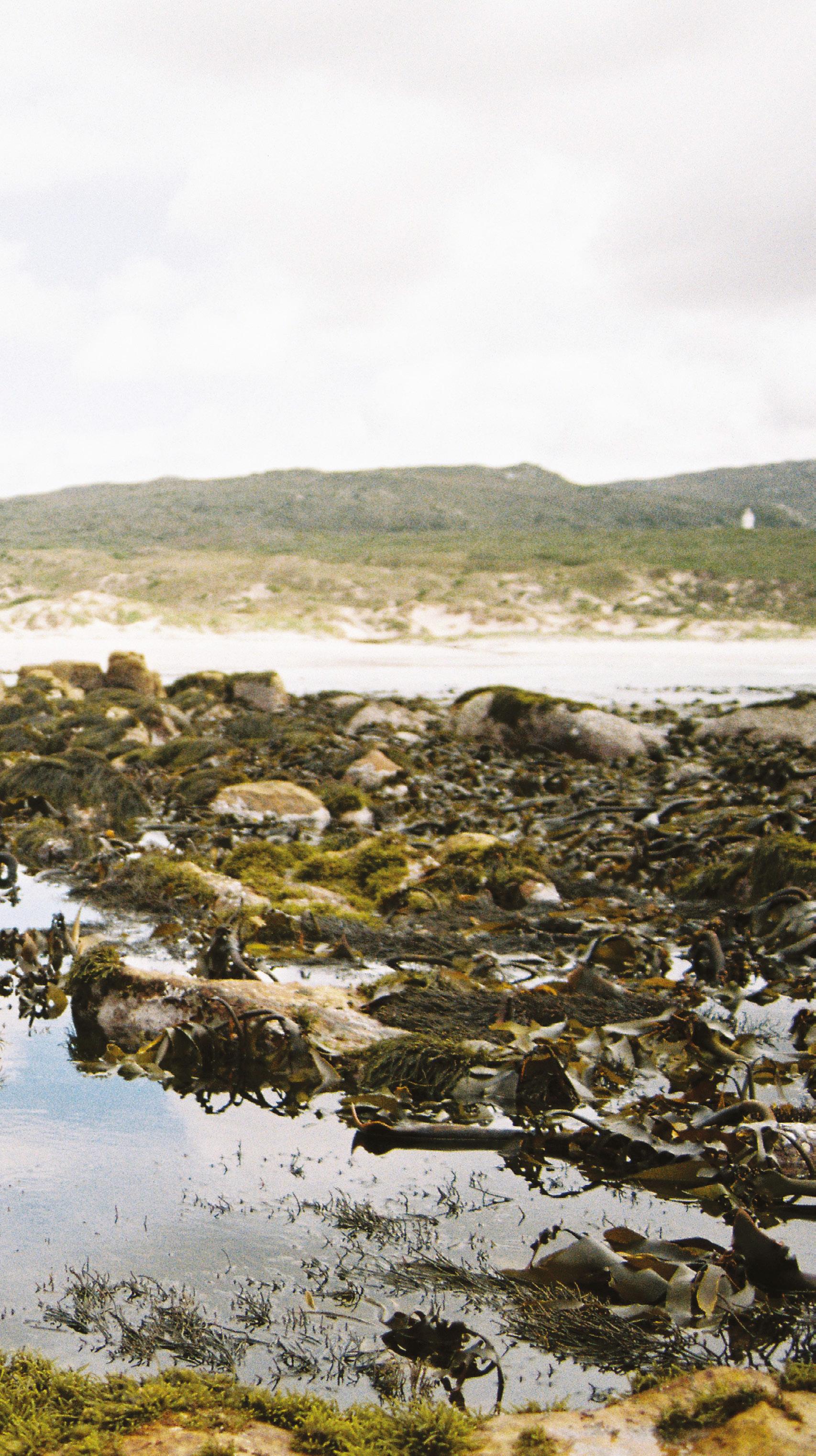 Hannah Moses, aged 15
Hannah Moses, aged 15
143
I
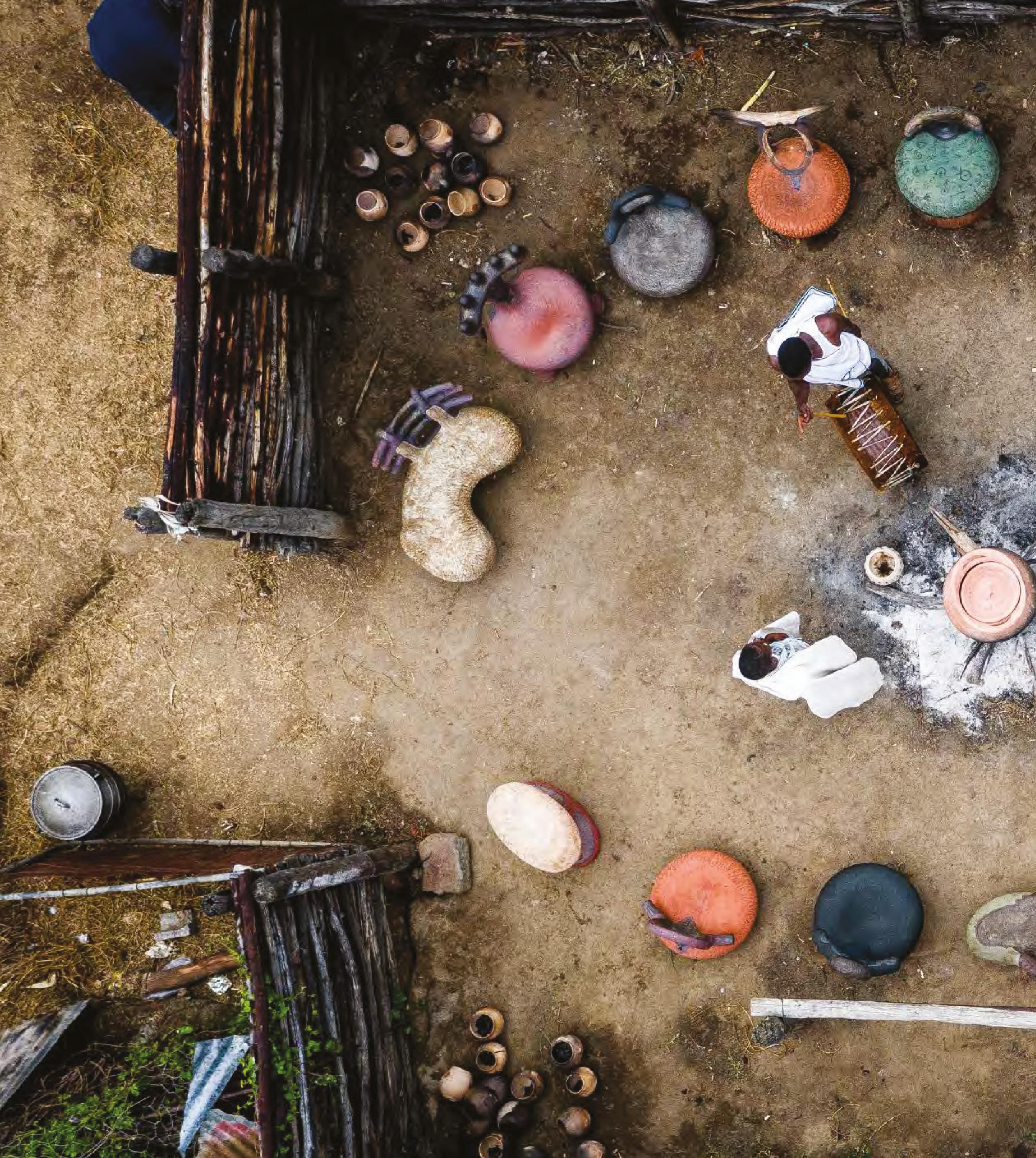
144 Jack Journal Vol. 3
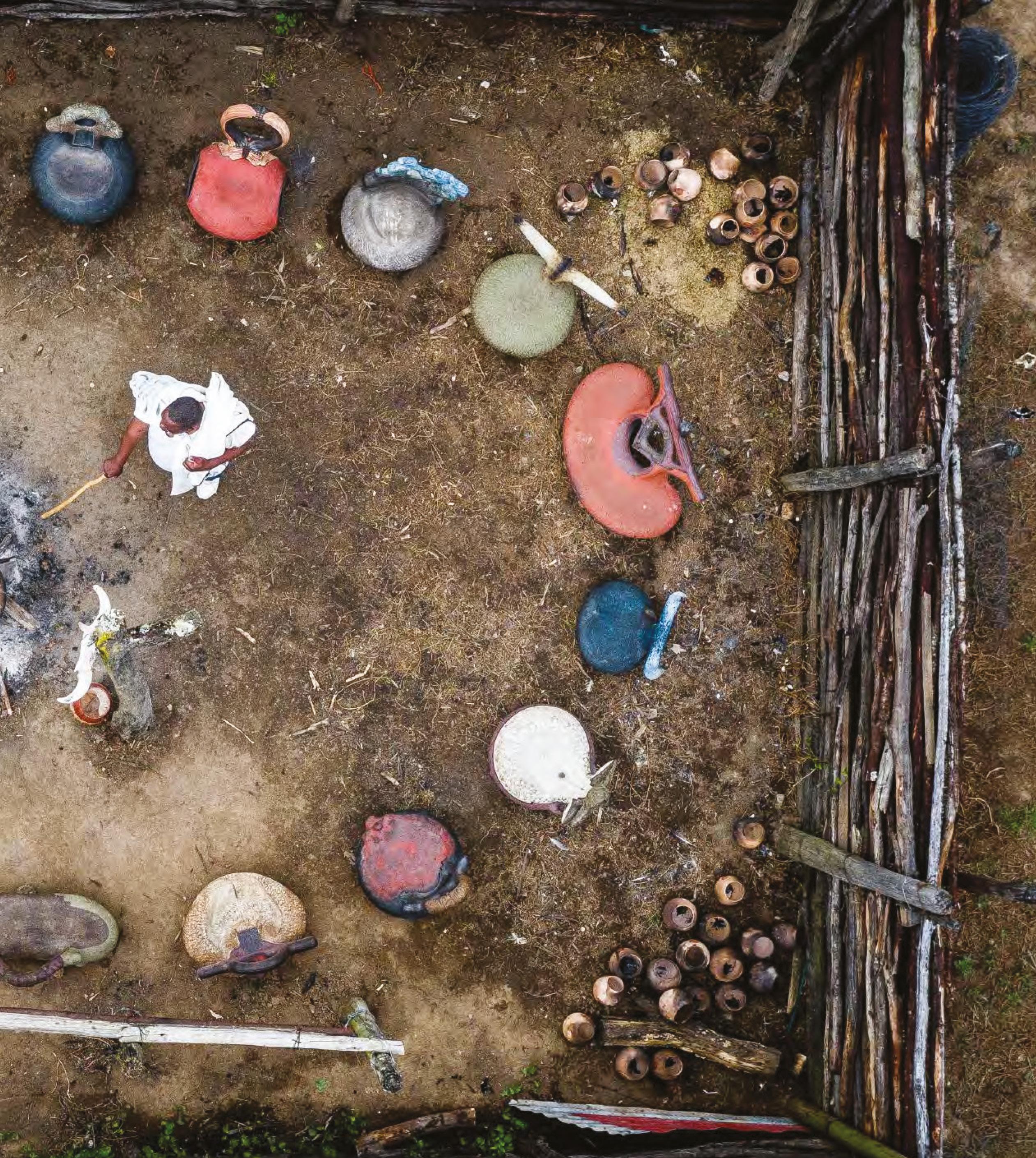
145
The first installation of Ithongo at Ngobazana.
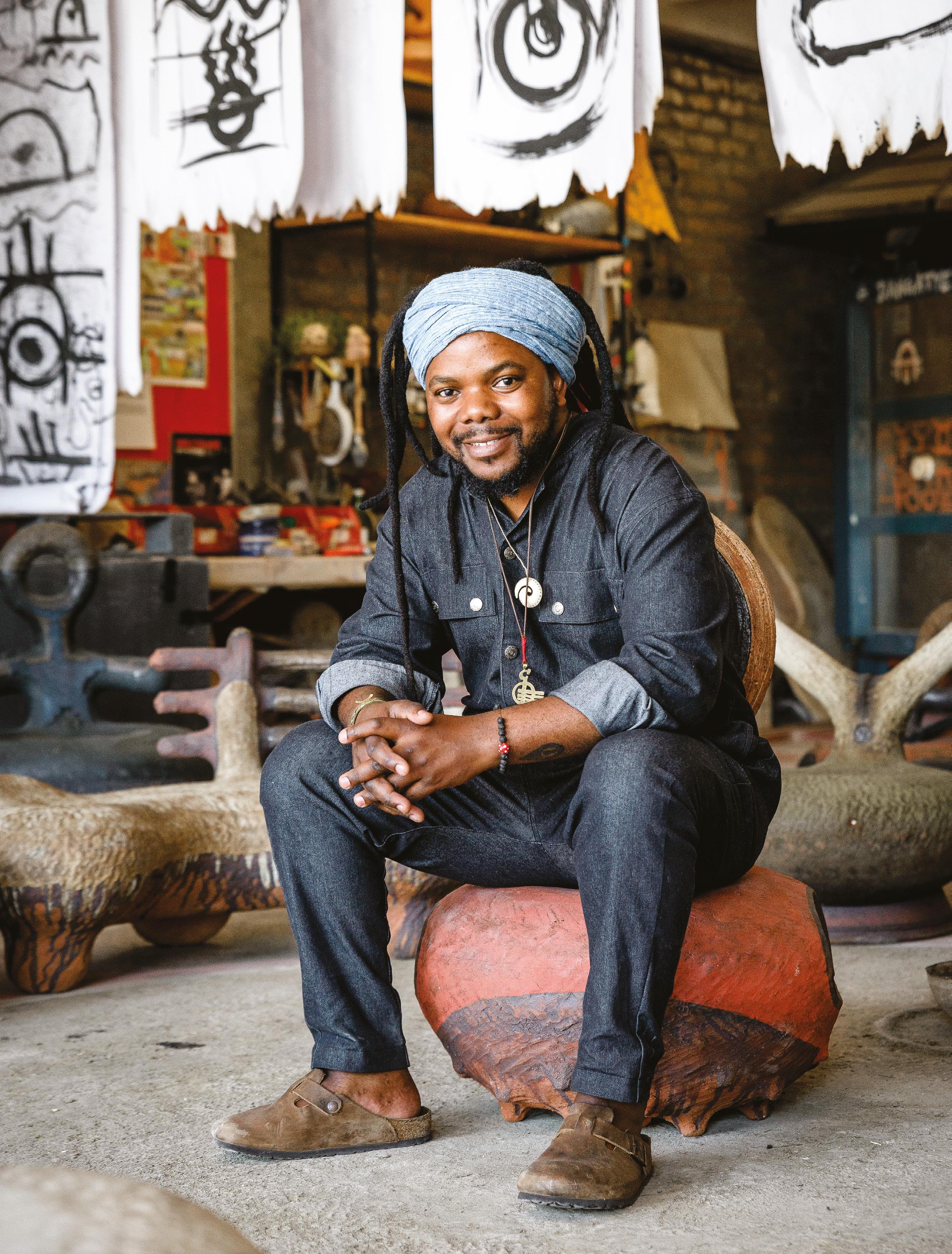
146 Jack Journal Vol. 3
andile dyalvane the gift
Andile Dyalvane greets us warmly at the door to his studio. He is solidly built, yet fluid in his movements. With a generous, easy smile, he waves us in and invites us to take a seat at the umsamo (the sacred circle).
He lights mphempho (wild sage) in a clay pot and softly explains that this is a ritual at the beginning and end of each day. He gives thanks for everything that has happened, be it good or bad, because even bad events bring us lessons. Here in the umsamo, Dyalvane asks the ancestors for inspiration and guidance and acknowledges and remembers the role they have played in shaping his gift. Only then does he
begin to tell us his story. I was struck by how different this approach is to that of many artists, who start with the self and project outward.
Dyalvane first had to accept his gift and, more crucially, had to come to terms with the fact that this gift came with special responsibilities. It was an awakening. A decade ago, he returned to his rural Eastern Cape home from Cape Town with a pot he had made for his father. His mother had brewed uMqombothi (traditional beer) and, when Dyalvane presented the beerfilled pot, his father called the elders of the village to join him. ‘My son has arrived,’ he said, and, as they passed the beer around, the elders relived memories from their old life – the colours, the sounds and the smells. They marvelled at how Dyalvane had decorated the pot with markings and
symbols that were once rites of passage in their Xhosa rituals. It was at this moment that Dyalvane realised that his ancestors intended him to play a role in restoring the dignity and pride of Ngobozana, the village where, as a child, he had once herded goats and made toy animals from clay.
Once he accepted this calling, Dyalvane’s creative work flourished and he now hears ‘the whispers of the ancestors in the clay’. Before Dyalvane creates any work, the image comes to him through his dreams. Often it is a powerful flash so strong that he will start to shake. He records everything in his notebooks, transcribing the dream images into symbols. These, he started to realise, represent the history and culture of his people.
His latest body of work, Ithongo,
147
Written by: Su Birch Photography: Southern Guild/Adriaan Louw and Friedman Benda
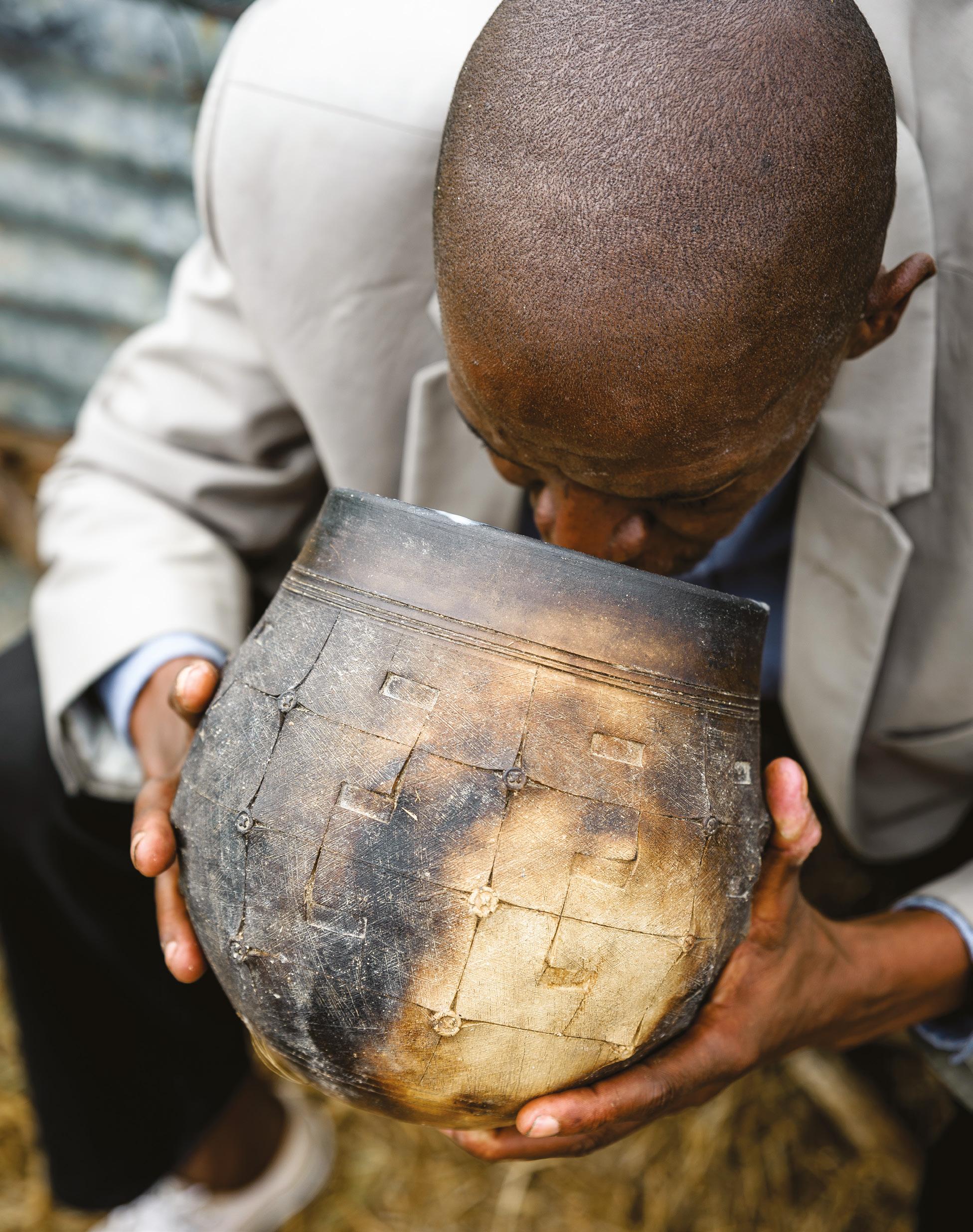
148 Jack Journal Vol. 3
Photography: Irina BoersmaNoma
Drinking uMqombothi from a Dyalvane pot.
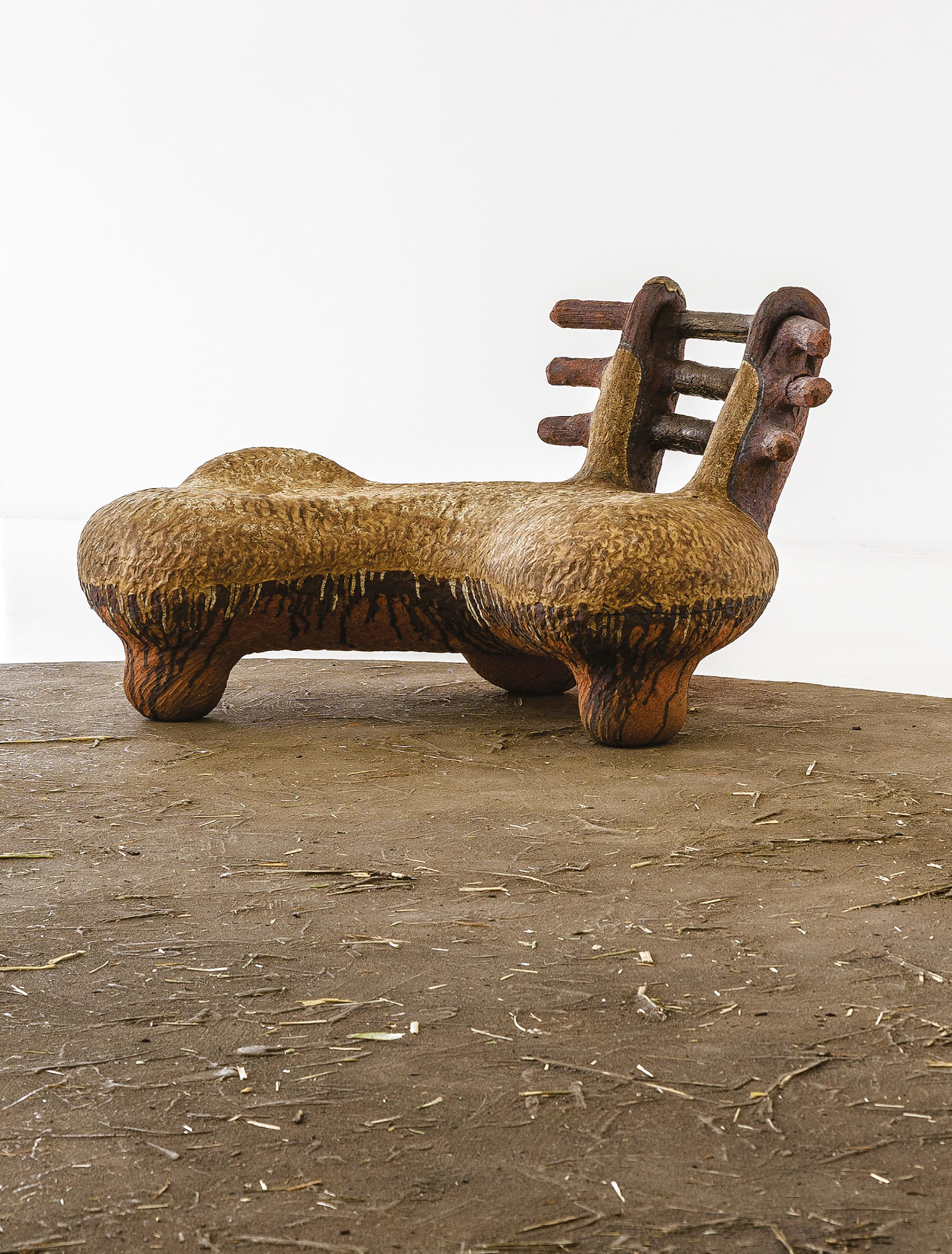
149
Ubuhlanti [Kraal/Enclosure], Terracotta clay, 106 x 67 x 62 cm.
On the wall of the gallery are the dream symbols that are embodied in the sculptural stools forming the circle.
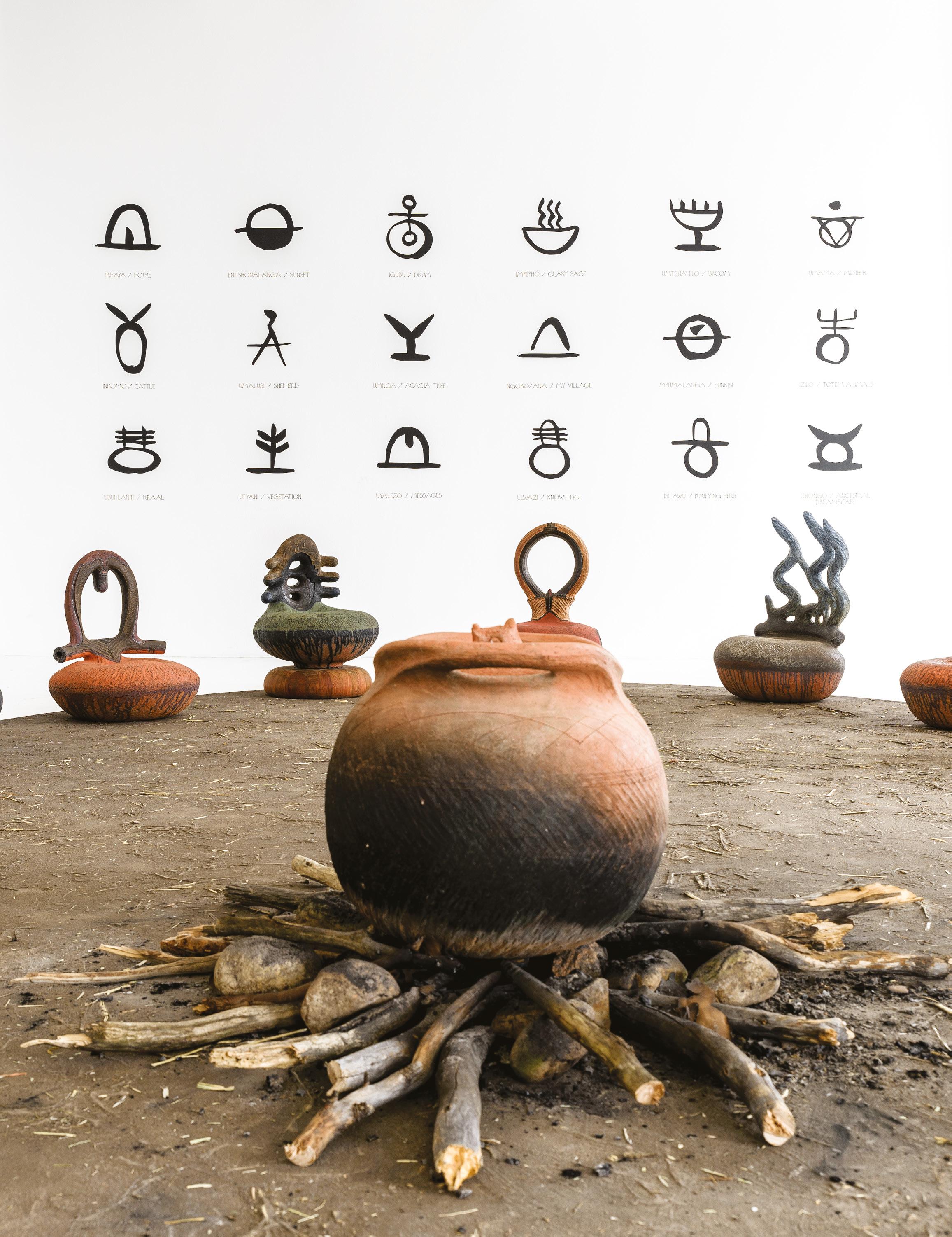
150 Jack Journal Vol. 3
which translates as Ancestral Landscape, consists of 18 ceramic seats, or thrones, each based on one of the dream symbols. It is a startlingly beautiful and unexpectedly moving collection of artworks. His intention was ‘to highlight a gathering of dreams –seated in the soul, held by the spirits of the ancestors.’
The ceramic pieces are low, close to the ground, with high seat backs, big enough to sit on. Each one has a different shape and meaning – such as Igubu, the drum, which represents the importance of music in the creative process and the sound made by the traditional healing Xhosa drum. Another has the shape of burning mphempho, the ritual Dyalvane practised at the beginning of our chat. He believes that burning mphempho creates a quiet space to open up the senses and become present. ‘I use it with great intent to request balance and announce my presence in home ceremonies, my daily work spaces and all the places I travel to.’
Dyalvane began the Ithongo body of work at his Cape Town apartment just as South Africa’s hard lockdown of 2020 started. He had so much energy that he felt the work was pouring out of him. With so many people suffering, he was filled with determination to spread love and hope through his pieces. He knew that the most important thing for him was not the scheduled exhibitions in Cape Town and New York, but restoring hope and repairing the immediate and historical losses of his people at Ngobozana. He was determined to launch his work there first.

In November 2020, as Covid restrictions eased, Dyalvane, along with this installation, arrived at his childhood home. Showing his work to the villagers was an act of gratitude and of hope – gratitude for the role they played in raising him, and creating hope by planting seeds of inspiration for others to also succeed. The Ithongo thrones and benches were placed in a circle and for the next three days the villagers, dressed in traditional clothes and beads, sang and danced around the installation in a revival of old ceremonies. It was the first time the Ithongo installation was displayed in its entirety and it was right that the villagers should be the first to experience the scale and seating intention of the offering. They made it complete.
Looking at the photographs of the event, you see that the work embraces and uplifts the village enclosure as much as it graces and energises any contemporary gallery.
Since bringing the first ingqayi (beer pot) home to his father, Dyalvane has been transporting one or two pots home every year for uMqombothi. On this occasion he also brought 100 unfired ingqayi that he smoke-fired in the kraal and gifted to the family and village homesteads.
Towards the end of this visit, one of the throne sculptures, Umalusi, The Shepherd, was carried to the top of a hill about a kilometre away. This was where the original village had stood before the people were displaced in forced removals by the apartheid government. The Shepherd was ceremoniously placed on a tall plinth where it will stand as a potent memorial and a message to future generations to remember who they are and what they have lost.
Dyalvane believes that his gift will help heal the past and that the young people will be proud of where they have come from and that they will, in turn, find their own special gift. ‘Everyone has a purpose,’ he says.
As we were talking, Dyalvane’s work was on exhibition at the New York gallery, Friedman Benda. International success, however, seems less a goal than an accepted consequence of respecting his gift. There is no hint of arrogance in this stance. The spirituality of his calling leaves refreshingly little commercial wiggle room.
When we left, I kept thinking about how little memory I have of my ancestors and how little clarity most of us have about our own special gifts.
151
Andile Dyalvane
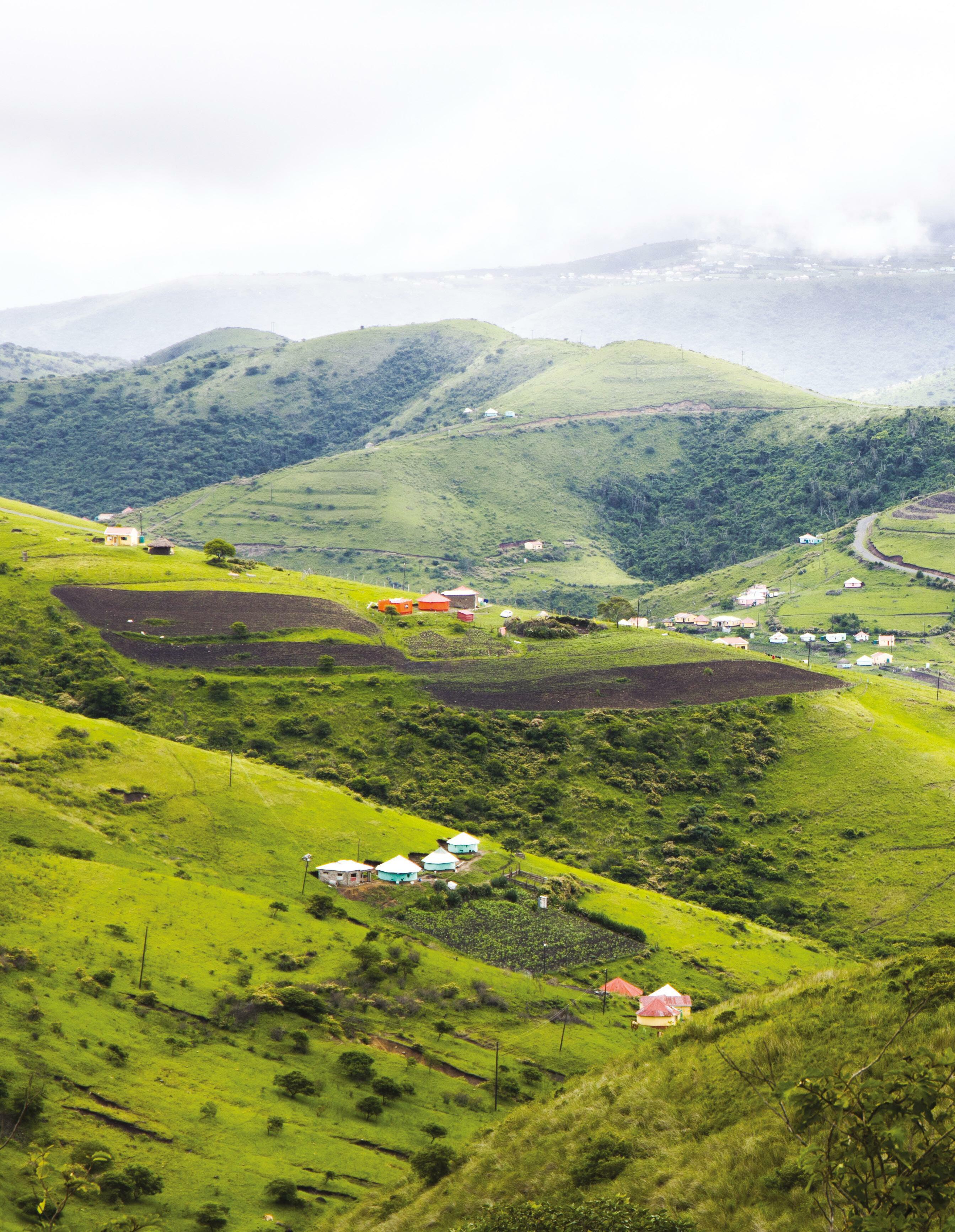 Rural landscape Wild Coast South Africa.
Rural landscape Wild Coast South Africa.
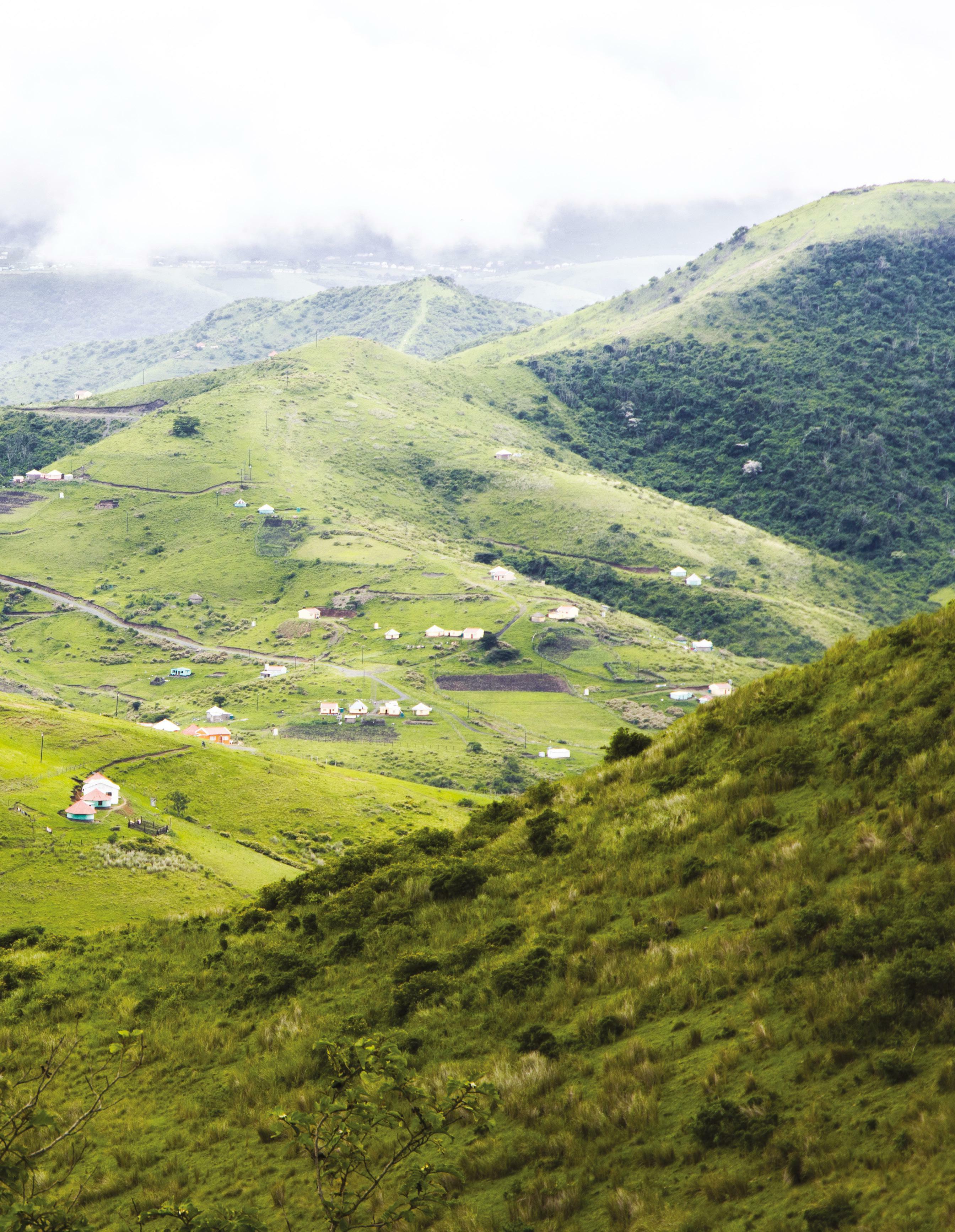
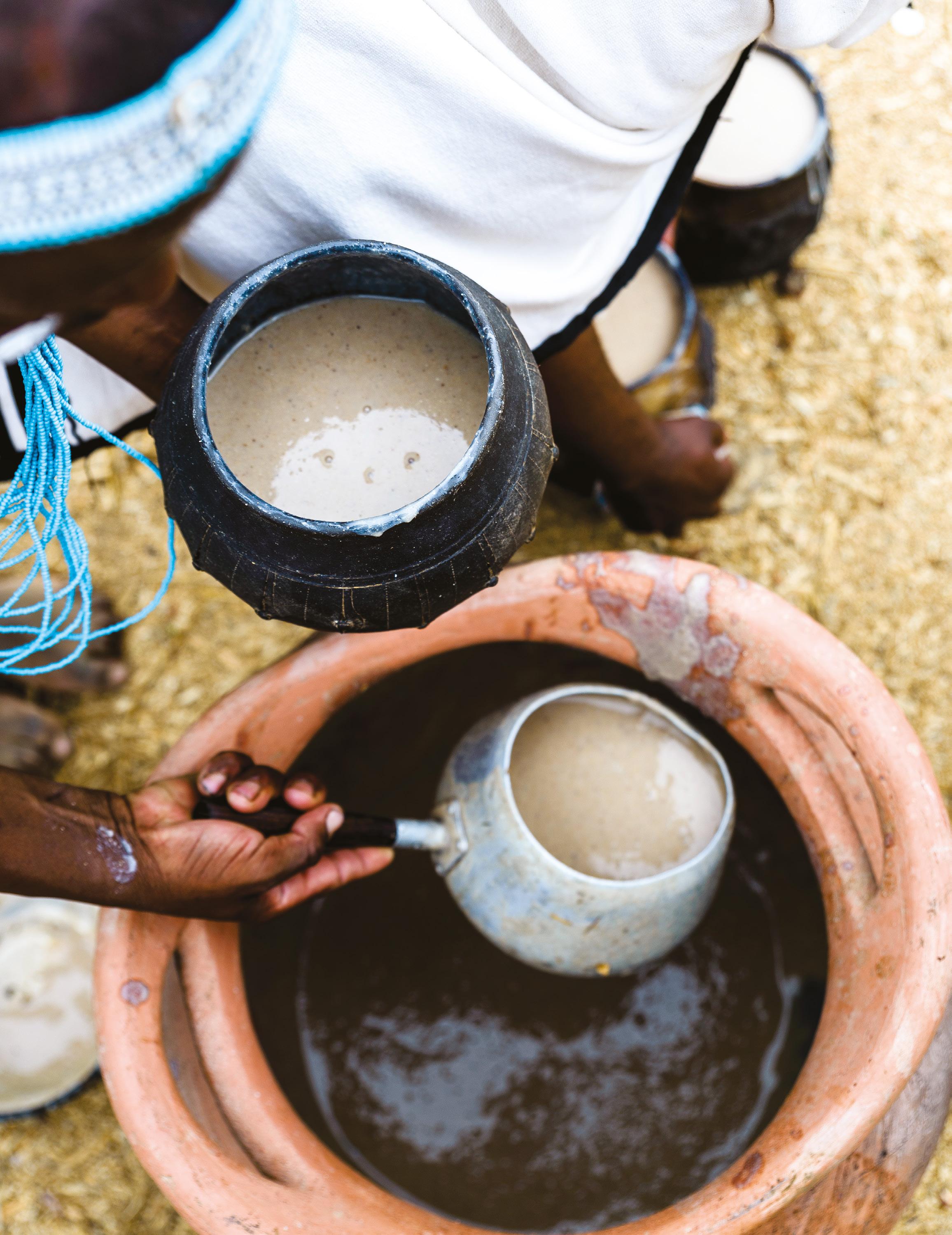
154 Jack Journal Vol. 3
Traditional African beer is still served from a communal clay pot passed between drinkers. Photography courtesy of Southern Guild.
liquid history
Written by: Lucy Corne Photography: Lucy Corne
Umqombothi is an endangered species. It is perhaps an odd thing to say about a foodstuff, but despite the enhanced interest in beer culture in South Africa in recent years, traditional beer is on the critical list. In 2017, the Slow Food Foundation for Biodiversity recognised umqombothi for its cultural importance and, noting its gradual decline in popularity, added it to the Ark of Taste, an initiative that champions global culinary heritage.
Umqombothi has been around for millennia. Its early history is undocumented but just one look at the thick, sorghumbased brew will transport beer historians happily back in time, its recipe having a lot
in common with the porridge-like beers immortalised in hieroglyphics and the even earlier Hymn to Ninkasi, an ode to the Sumerian goddess of beer, which included an ancient beer recipe.
Indeed, umqombothi is a rare cultural relic of our ancient collective human beginnings – but one still alive. As such, it is an inspiring key to the often forgotten historical connective fabric that makes us human. In a sociopolitical sense, it is the living antidote to divisive political agendas whose main aim is to garner power by convincing us we are essentially different from one another.You could easily argue that beer in general, and umqombothi in particular, proves we are not.
Naturally for such an ancient institution, traditional African beer has little in common with its modern-day counterpart. It is not golden, amber or copper, but a tough-todescribe shade of grey-pink. It is not clear, but unfiltered to the extent that pieces of
grain remain in suspension, providing a beer that you part sip, part chew. Uncarbonated, murky, thick, sour and low in alcohol, it’s like every craft beer trend of the past few years merged together in a single glass. Except, of course, umqombothi is not served in a glass.
Intuitive brewing
As you would expect from a beverage with an ancient – if largely untold – history, drinking umqombothi isn’t as simple as just grabbing a pint, toasting and sipping away. This beer comes with deep rituals, and those rituals begin on brew day.
As was once the case pretty much the world over, brewing traditional African beer is the domain of women. Recipes, methodology, secrets and rites are passed down from mother to daughter, aunt to niece, grandmother to granddaughter. Those recipes vary between families and regions, and they seldom, if ever, come with
155
the kind of technical precision that today’s brewers utilise.You won’t find a thermometer, a refractometer or hydrometer at an umqombothi brew day, and none are needed, for modern-day brewing gadgets cannot compete with centuries of acquired learning, or with the trained nose and eye of an expert brewer who knows exactly what her beer should look, smell and feel like, even if she doesn’t know the pH or the exact fermentation temperature.
The process takes about five days and begins with just three ingredients: malted sorghum, maize meal and water. Once upon a time, the grain bill would likely have comprised sorghum alone, or perhaps a blend of sorghum and millet. Maize arrived in South Africa in the 17th century with the Portuguese, eventually making its way into brewing vessels. Much like its use in macro-brewery lagers, maize helps boost alcohol content without contributing much in the way of flavour or body. In umqombothi it makes for a smoother, paler beer and today it is usually used alongside sorghum.
Whichever grains are chosen, the first step in the process is the mash – that is, steeping grains in warm water. This leads the lactobacillus bacteria found naturally on the grain to produce lactic acid, which provides the characteristic tang of umqombothi. On day two the porridge-like mixture is boiled and, before it moves to the fermentation stage, bowls are often scooped off, sprinkled with sugar and given to children as a nutritious, belly-filling meal called umhiqo. The rest of the soon-to-be beer cools overnight, with an extra dose of sorghum added to kick-start fermentation.
Drinking rituals
Traditionally, umqombothi is a wildfermented beer, meaning that domesticated yeast isn’t added. Instead, fermentation relies on the wild yeasts found on the sorghum. Some brewers do add yeast though, and some will add table sugar for a faster fermentation – and a stronger alcohol kick. Once fermentation slows – usually after about 24 hours – the beer is strained and served.
And now, a whole new list of rituals is called up. It begins with the brewer, who must be the first to taste the fruits of her labour. She skims off the foam that’s
formed on the still-fermenting beer, pours a helping onto the ground for the ancestors, and then takes a sip, proving to all that the beer is fit for consumption.
The beer – poured into a communal clay pot most commonly called an Ukhamba or Ingqayi – is then passed to the host, who takes a sip to deem whether it is good enough to serve. If it passes muster, he begins to pass the pot around the circle, with each drinker taking a long gulp, not knowing if or when the pot will make its way to them for a second helping. Hats must be removed and standing while drinking is unacceptable – those taking the beer will do so sitting, crouching or on one knee.
The beer is somewhat sour, grainy – in both flavour and texture – and often has an almost barnyard-like aroma thanks to its wild fermentation. If it’s a good batch, as the pot is drained a conical lid will be placed facing up, signifying that a refill is requested. If imbibers have had their fill, the lid is positioned facing downwards and the sipping is complete.
Alive but dying out Umqombothi is a sacred beverage served at all sorts of ceremonies including weddings, initiations, funerals and to celebrate the birth of a child. But there are also commercial versions for everyday drinking, almost all of which are produced by United National Breweries. UNB is a sleek operation with a long history of sorghum beer brewing and a distribution model that would make a milkman weep with envy. Umqombothi, you see, is every bit as delicate as milk when it comes to storage and shelf life.
Indeed, to the untrained eye it even looks like milk. UNB’s products – which include iJuba, Tlokwe, Leopard Special and the best known of all, Chibuku – are all packaged in the one-litre cartons most often associated with milk. The reason for this is simple: umqombothi is packaged as a live, actively fermenting beer. Fermentation has two major by-products – alcohol and CO₂. And if that CO₂ has nowhere to go, it creates carbonation and, with it, pressure – the sort of pressure that could cause a sealed vessel to burst or explode. Storing umqombothi in a glass bottle is a guaranteed way to create a dangerous bottle bomb. So it is packaged in cartons with a small vent
that allows the CO₂ to safely escape en route to the drinker.
It is perhaps ironic that something so alive is in danger of dying out. But traditional sorghum beer is under threat. ‘As people leave their rural roots and move to the cities, fewer and fewer are learning to brew sorghum beer,’ says Apiwe NxusaniMawela, a master brewer who is passionate about preserving the umqombothi tradition. ‘As it is a five-day process, they tend to arrive home in time for the event, but will have missed the brewing of the beer and so the knowledge is not passed down.’
The beverage actually enjoyed a brief renaissance in 2020, courtesy of the lockdown and associated alcohol bans. Ingredients for umqombothi are easily found in a supermarket and so social media was temporarily filled with photos of people trying their hand at traditional African beer, often for the first time.
For many it was also the last time, for the low alcohol brew didn’t quite hit the mark. At around 3% ABV, and as thick as a smoothie, umqombothi is likely to fill you up long before it warms you up. But if the funky flavour and unfamiliar texture didn’t impress, hopefully the desire to keep a millennia-old brewing tradition alive will be reason enough to schedule another brew day in the not-toodistant future.
156 Jack Journal Vol. 3
The beer is somewhat sour, grainy –in both flavour and texture – and often has an almost barnyard-like aroma thanks to its wild fermentation. If it’s a good batch, as the pot is drained a conical lid will be placed facing up, signifying that a refill is requested.
A traditional brew day in rural Zululand.
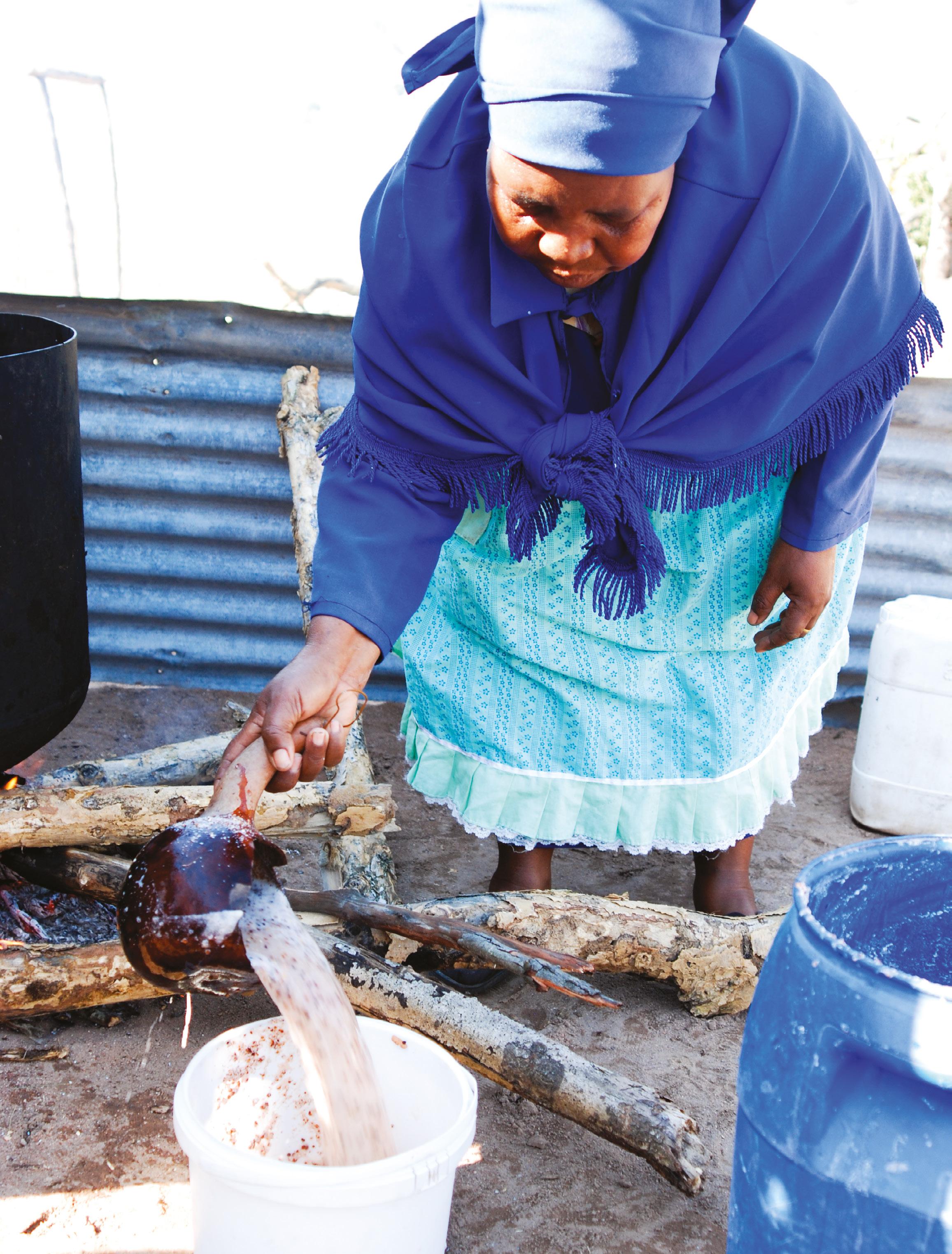
157
The beer boils for an hour or so on day two, but it will be a few more days until it makes its way into the ukhamba – individually designed communal drinking vessels.
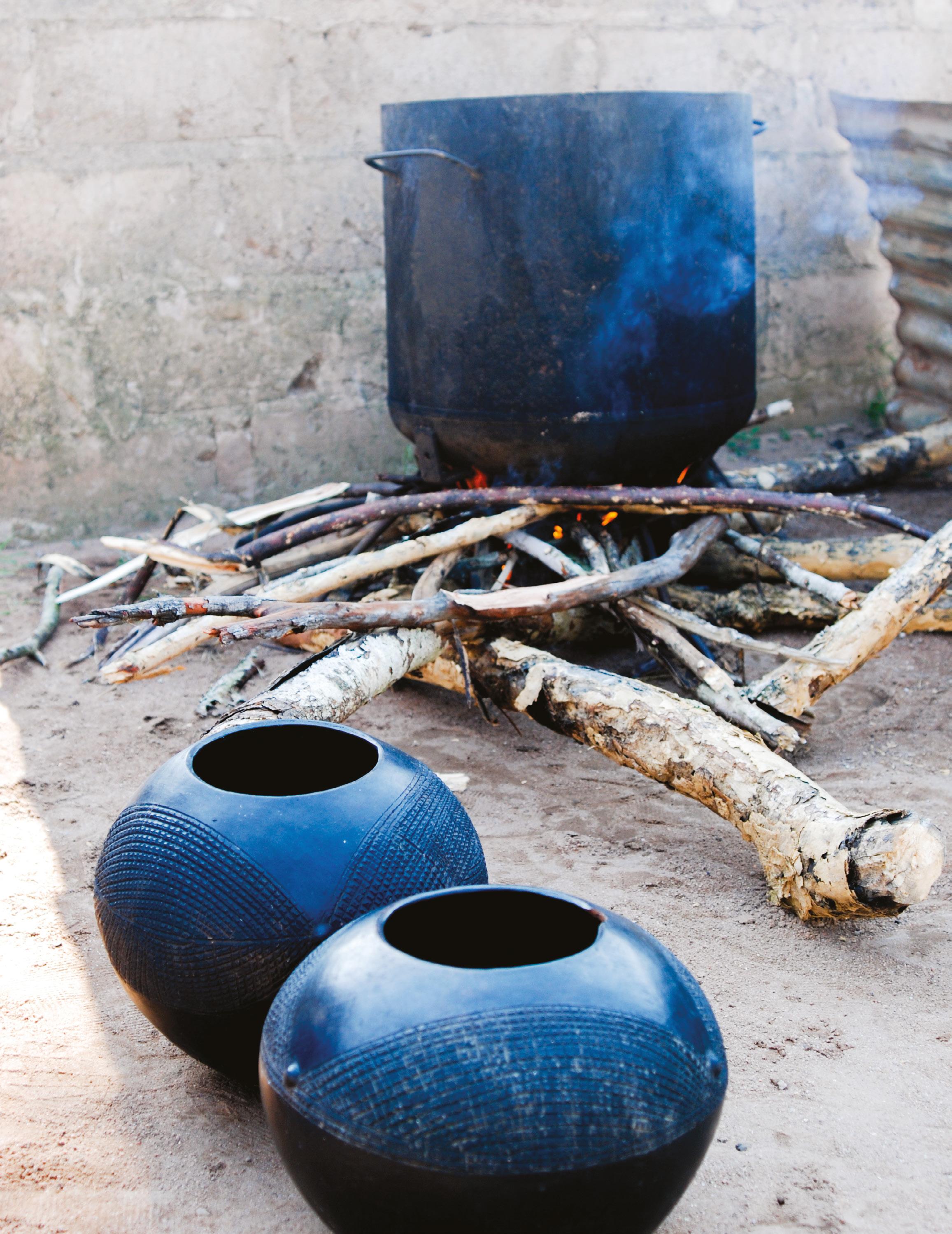
158 Jack Journal Vol. 3
BEE LUCKY
Bees are considered a good omen on brew day. If you decide to give umqombothi brewing a go, keep an eye out for bees buzzing around the pot – a sign that the beer will turn out well.
RECIPE
Makes approximately 10 litres
Ingredients
4kg King Korn Malted Sorghum 2kg White Star Maize Meal
METHOD
Day one
Boil eight litres of water. Allow to cool slightly then pour into a large bucket. Add the maize meal and 2kg of the malted sorghum. Stir well and cover for 10–15 minutes. Add about four litres of cold water and stir again. Cover with a cloth or loose-fitting lid and leave to cool overnight.
Day two
After about 24 hours – less if the ambient temperature is warm – you will see small bubbles rising to the surface of the mash. Boil five litres of water in a large stock pot and then slowly add the grain mash to the boiling water, stirring constantly. The mixture should boil for about an hour. It’s crucial to keep stirring, otherwise the grain will quickly catch on the bottom of the pan and burn. Some scorching is inevitable.You can expect some potent aromas to waft out of the pot as the boil drives off volatile compounds. The mixture will darken and thicken as it boils. After about an hour, remove the pot from the stove. At this stage you can scoop off a bowl of the porridge (umhiqo) and sample it with a little sugar. Pour the mash back into the bucket and allow it to cool. The sorghum will have gelatinised on the stove, leaving a stiff, thick mixture. Add 2 litres of cold water and leave to cool overnight.
Day three
Once the porridge has cooled, add the remaining 2kg of sorghum – this is what will kick-start fermentation.You will also need to add water until you get a consistency similar to that of runny oats. Add water a litre at a time up to a maximum of 10 litres, stirring constantly
and gauging the consistency. Cover loosely and leave overnight to ferment.
Day four
After 24 hours, fermentation should be in full swing, with bubbles rising to the surface of the liquid. If there are lots of rapidly forming bubbles, you can strain and serve your umqombothi. If fermentation is slow, rather leave it for an extra day before straining. Once strained (you can use a kitchen sieve or cheesecloth in the absence of a traditional woven grass strainer), serve in a calabash, ukhamba or your favourite beer mug. Don’t forget to pour one out for the ancestors before you take that first sip!
magazine

159
Lucy Corne’s
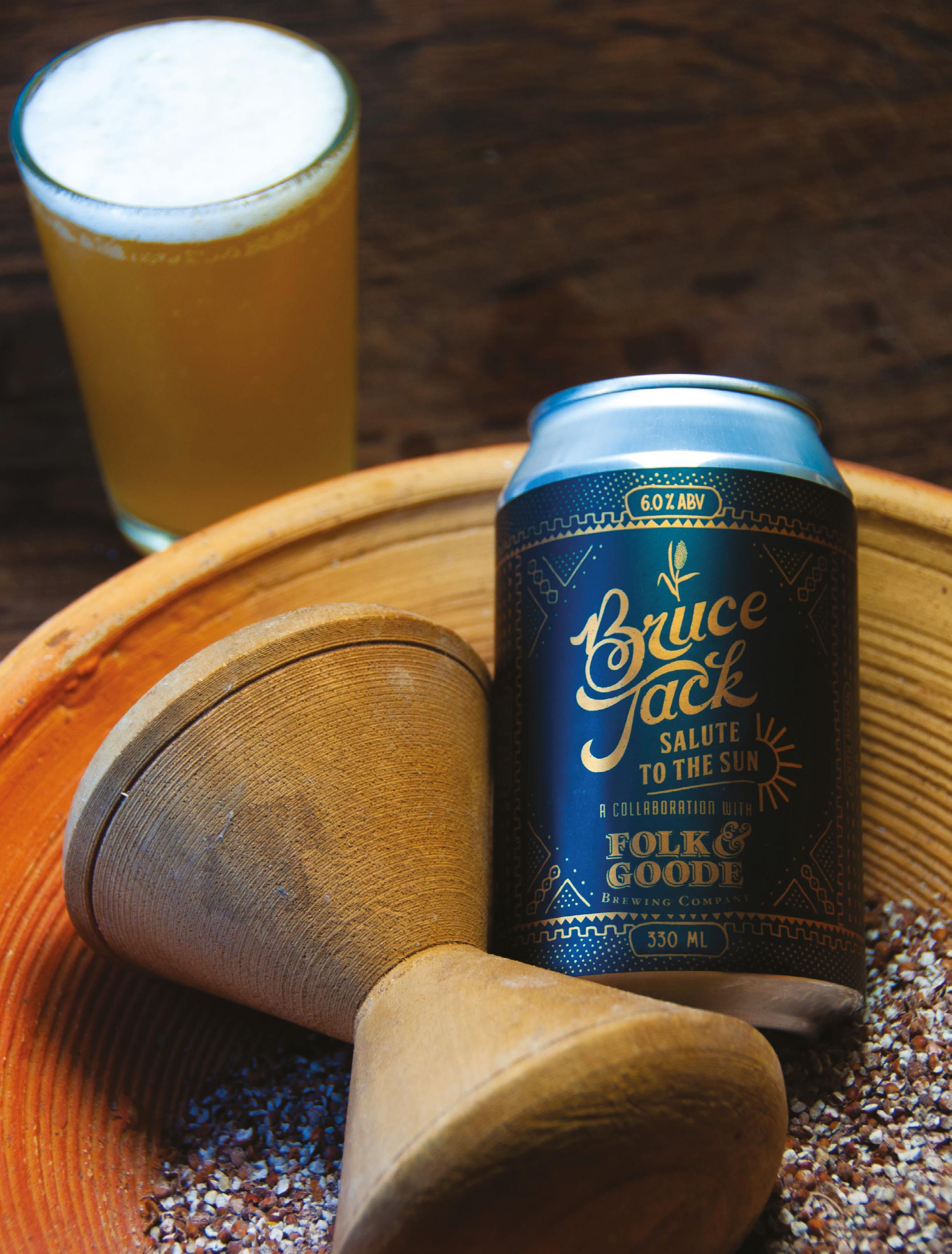
160 Jack Journal Vol. 3
a salute to the sun
Written by: Fraser Crighton Photography: Fraser Crighton
Lured by the excitement of the Soccer World Cup, I came to South Africa in 2010. I had trained as a winemaker but when I discovered that there was no decent beer in South Africa, I had to change that. Twelve years later I am still brewing. When Bruce contacted me to get together for a beer project, I was intrigued. Bruce had come up with an interesting idea (and challenge): to brew a beer inspired by the ancient grain sorghum, used to brew African Umqombothi.
Bruce Jack Wines have always been a personal favourite, especially because he uses little-known grape varieties and crazy blends all under the banner of exceptional quality. This is a man after my own heart.
My excitement was piqued, but it came with equal amounts of trepidation. Sorghum has a reputation in the brewing world for being really tough to brew with. It lacks a husk, which aids lautering (this is brewing jargon for the removal of wort from grain particles). Along with some other eccentricities, it creates a gelatinous porridge of unmovable liquid. This has brought many a seasoned brewer to his or her knees in frustration.
We needed a solution – and it meant applying my mad brewer’s brain to the challenge, as well as making some well-placed

calls to brewer friends. By the end, we had come up with an action plan on how to use the grain: by opting for a blend of barley malt and sorghum.
Umqombothi is a traditional beer. As with all beer, its lineage can be traced back to the dawn of mankind. No matter where on the planet you look, you’ll find evidence of ancient brewing: rice in Asia, maize and corn in the Americas, rye and wheat in northern Europe, sorghum in Africa. In fact, if there was grain around, chances are someone was fermenting it. So we wanted to keep that ancient spirit alive but present it in a modern beer format.
First things first: grain. I decided to keep it simple, opting for 50% barley malt from our local maltings in Caledon in the Overberg, which happens to be the biggest in the southern hemisphere. We also sourced 50% sorghum from a supplier in Gauteng.
Next up: hops. We grow hops in South Africa, although geographically it’s at the limit of where it can grow. We have some very special hops at our disposal and so I opted for an almost hedonistic amount of the fruit bomb Southern Passion and African Queen varieties.
Lastly and most importantly: yeast. Given that all our ingredients were sourced in South Africa, we couldn’t let this slip. I placed a call to my friend Craig at Liquid Culture. Craig is culturing yeast from wild sources in the country. No one is really using these fascinating strains in a commercial setting.
That makes this co-lab beer unique. With the ingredients in place, we wanted to highlight the notable difference from the traditional sorghum beer people know. The traditional drink is thick and very sour due to lactic bacteria, but we needed a beer that is clean and much more like something a craft beer drinker would know. So we looked to the darling of the craft beer world – hazy, juicy, New England and milkshake; it has many names but put simply it’s a style of India Pale Ale. It makes use of hops for their aromatic fruit flavours late in the brewing process to yield a soft almost fruit juice beer, both in terms of looks and taste.
The sorghum in our beer brings an earthy element as well as thinning the body. Our beer also doesn’t feature the whole bits of grain left in the original brew. In short, ours is far more polished. Not surprising, seeing as Umqombothi is very much a home-made cottage type drink.
Fruity and bold, the bones of a good beer are here and a new beer type has emerged from the challenge. Bruce has called it Salute to the Sun. It is a salute to the African sun that blesses all our ingredients here and to the cheers we share when good friends and a good idea come together.
161
Salute to the Sun
foods of the world
A short story by: Emile Joubert
Kevin said only girls read cookery books – he was going to the football section. I pointed to the shelf and said there was something I must show him.
The library was unusually busy, even for a Saturday morning. A lot of other children were milling around the bookshelves and in the open area on the other side of the entrance where readings were held on Saturday mornings. Miss Dot, the librarian, was checking library cards with a smile on her face – she loved her library to be full – and her silver-framed spectacles glistened under the fluorescent lights. Outside, it was raining. Again. But I had only been in England for a few months, and quite liked the rain. Back home in South Africa my father’s family, who farmed in the Swartland, always told me that rain was a blessing from God, and that every drop must be appreciated.
Here, in Mill Hill in northern London, my father’s family would be blessed for a lot of the time.
I pulled a book from the shelf and called to Kevin. Africa. South Africa. ‘Come and look,’ I said, pointing to the cover. The title was The Cooking of Africa, one of the books in a series my mom collected called ‘Foods of the World’. At home we had The Cooking of Italy, The Cooking of Provincial France and The Cooking of Spain and Portugal Here was one about Africa, and in it a section about South Africa, my country.
Kevin was always asking me to tell him about or show him pictures of home.
Before I came to England, kids like him had never heard of South Africa, never mind knowing an actual living human from there.
I placed the book on the wooden surface of one of the lower shelves and paged through it until I found the words ‘South Africa’. There were pictures of wide-open spaces baking under the sun, of sheep and cattle, of pots filled with stews, and chunks of meat roasting on coals. You could smell the veld and the animals through the page, and the food looked mouthwatering. Kevin walked over to the same shelf my book had come from and returned with another one from the series: The Cooking of the British Isles. He placed it next to mine and opened it. We were engrossed in the pictures: roast beef, Irish stew, smoked salmon.
‘You boys like to eat?’ said a voice, a man’s voice. I looked up and saw a very tall, thin man about the age of my grandfather. He pointed to the two books open in front of us. ‘Not many boys your age come in here pottering about cookery books, now do they?’
The man stooped to get a closer look at the open pages. He smelled of cigarettes and mothballs. ‘Ah, roast beef, now that does look good.’
Kevin, who was never shy, told the man that his gran makes better roast beef than this one in the cookery book, but her steak-and-kidney pudding was even better.
The man put his hand through his thin hair, which was slicked back on his head.
‘Tell you boys what,’ he said, ‘it is not beef or pork or chicken that is the best meat. Do you know what is?’
He looked at me with pale blue eyes and then at Kevin. ‘Springbok,’ I said. ‘At home in South Africa we shoot springbok and cook them.’
The man seemed interested in my story, but slowly shook his head. ‘Not them either,’ he said, looking around to ensure that none of the other children was close to our little corner of the library. ‘The best meat,’ he whispered, ‘is human meat.’ Kevin and I looked at each other. I could see that Kevin was trying to hold in a smile, like he always did when he farted in class.
‘But this you should know,’ said the man as we turned to him. He was now leaning casually against the bookshelf. ‘Animals, well, they have to run outside in the rain, fight off the elements, worry about foxes and badgers, and walk long distances looking for food … humans, we just sit around and eat pork pies and beans. Therefore, humans have soft meat, the most tender meat.’
He spoke as I wished more teachers would. Saying something interesting, if a little weird, and in a very enthusiastic voice which was almost friendly. Almost as if he knew me. Or us. Saying something he wanted to share and was keen for us to hear.
‘You see, everyone talks about steak, don’t they now?’ he continued. ‘You lads had steak? Liked it?’
162 Jack Journal Vol. 3
I nodded and said that my dad would sometimes cook fillet steak on the fire. When it wasn’t raining.
‘Wow!’ the man said softly. ‘Well, I’m sure the steak your dad cooks is very, very good. But wait until, one day, he cooks you a fillet of a young boy or girl.’ He stood up straight, turned slightly, and ran his thumb along his back. ‘That is where the fillet is,’ he said and turned back to leaning against the bookshelf. ‘With a sharp knife, you slice from top to bottom and cut the fillet away from the spine of the boy or girl. It is a beautiful piece of steak.’ He whispered, looking around: ‘Medium rare is best.’
I thought about this, about the fillet steak. How to cut it, how to cook it. But most of all, how to get said boy or girl in a position from which they could present themselves for the careful slicing and cutting he had described. Was this about killing? That’s what all meat is, I thought. Killing.
The open book before Kevin showed cows grazing in a green pasture beneath a gloomy grey sky. Probably somewhere in England. Kevin pointed to the cows. ‘What about oxtail?’ he said, looking at the man. ‘I like oxtail stew. Boys and girls don’t have tails.’
It was as if the man was waiting for Kevin’s question. He seemed delighted to hear it, a slight crooked smile appearing on his face and his eyes glistening.
‘Oh, yes,’ he said to Kevin. Then, looking at me: ‘That oxtail is delicious. But …’ – he raised one hand, wiggling all five fingers – ‘…we have these.’ We stared at him with equal degrees of curiosity, despite the fact that I had never had oxtail before.
‘You see,’ said the man, now stroking one hand with the other, ‘if you get a sturdy boy or girl, they will have nicely developed, strong hands. Thus, just cut off the fingers one by one. And then, chop the severed fingers in half – the thumbs have hard bones, so be careful, but their meat is best.’ He looked at Kevin. ‘The fingers have the same sort of bones as the tail of an ox, it’s just that the meat is tastier and more tender. So, as I am sure your mother does, you fry the finger pieces with onions, add carrots, celery and some wine, and let it cook in the
oven for a few hours.’
The man looked at the ceiling, shaking his head slowly from side to side. ‘Oh Lord, you boys have made me so hungry,’ he said. ‘I haven’t had finger stew for such a very, very long time.’
I looked down at the open page of my book. The picture of the lamb chop suddenly looked very boring.
‘Best be going,’ the man said, standing up straight. ‘It was awfully nice chatting.’ And then, as suddenly as he had appeared, he was gone. Although I could still smell mothballs and cigarettes.
Kevin and I put the books back in the shelf, not saying anything to one another. It now seemed very stuffy in the library, and I was wanting to get outside, even if it was still raining. I picked up the two Willard Price novels I was going to take home. Kevin had a bunch of Biggles books to check out, and also wanted to go. His interest in the football section had, apparently, waned.
I led the way to the counter where Miss Dot did the library card rigmarole. It was quieter now; most of the other children were heading over to the reading area. Miss Dot looked up from her desk and smiled as I handed my books and library card to her. She looked at me and then reached across me to take Kevin’s card.
‘You lads not staying for the reading?’ she asked in an accusing sort of way. She pointed across to where the children were now seated, waiting for the reader. The reader was seated, a thin and balding man, the same man from the cookery book section. A little girl was climbing onto his lap, and just then he looked across the eager heads before him and caught my eye, and smiled.
‘Mister Roald Dahl, that is,’ whispered Miss Dot. ‘He tells awfully good stories.’
Postscript by Bruce Jack
I was fortunate, as a South African schoolboy, to finish my schooling in the UK. South Africa in the 1980s had become a cultural desert – apartheid had repressed much of the rich, culturally diverse expression. With the thought police firmly in control and hypersensitive to any creativity that didn’t fit their purpose, the cultural landscape was bare and dying. The UK, by comparison,
was exploding in creativity, and I lapped it up during my year of study.
A theatre or museum trip to London never went unattended, and I spent many evenings after sport entranced at various extracurricular clubs – music, film, debating, politics, literature, philosophy, etc. At one of the literature club evenings, I was very lucky to hear one of Roald Dahl’s public talks.
The first thing I noticed was that he was a tall man, but his stature wasn’t so much a physical presence as an energetic one. As a result, he seemed much taller than he probably was as he strode in. He sat on the edge of a table facing us and after reading a passage from one of his books he began weaving a lecture on the lost art of storytelling. This included practical do’s and don’ts, like ‘show, don’t tell’, etc., but also some hilarious and quite vitriolic criticism of other authors to illustrate how the art of storytelling was being lost. He was gruff and blunt and very rude about bad writing, which I loved.
He seemed to enjoy being provocative and encouraged feedback from the boys, some of which he dismissed unsympathetically. It was a memorable lecture and I remember walking back to my boarding house that night feeling I had been in the presence of a truly independent-minded iconoclast and genius.
A few months ago, Emile and I were chatting about his contribution to this edition of Jack Journal. And because Emile not only writes about wine and the wine industry, but also short stories, we started chatting about Dahl and our mutual admiration for his writing and storytelling. We also discovered that we had both met him – an unusual thing for South Africans in the wine industry.
Emile’s blog

163

164 Jack Journal Vol. 3
the scent of empires –chanel Nº5 and red moscow
Written by: Karl Schlögel Artwork: Allendre Hine
We all, historians or non-historians, perceive our surroundings, the world, with all our senses: sight, sound, taste, touch, smell. But in the hierarchy of senses, smell is seen as at the bottom, standing for all that is unconscious, irrational, archaic and dangerous.
The Enlightenment banished the sense of smell. ‘Today’s history comes deodorised,’ (Roy Porter). But as sociologists have begun to take an olfactory turn, so too should historians – they need to ‘sniff around’ history more.
The odour of an age clings to all phases of life; it can’t be wrong to take this into account when reconstructing the past. There’s Proust’s description of taste – the Madeleine moment – in which a small cake dipped in a cup of tea triggers a visual memory linked to the taste. Proust’s description of the sense of taste must also apply to the sense of smell.
Literature is full of smells – the 20th century’s catastrophes in the descriptions of the smell of the gas of gas chambers, the stink of the Gulag and concentration camps. Progress is measured by the suppression of stench and the spread of the sanitary convenience. The smell of progress in the Industrial Age – of the smoke stacks – is replaced by the odourless post-industrial digital economy. Just as there is a ‘noise of time’ and every epoch has its own sound, every age has its own scentscape. A drop of perfume is time captured in scent, and the bottle is the vessel that holds the fragrance of time.
I did my studies and archival work in the former Soviet Union, and I lived in divided Berlin. Whenever I crossed the checkpoint from West to East Berlin, I noticed a change in the atmosphere, a very specific smell, the East-West divide in the scentscape. Being in the Soviet Union, especially at ceremonies of inauguration at universities, festivals, theatres or the Bolshoi Ballet, I encountered and preserved in my
memory a very specific and distinct aroma of a fragrance – the discovery was then, behind this smell, a famous brand, the ‘Red Moscow’, a fragrance which was, as I learned later on, far from new – it originated in the Russian Empire prior to the October Revolution of 1917 .
The perfume was originally named the ‘Favourite Bouquet of Empress Catherine II’ and created by two perfumiers – Ernest Beaux and August Michel – from French perfume companies in Moscow, the Brocard and Rallet companies, for a very specific occasion, namely the 300th anniversary of the Romanov Dynasty in 1913, which was widely celebrated throughout the Tsarist Empire. This perfume was the starting point for two other perfumes – Red Moscow and Chanel Nº 5. After the Revolution, the perfumier Ernest Beaux, who had joined the white army, fled to the Côte D’Azur in France, taking the formula for the perfume with him. In 1920, the French designer Coco Chanel came across this perfumier. He then presented a number of creations
165
to her in his laboratory, 25 in total. She decided – that was her mystical number –on number five.


Apart from Beaux, the other great perfumier of the time – August Michel –stayed in Russia. He was to reconstruct the perfume industry after the Russian Civil War. At that point, he used the original fragrance in order to create a perfume called Red Moscow. Both stand for empires: ‘Krasnaya Moskwa’ (Red Moscow) for the Soviet Union, and ‘Chanel Nº 5’ for ‘the West’, as represented by France and the USA, where Chanel Nº 5 became hugely popular. Red Moscow was not world class when it comes to perfumes, but it became the most important, respected and popular perfume among Soviet women. The book is not only a study of the scent of empires but also charts the history of two key women: Coco Chanel in France, and a Soviet woman, Polina Zhemchuzhina, who came to be the Commissar of Perfume in the Soviet Union.
Each represented a different and contradictory way of expressing Modernity.
Even though they were in dramatically different contexts, there are parallels in their stories. They were self-conscious, emancipated and decisive in carving out careers for themselves – Iron Women, to use the Russian phrase – and neither depended on husbands or lovers. Chanel rejected old-fashioned clothing, aspiring to something sportier and freer. Her Russian counterpart was focused on women as labourers, women in the workplace. They were both the same age, one born in France and the other in what is now Ukraine but was then part of the Russian Empire. Both also had close contact with high-status and elite people in their respective societies. Polina’s husband, Molotov, was foreign minister and second in charge to Stalin. Chanel was on good terms with Germans during the Occupation of France, to the extent of being seen as a collaborator with the Germans, even working for them. She was privately very anti-Semitic. Indeed, she had an affair with a man in the German Diplomatic corps.
But the two women’s fortunes also diverged. After the war, Chanel was given the chance to go to Switzerland and suffered no consequences. She came back in the 50s and had a second lease on life, ending
her life as the richest woman in France in her suite at the Ritz. Zhemchuzhina had a less illustrious end – she escaped the first purges in the 1930s, but in the course of Stalin’s anti-Semitic campaigns at the end of the 1940s, she was arrested as a supposed ‘Zionist agent’, i.e. a Jew, a cosmopolitan and a supporter of US imperialism, and banished to exile behind the Urals for five years. She was only released after Stalin’s death – and yet remained a Stalinist until her own death. She died in rather humble circumstances, survived by her husband.
In the late Soviet Union of the 1980s, young people were looking for fresh scents, and Red Moscow was seen as old-fashioned, a fragrance associated with ‘old ladies’ and ‘grandmothers’. The collapse of the SU meant that Western companies, including perfumiers, flooded in and took over. A formerly nationalised and planned economy couldn’t compete, and factories were closed down or taken over. Red Moscow disappeared – for a while. The logos of global brands appeared in big Russian cities – Dior, Guerlain, Gucci, etc. But at the end of the 1990s there was a reaction against foreign invasion and old brands were remade – Red Moscow became available again, along with a new-old pride. Red Moscow was back in the perfume shops and every flea market now has a table of perfume bottles from the Soviet or pre-revolutionary era. It’s a search for lost time. Museums for perfume and cosmetics have opened too. I think it would be a good idea to present the bottles of Chanel Nº 5 and Red Moscow side by side in New York’s Museum of Modern Art.
166 Jack Journal Vol. 3
Buy Karl’s book The Scent of Empires in the UK Buy Karl’s book The Scent of Empires in SA


167
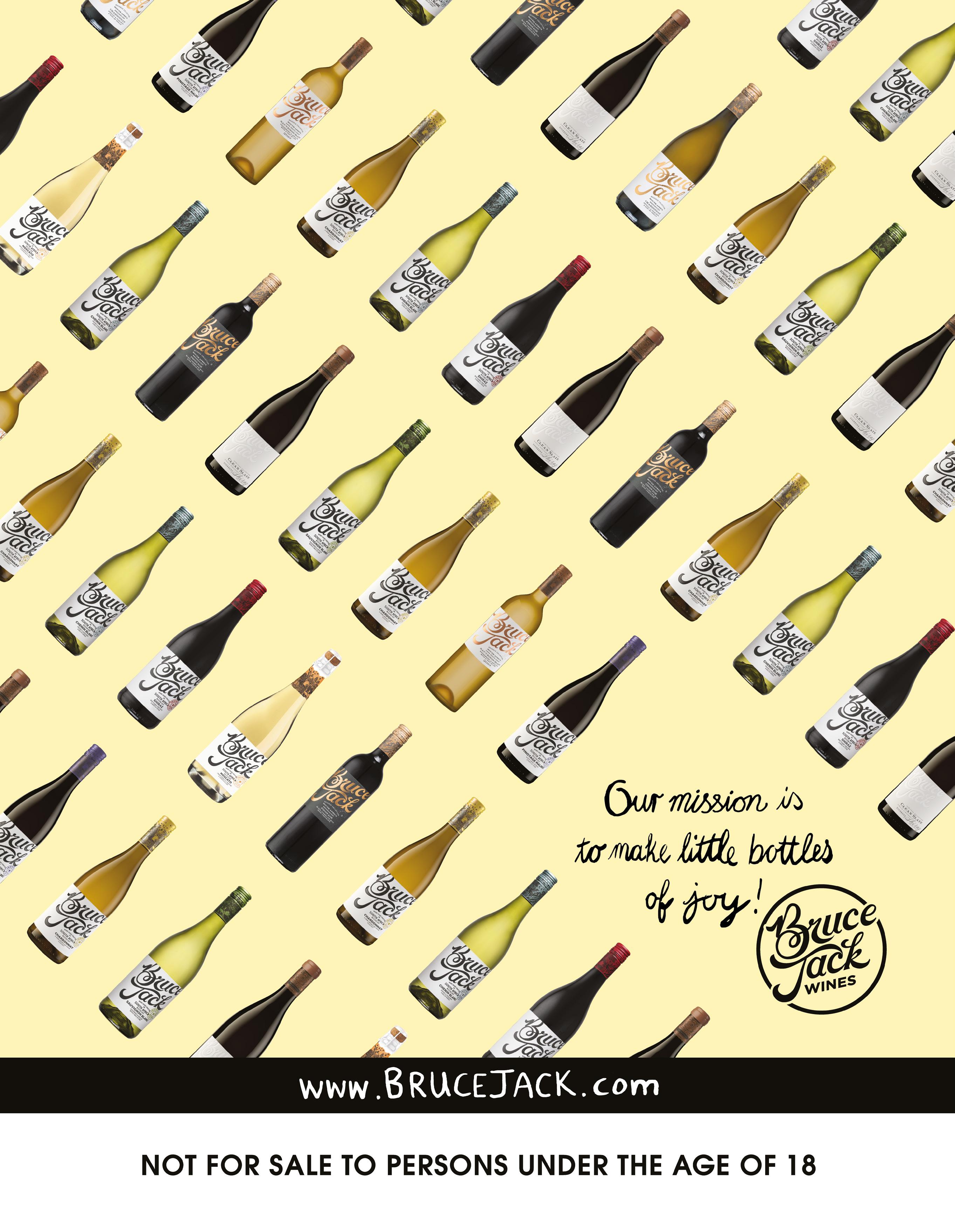








































 Weaver Nomtheliso Ngxoni. Photography by Cheryl McEwan.
Weaver Nomtheliso Ngxoni. Photography by Cheryl McEwan.






 Written by: Michael Booth Photography: Ditte Isager & Irina Boersma
Written by: Michael Booth Photography: Ditte Isager & Irina Boersma































 Aerial view of the Nuwejaars Wetlands. Photography by Dirk Human.
Aerial view of the Nuwejaars Wetlands. Photography by Dirk Human.



 Photography by Elizabeth Knobel.
Photography by Elizabeth Knobel.





 Nguni herd grazing near Dundee, KZN. Drought and coal mines have left cattle in this area increasingly bereft of water. 63
Nguni herd grazing near Dundee, KZN. Drought and coal mines have left cattle in this area increasingly bereft of water. 63



































































 Written by: Neleen Strauss
Written by: Neleen Strauss
























































 Hannah Moses, aged 15
Hannah Moses, aged 15







 Rural landscape Wild Coast South Africa.
Rural landscape Wild Coast South Africa.













